Max Mason. No. 6785.
Images
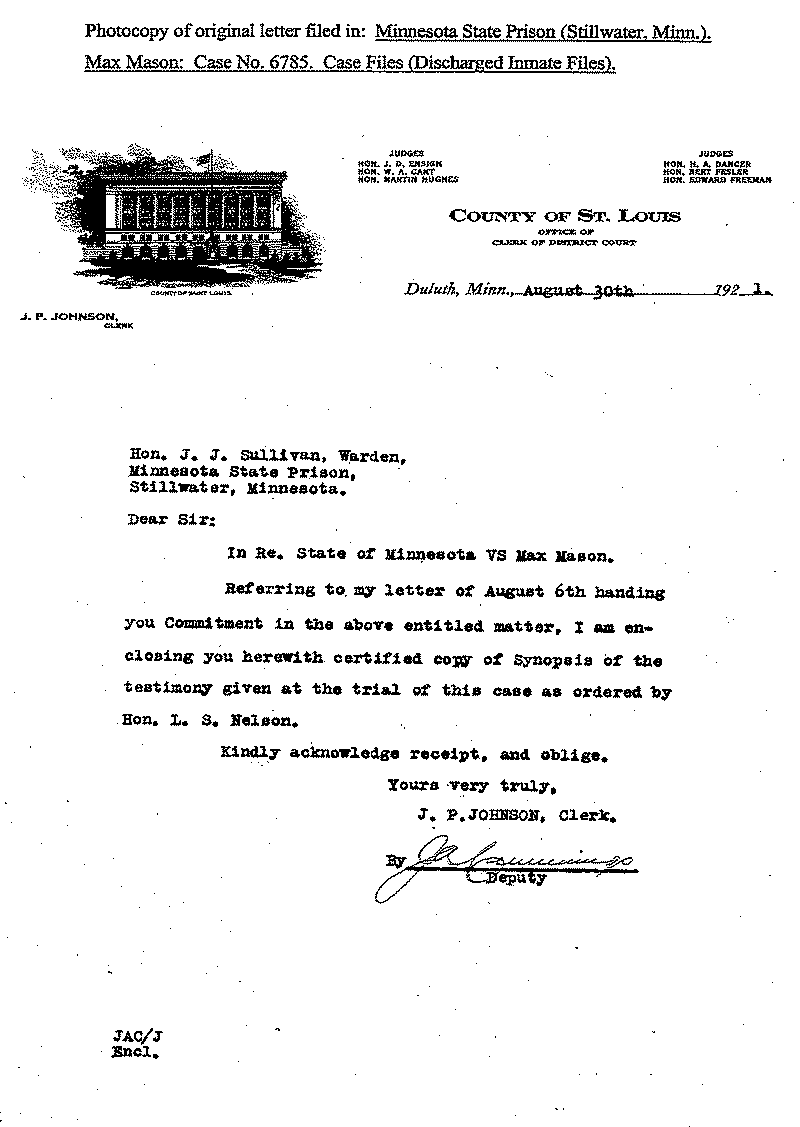



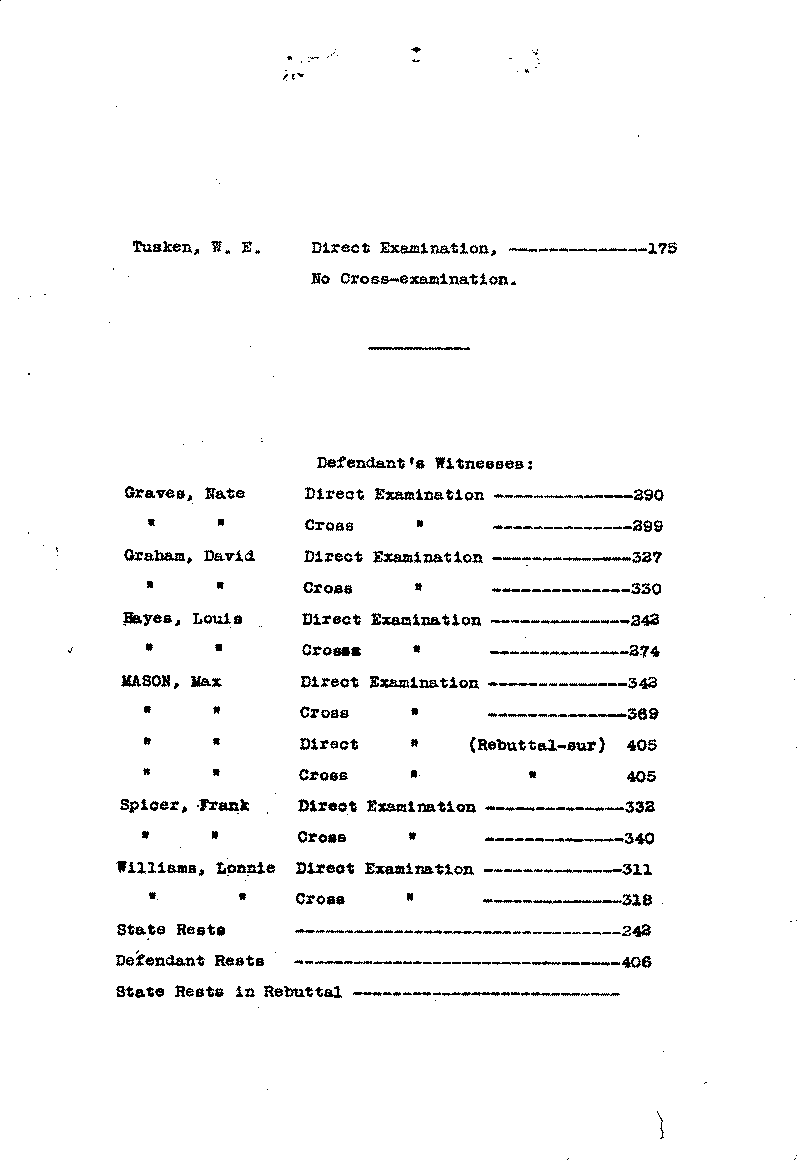


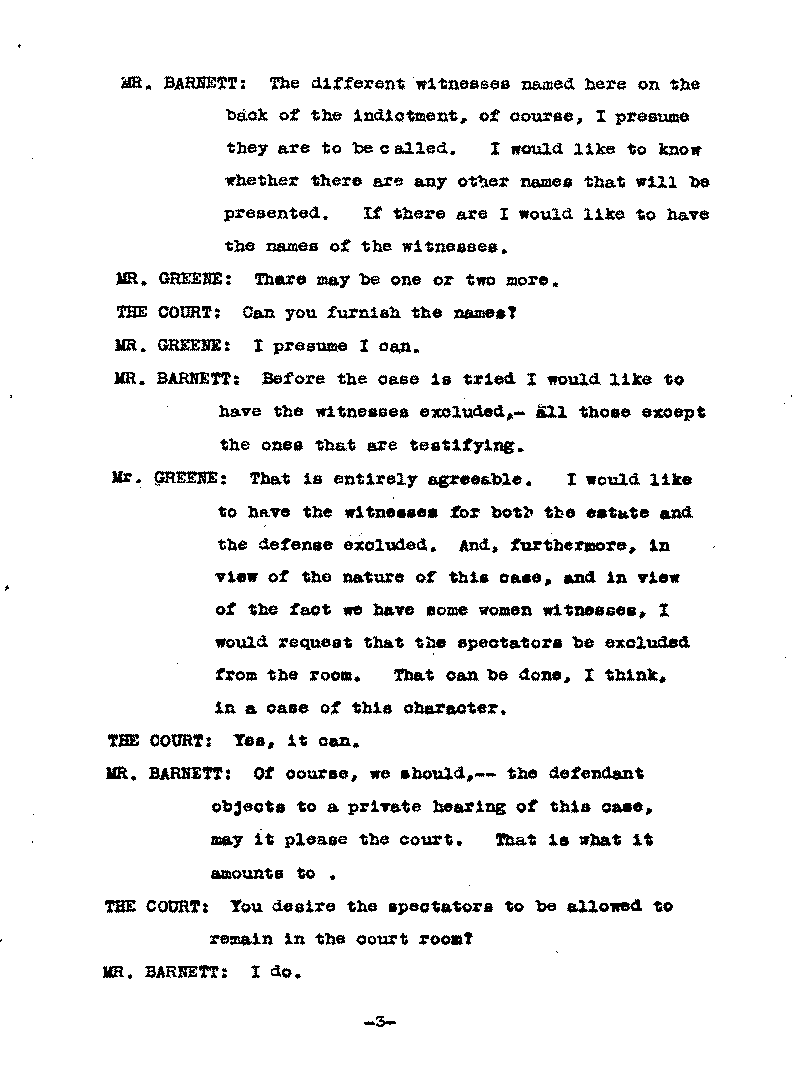


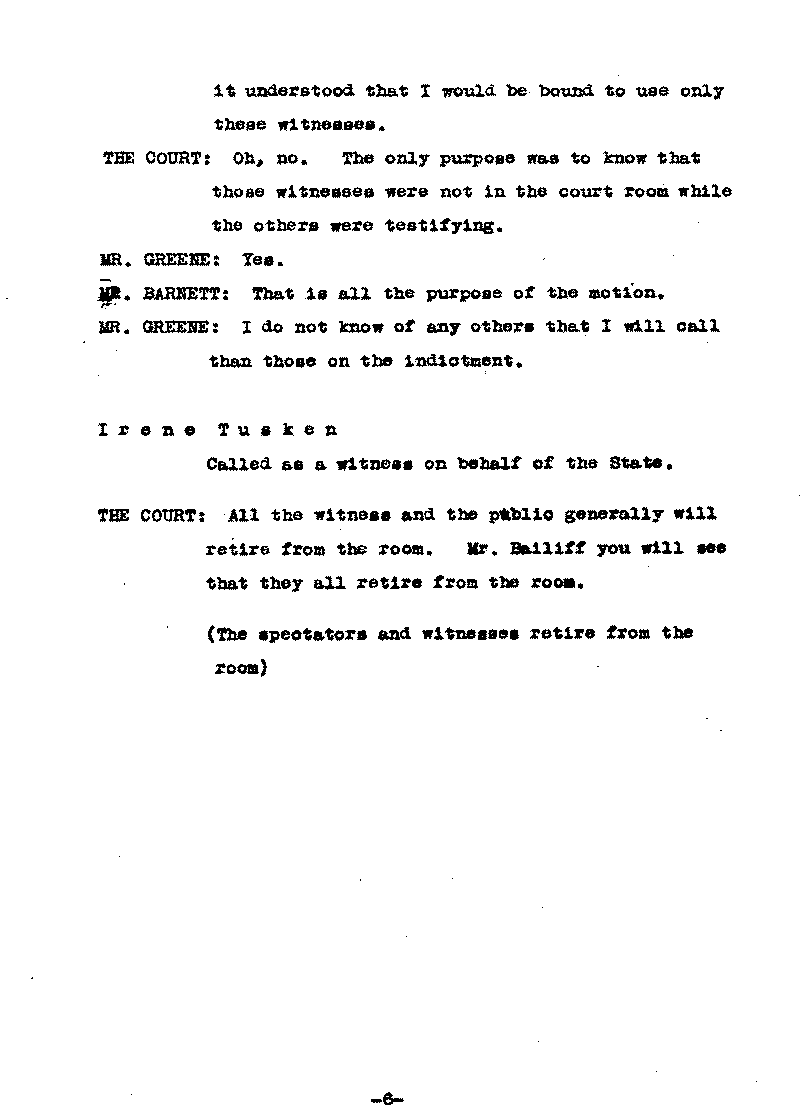
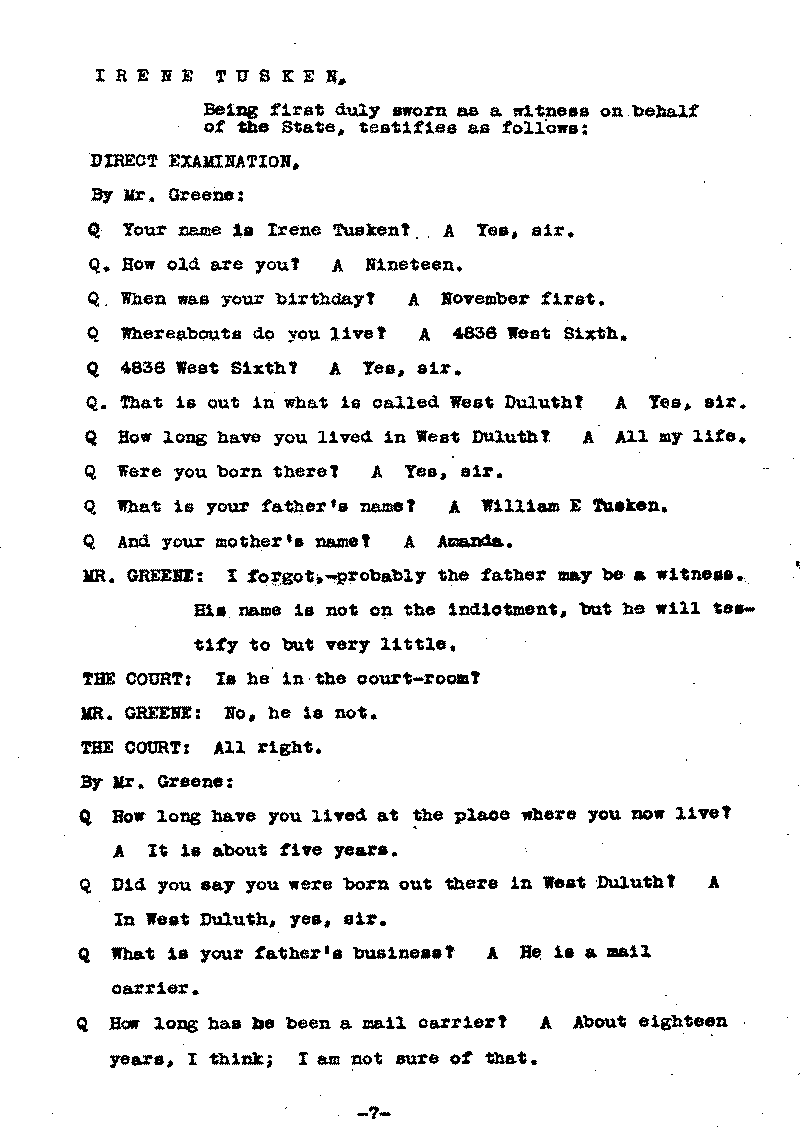


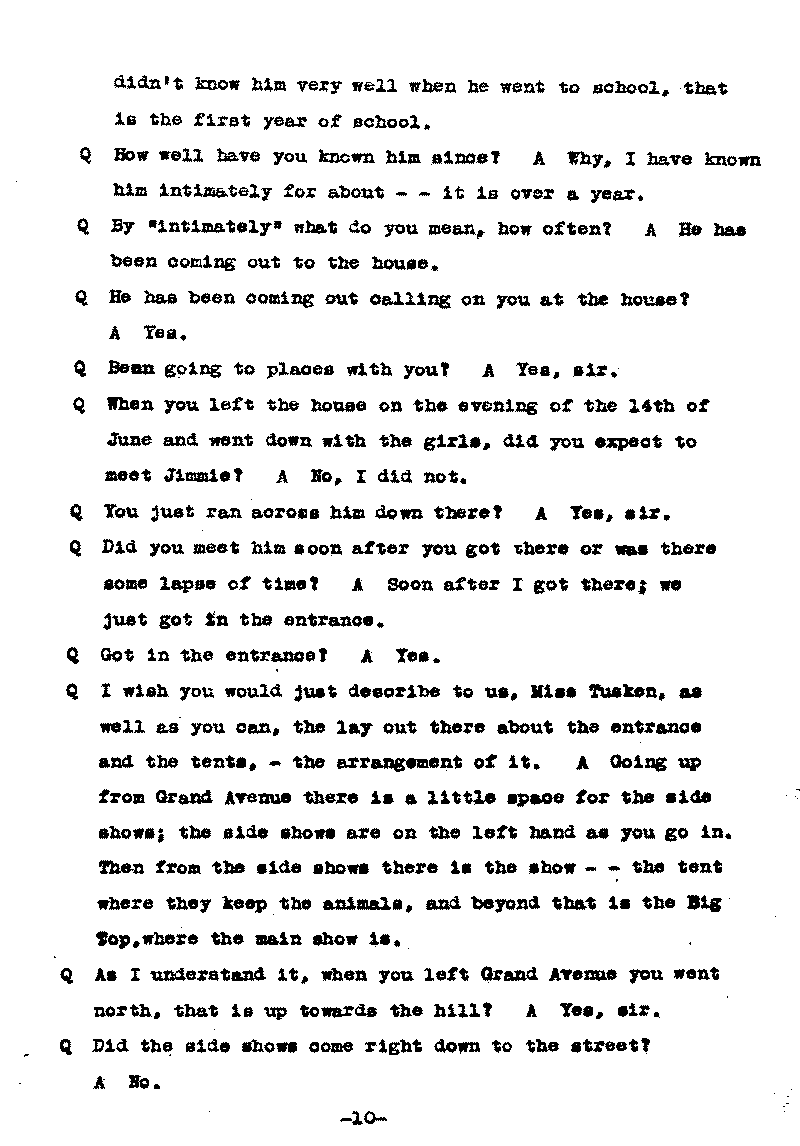
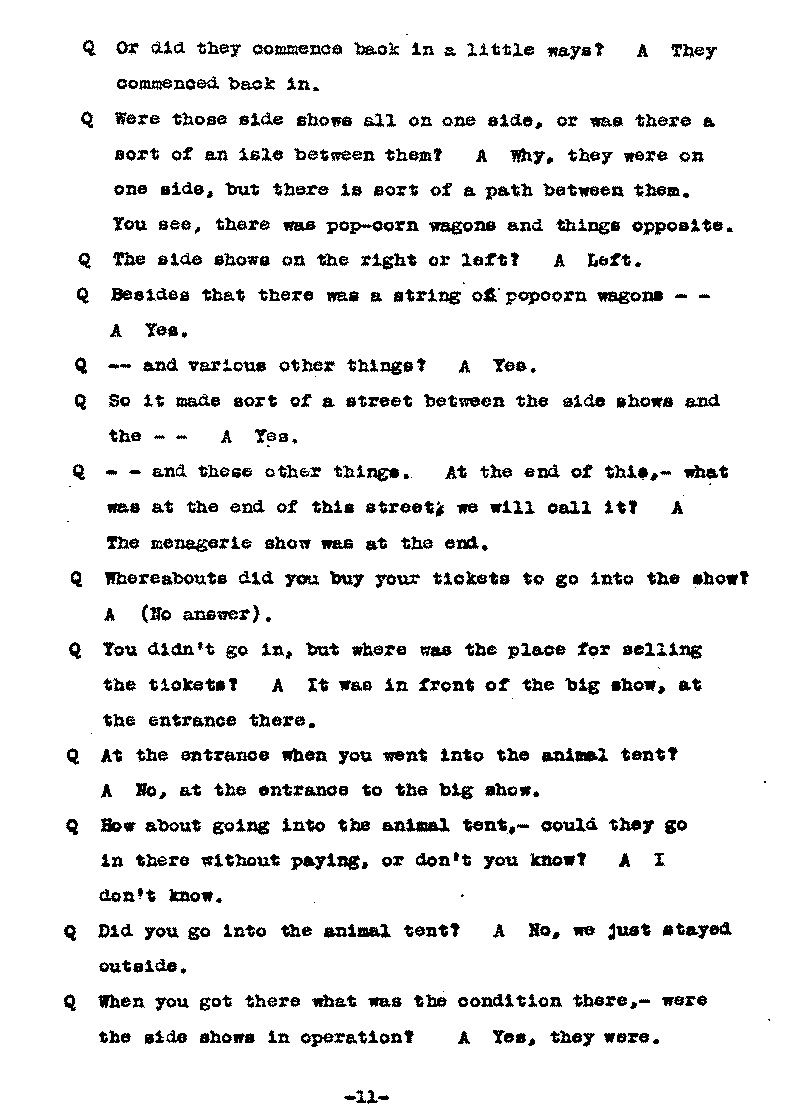
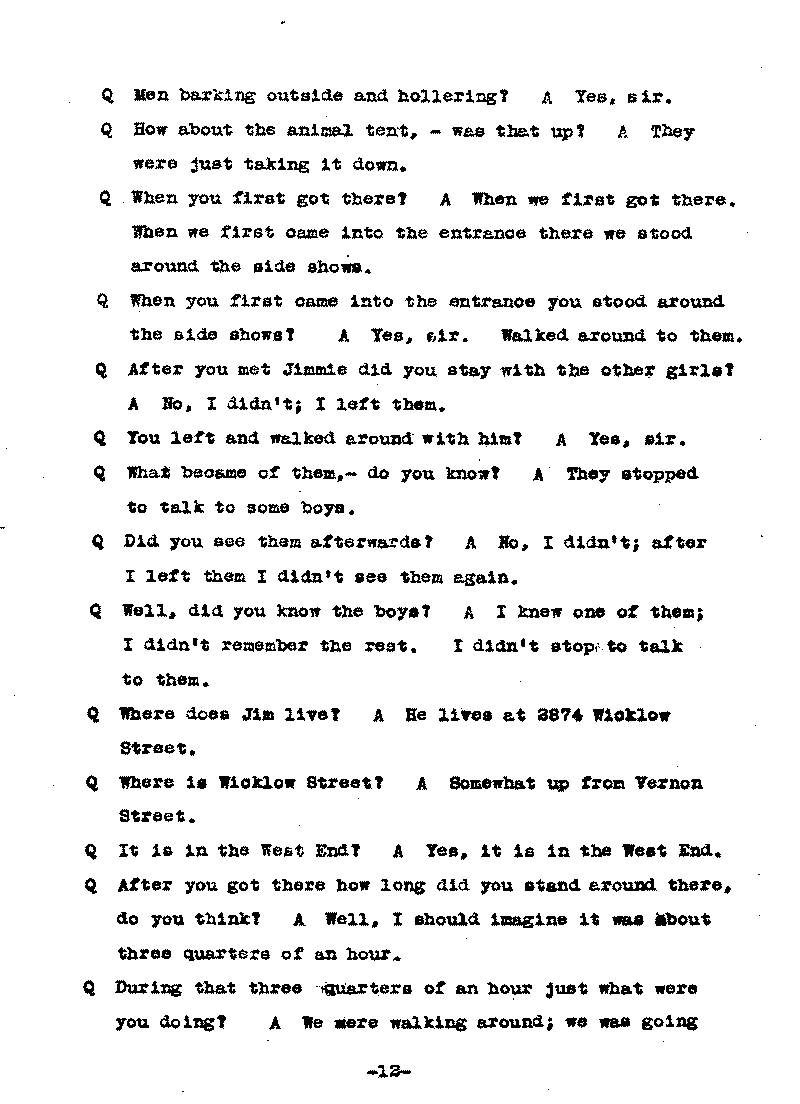
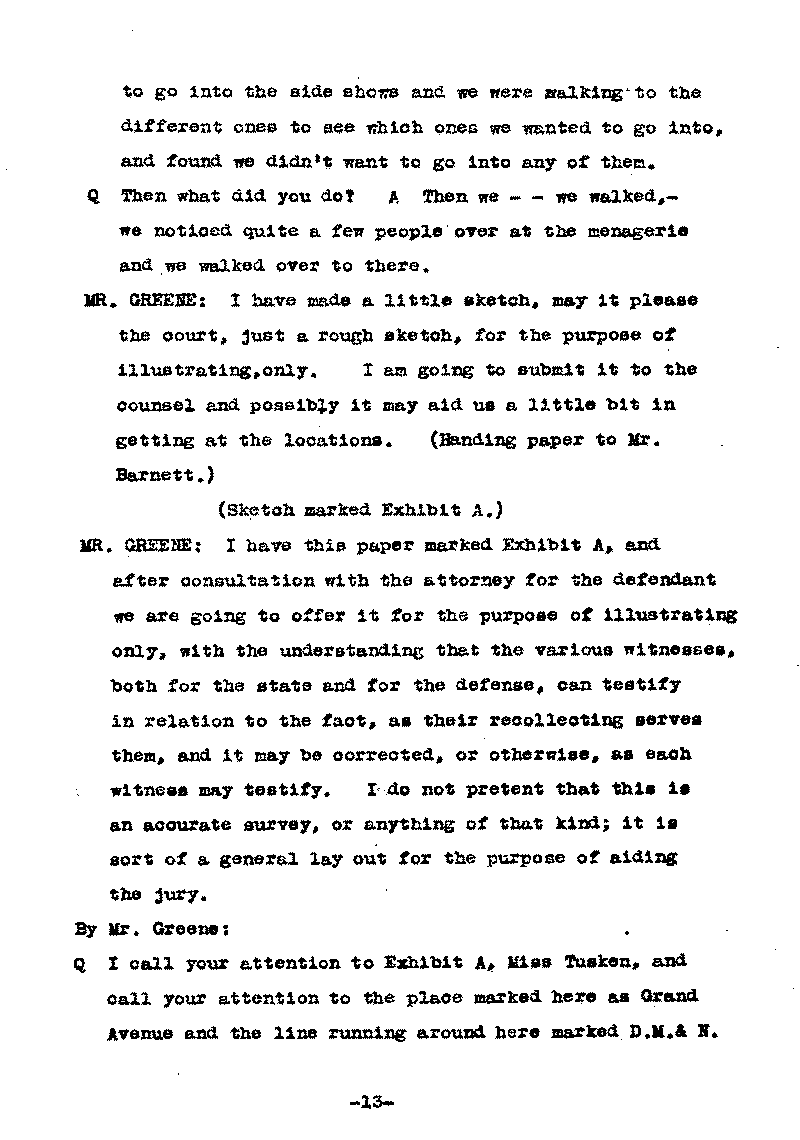
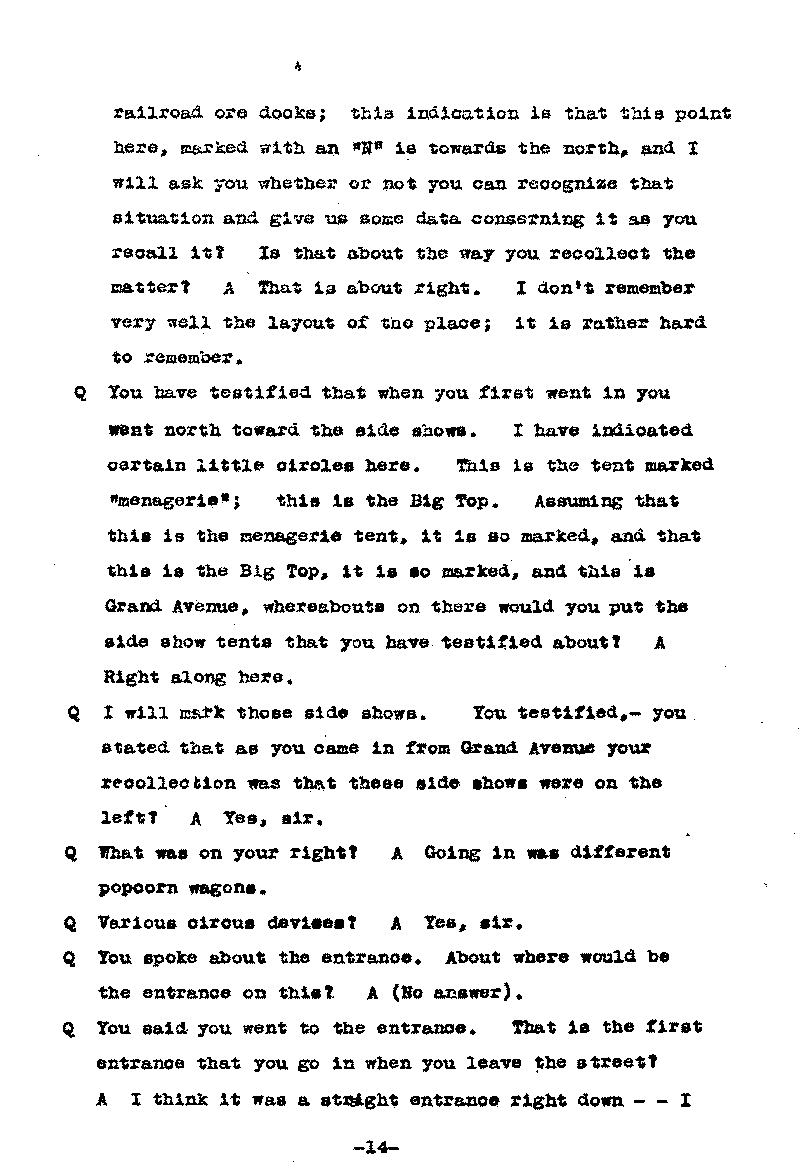
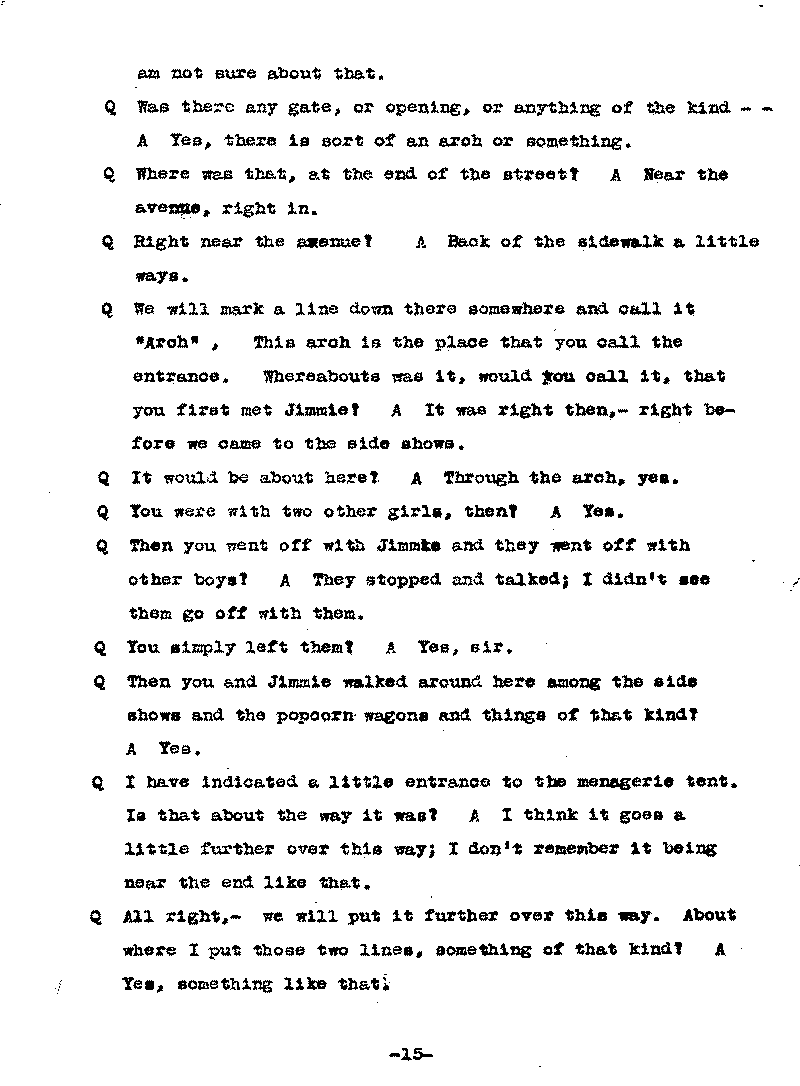
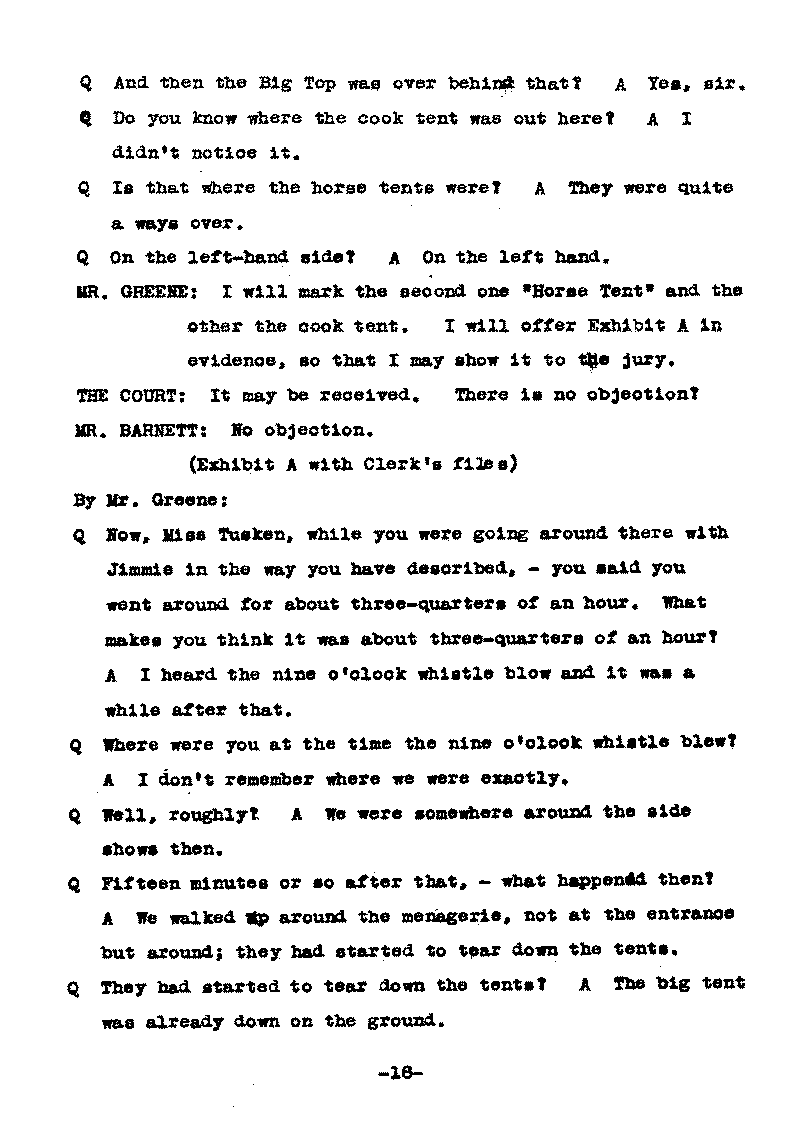
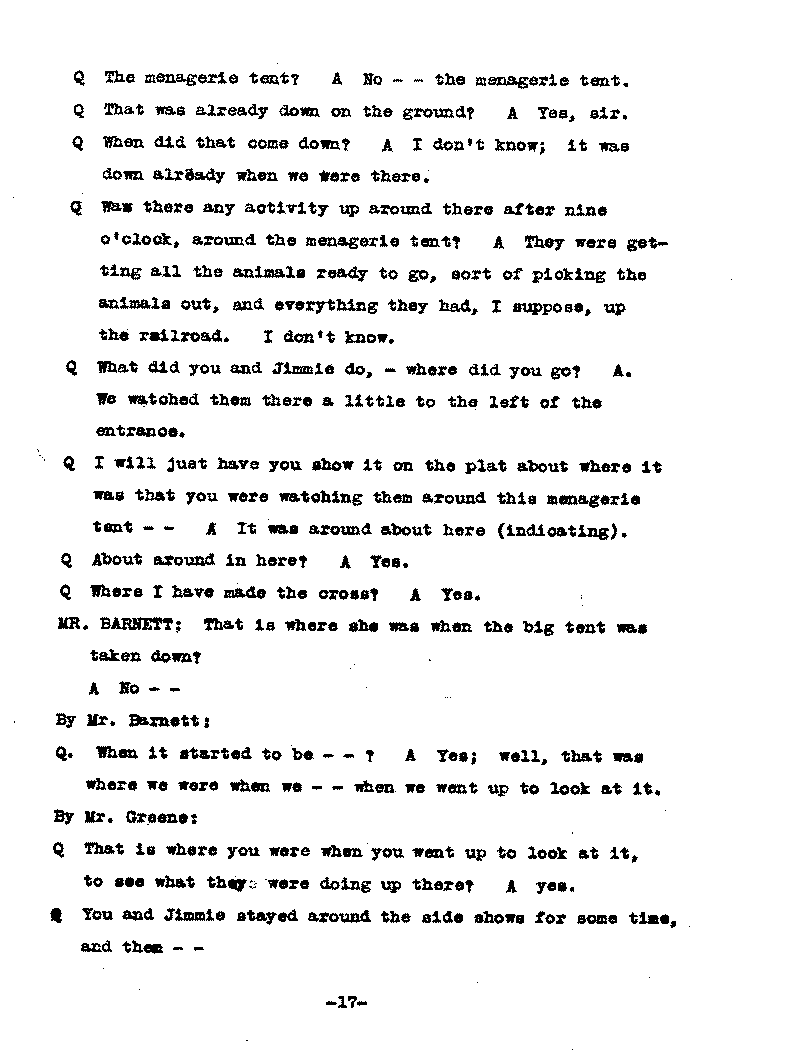

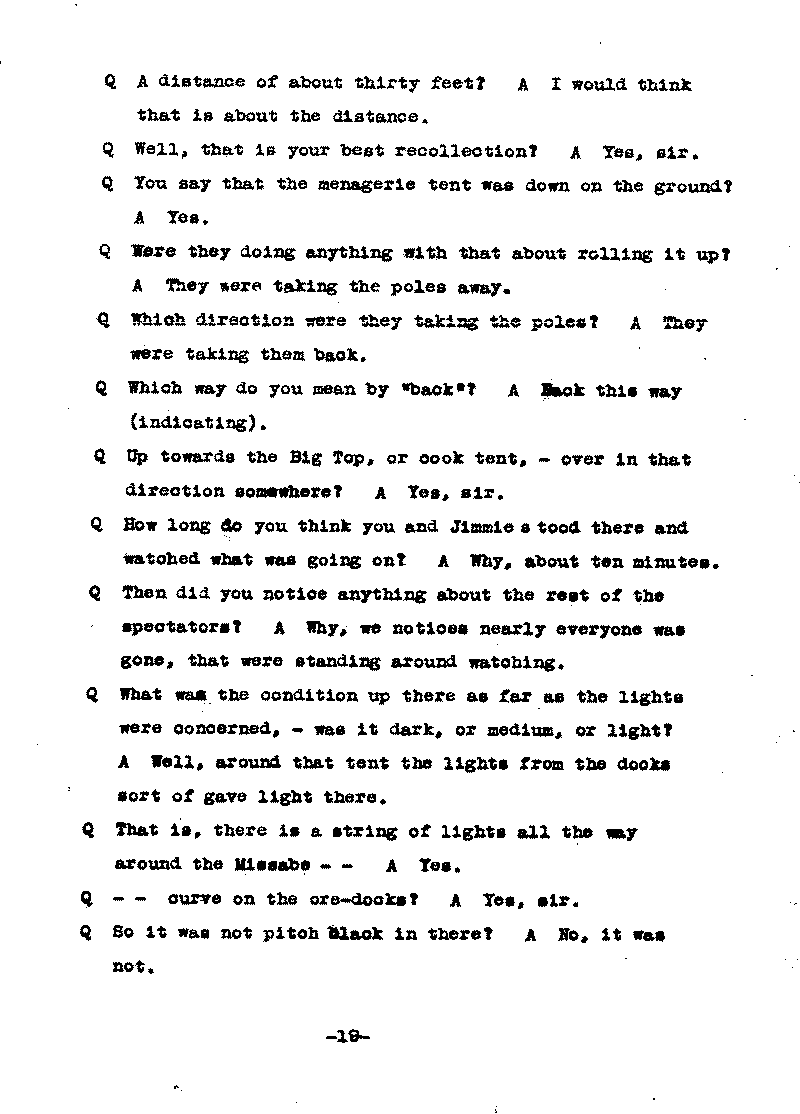
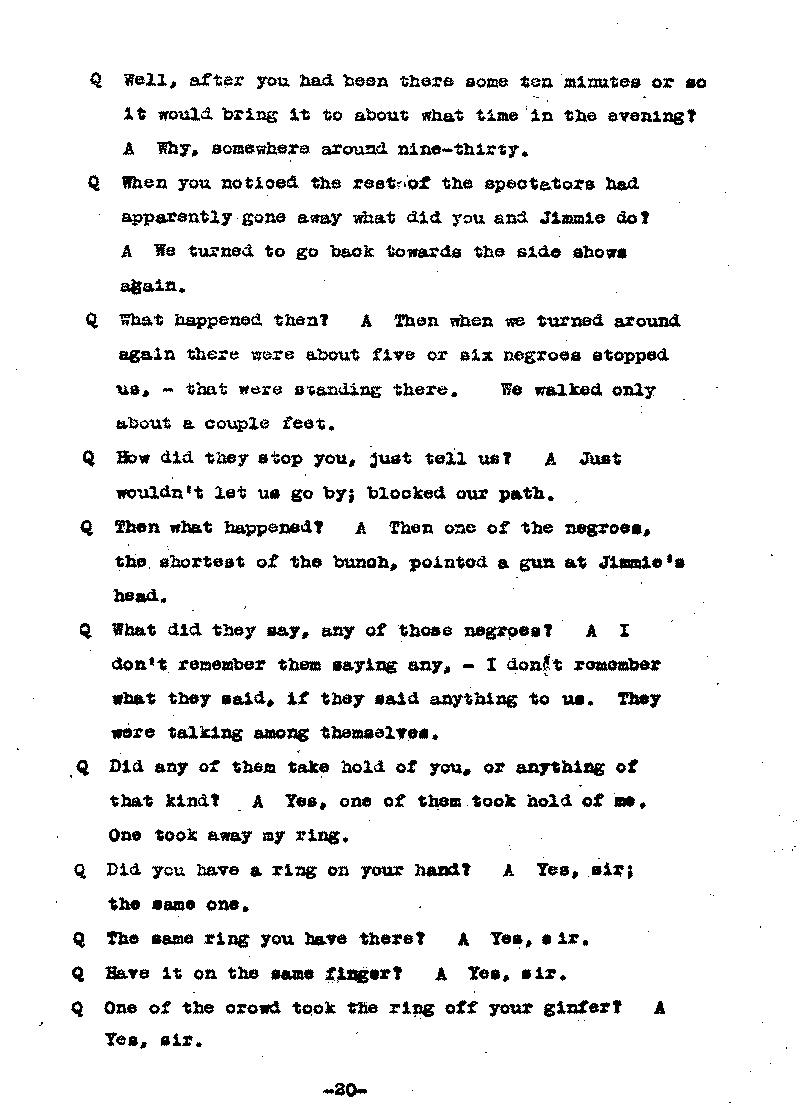
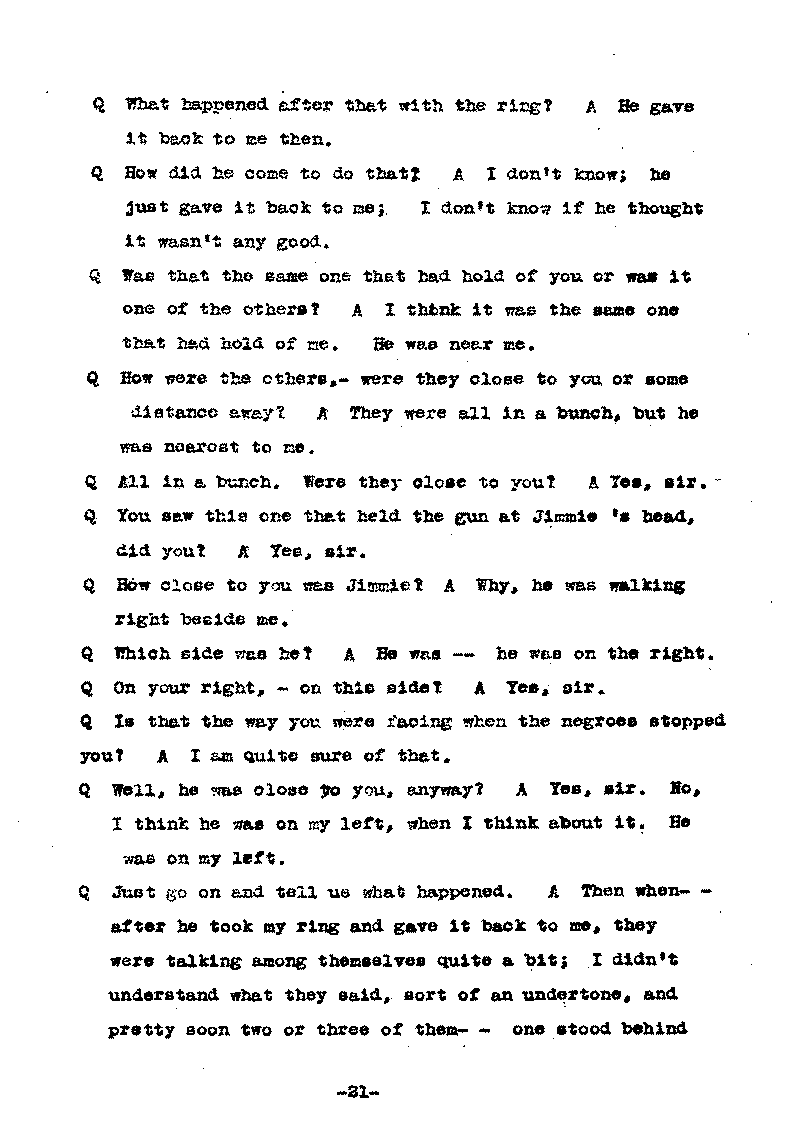
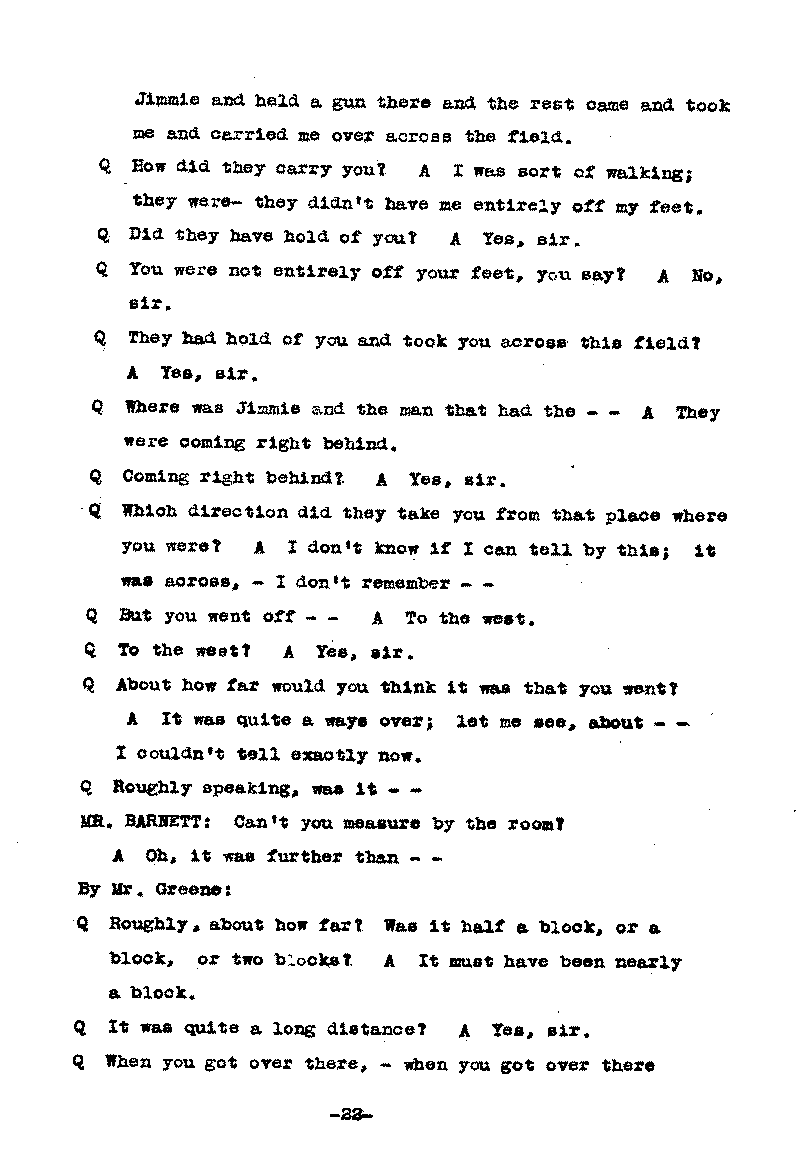
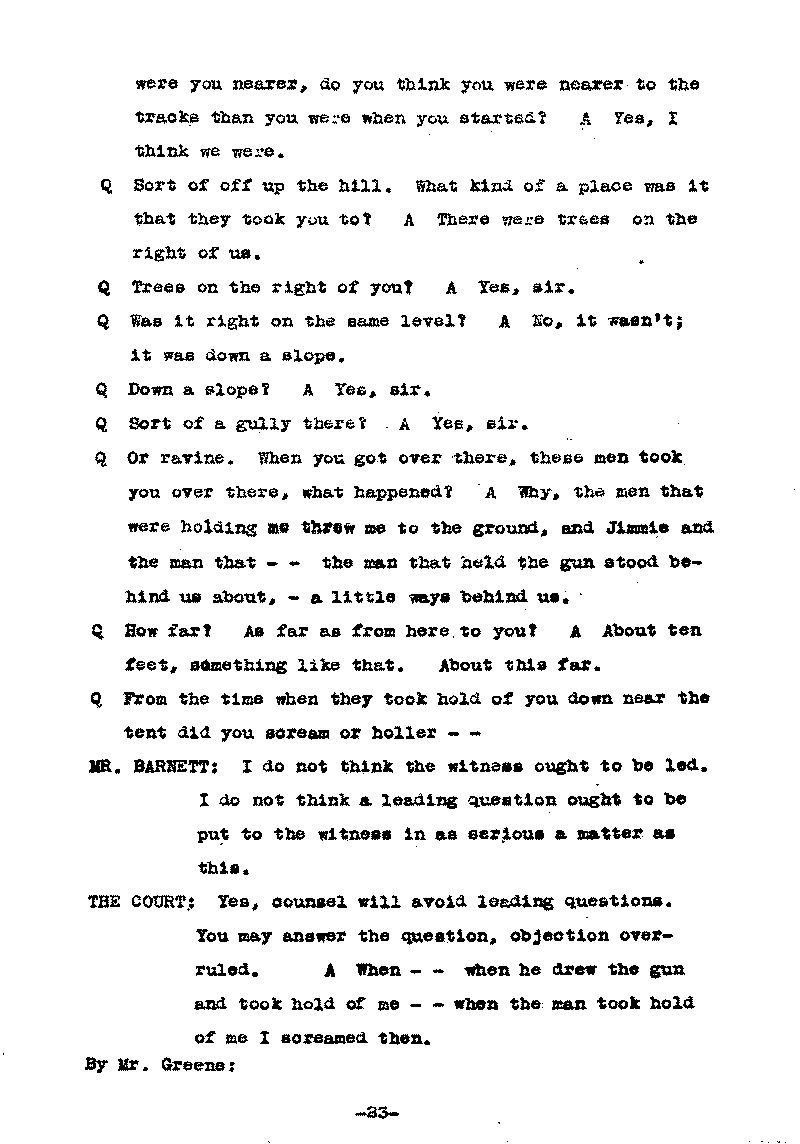
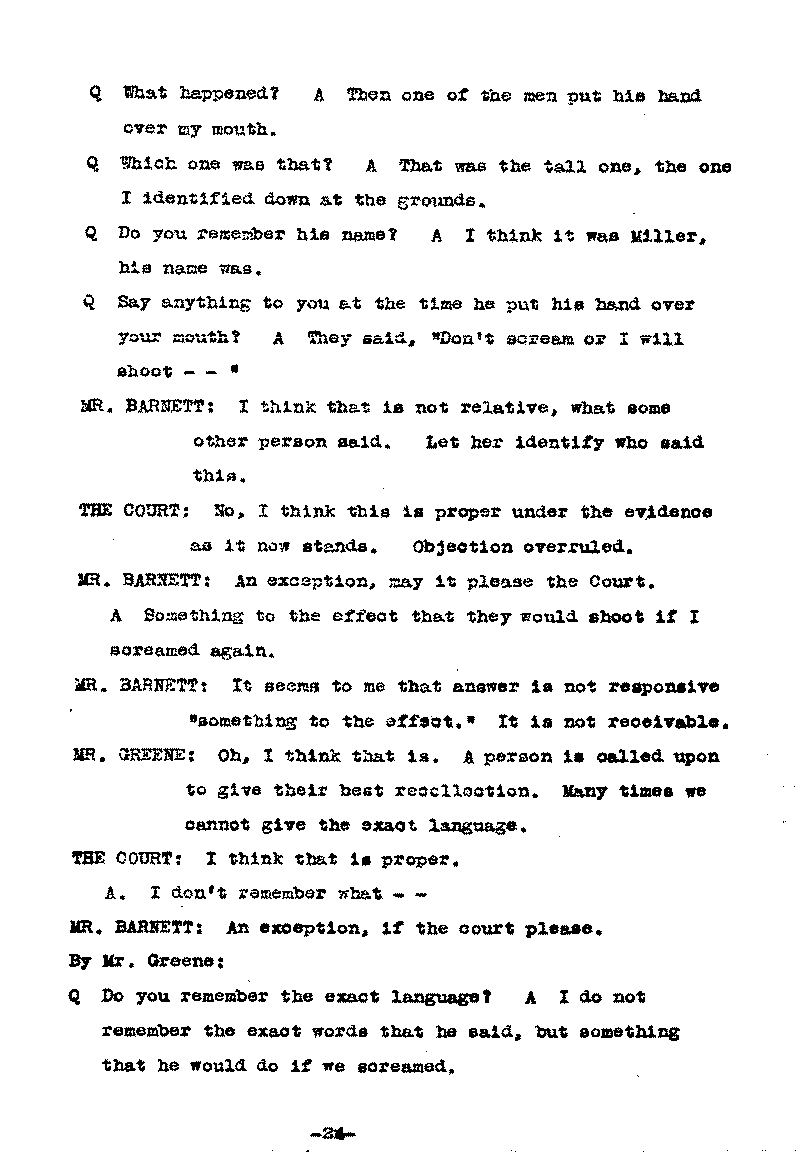
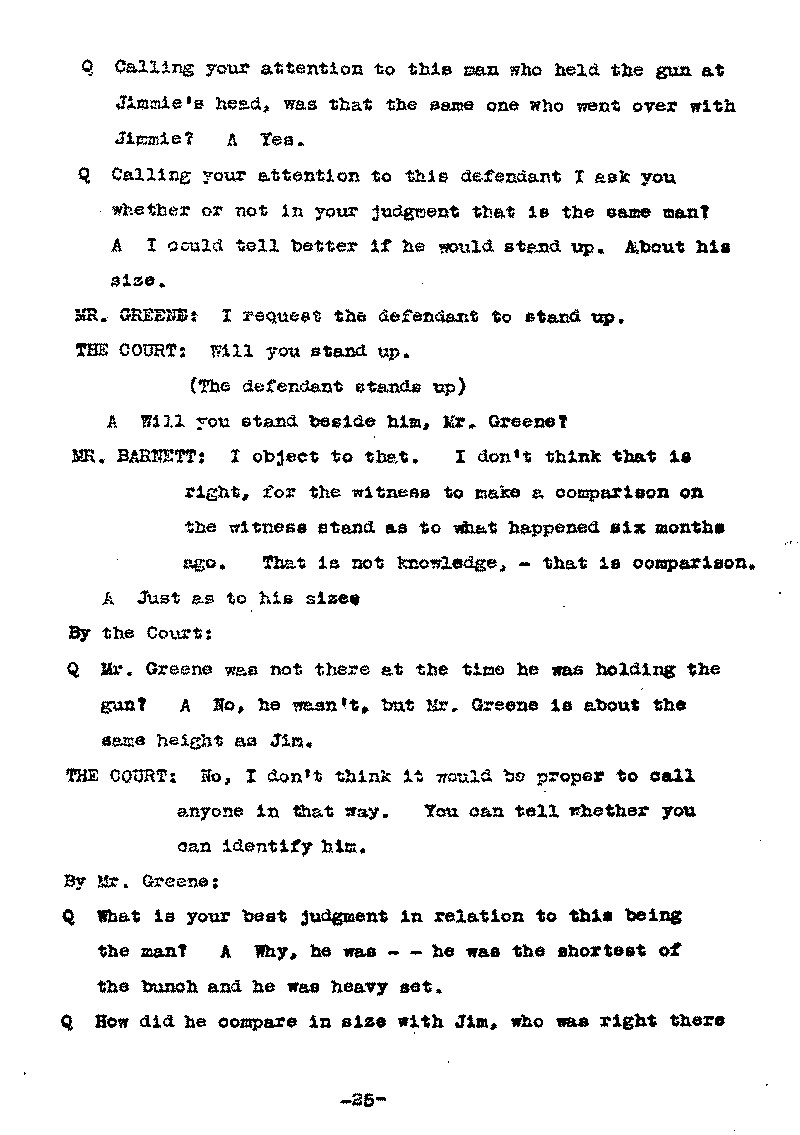

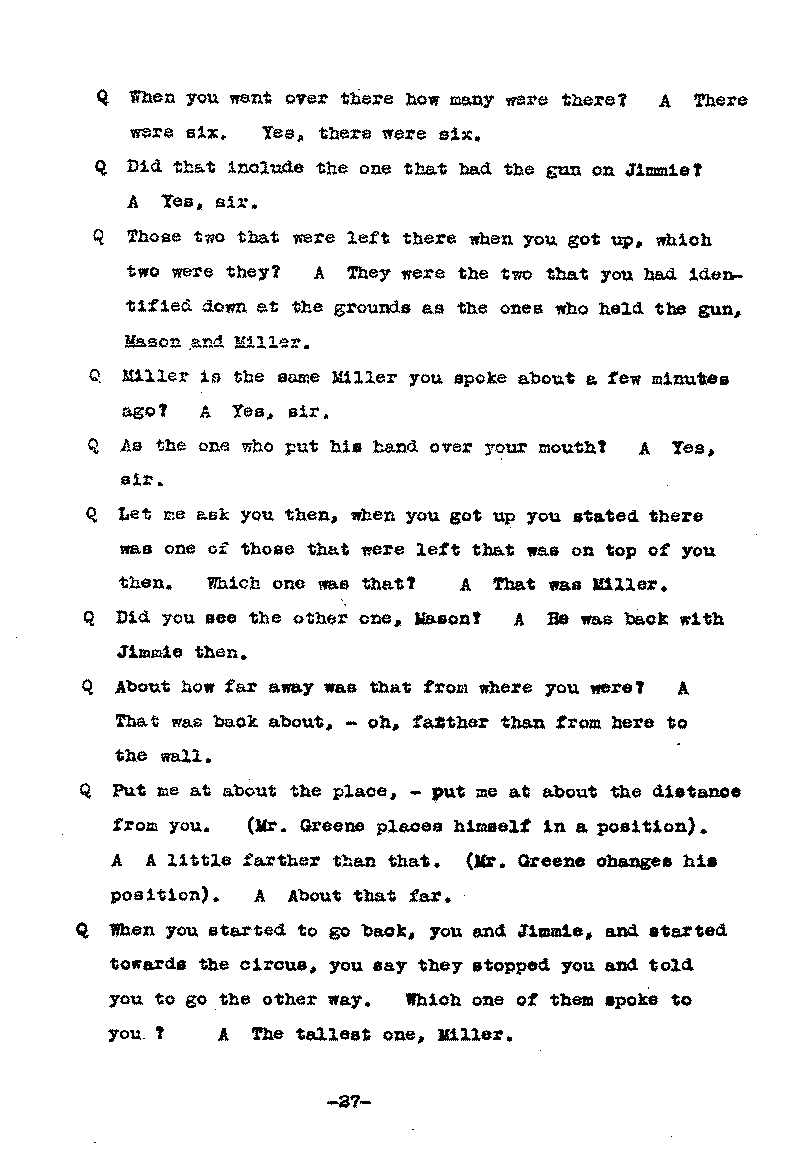


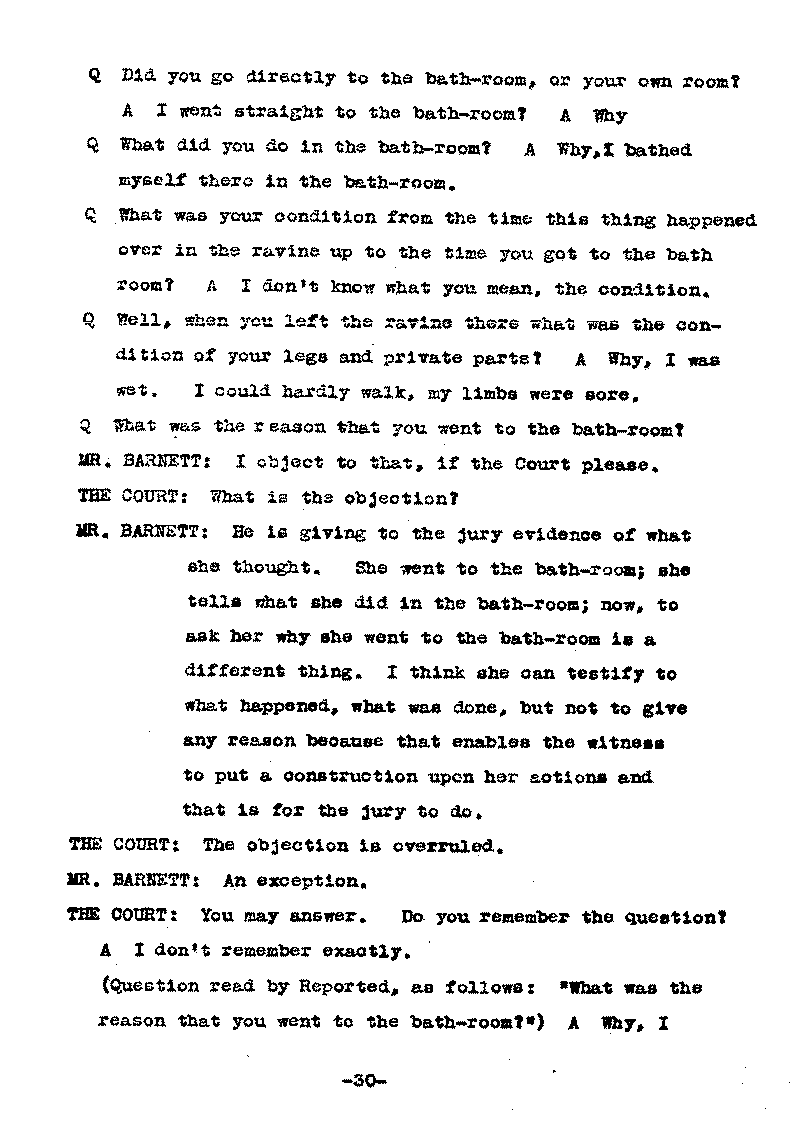
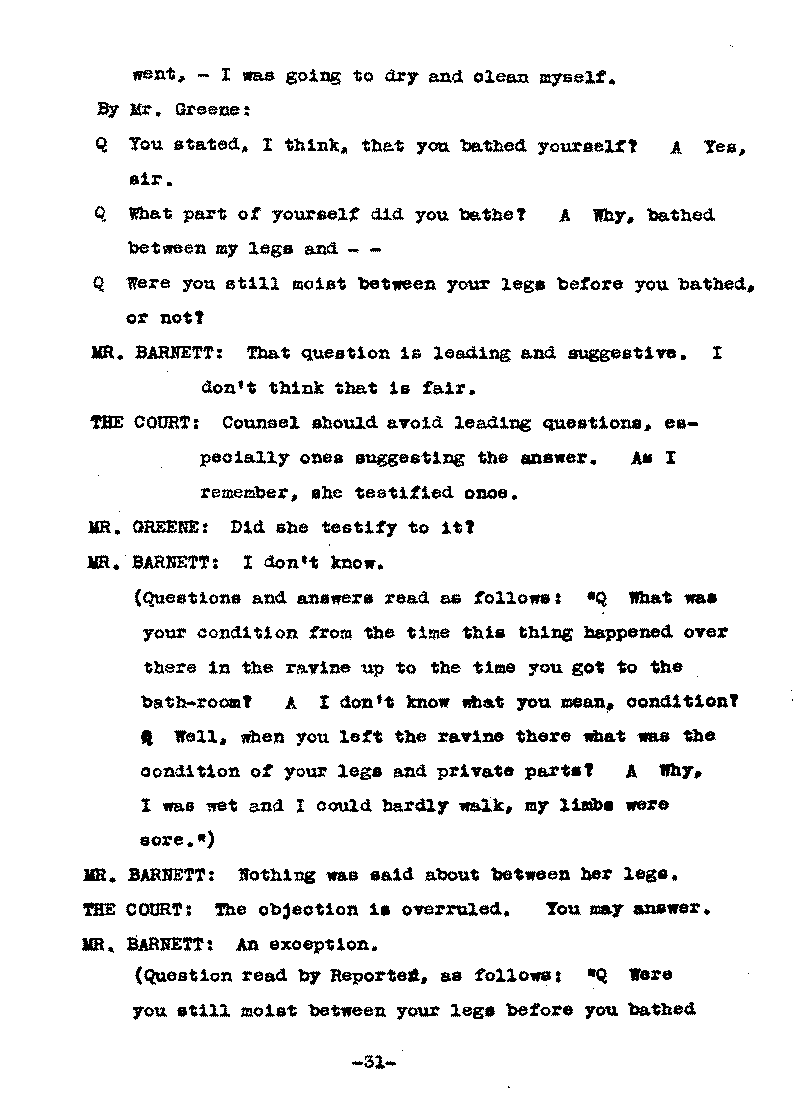
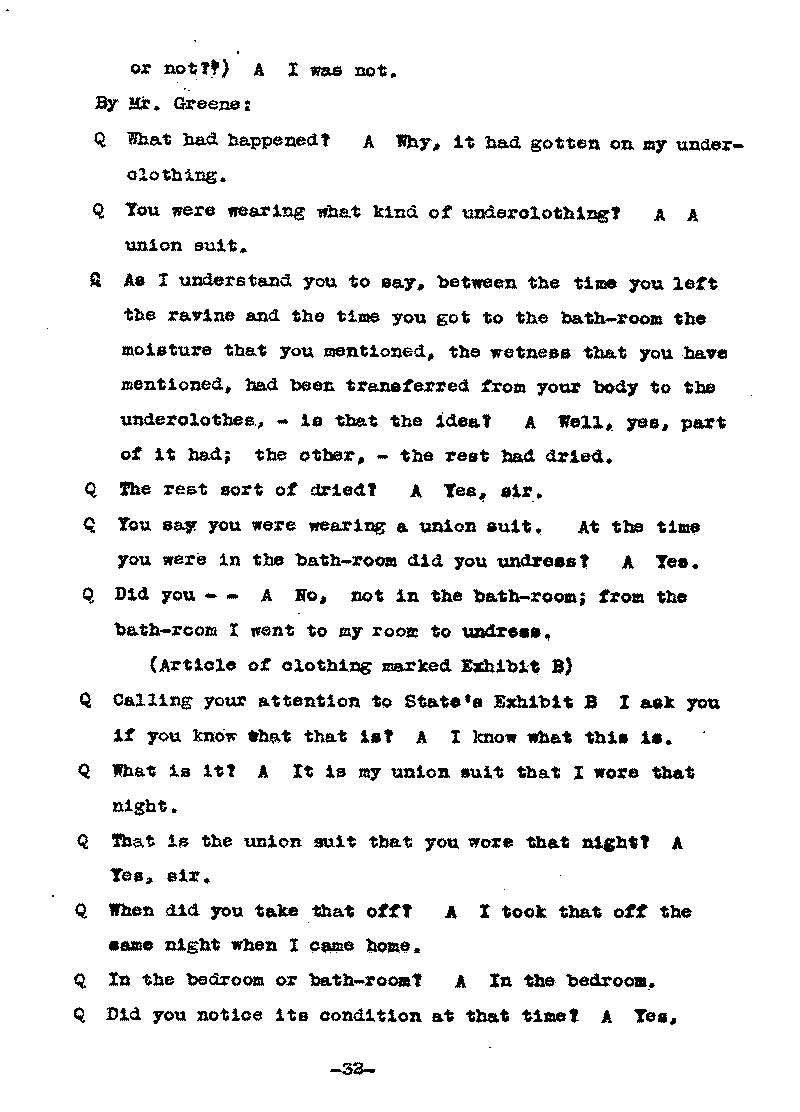


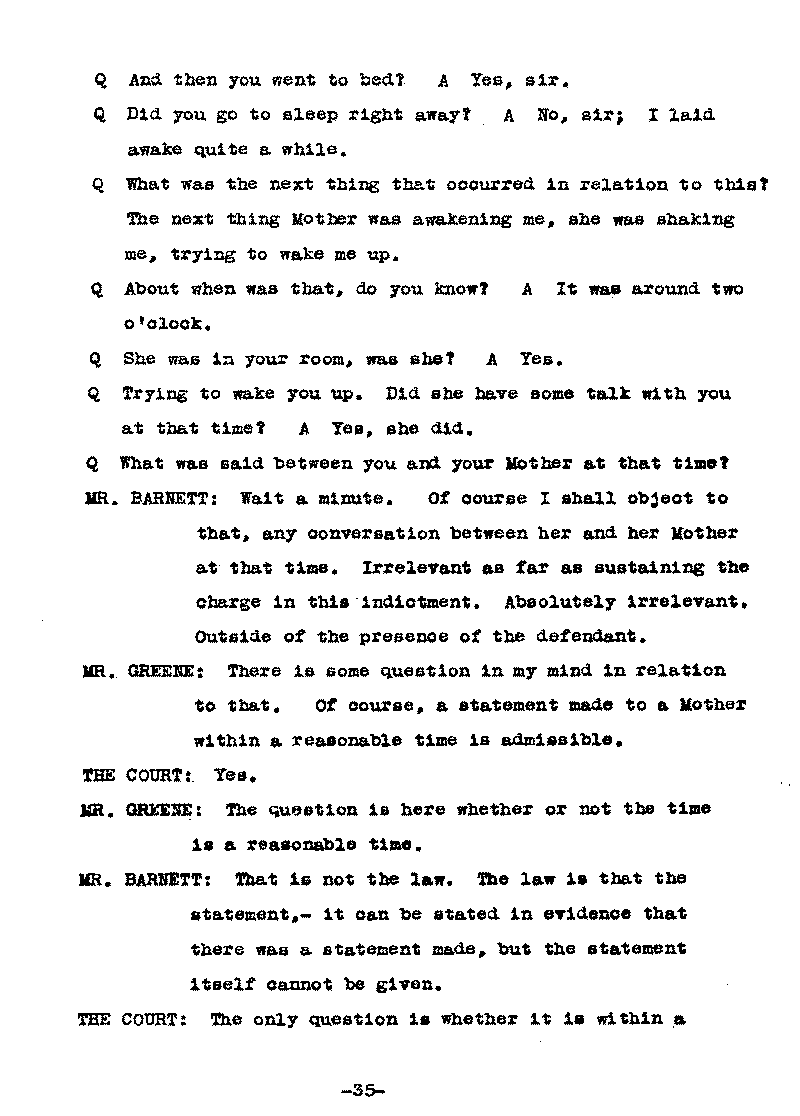
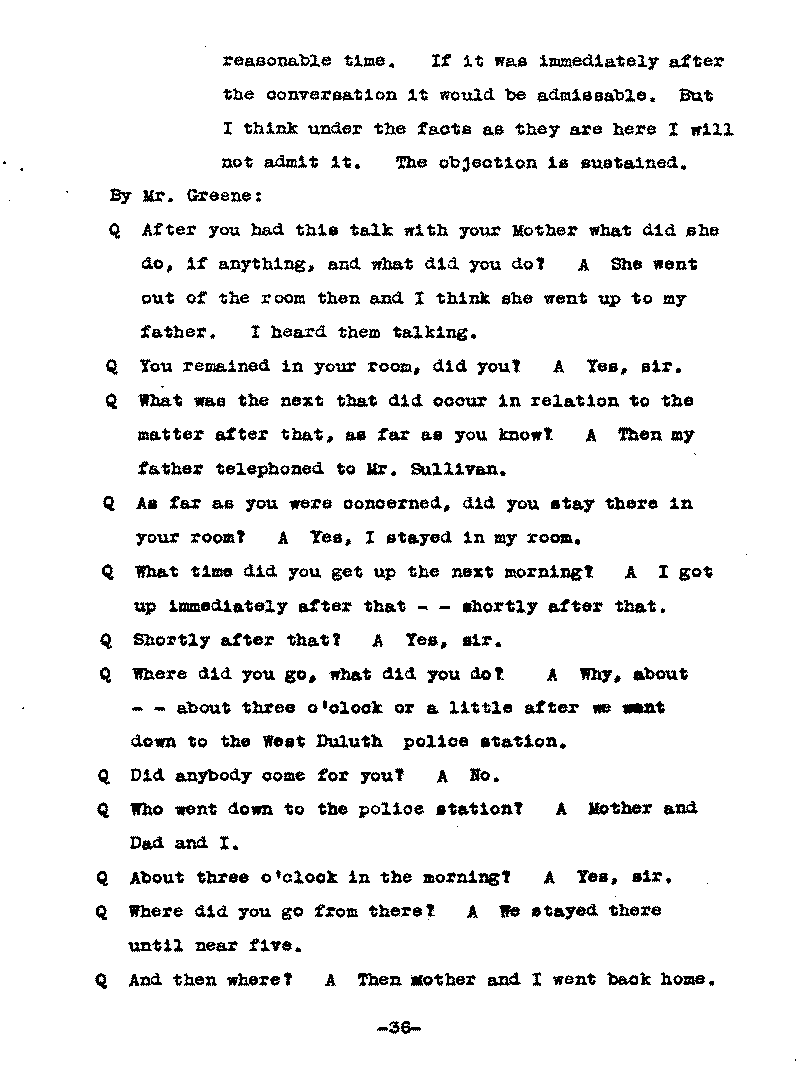
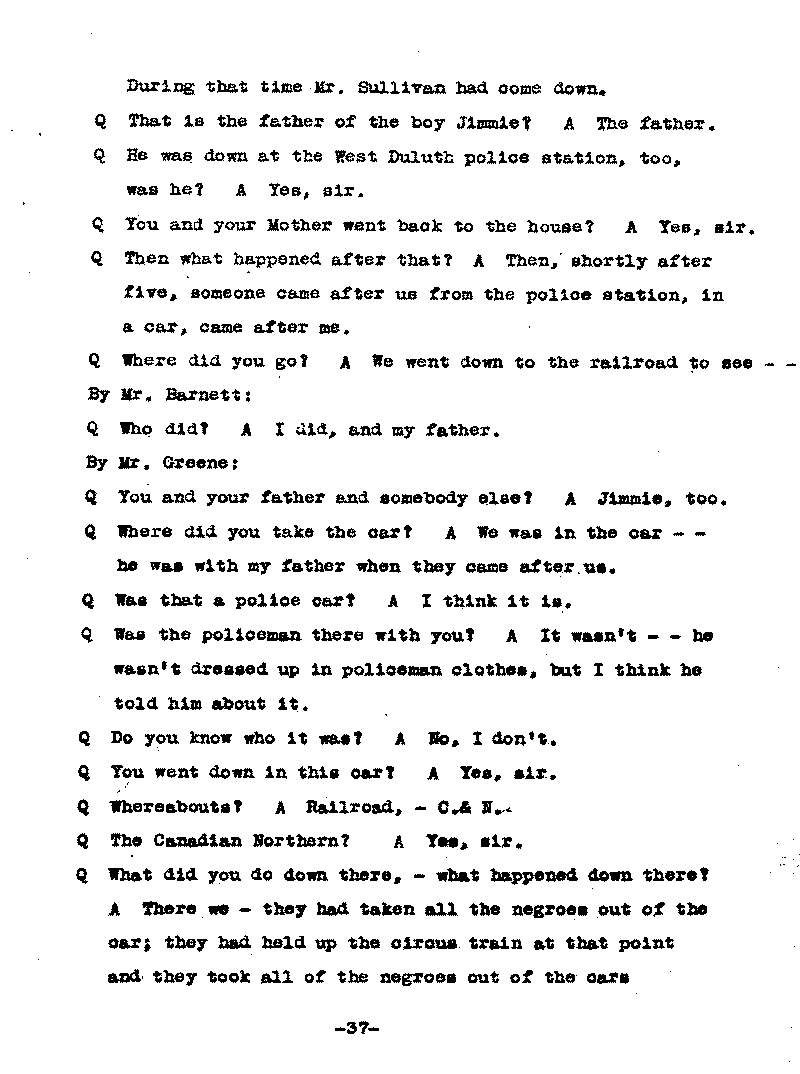
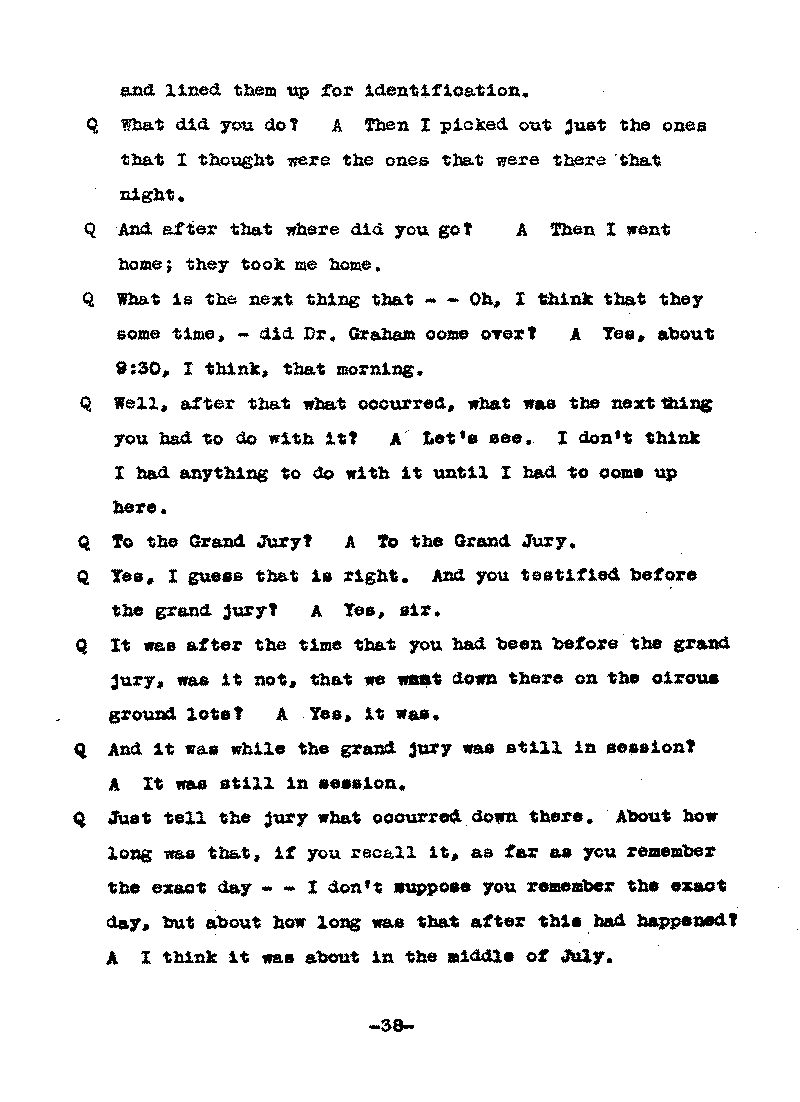
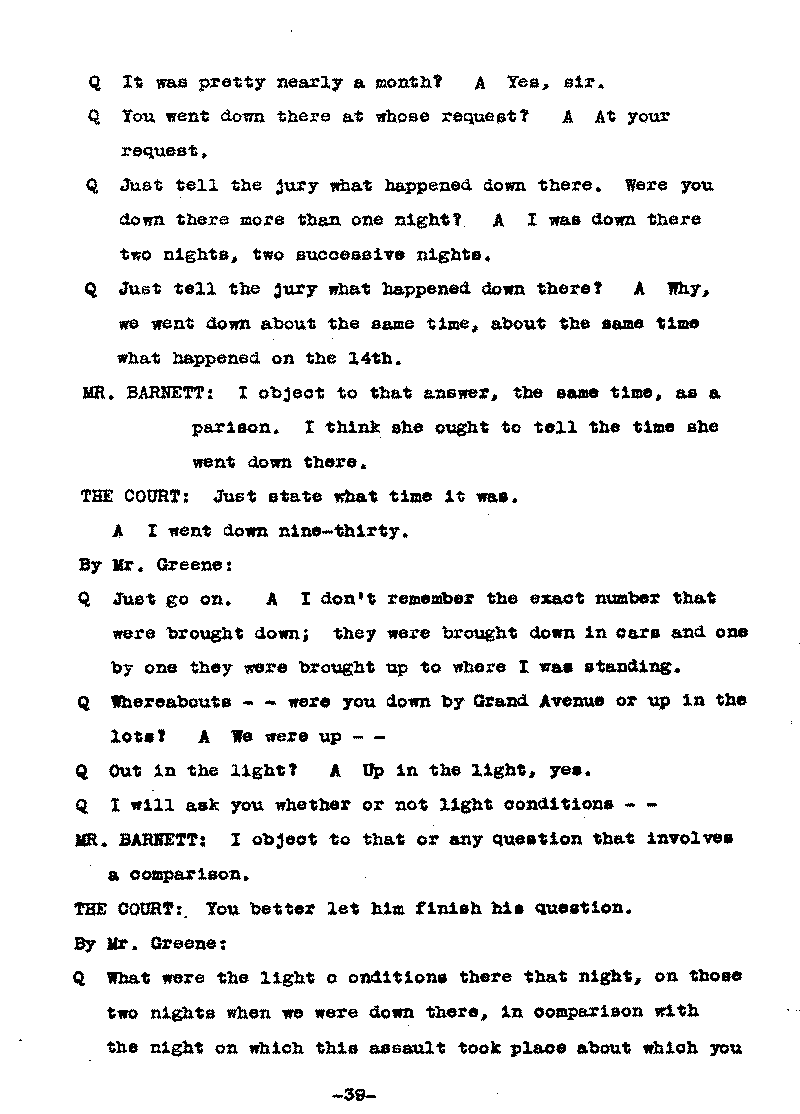
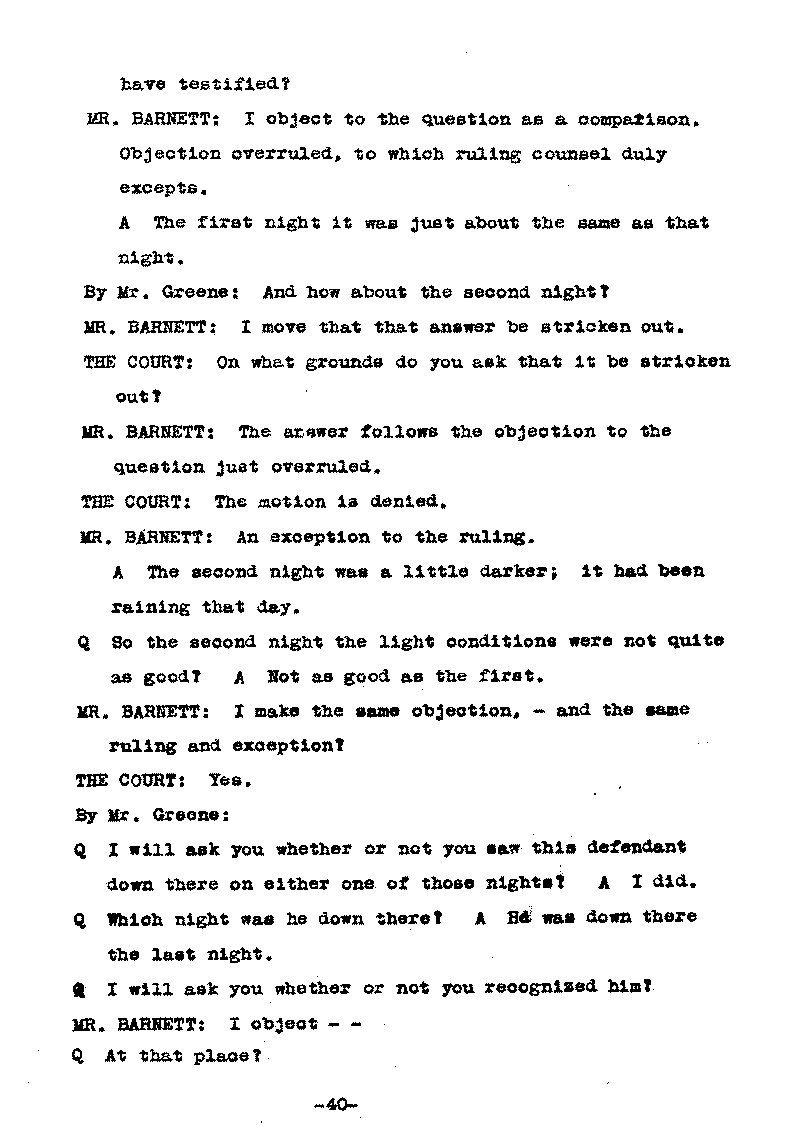
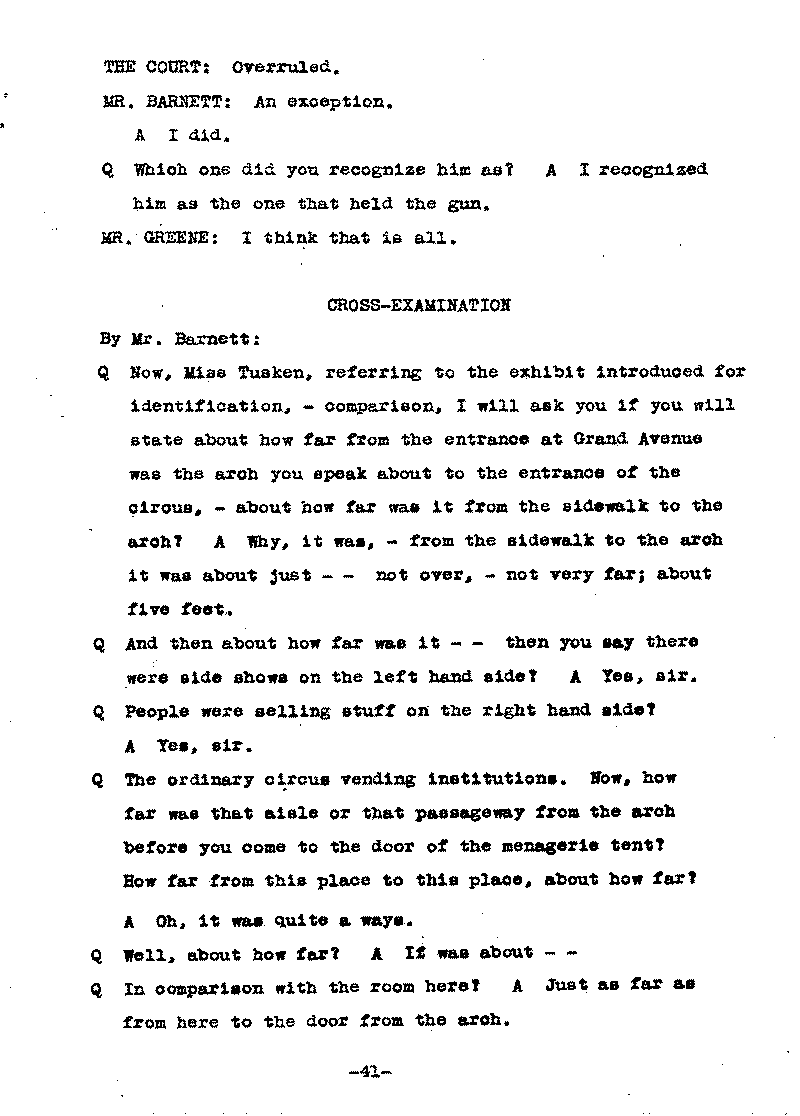
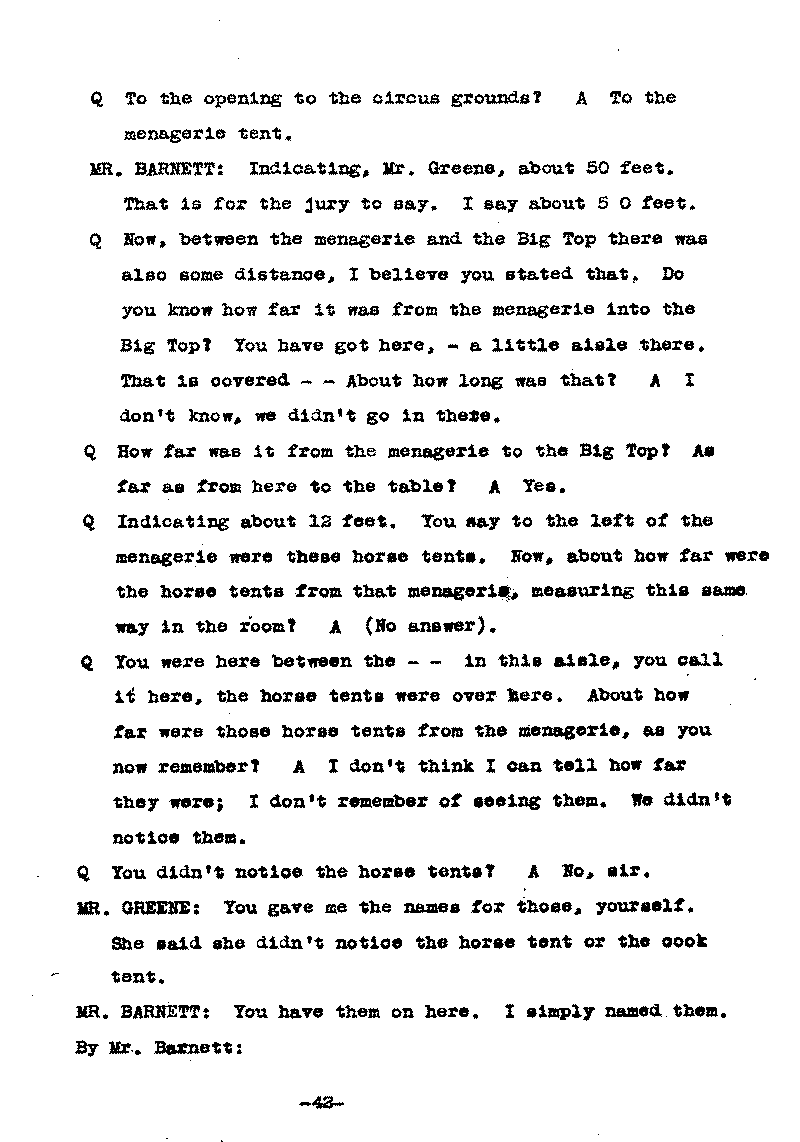
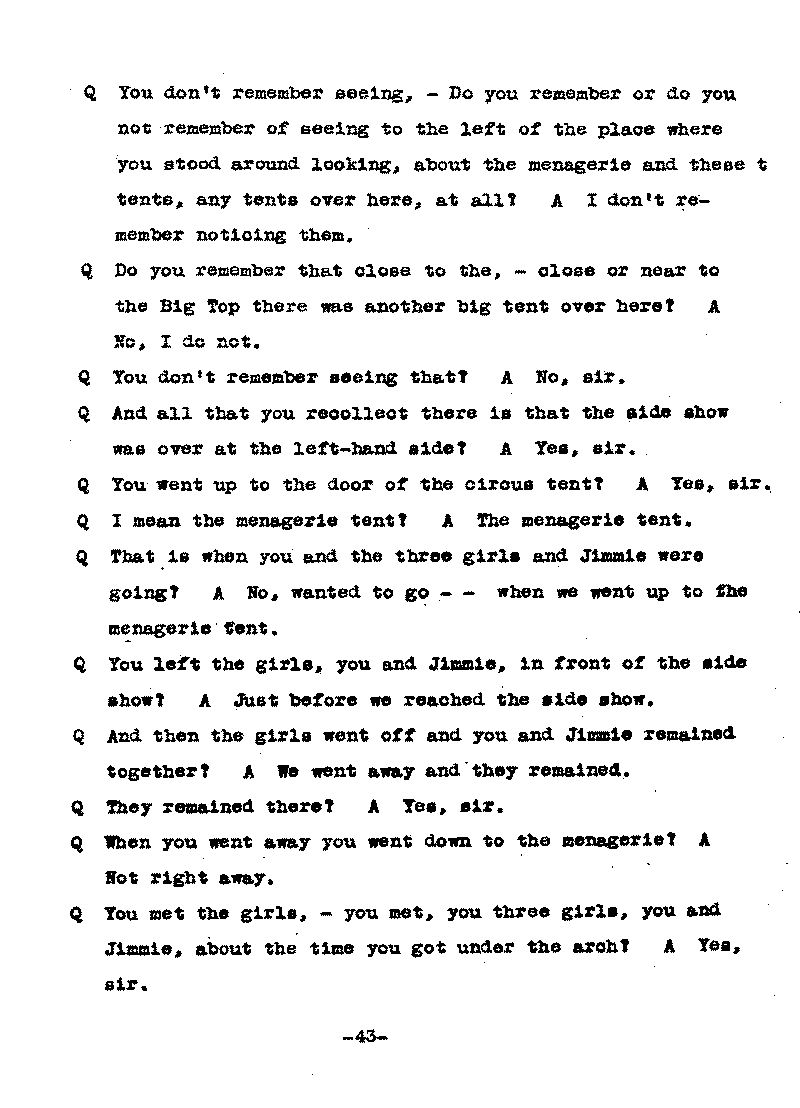

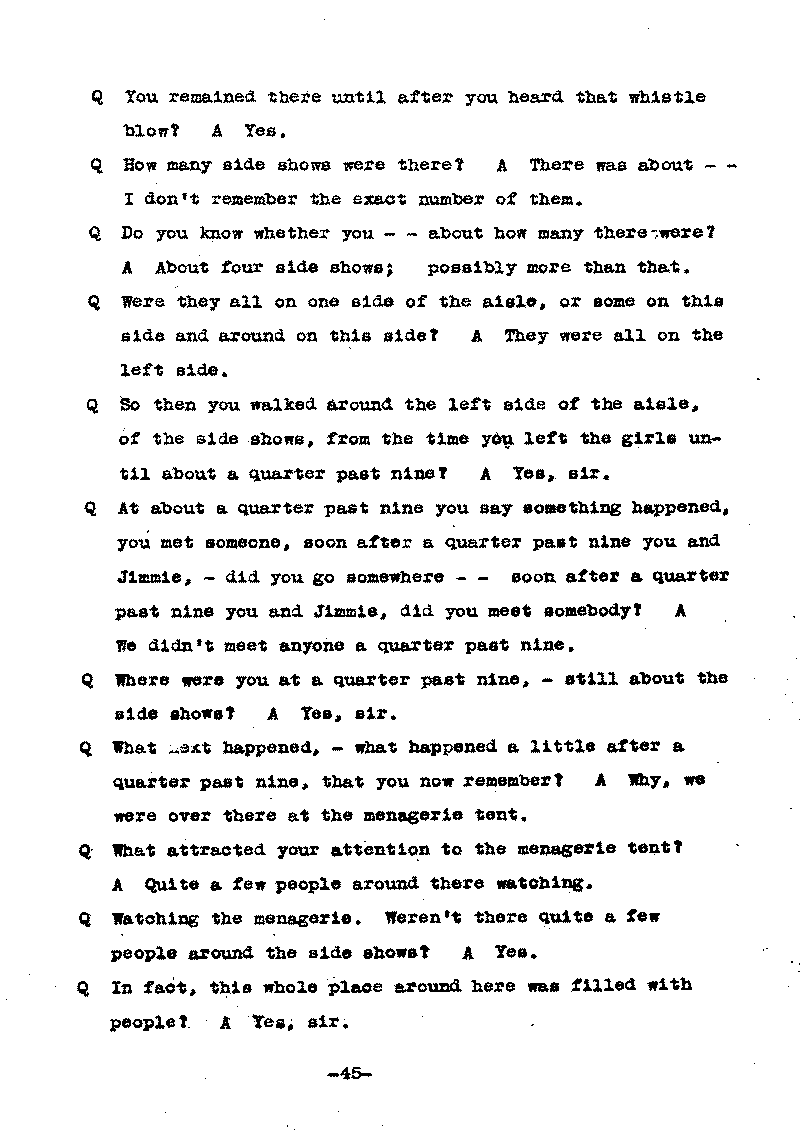

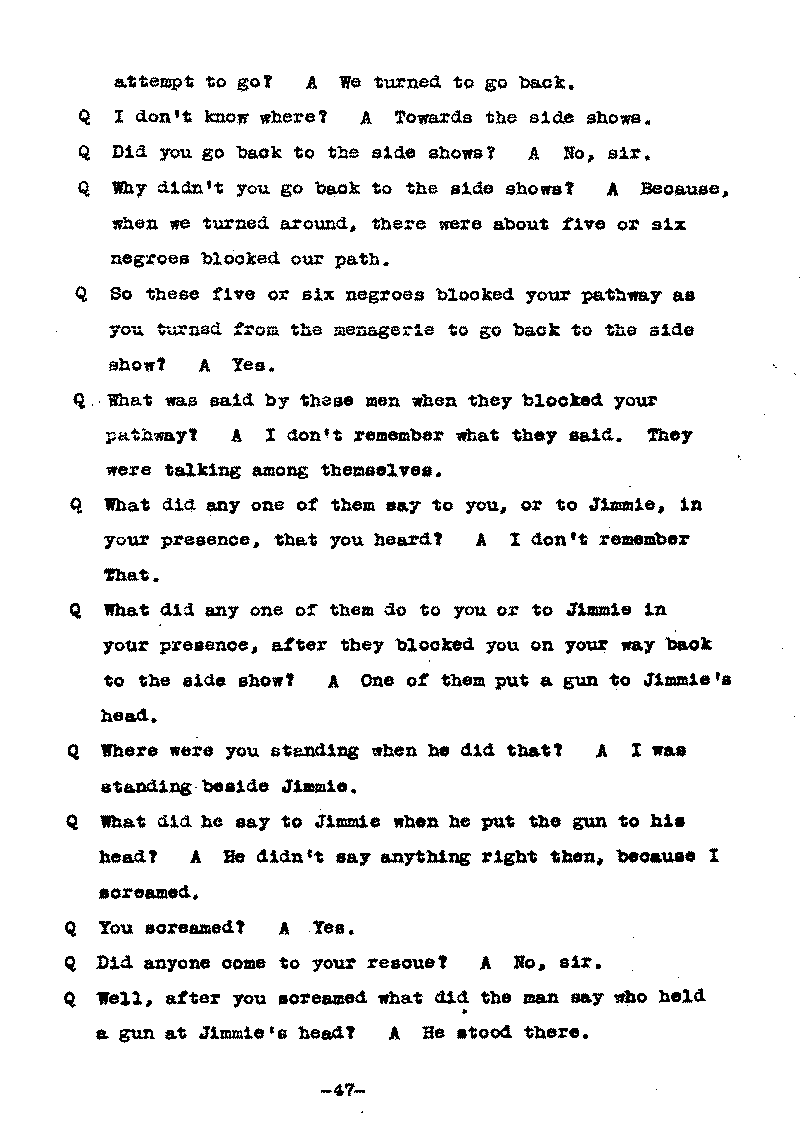
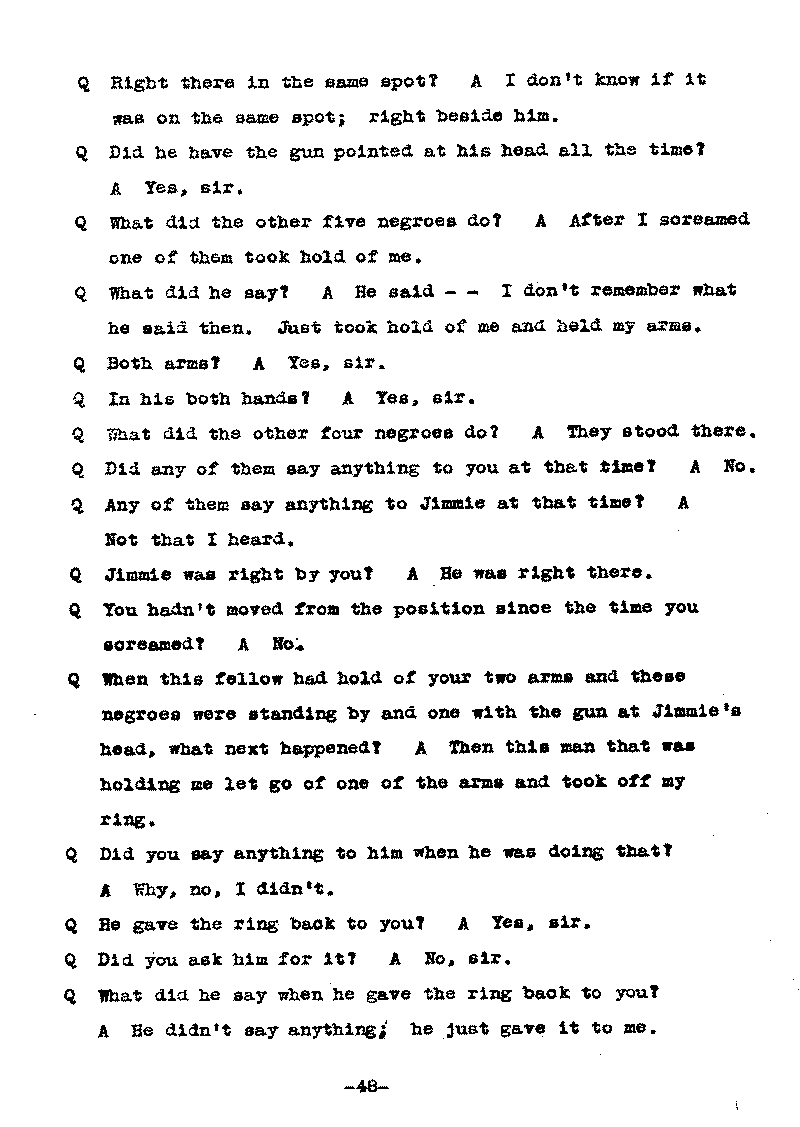

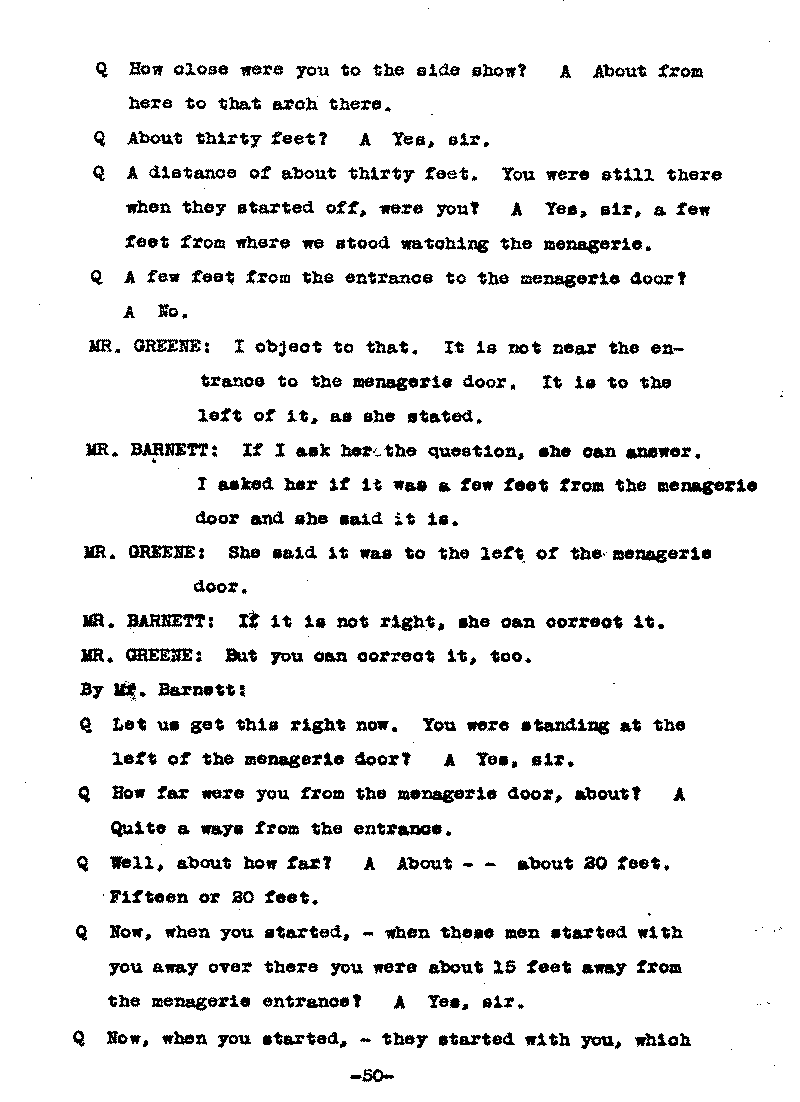

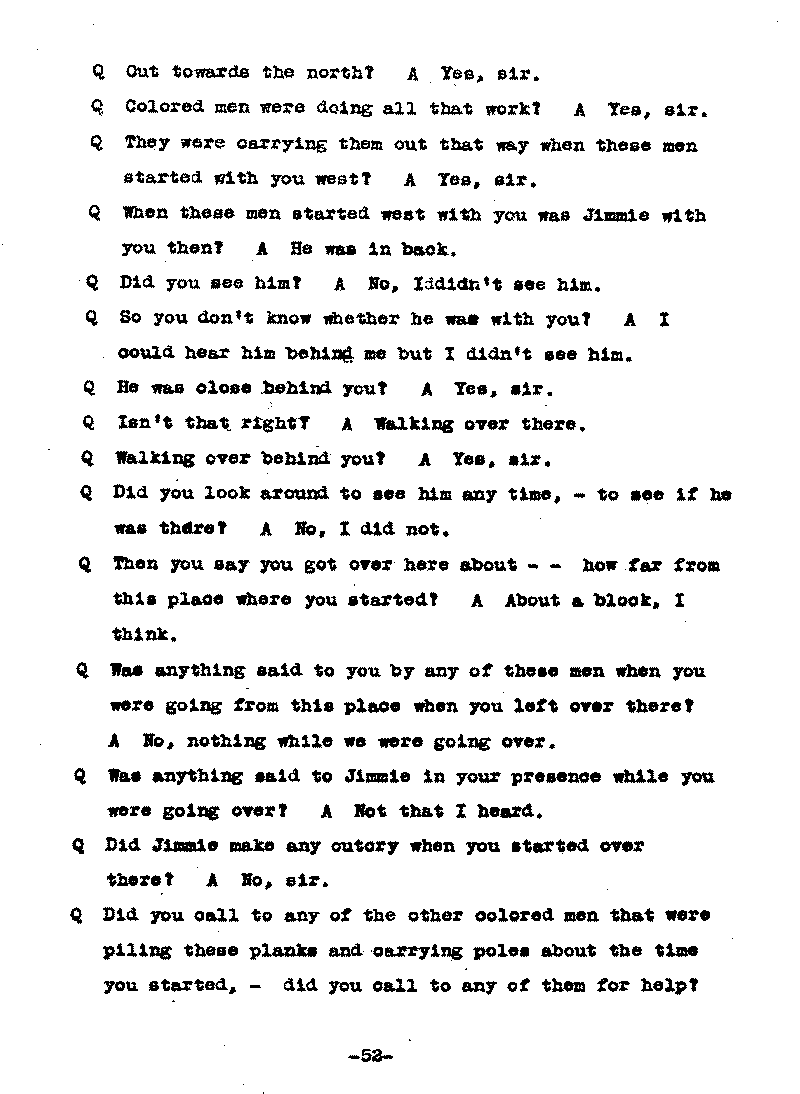


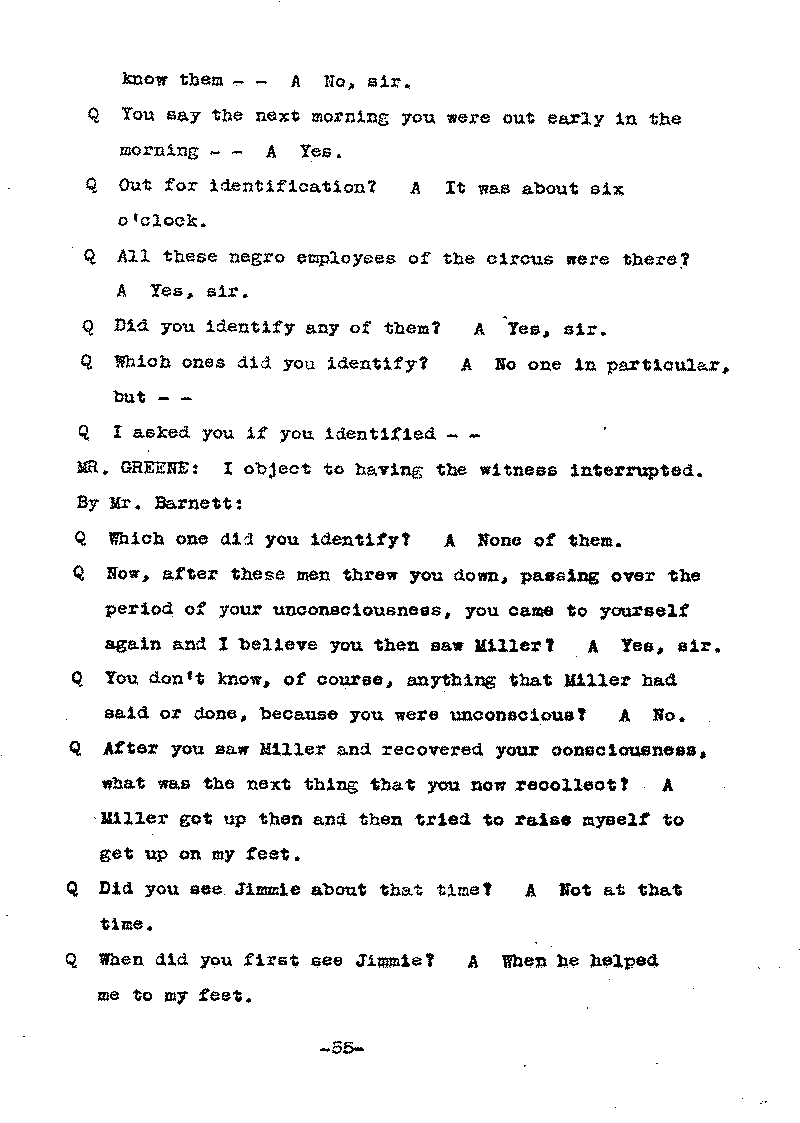

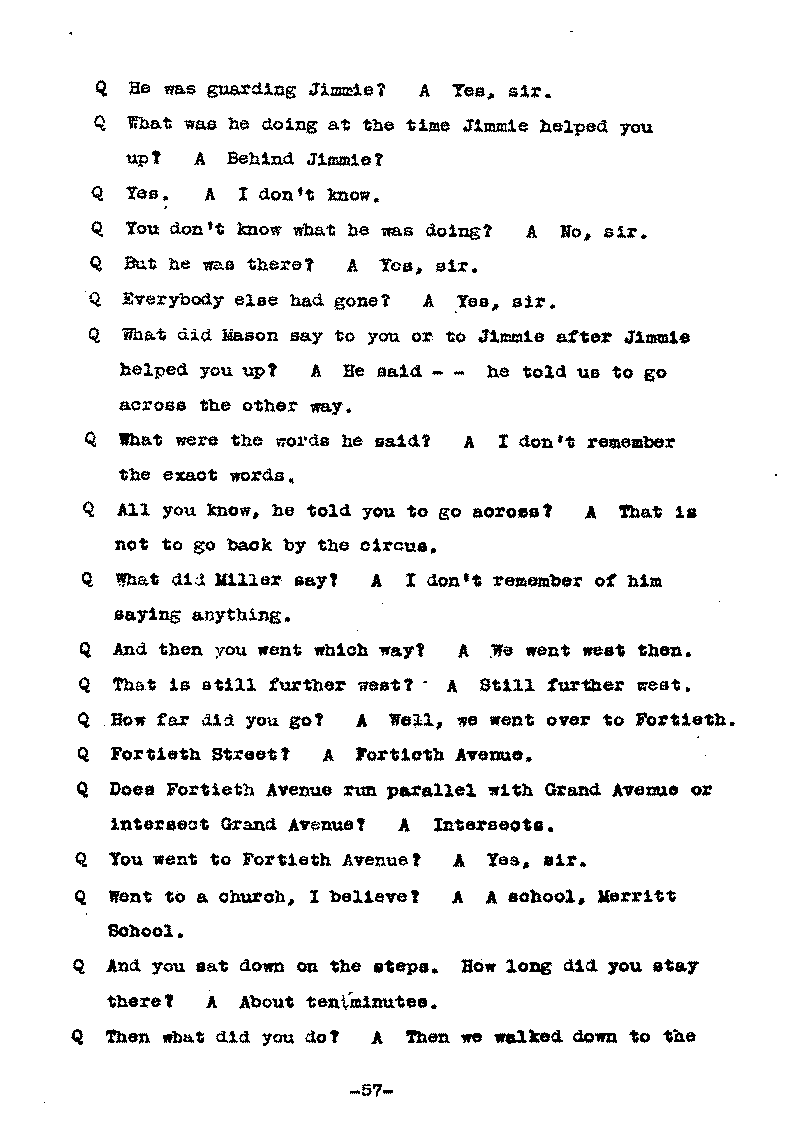
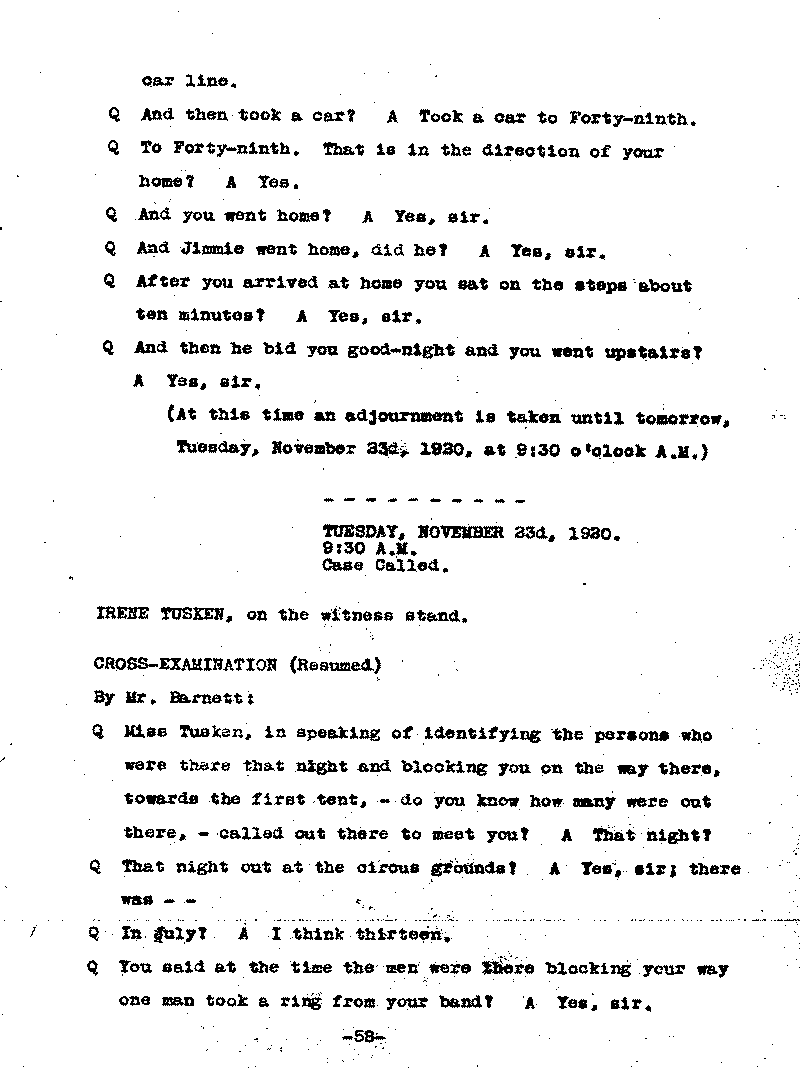
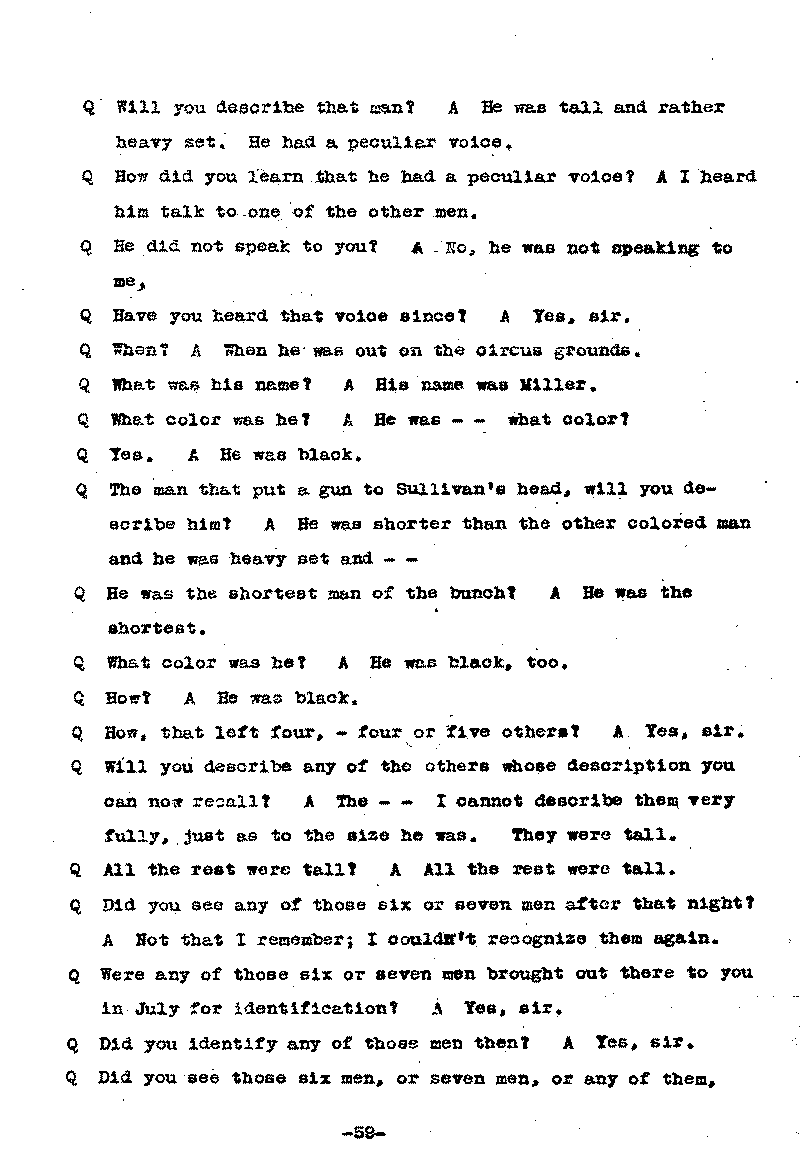
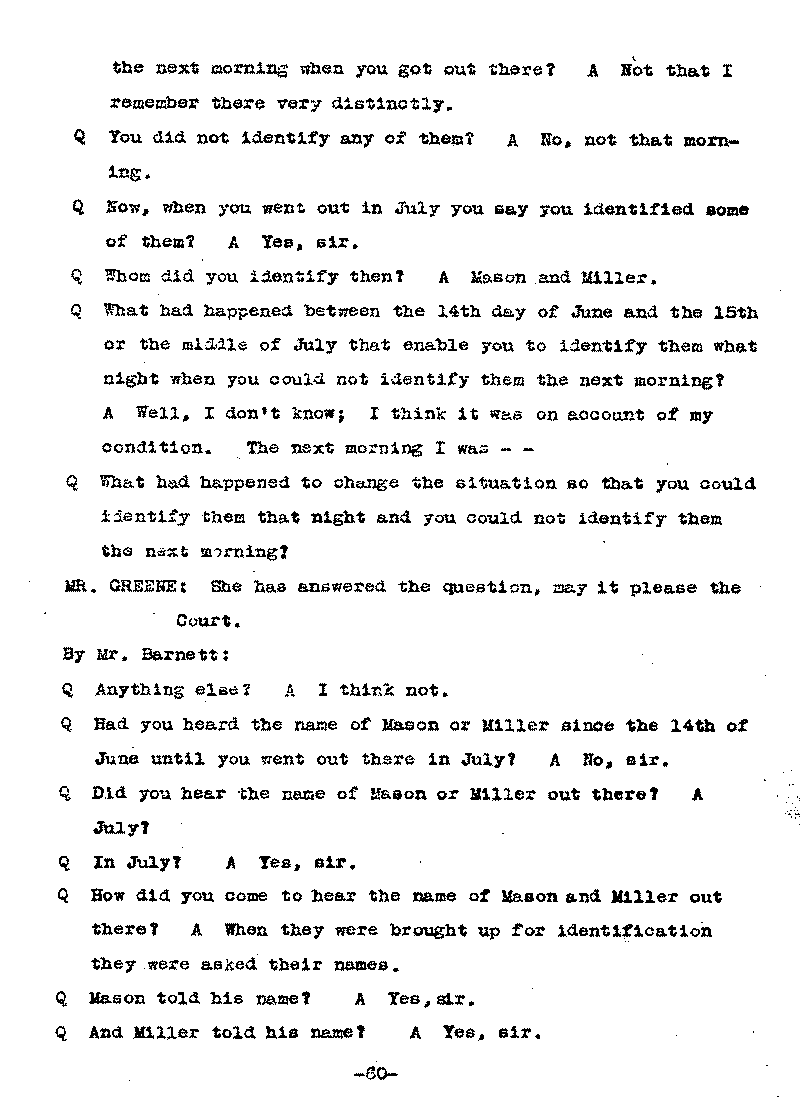
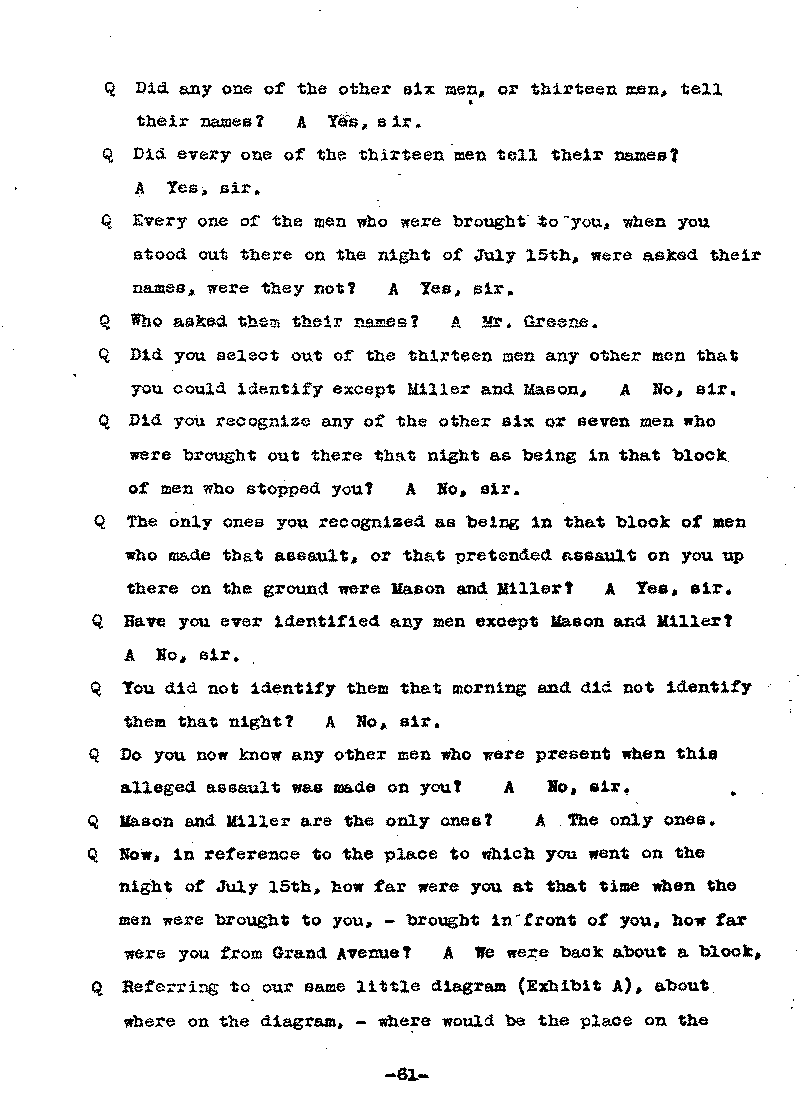
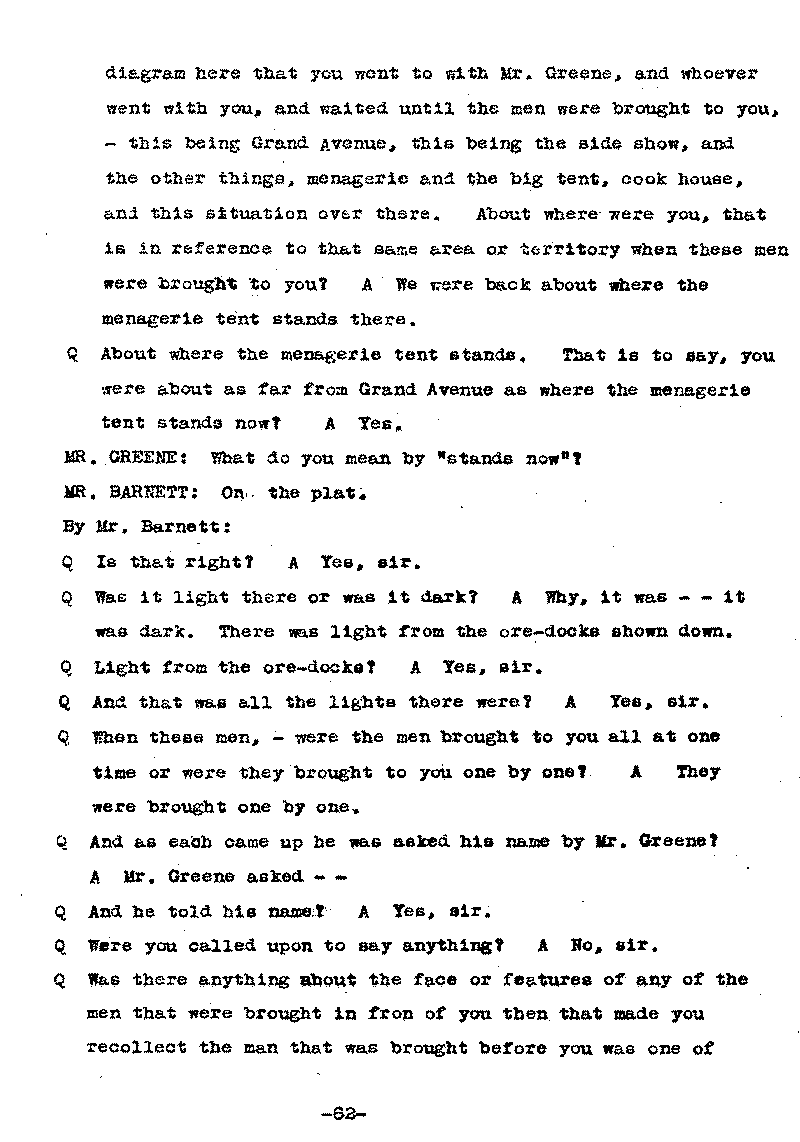
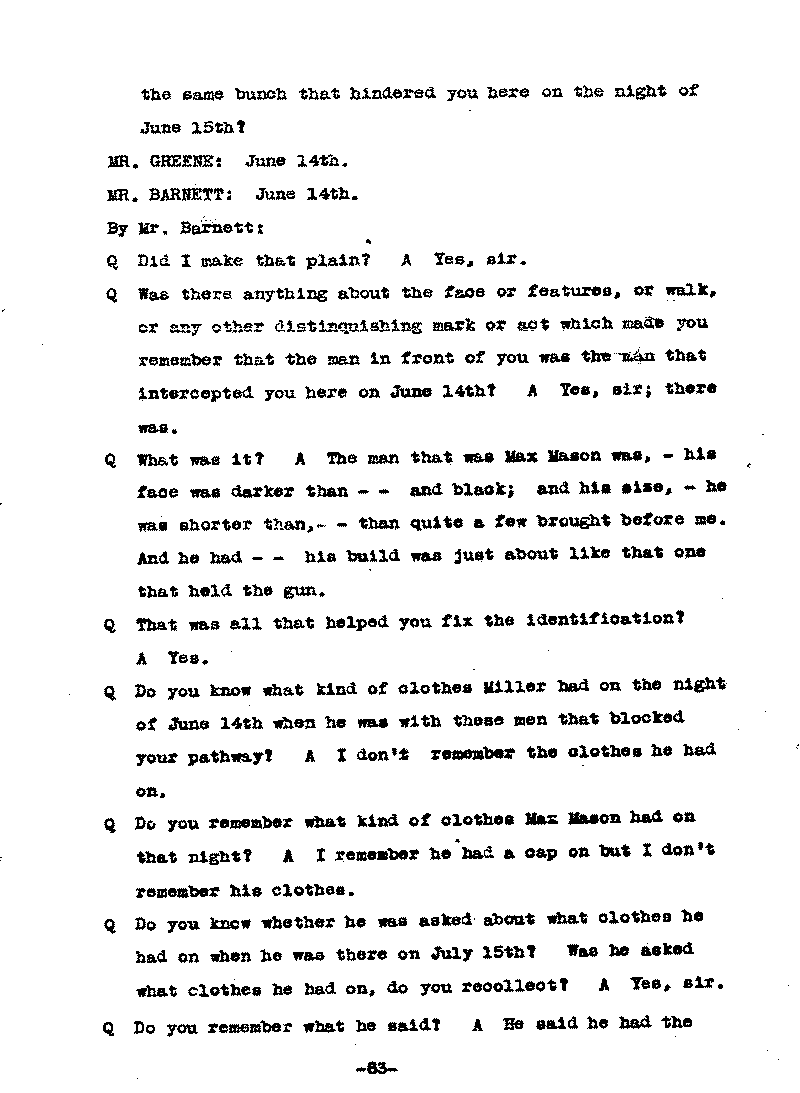

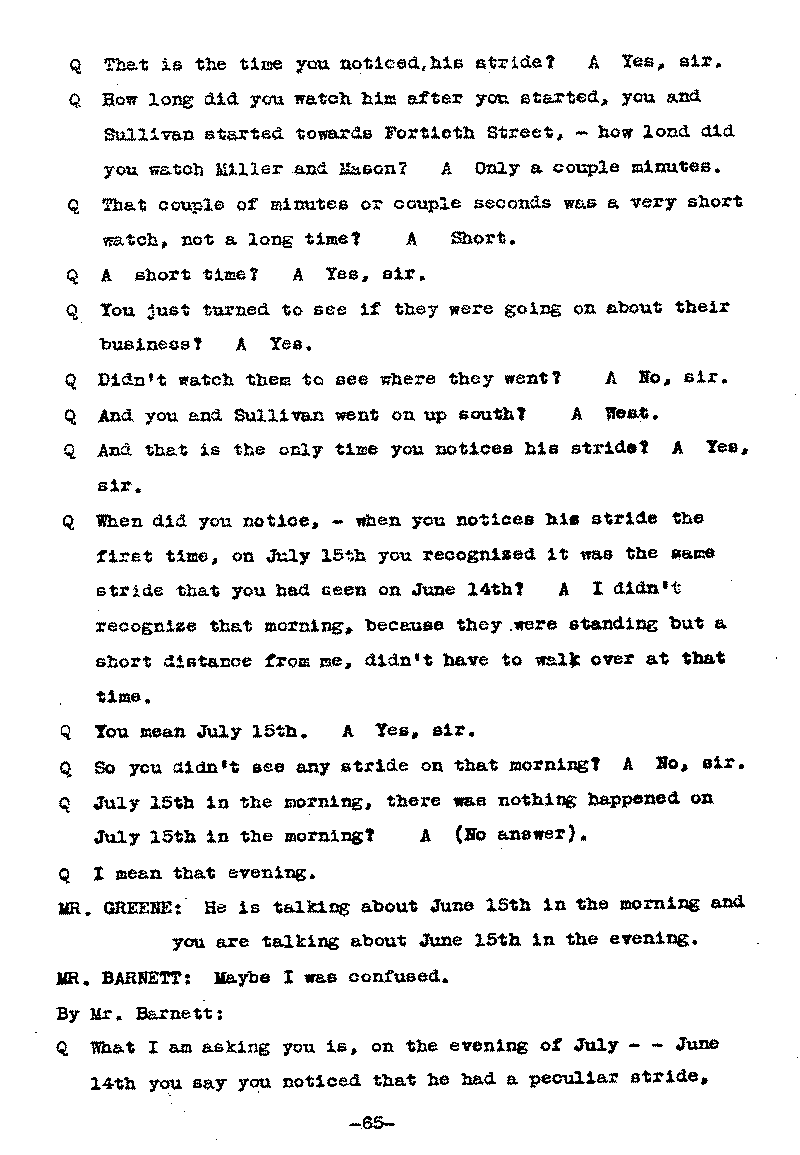
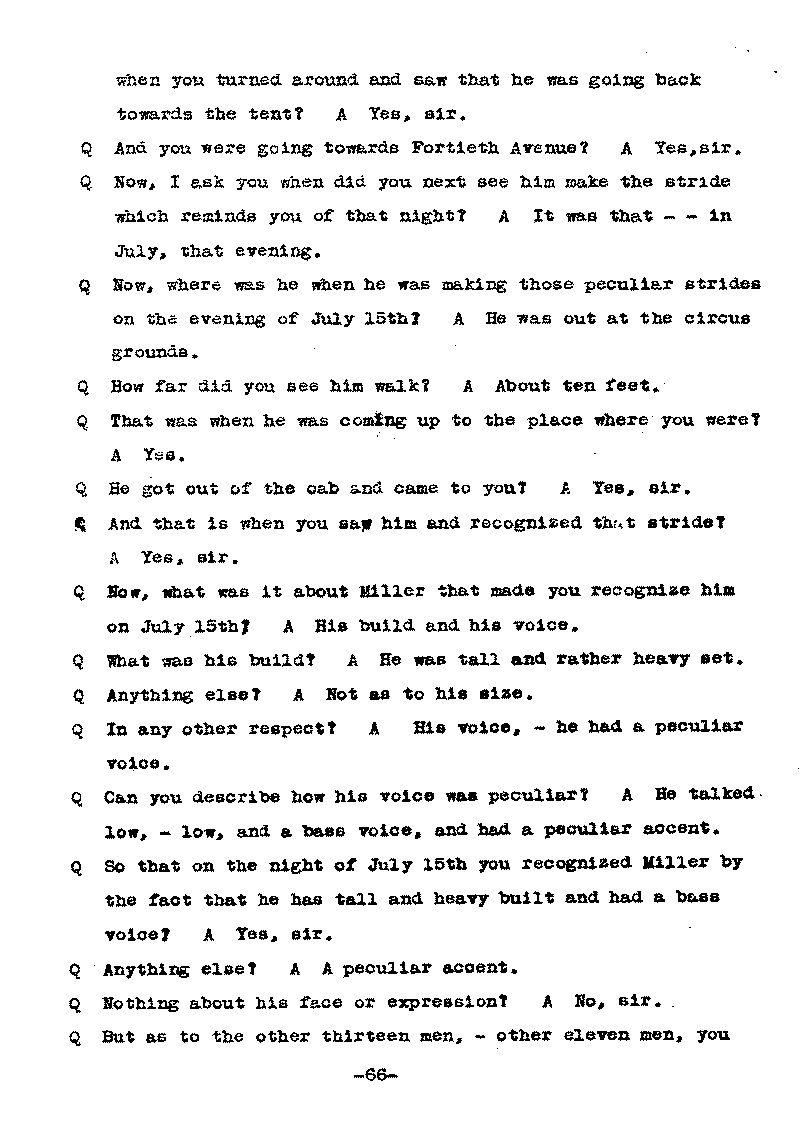



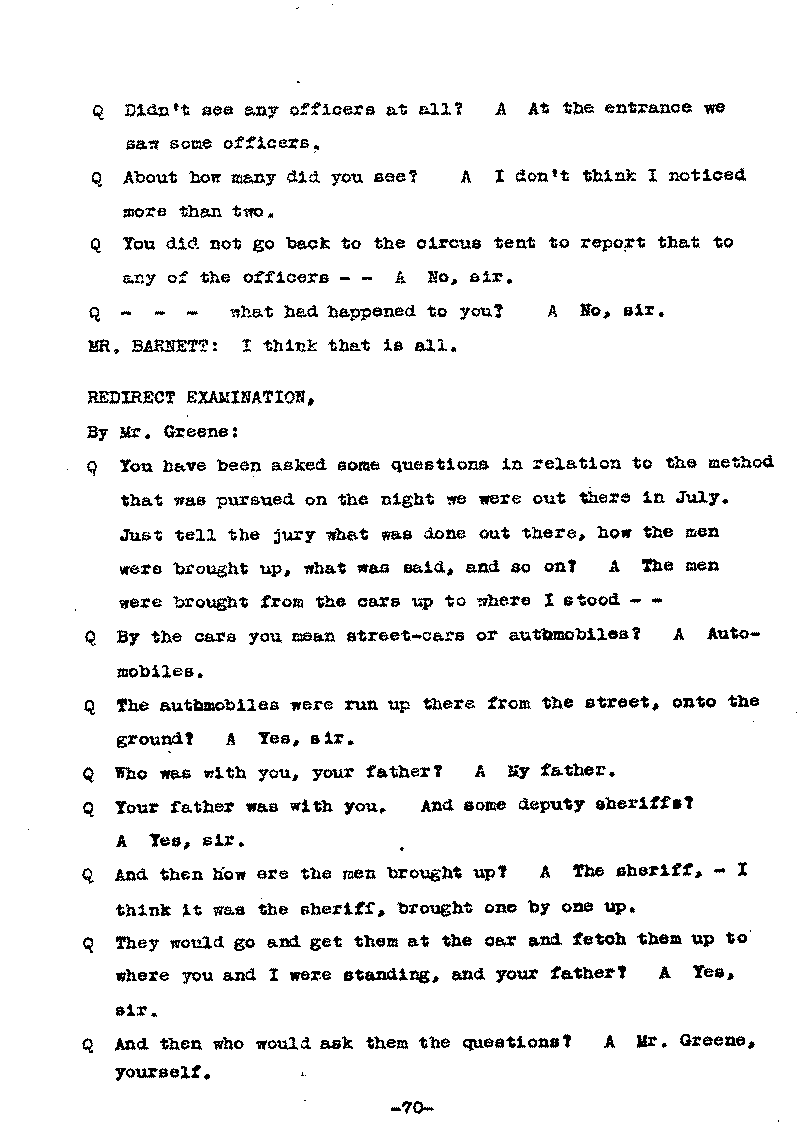

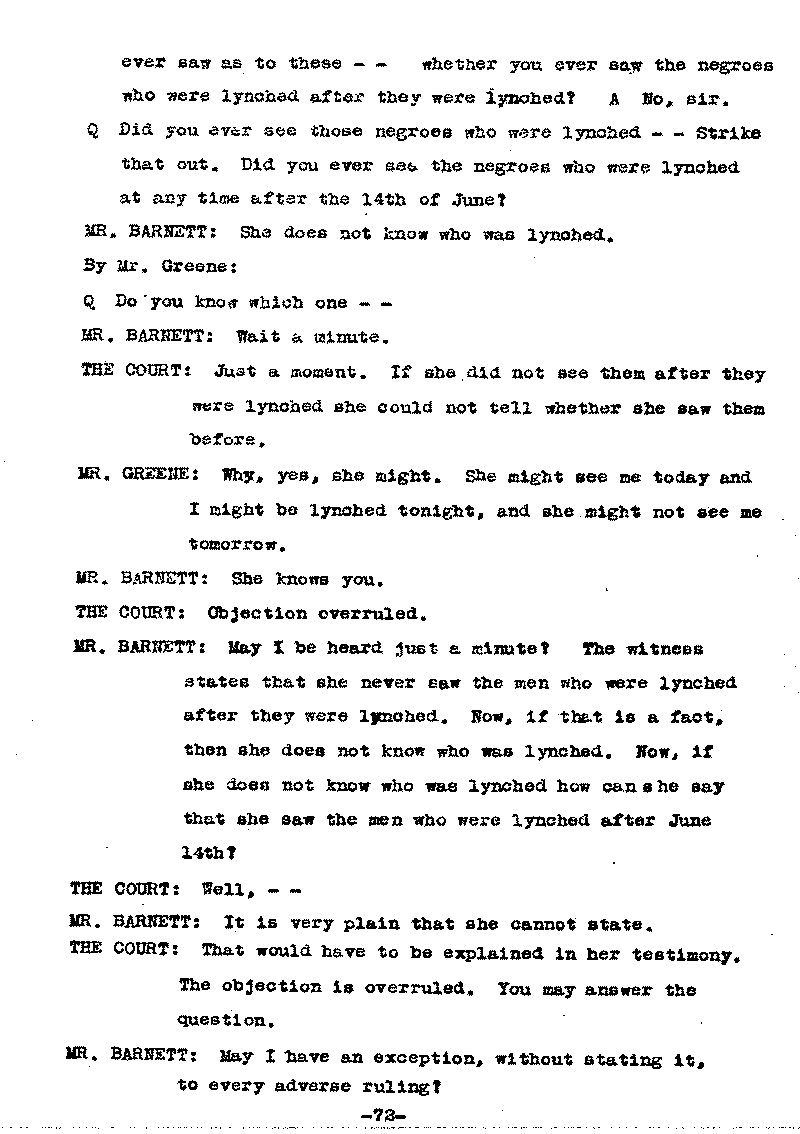
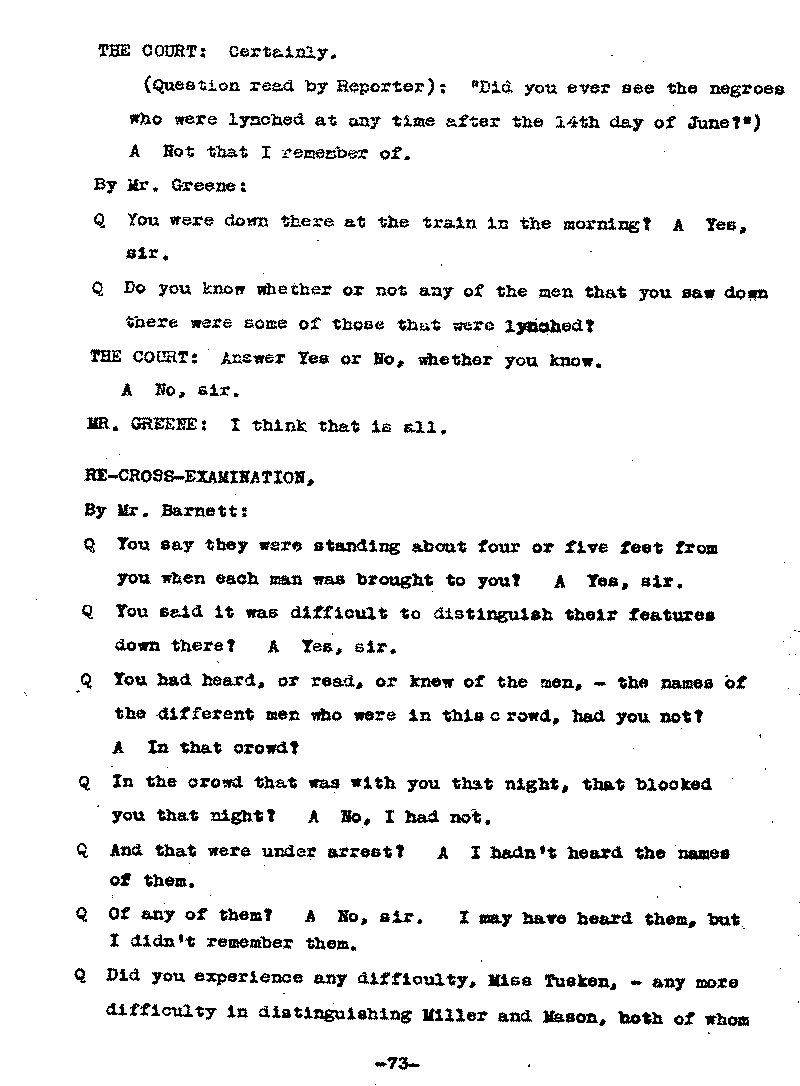
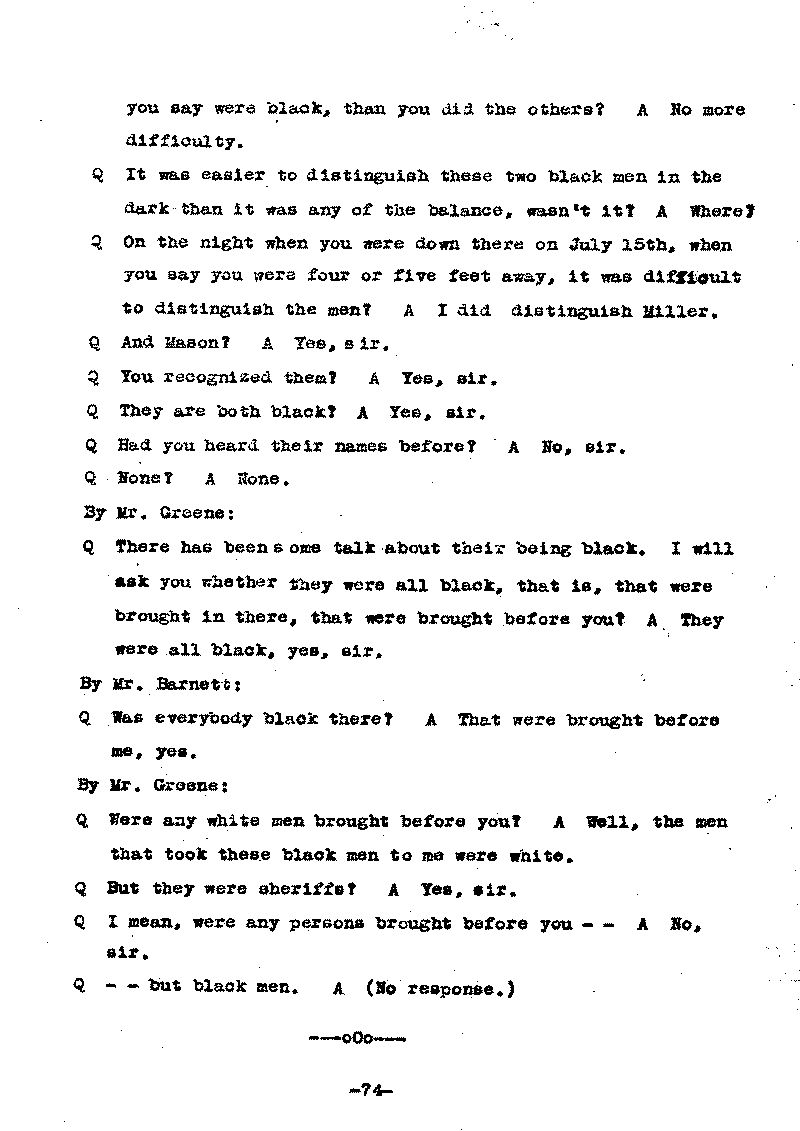
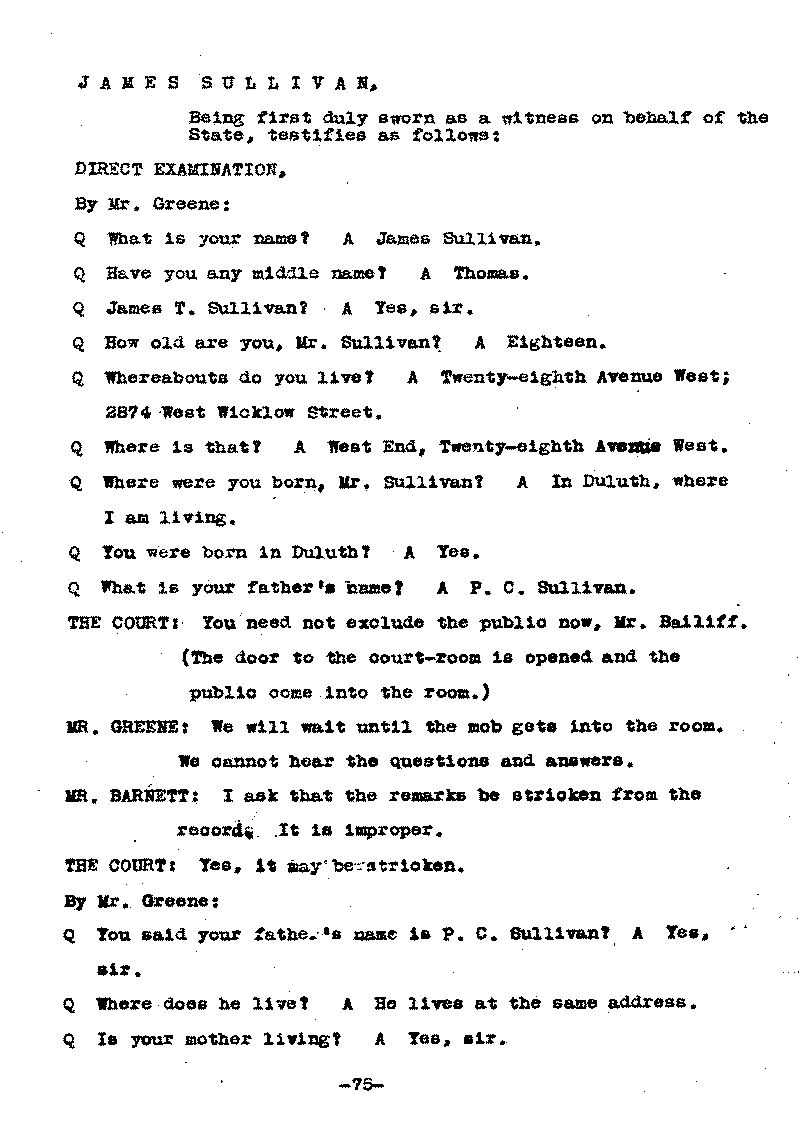
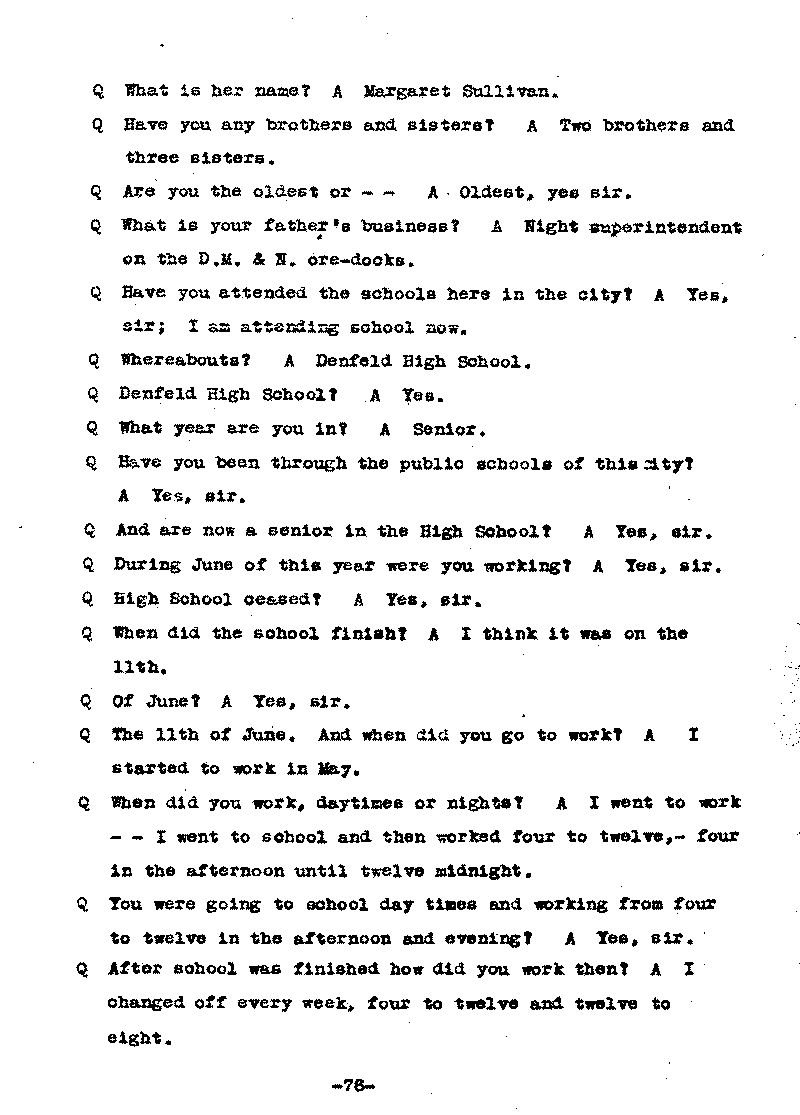

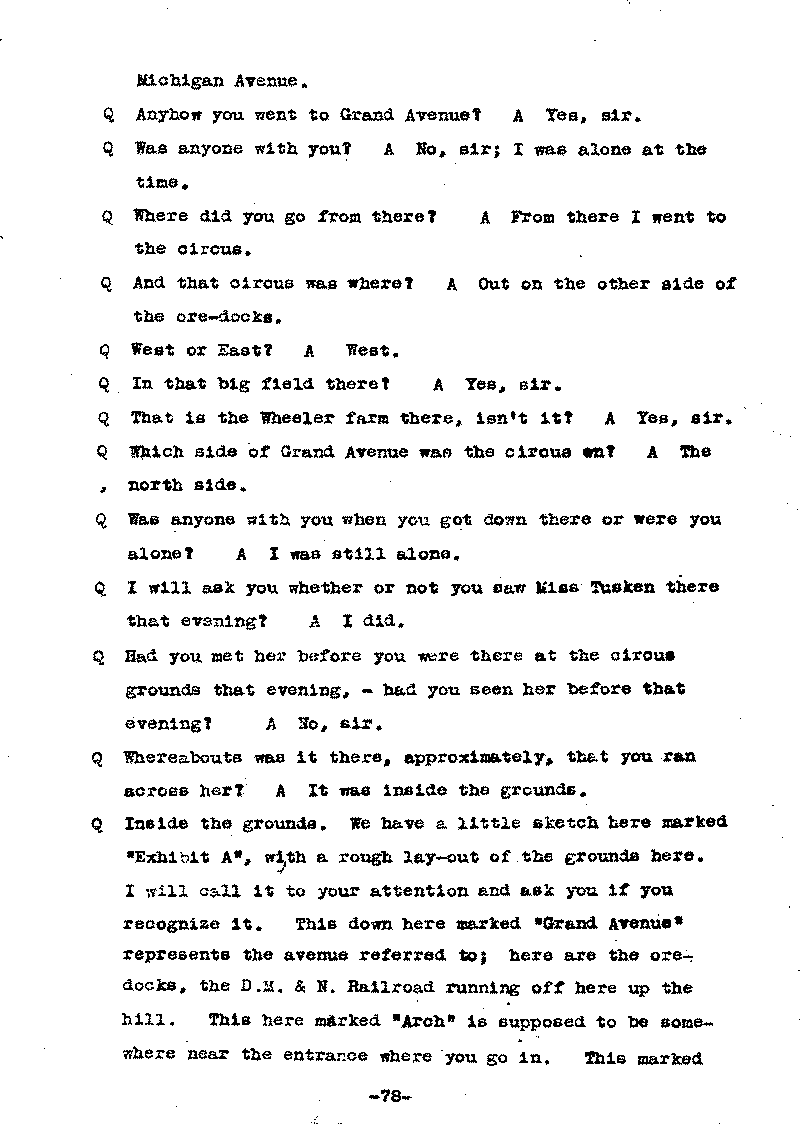
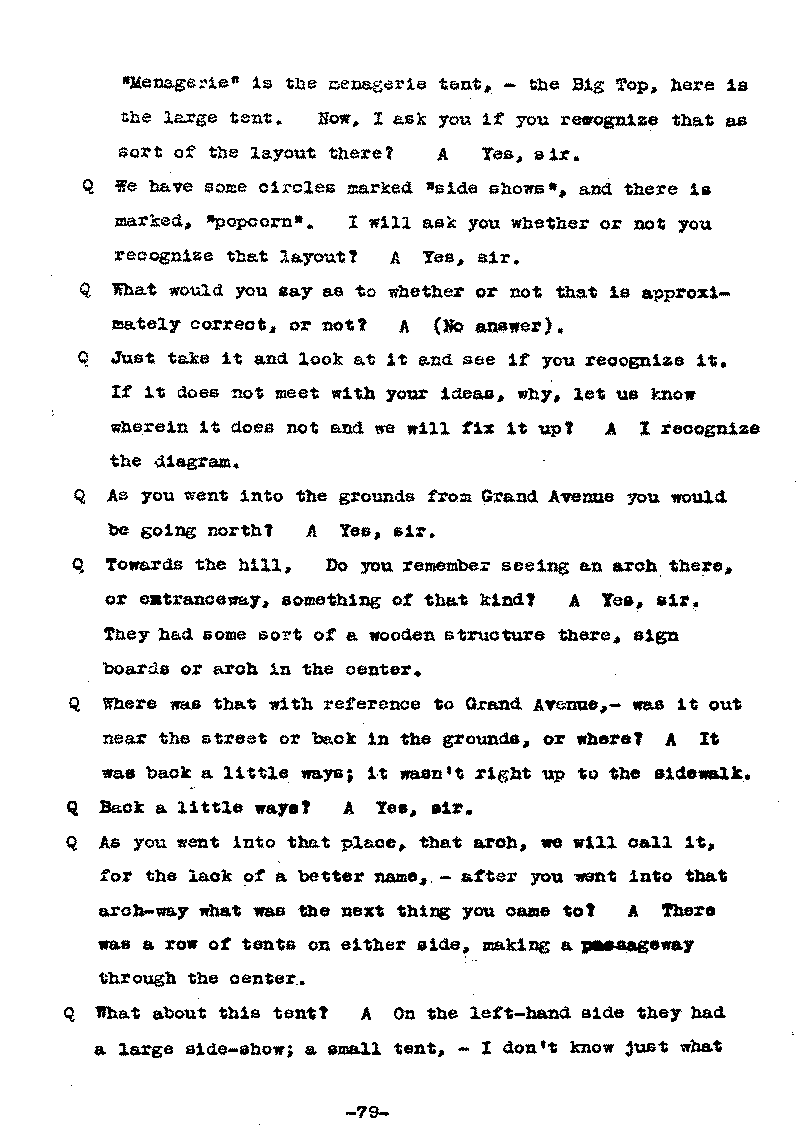
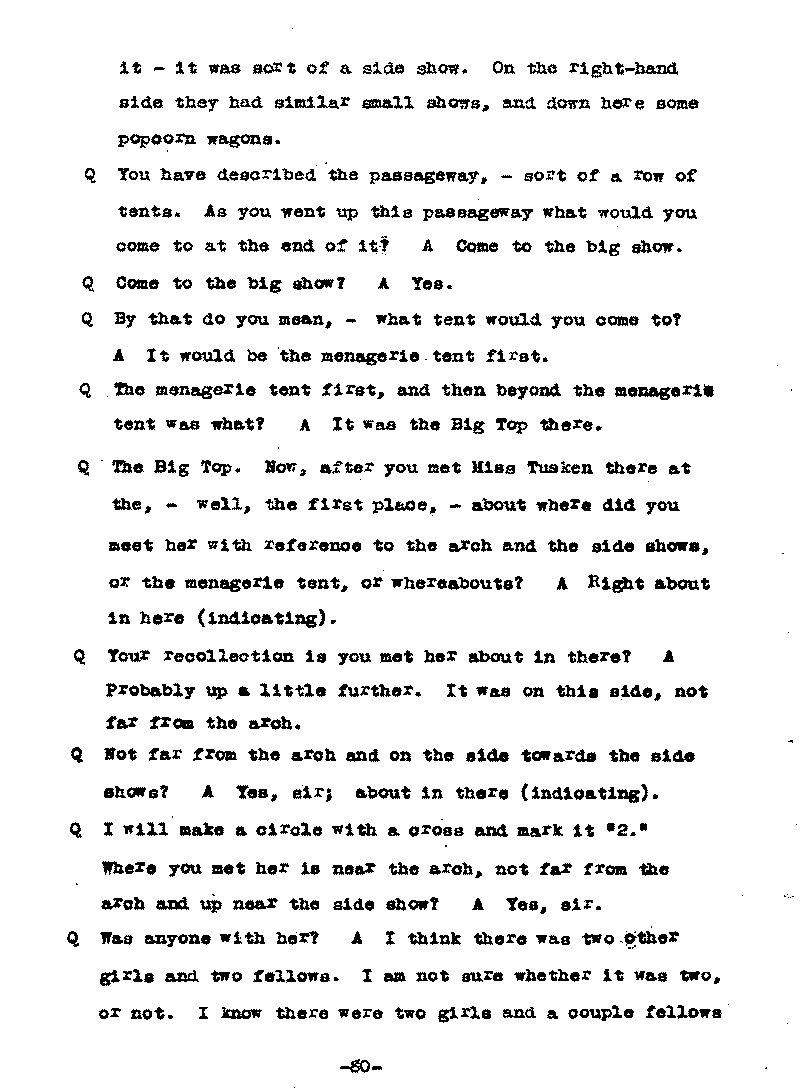
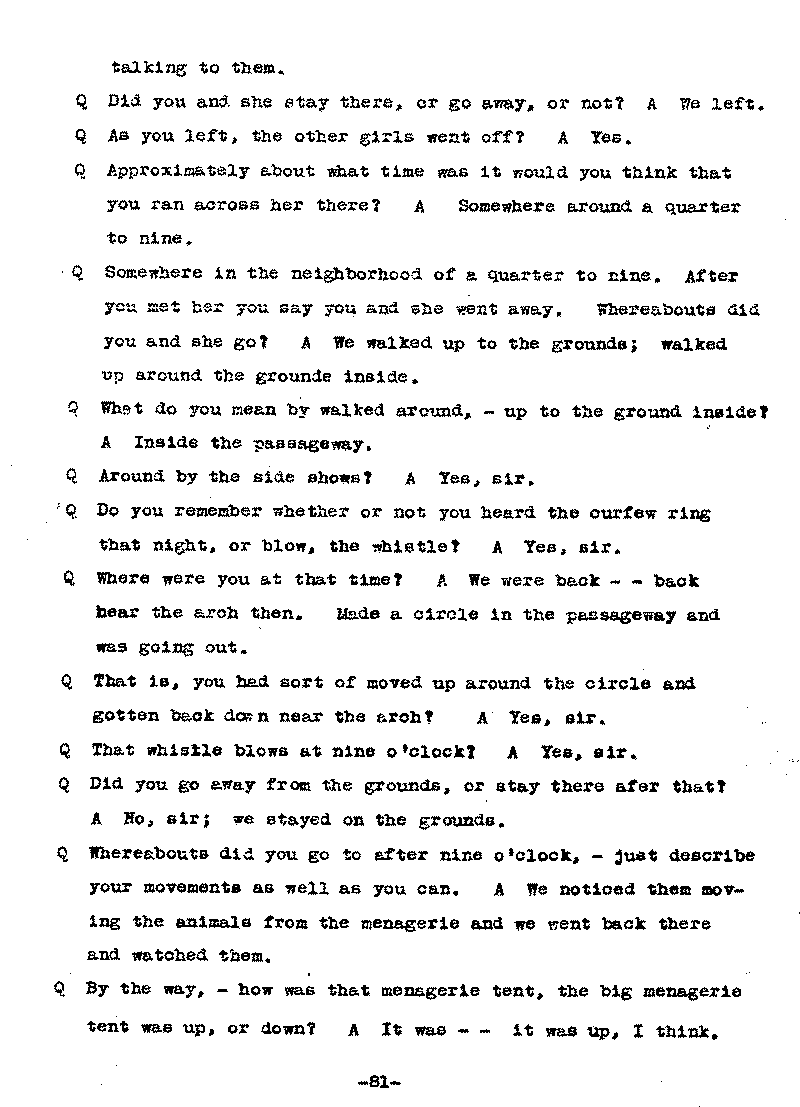

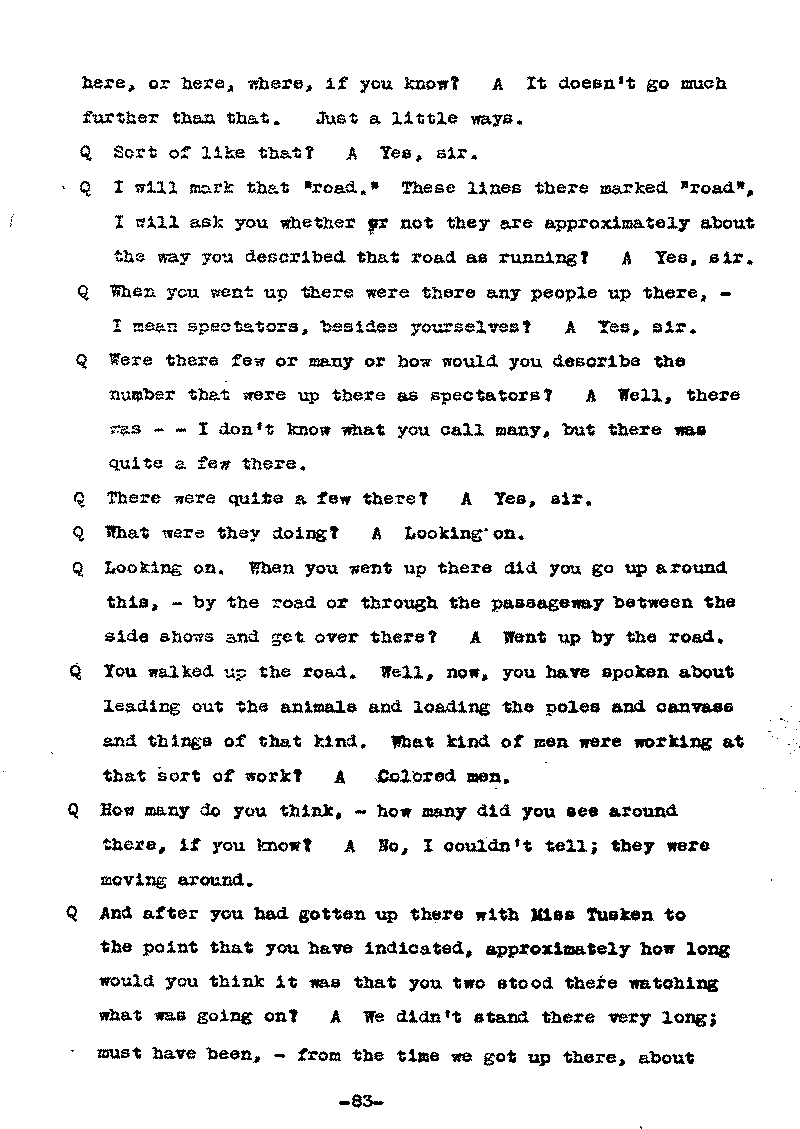
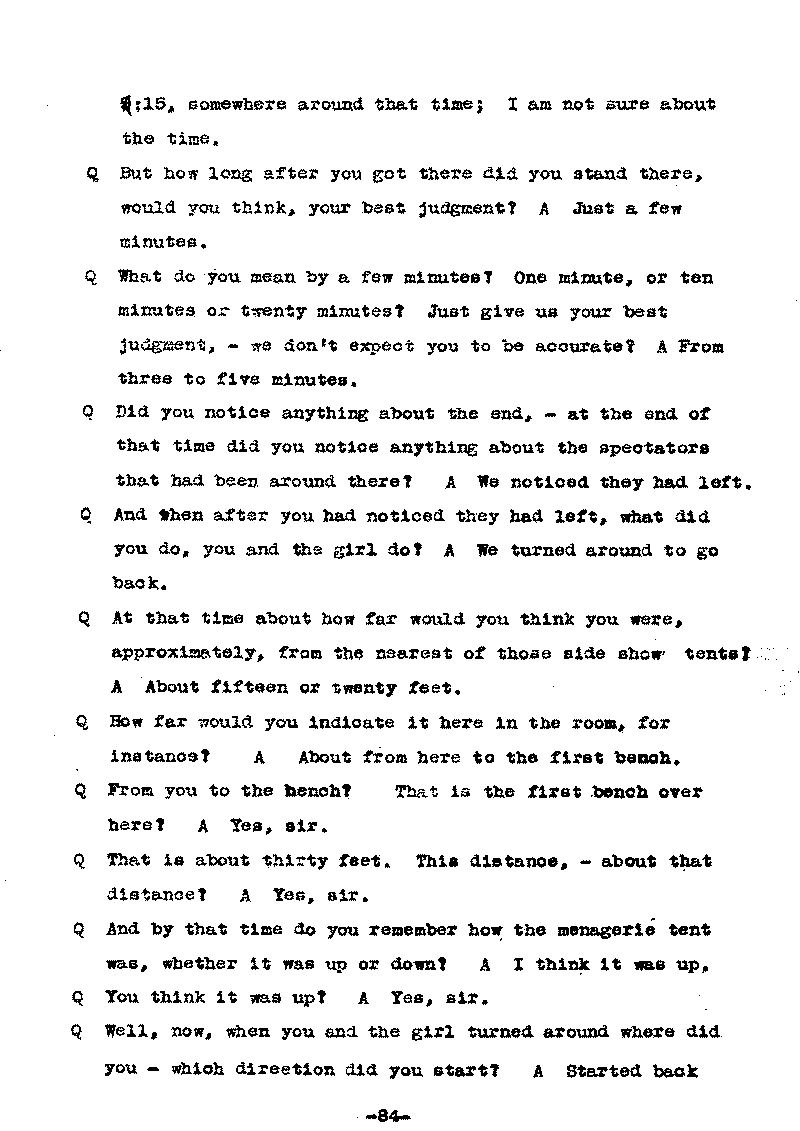
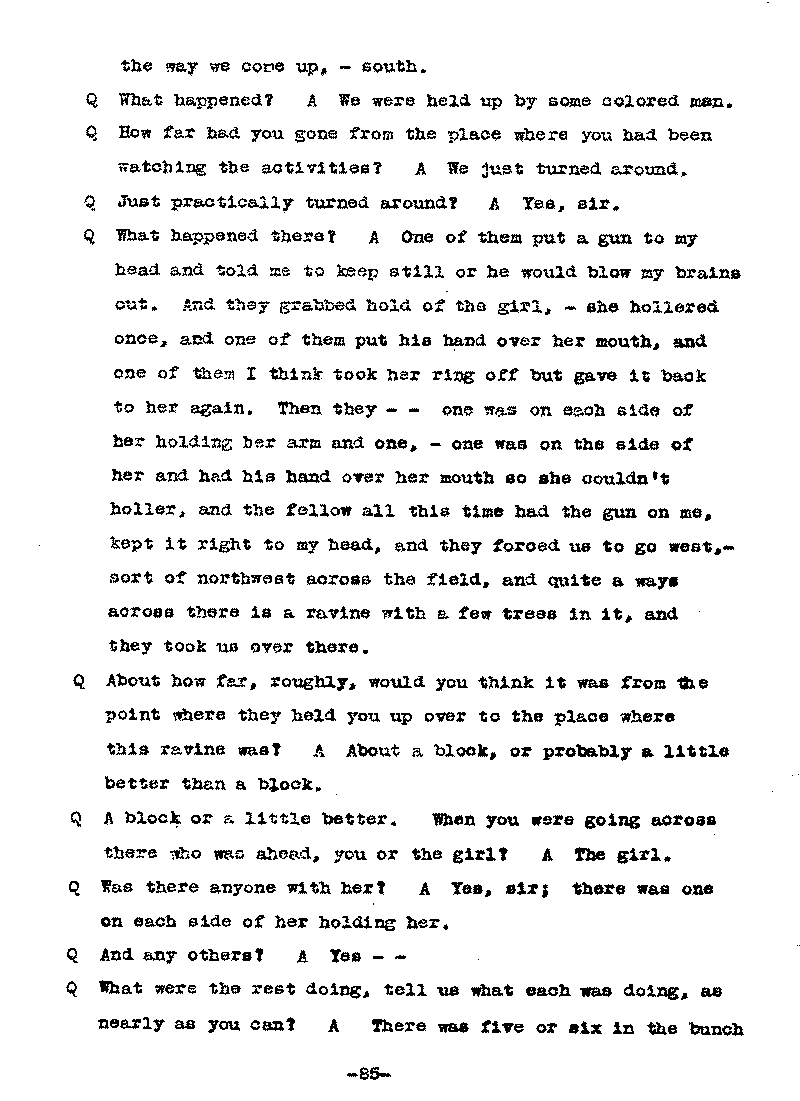

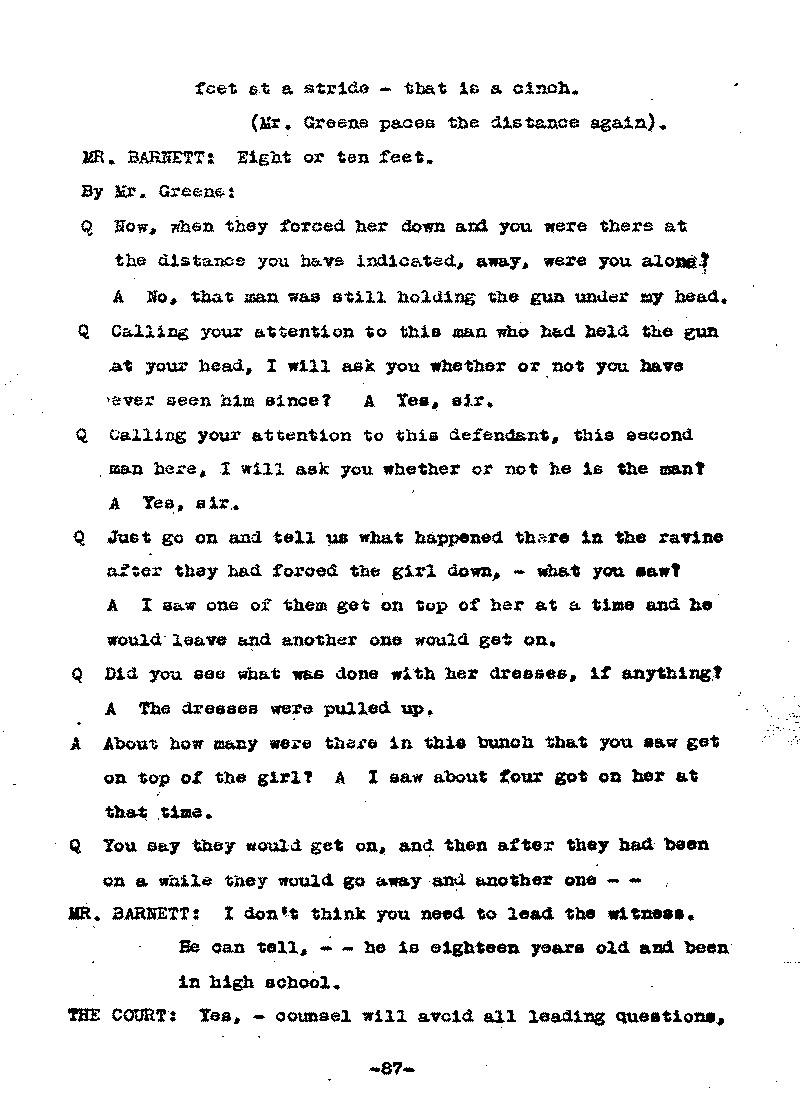
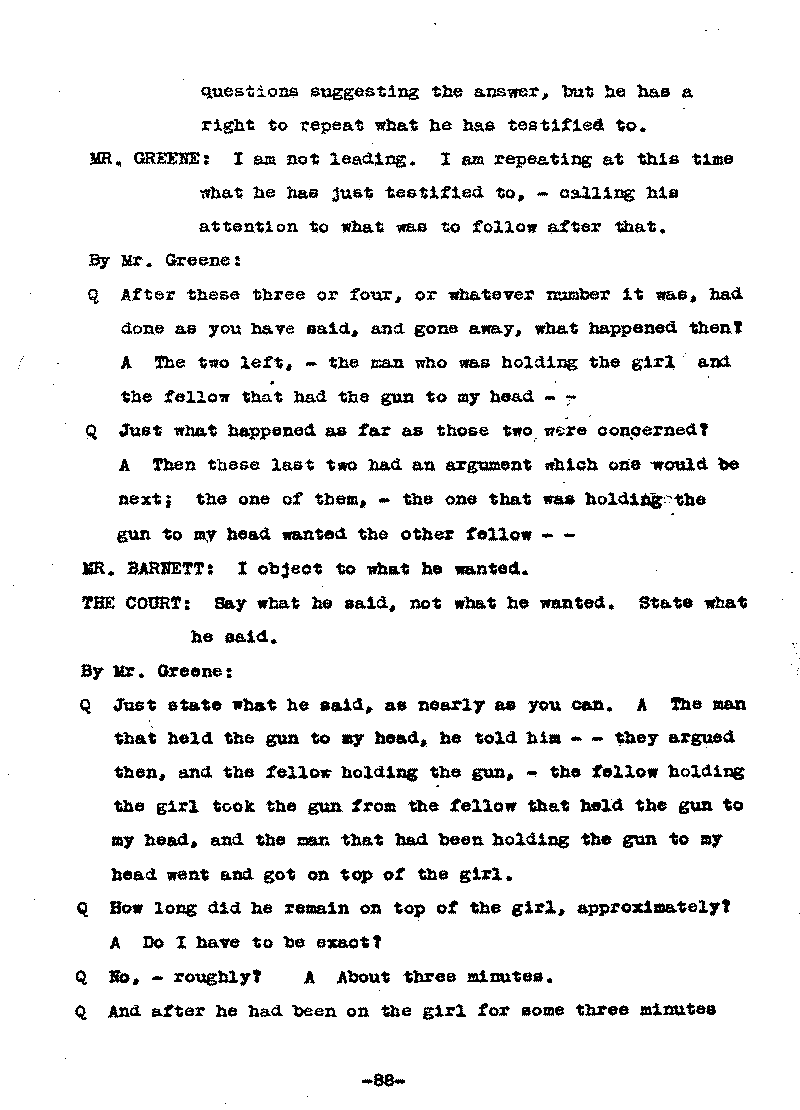
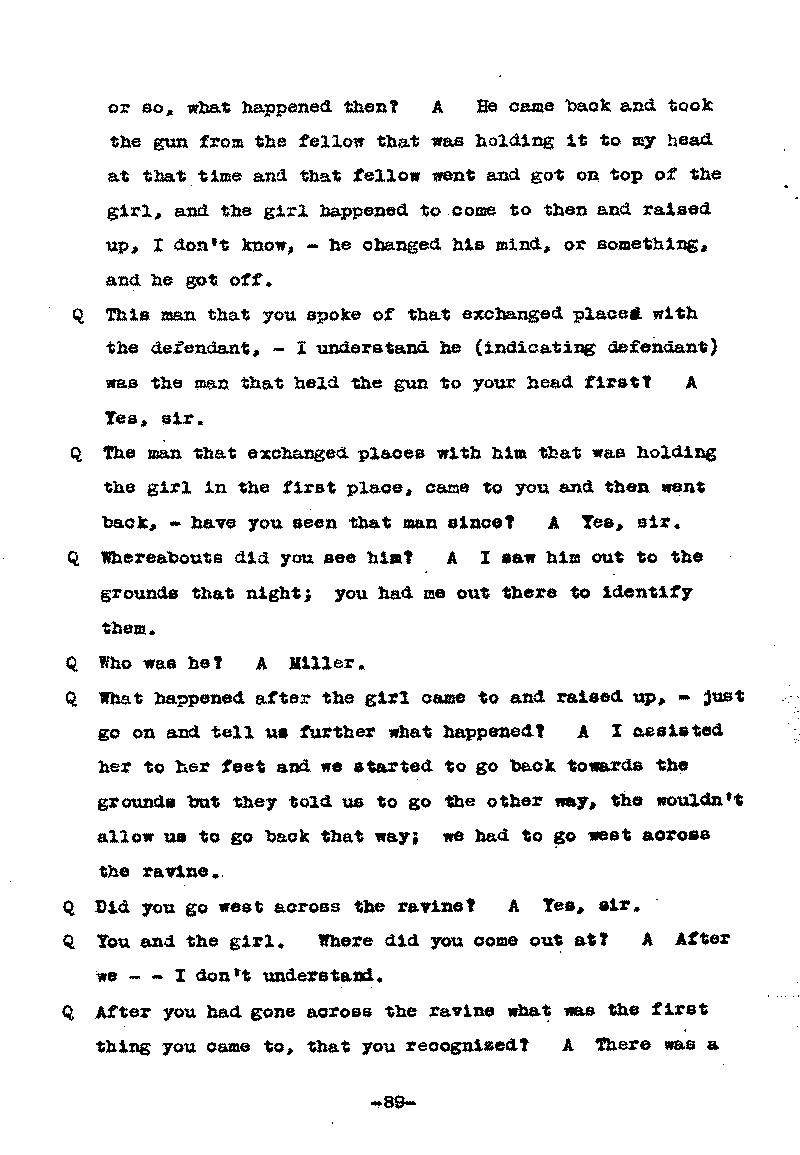



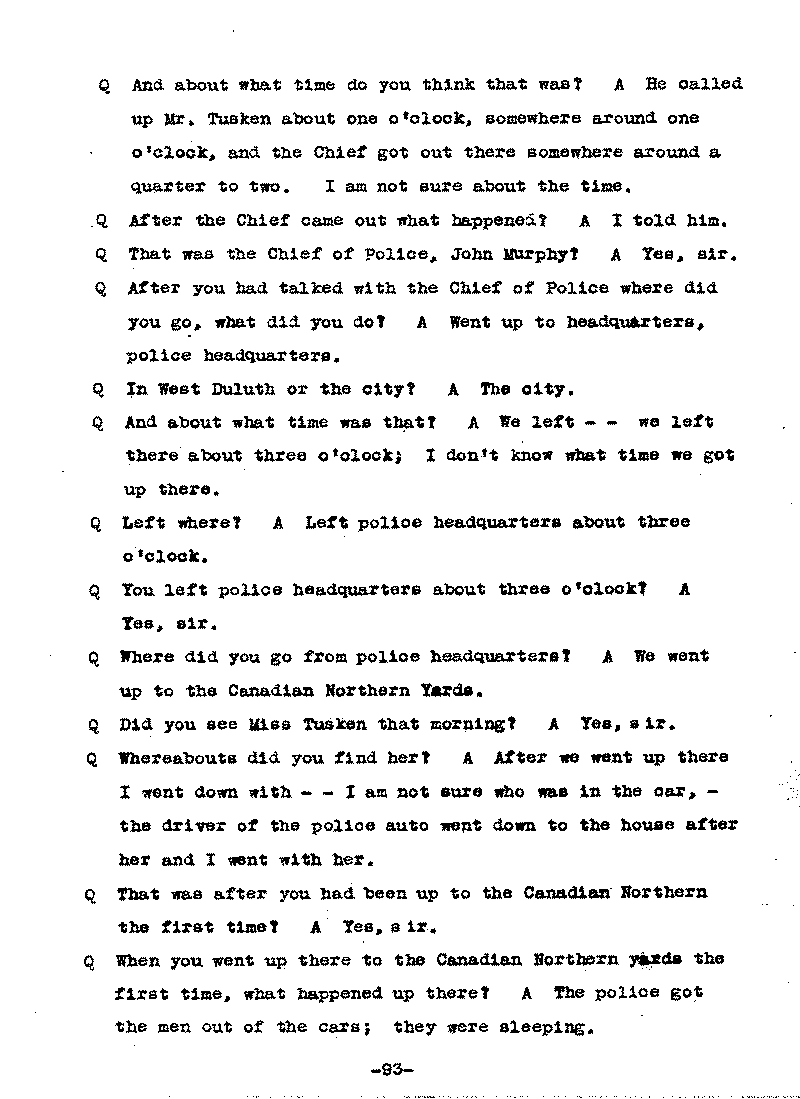


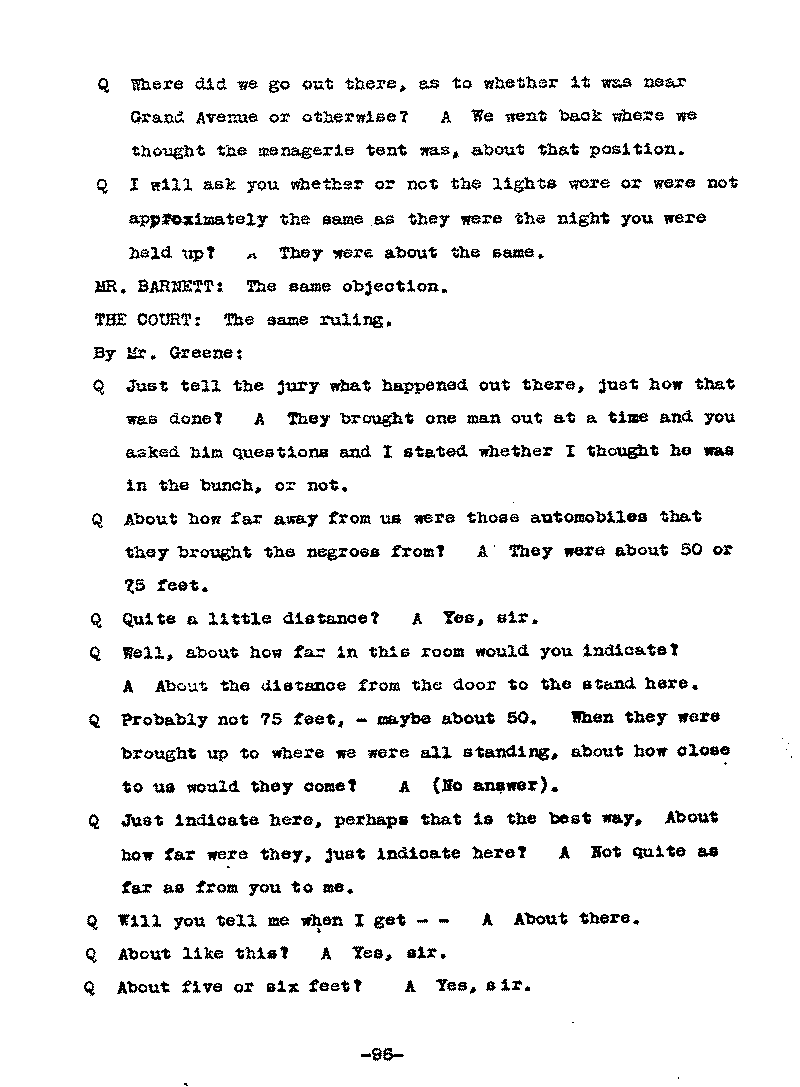


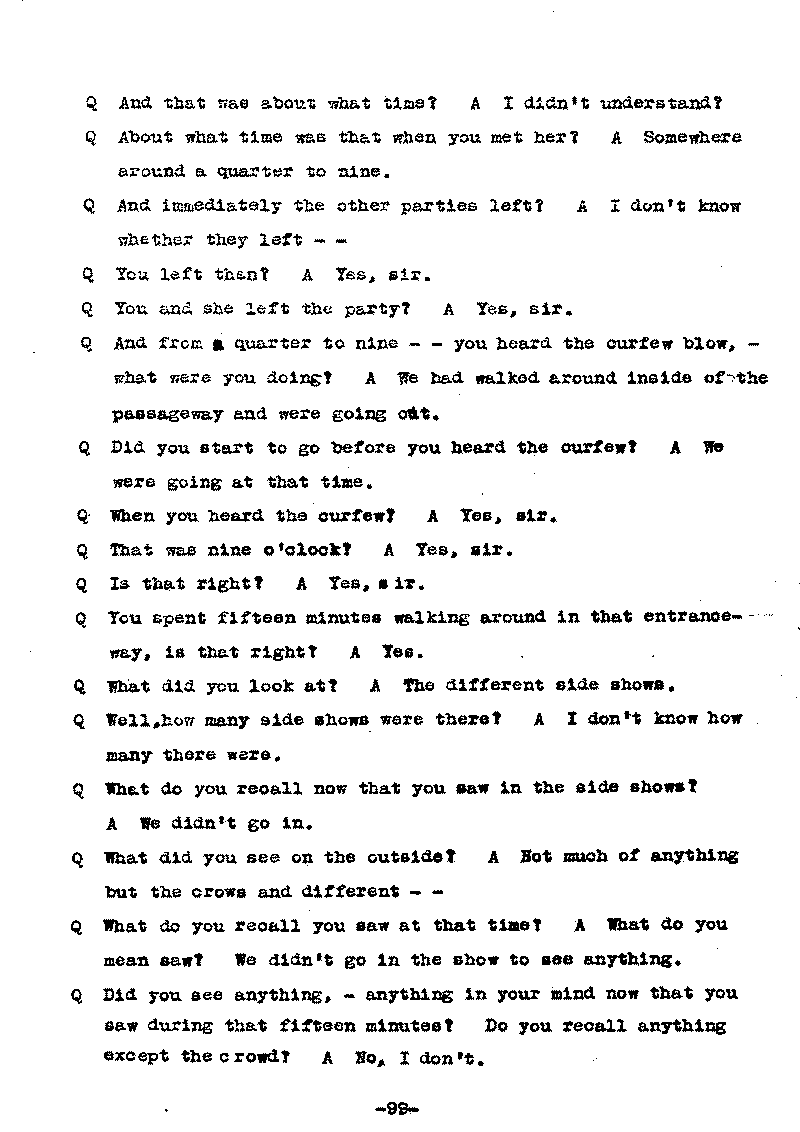
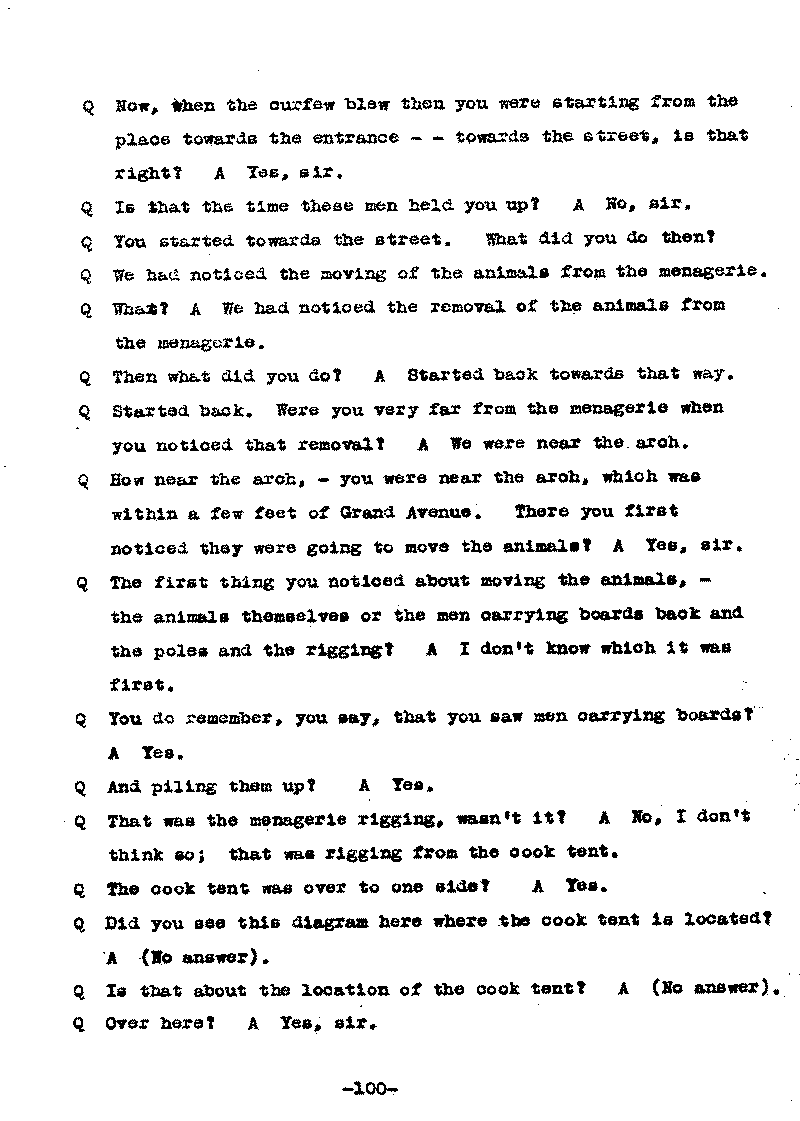
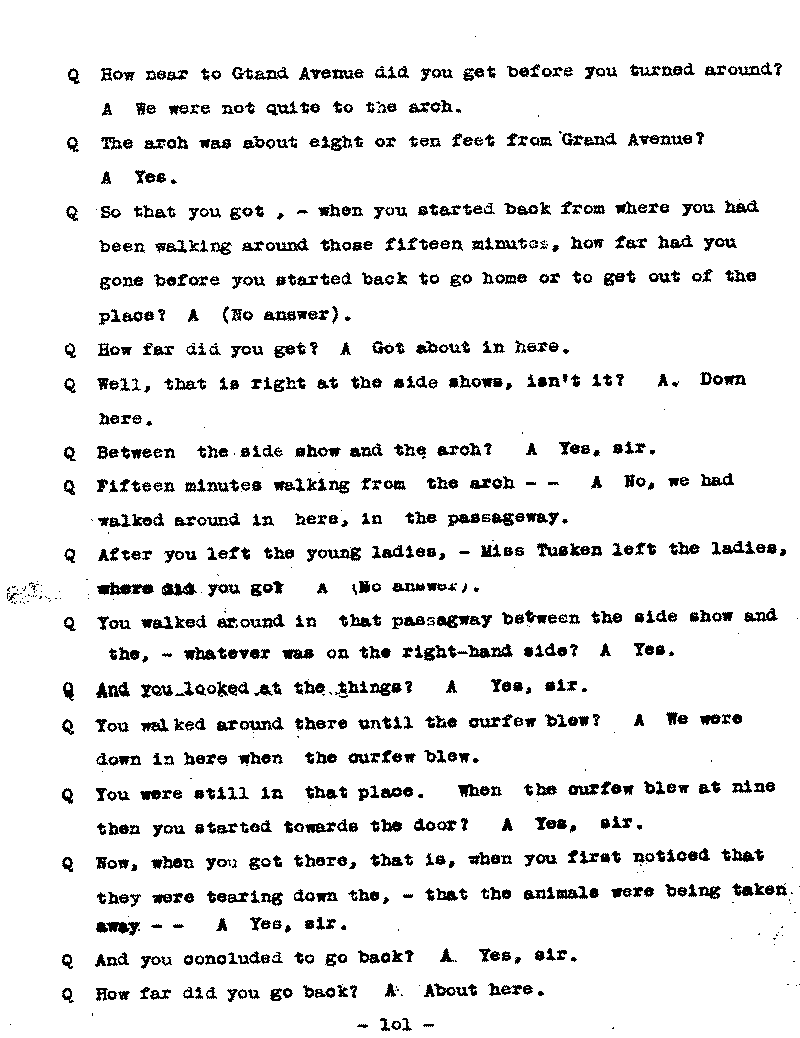

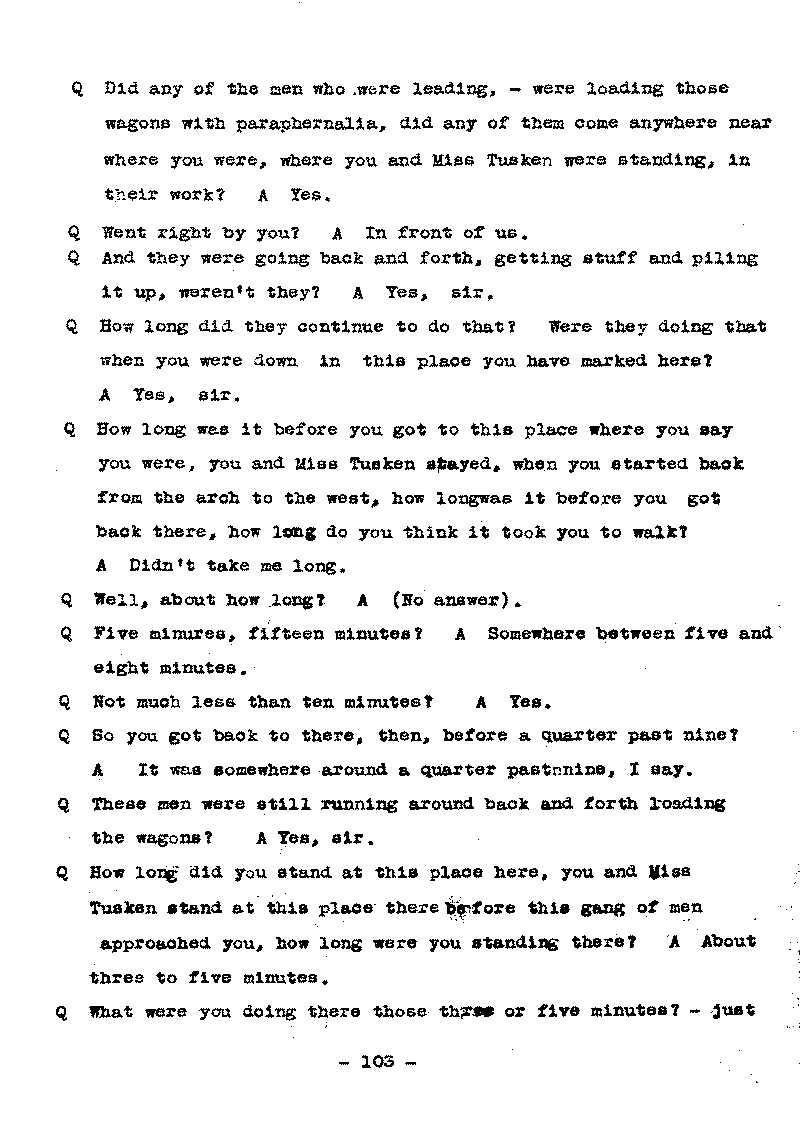
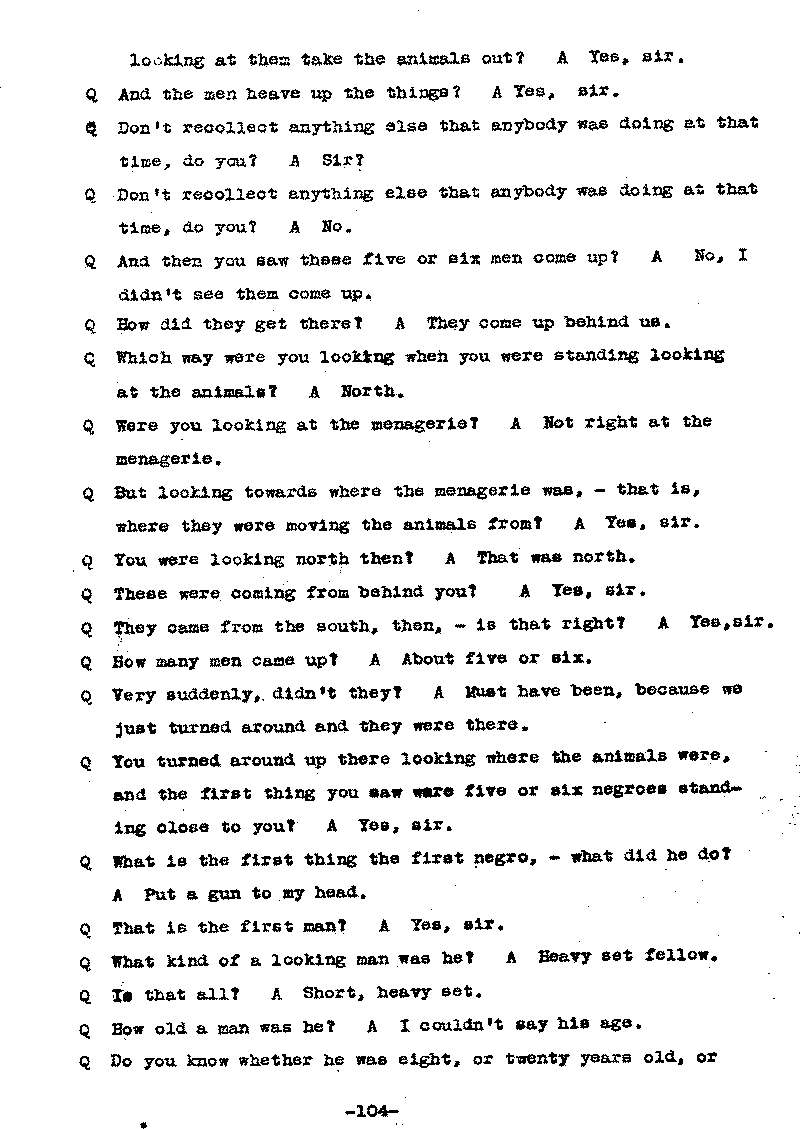
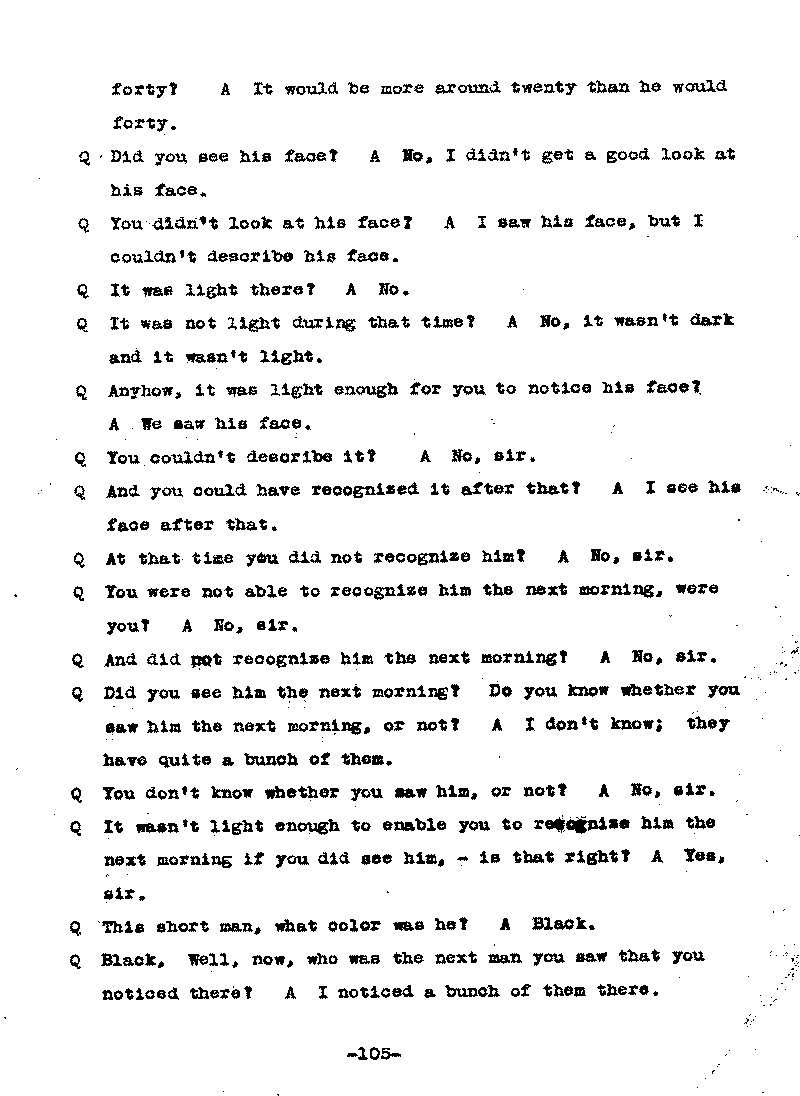
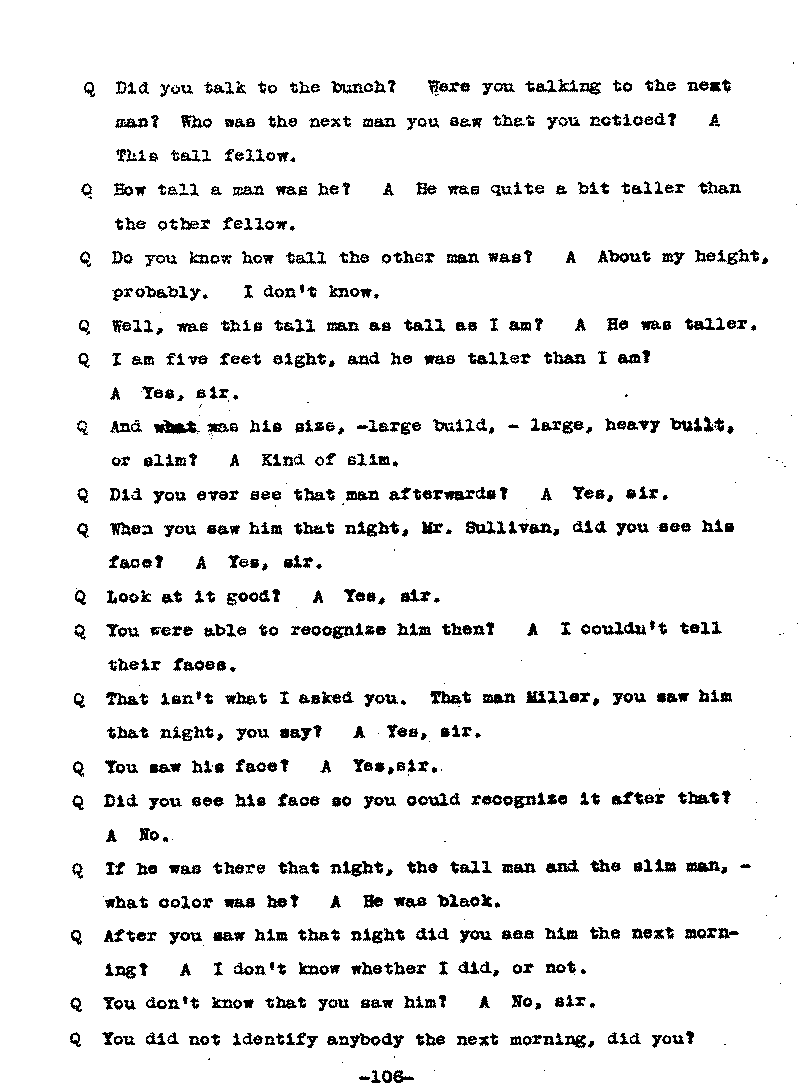
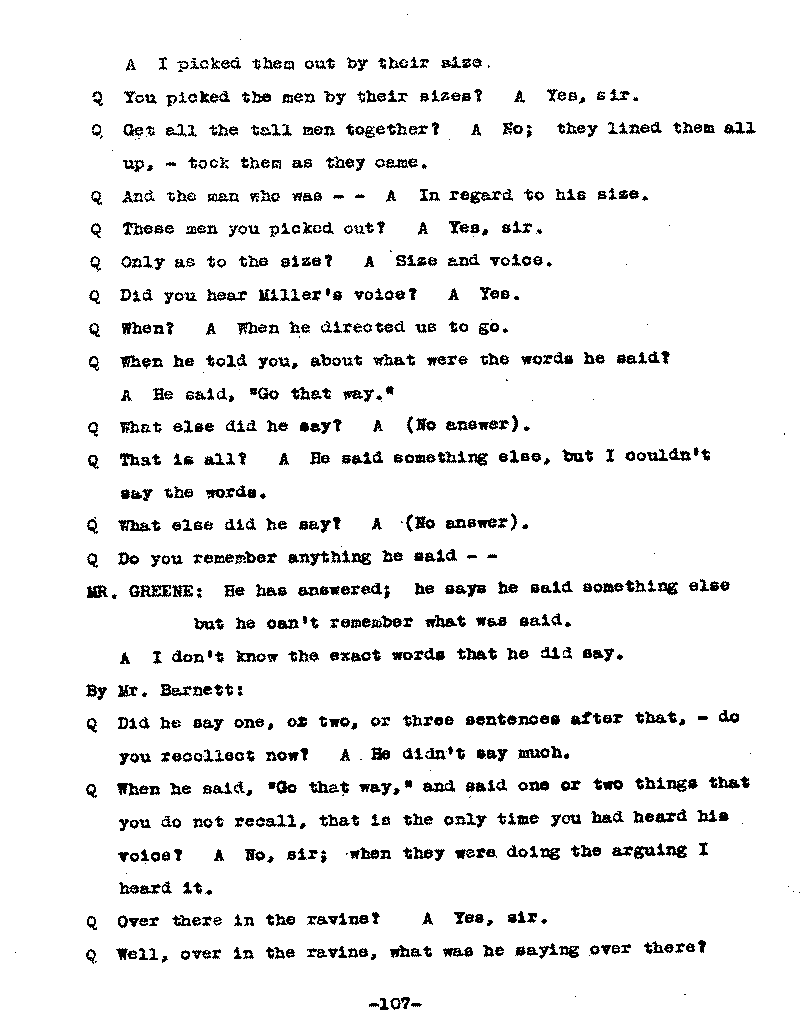
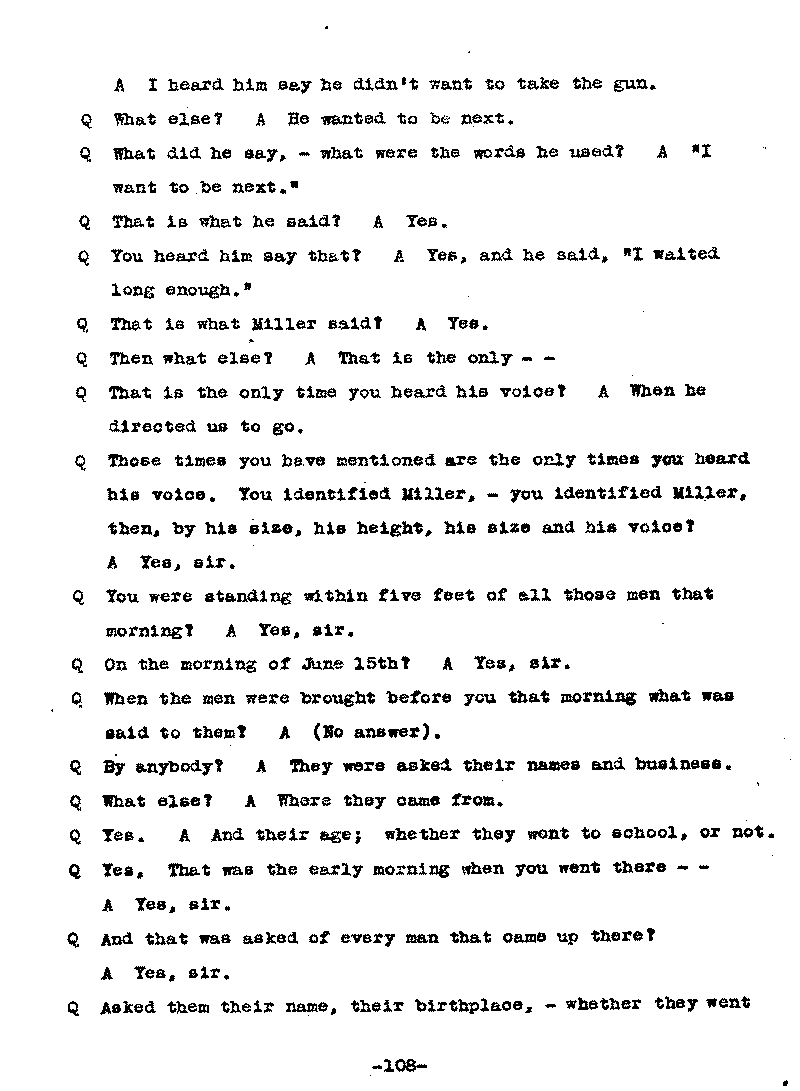

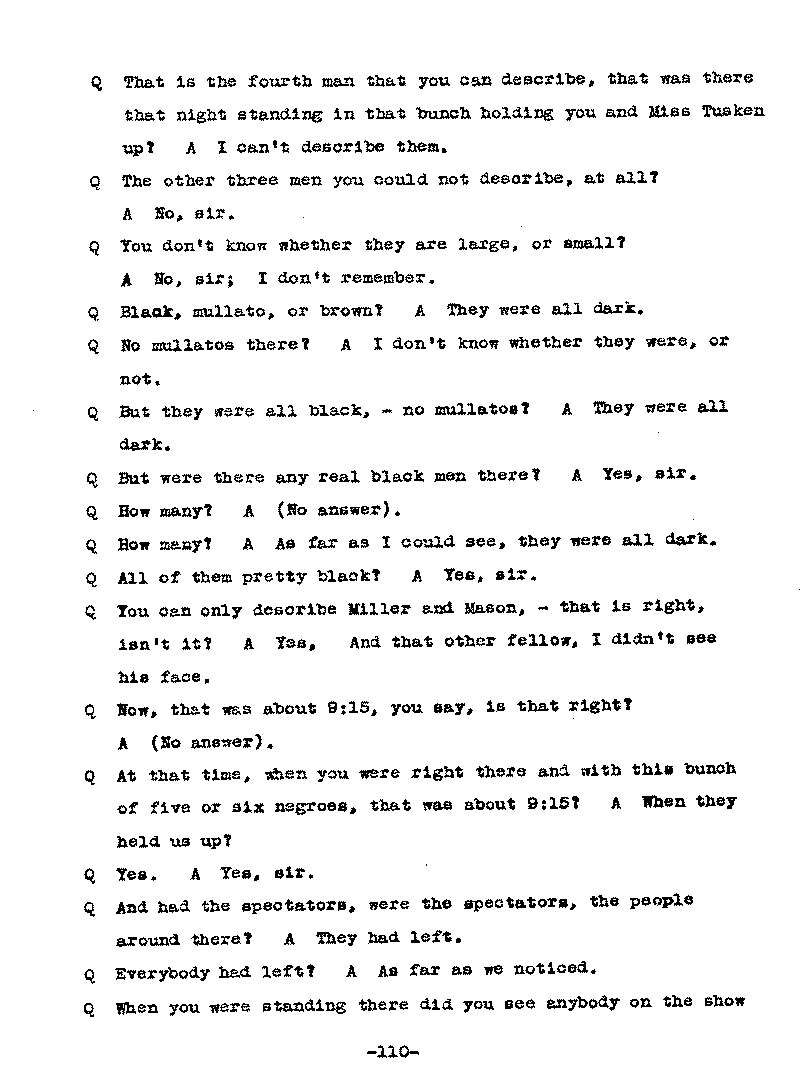
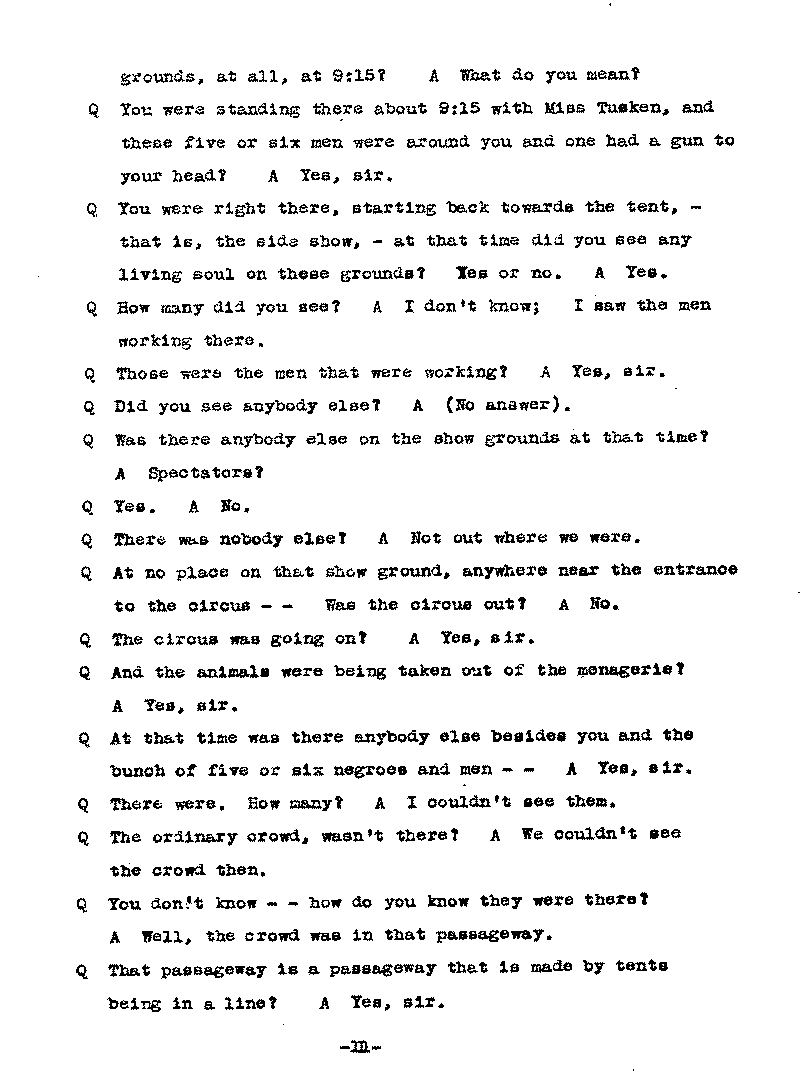
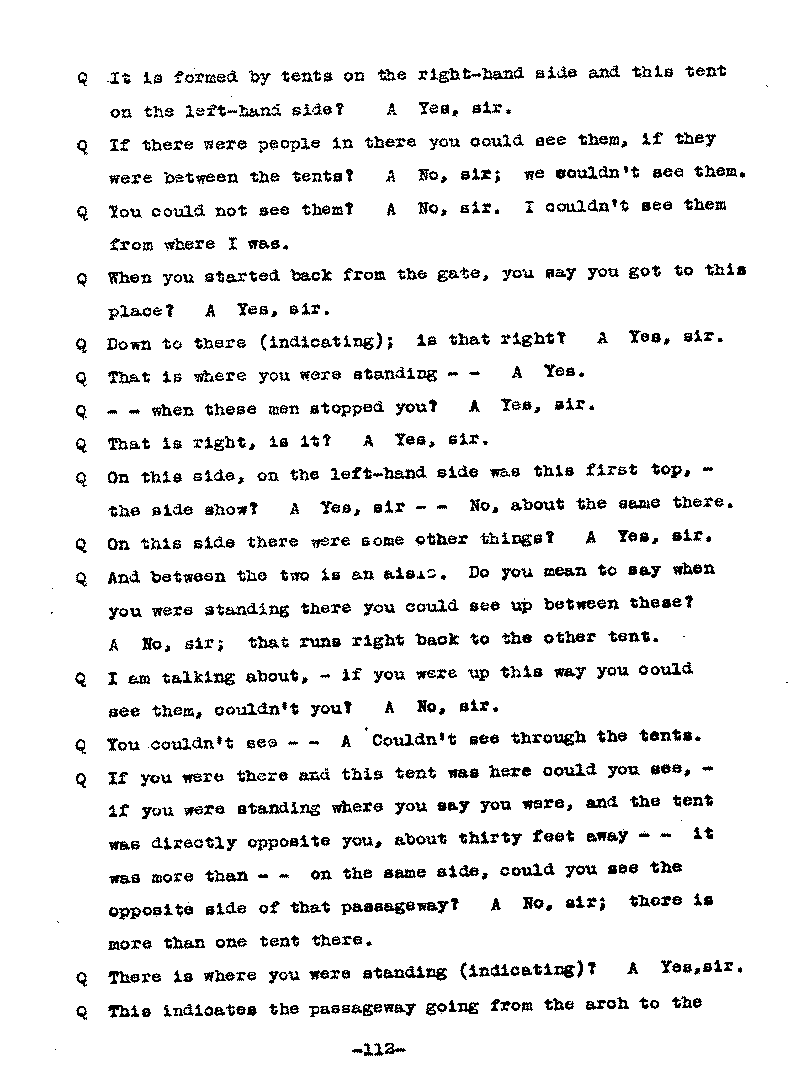
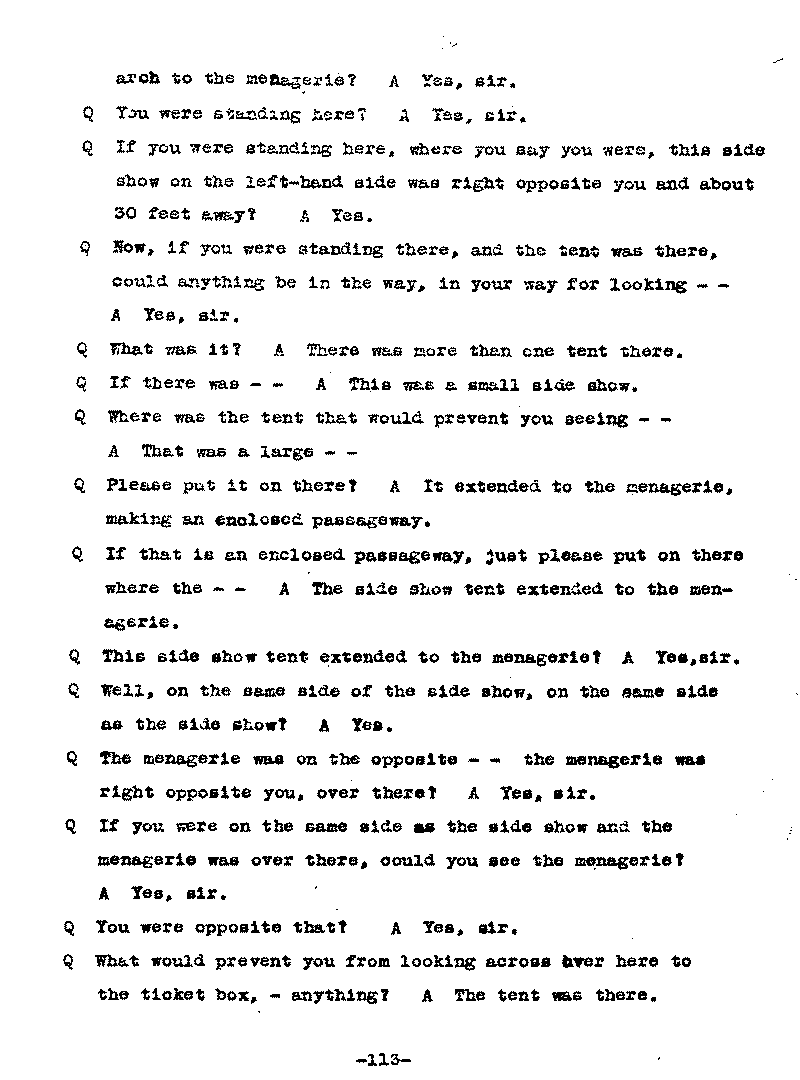

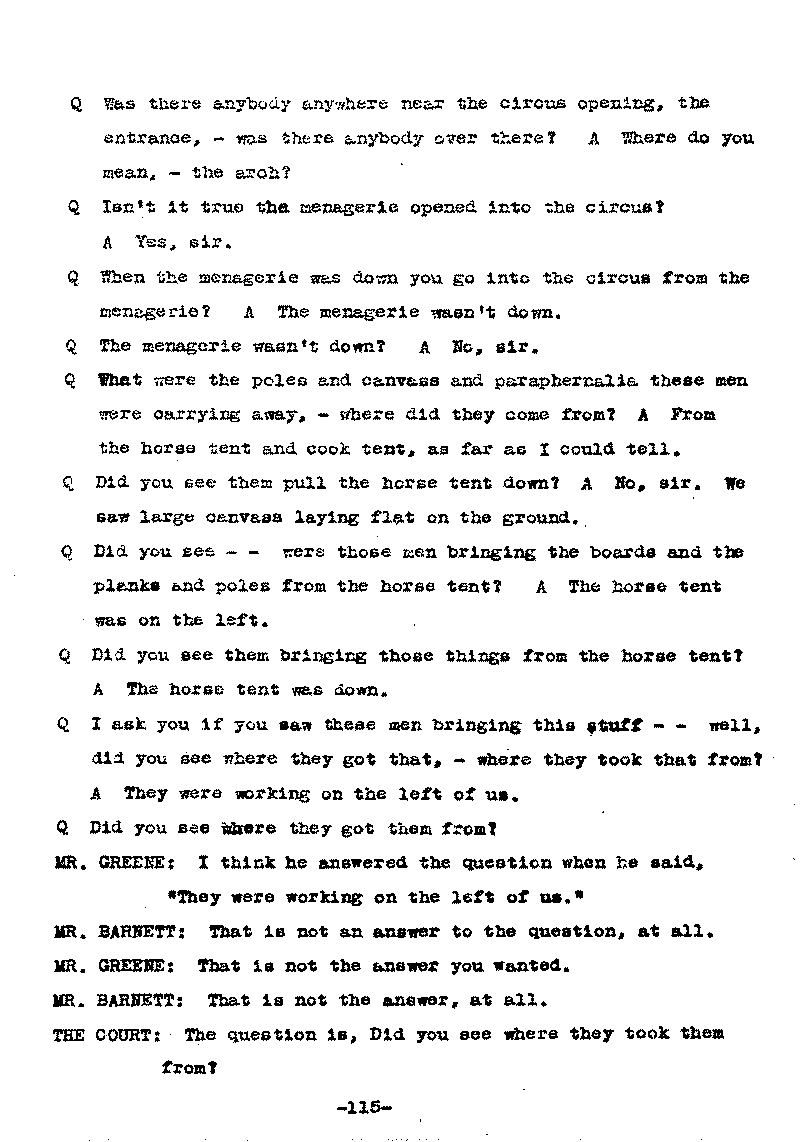
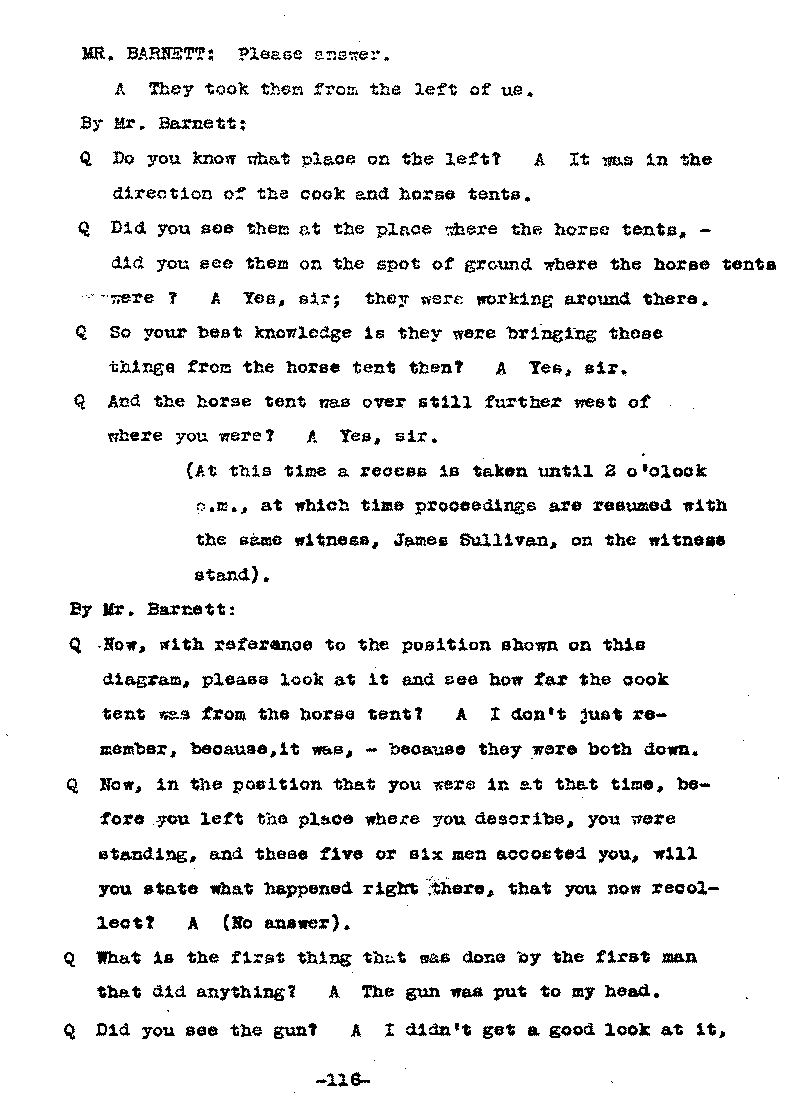
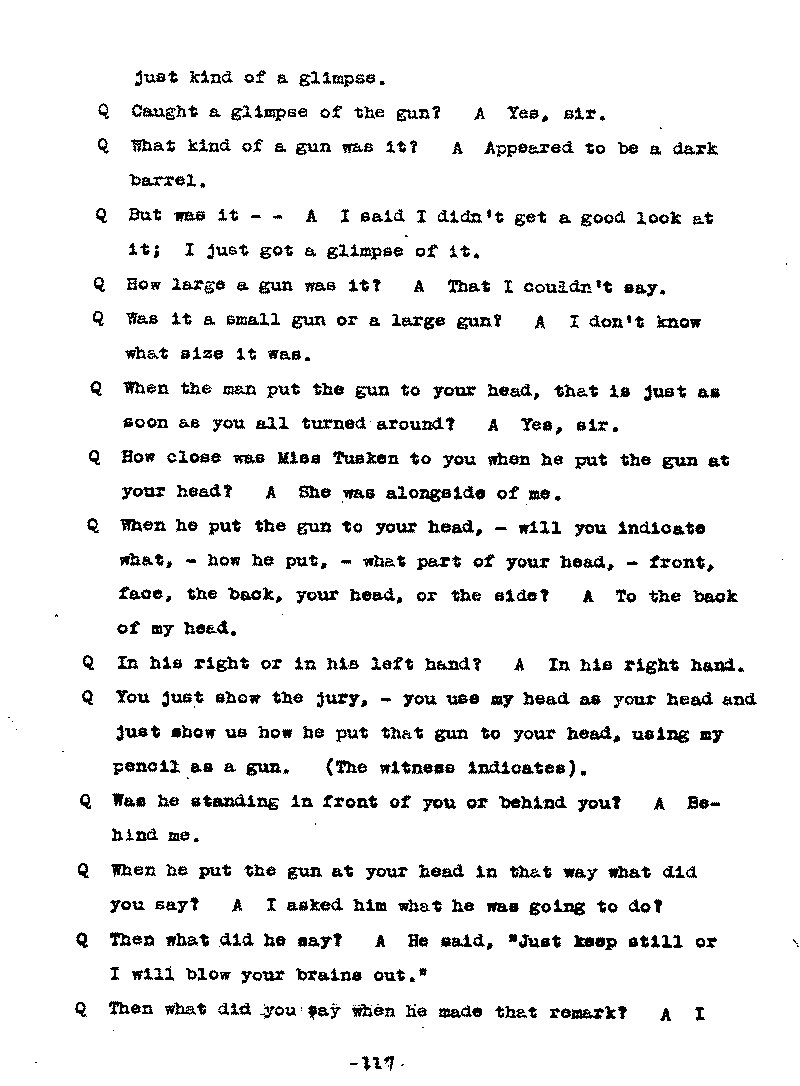



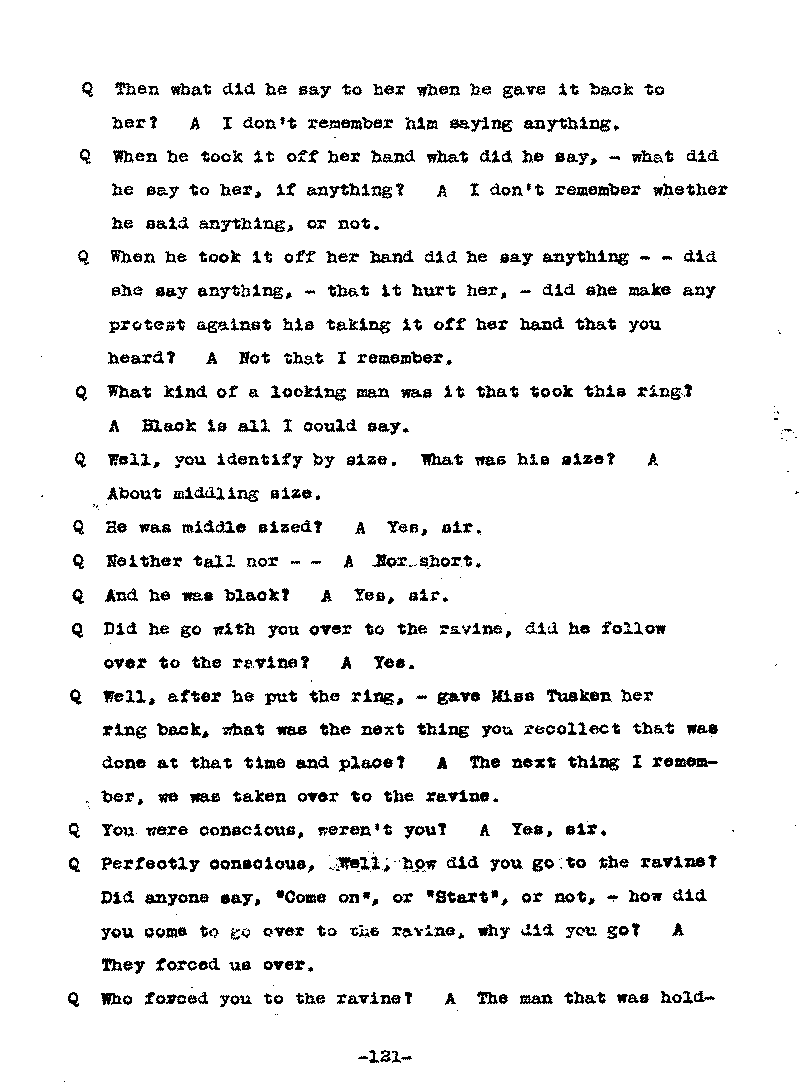
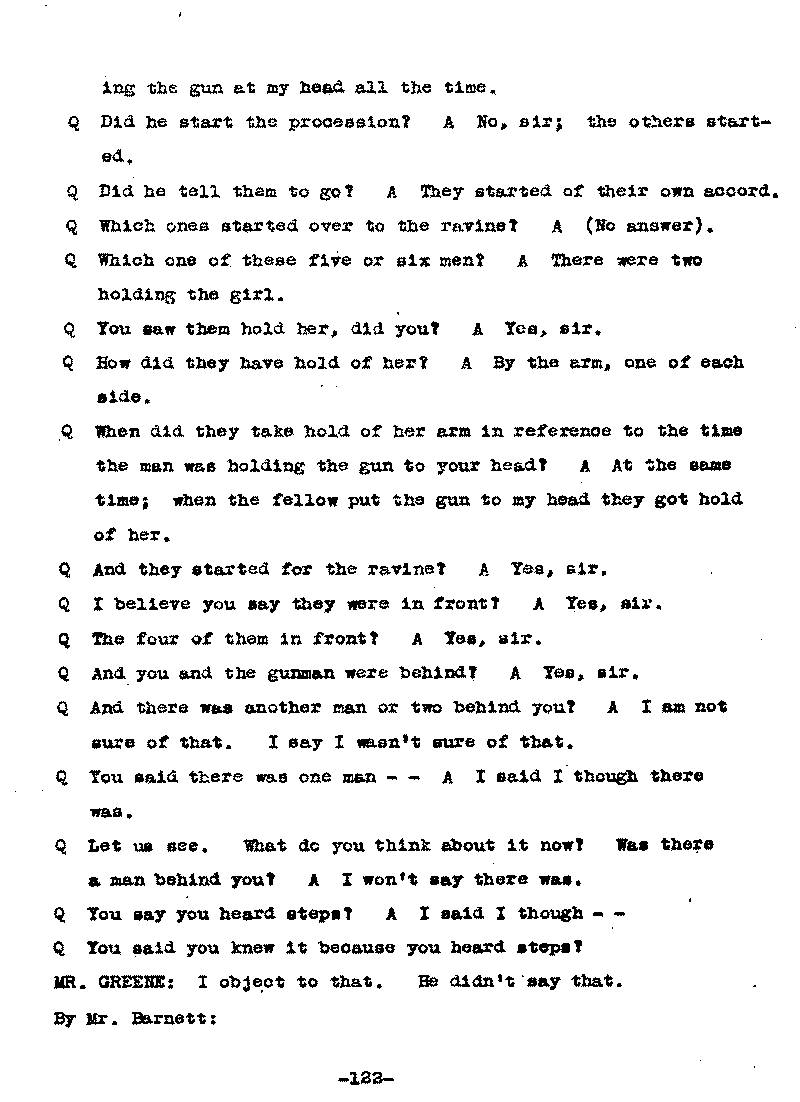
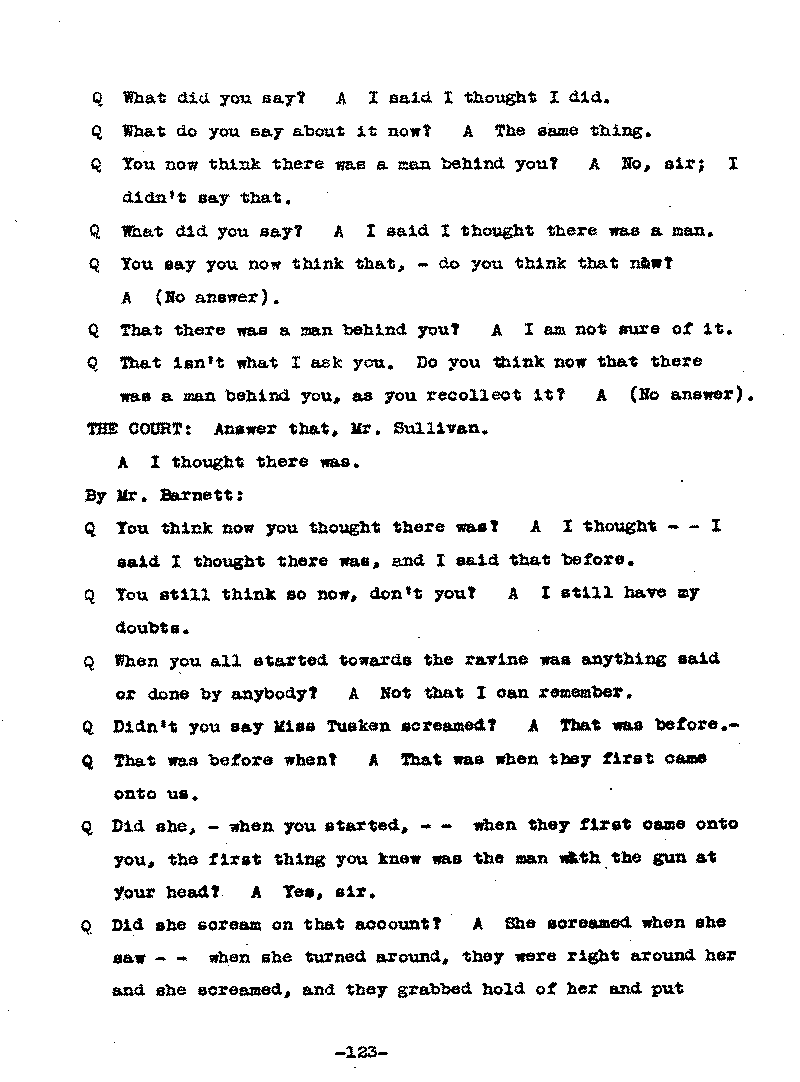


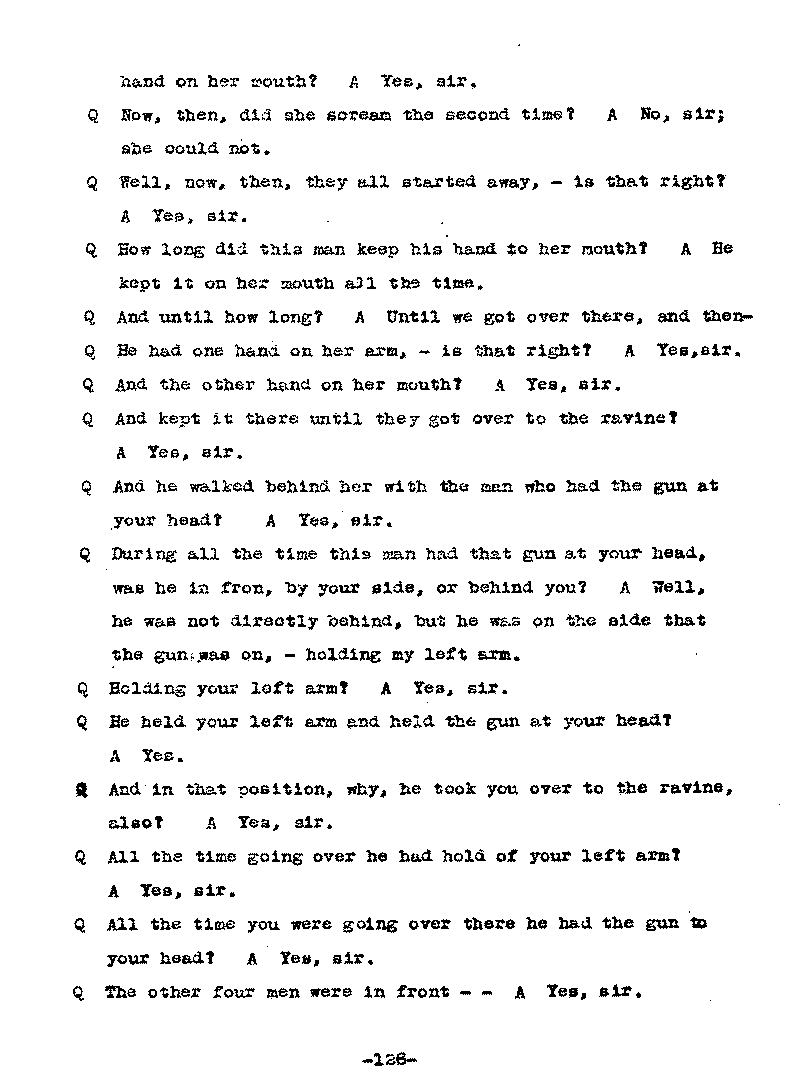
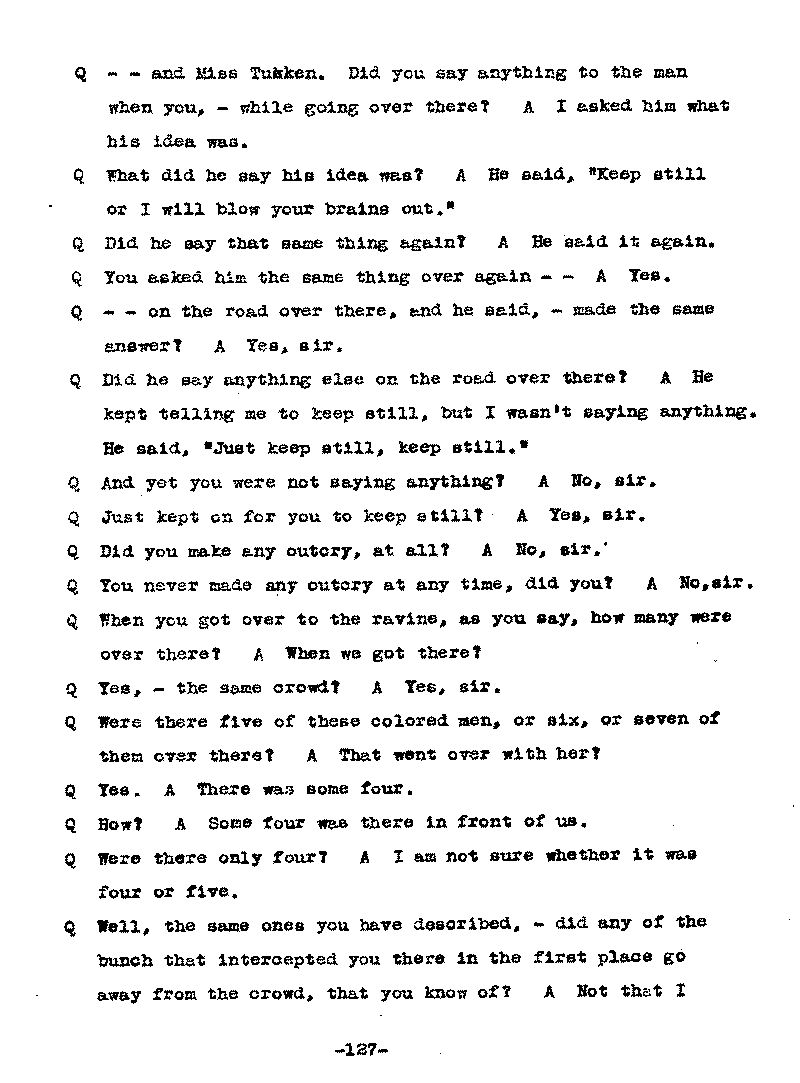
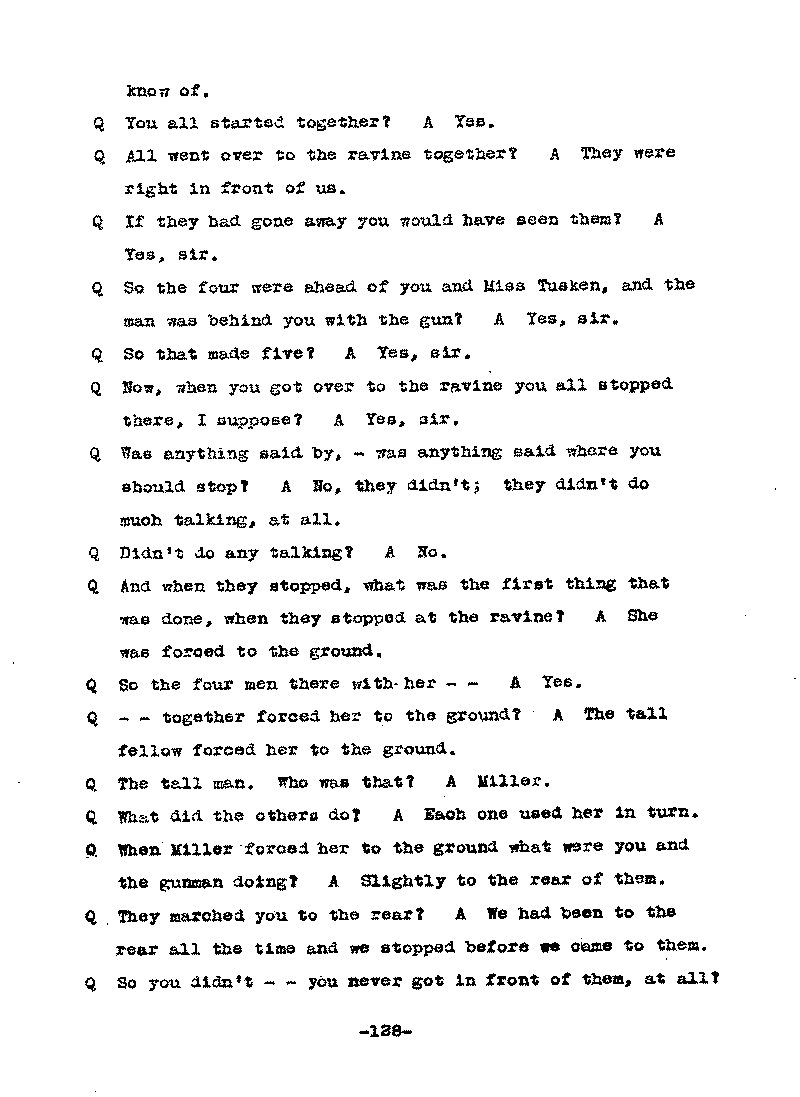


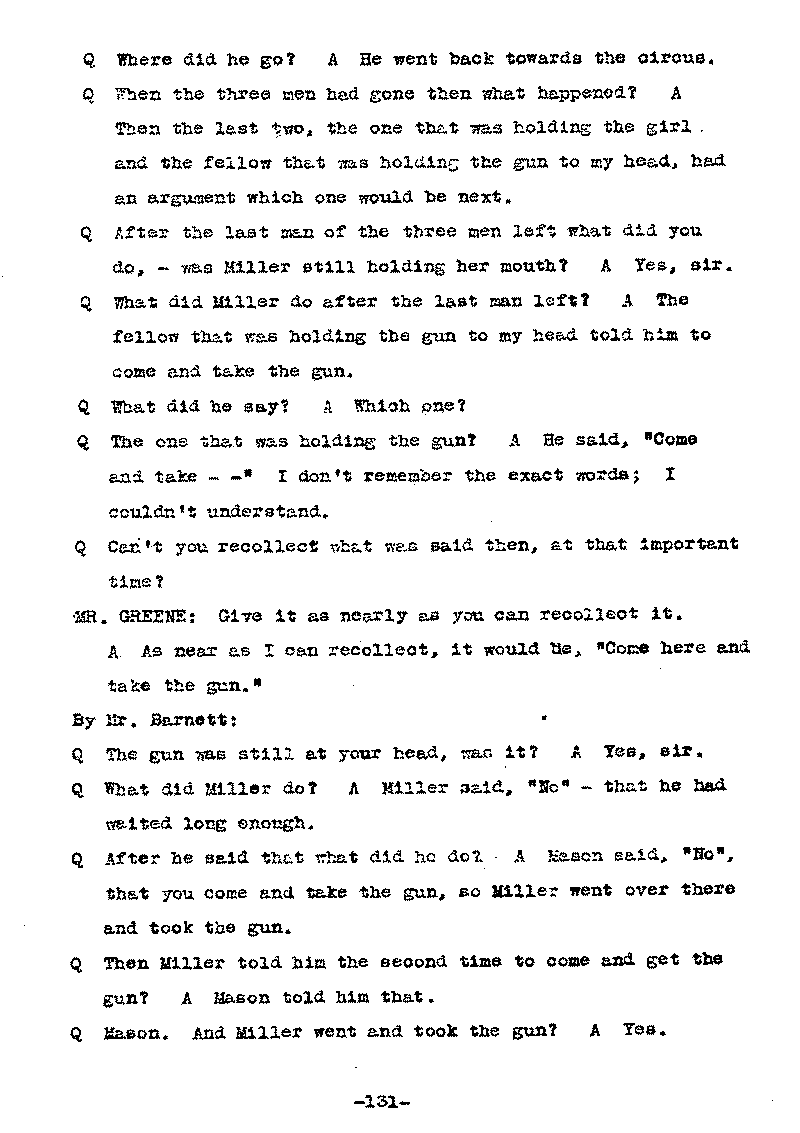


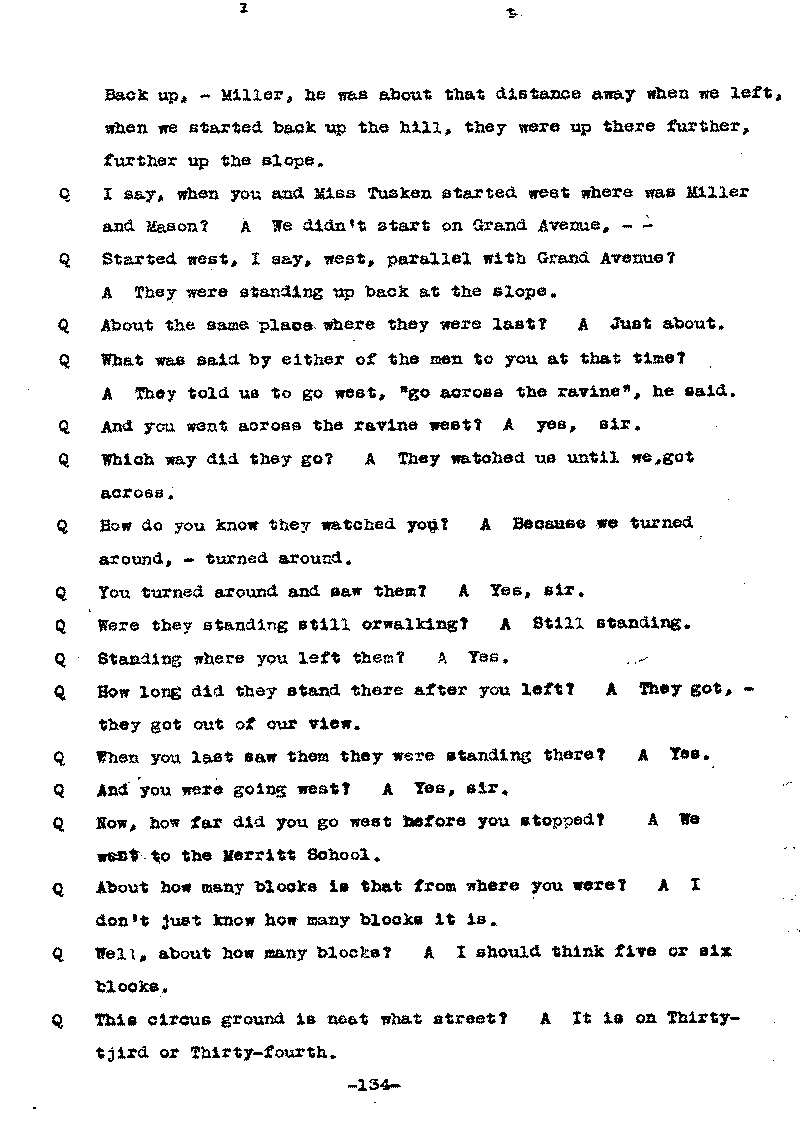

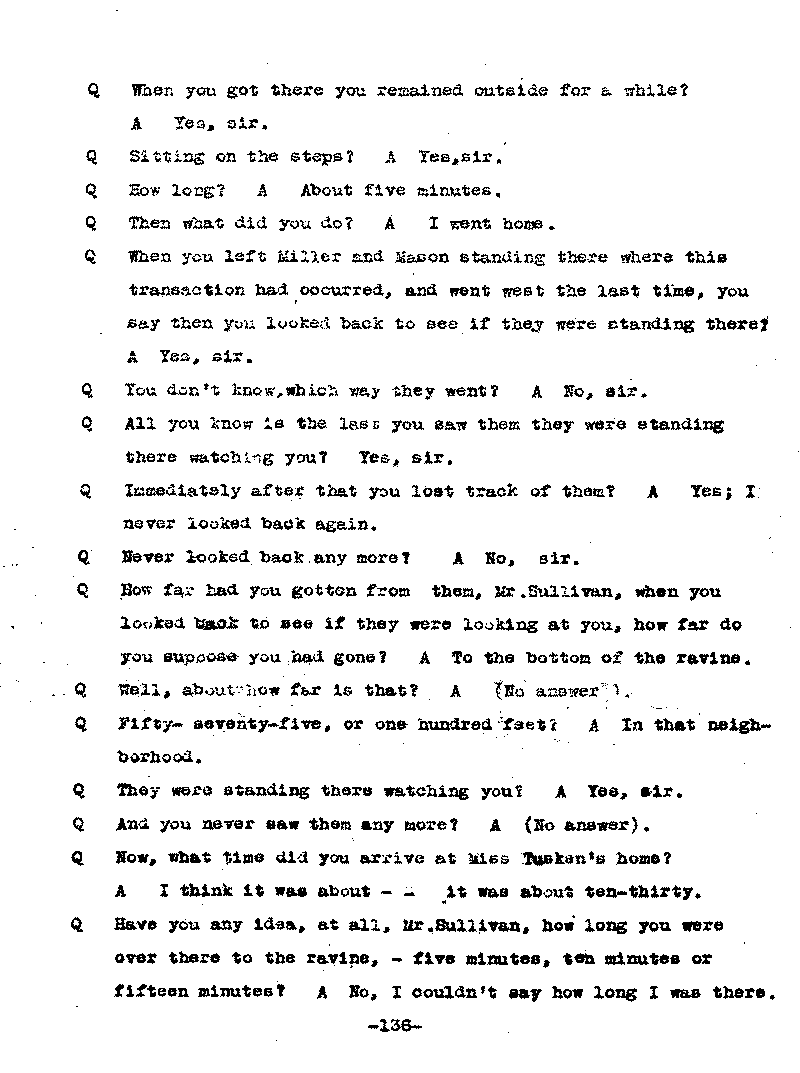
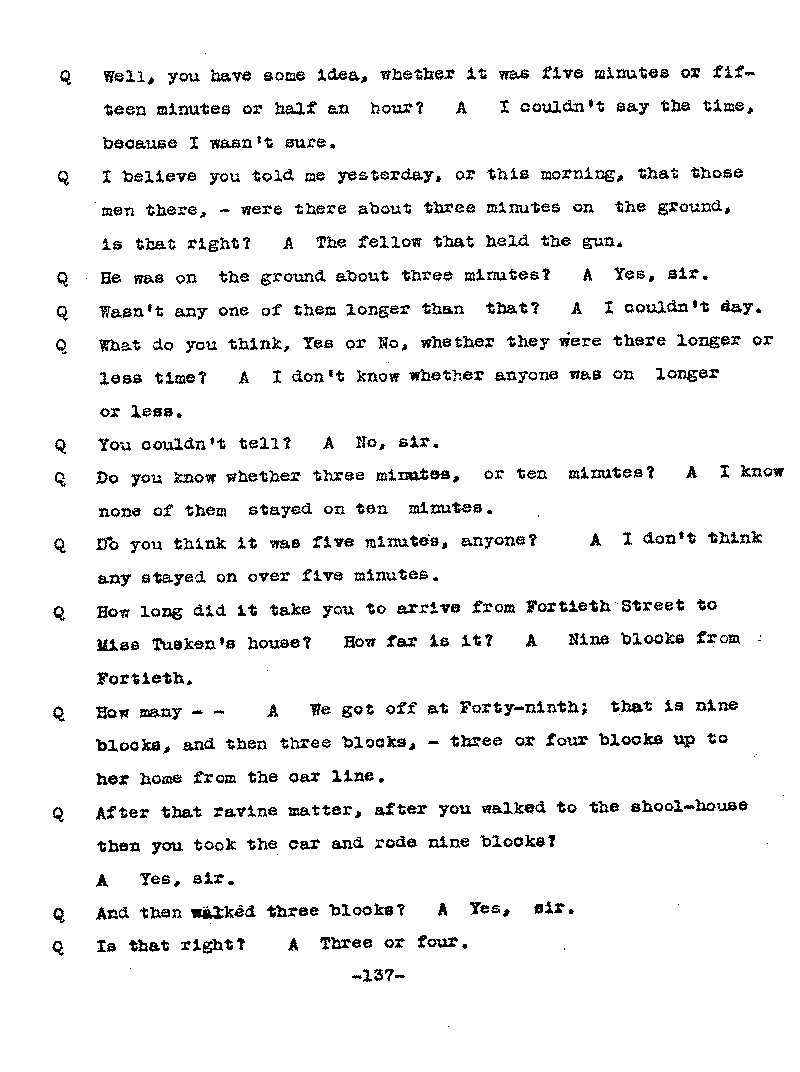
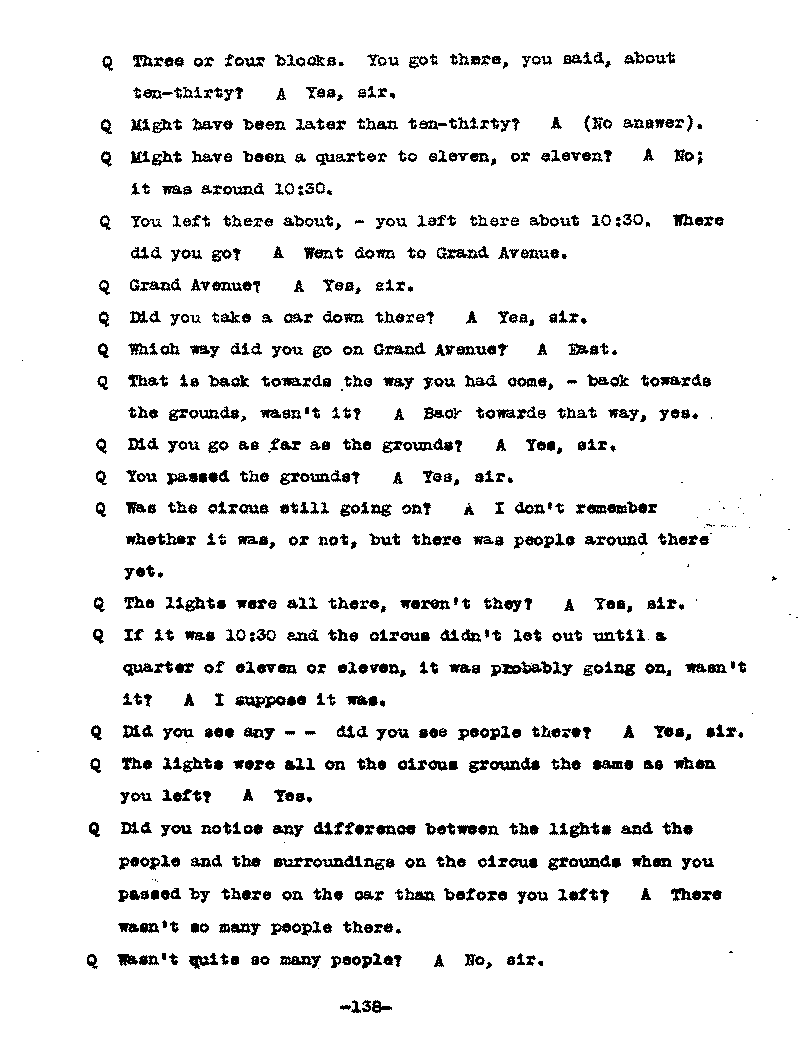
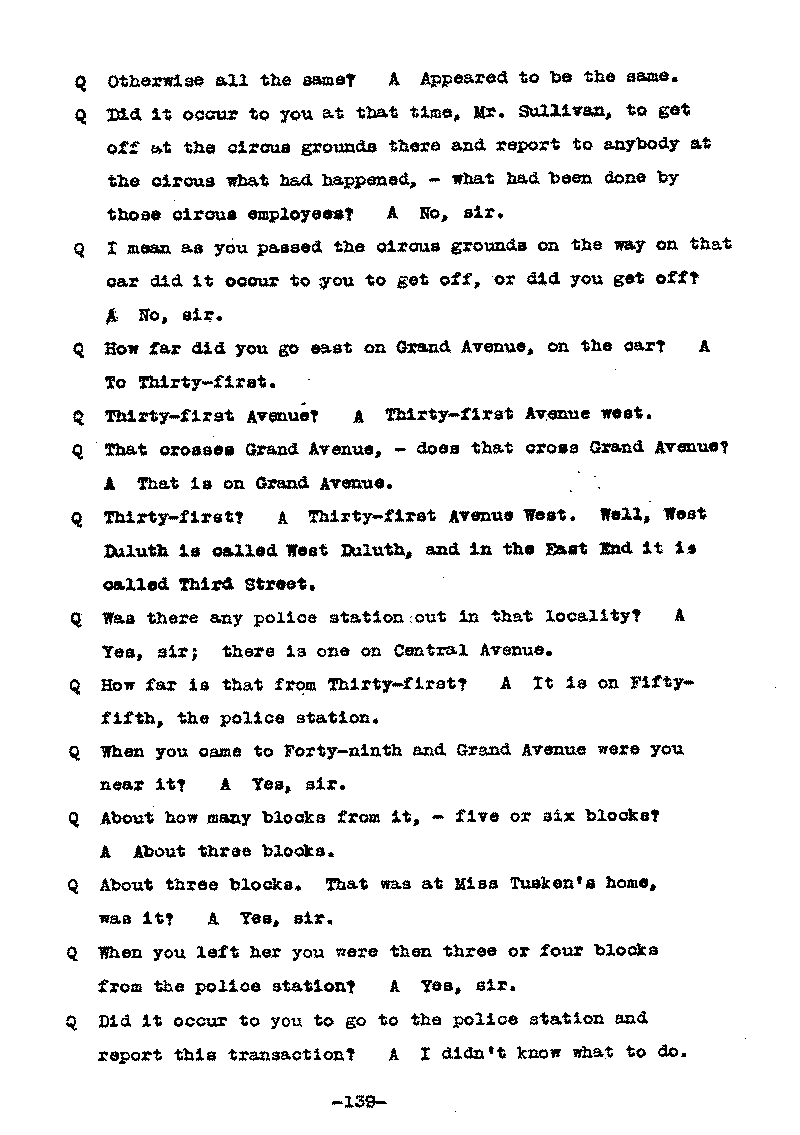
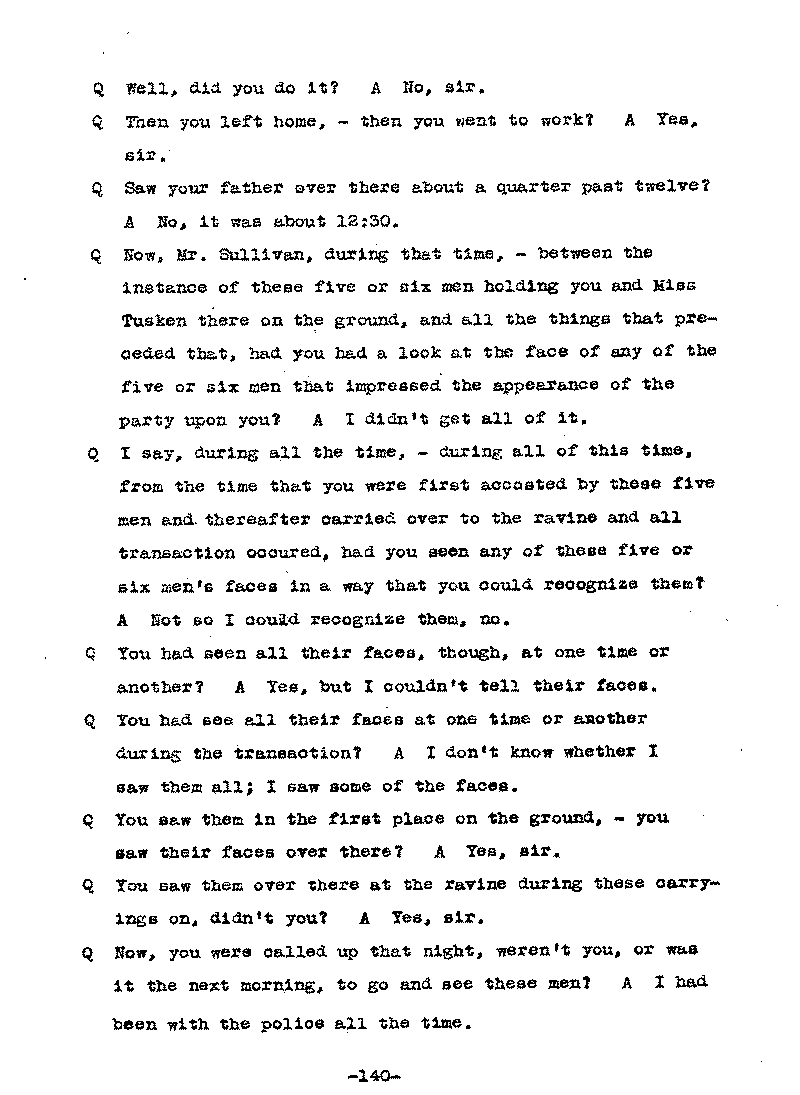
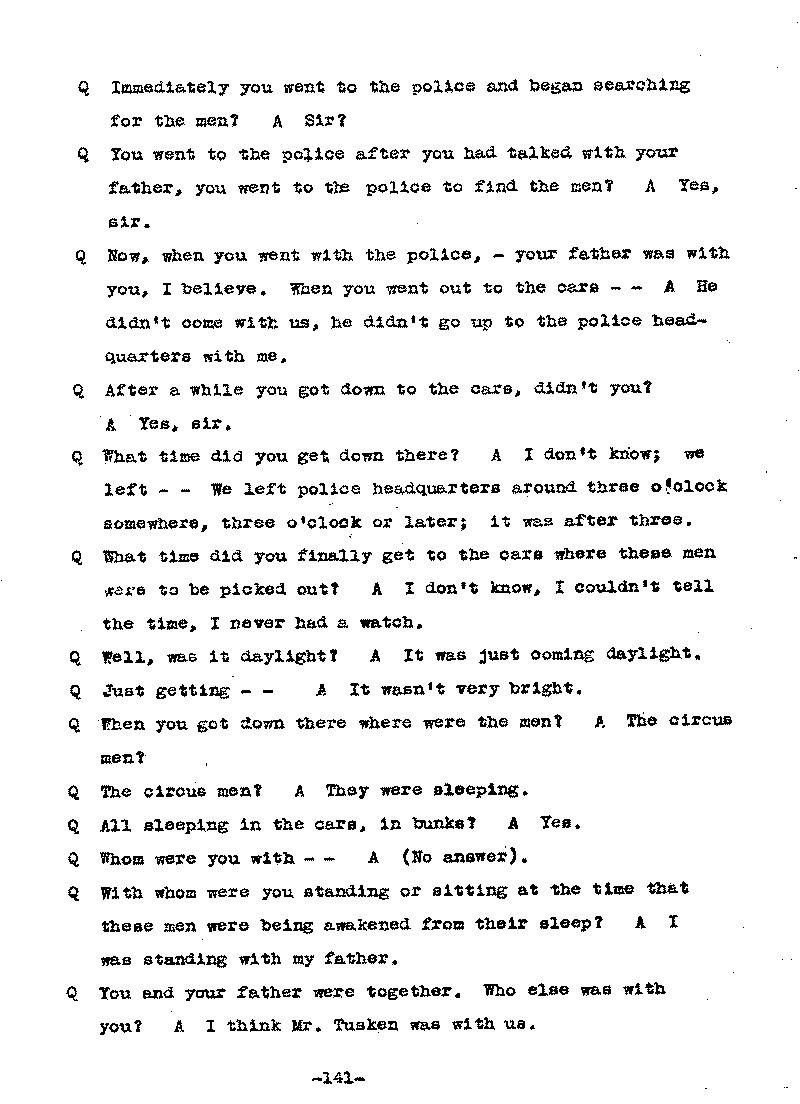
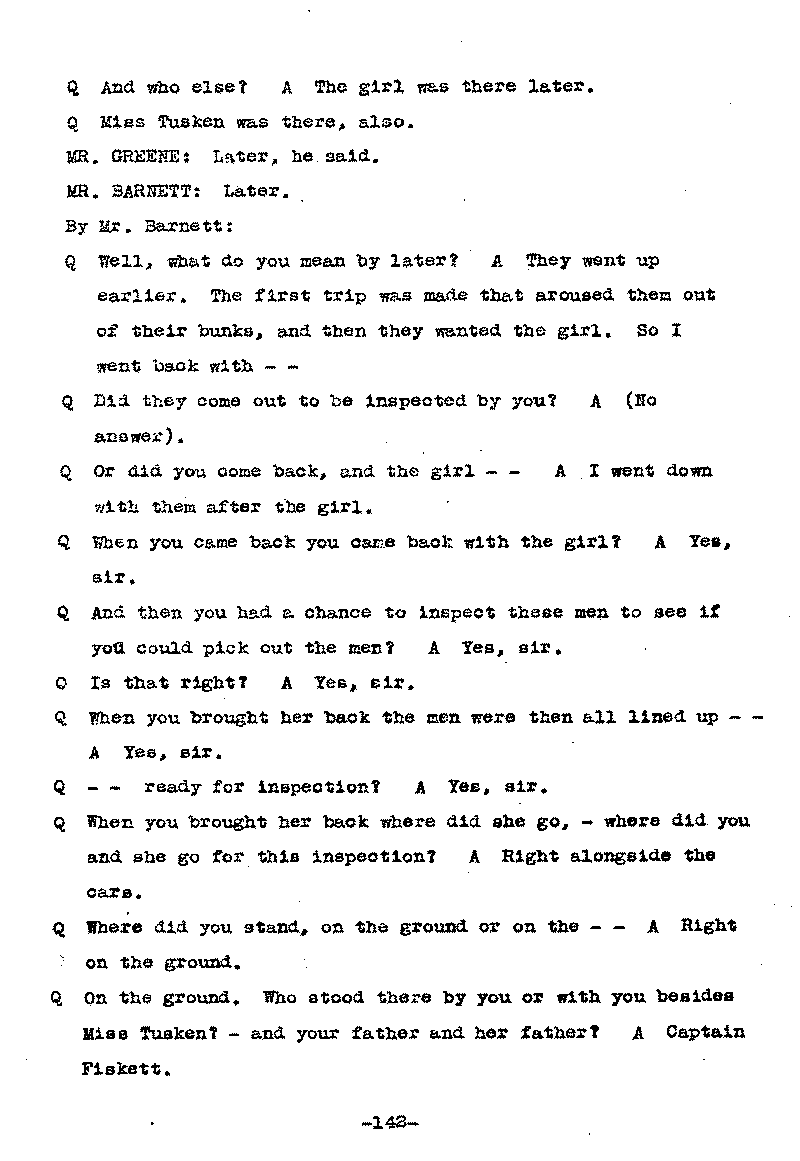
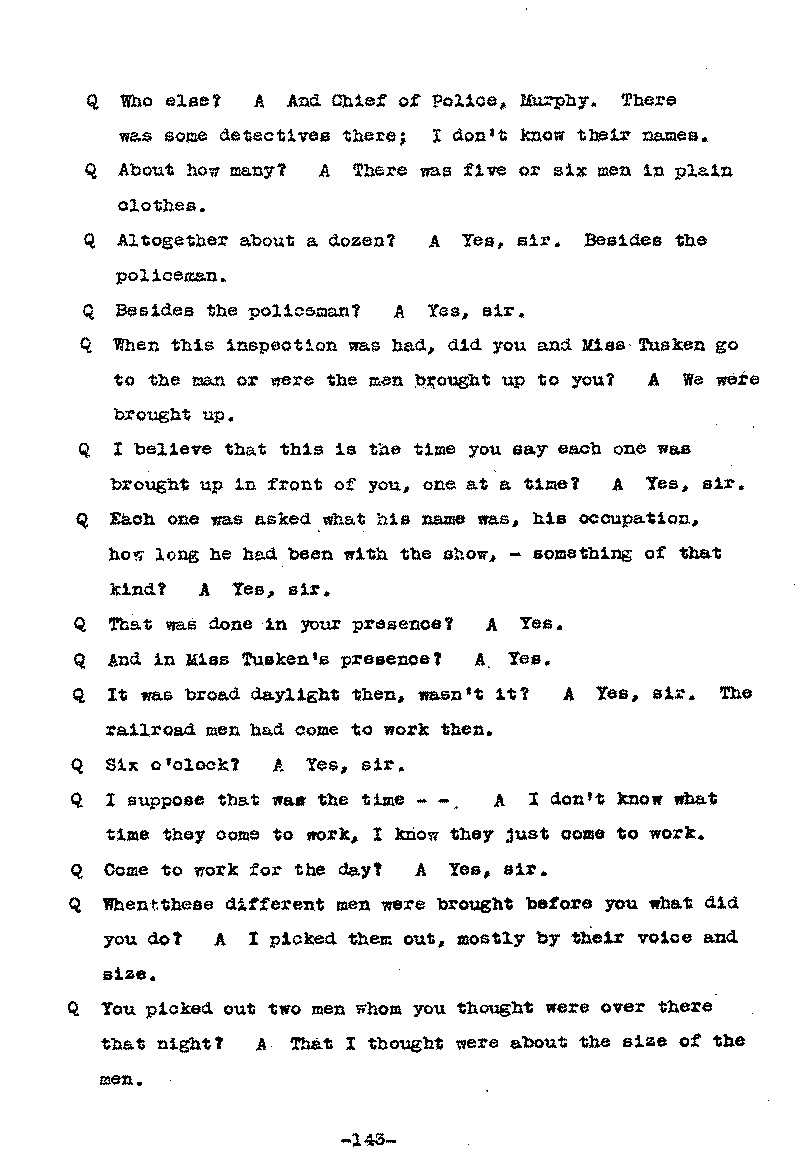
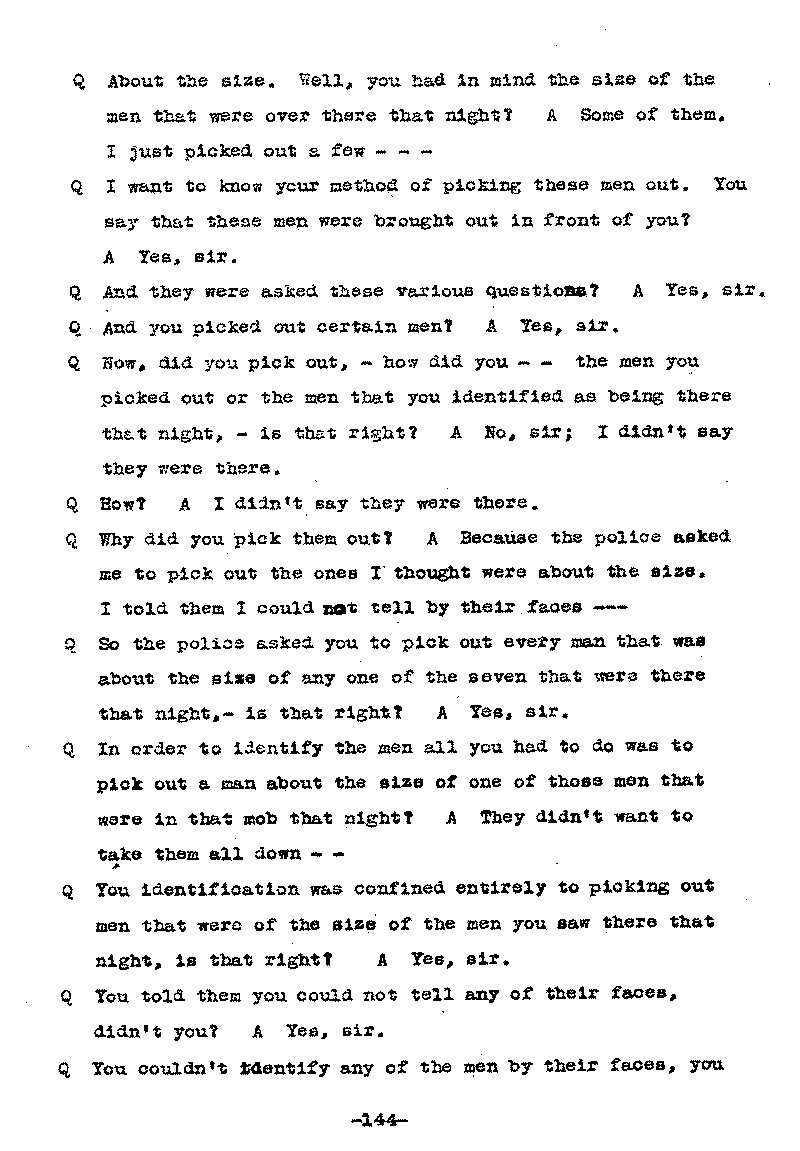

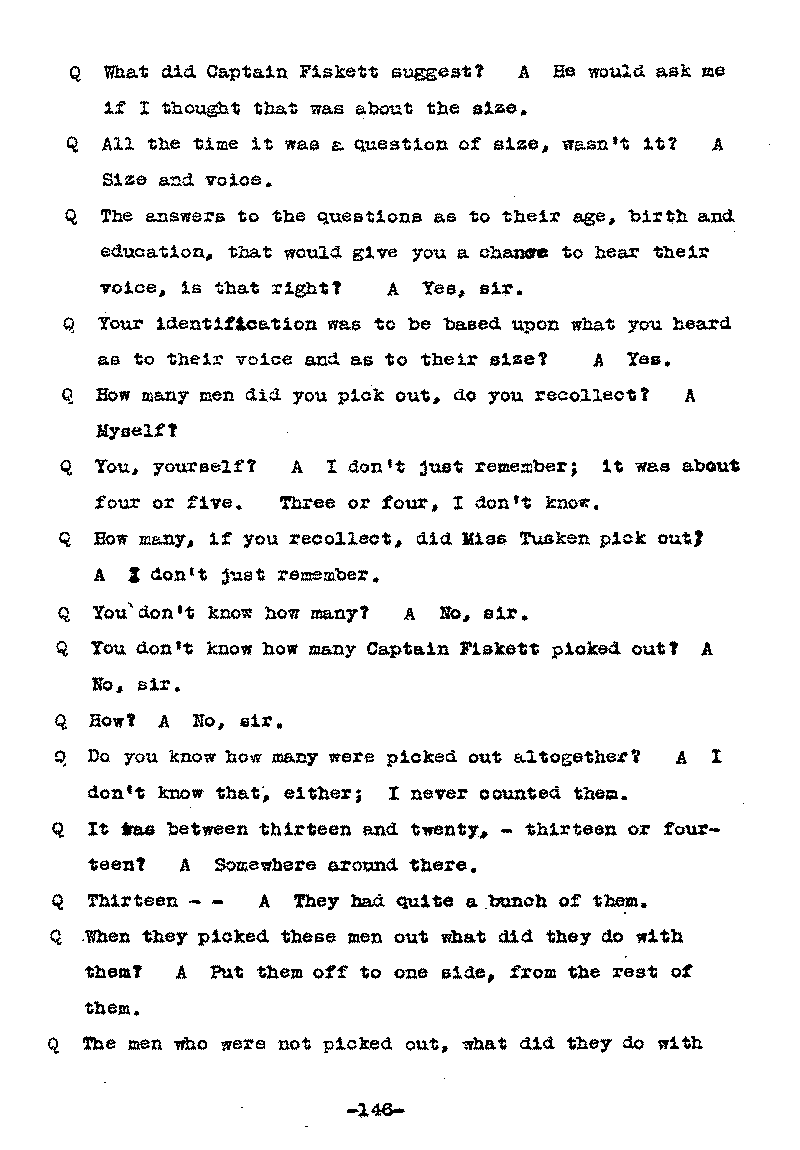
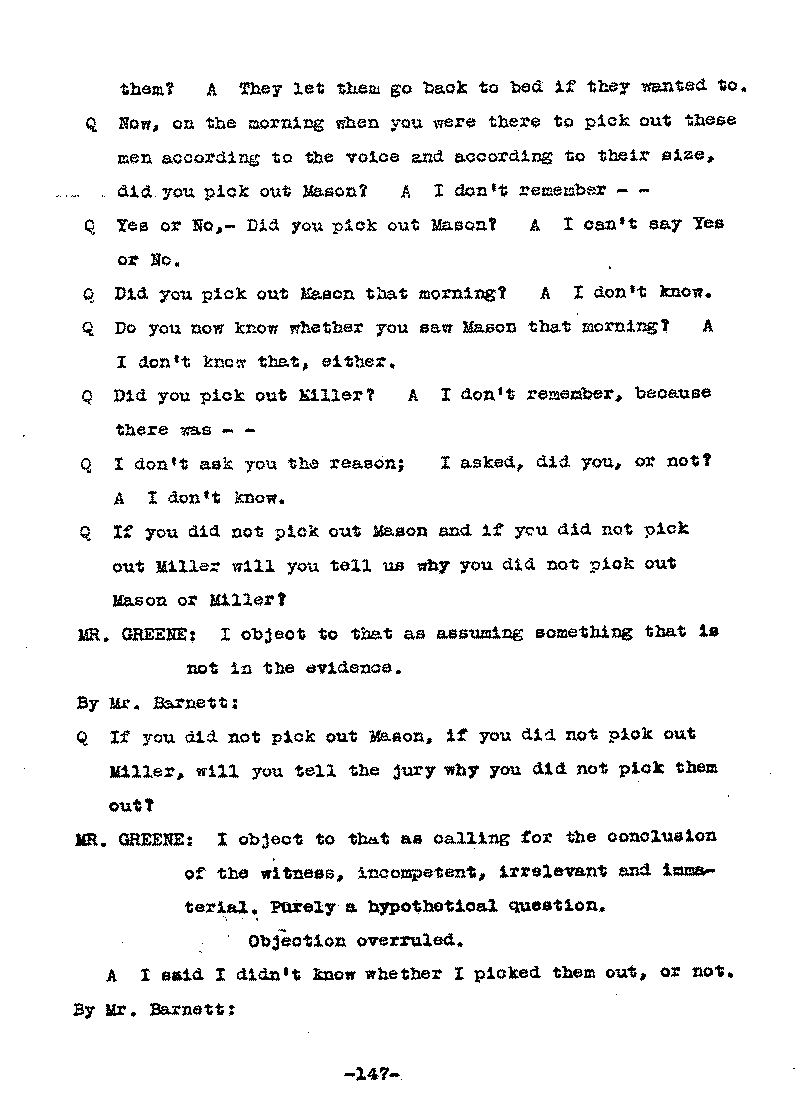
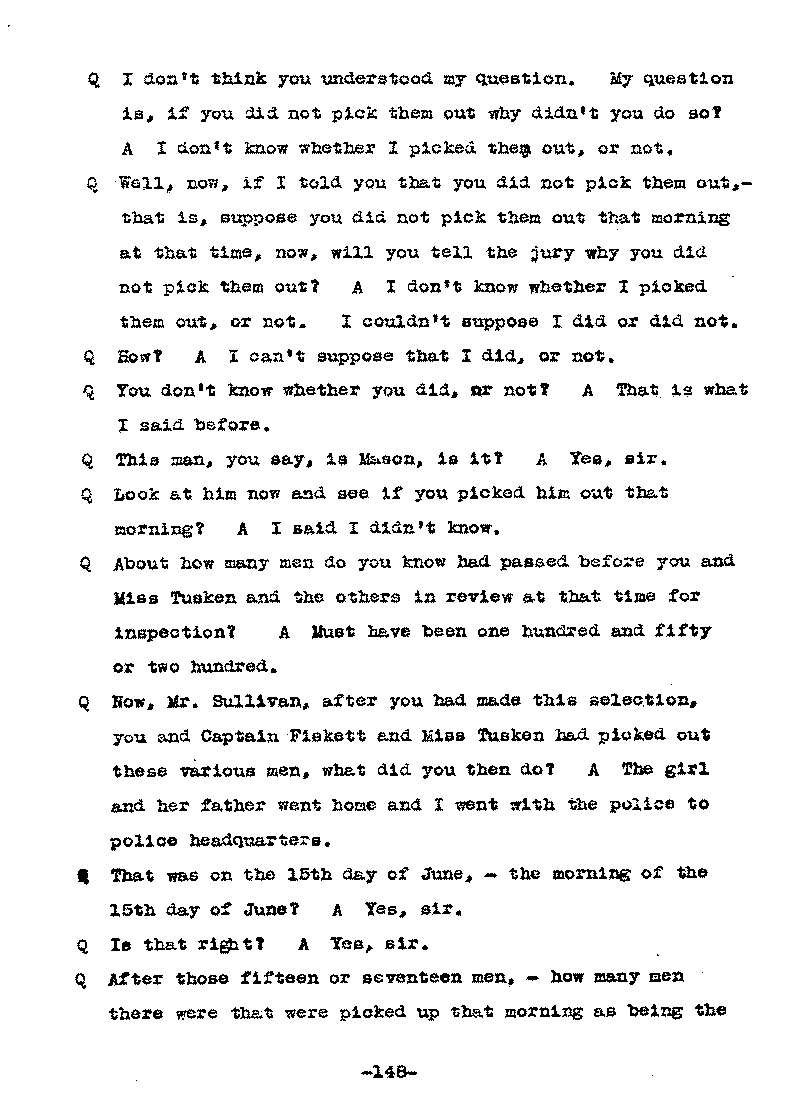
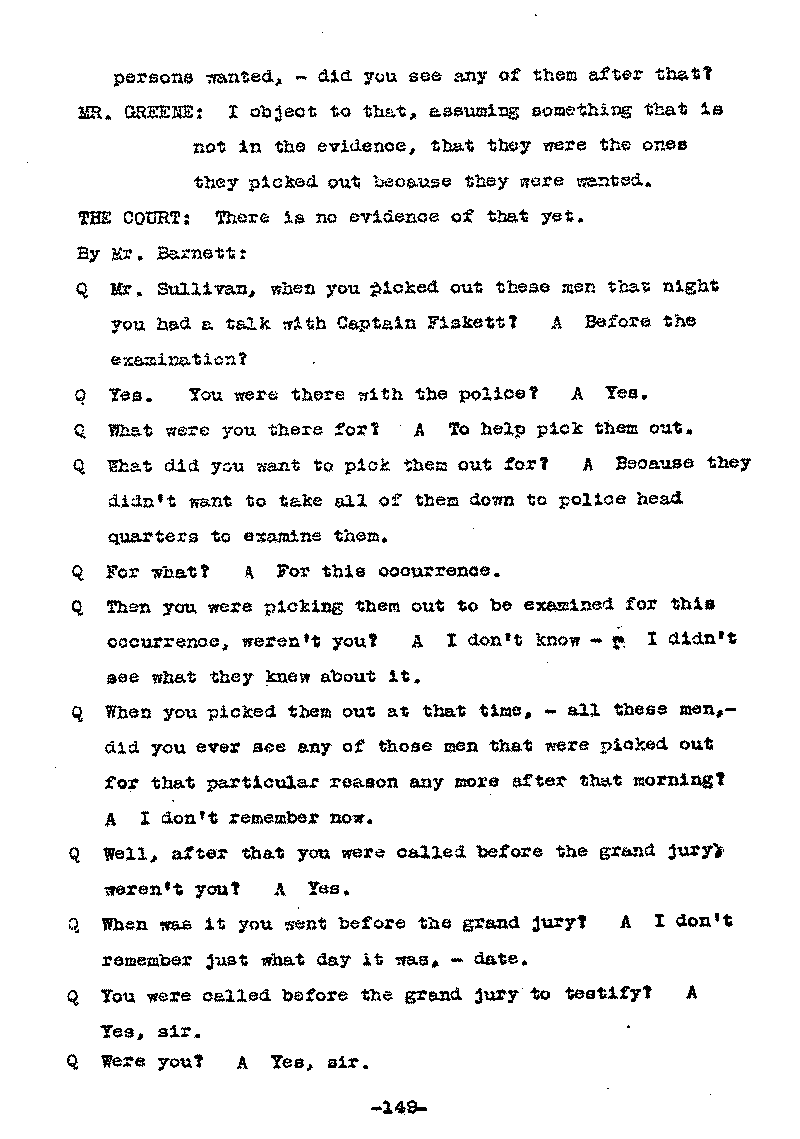

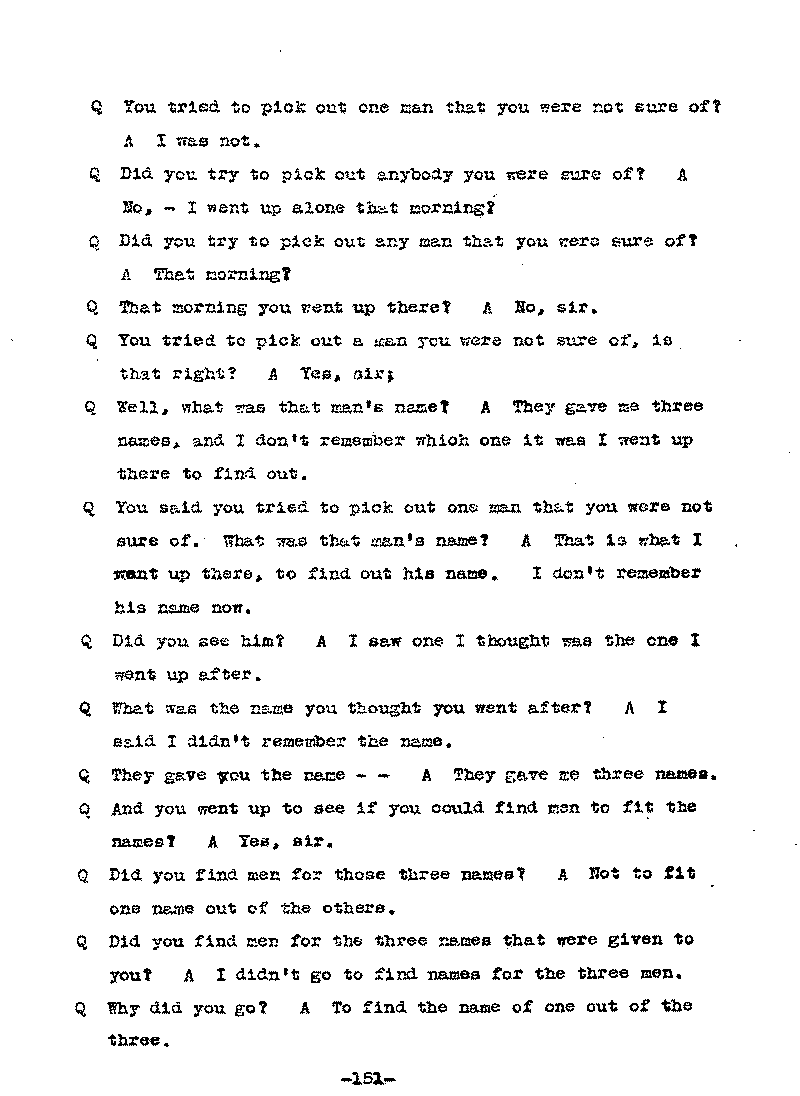
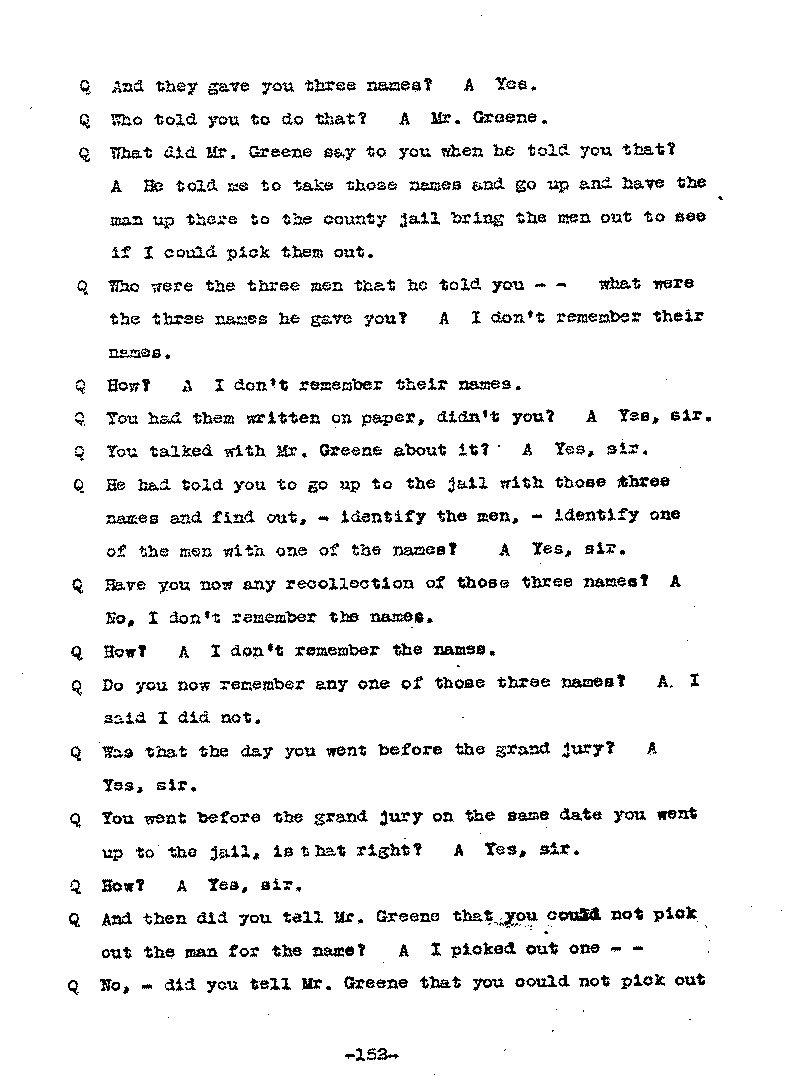
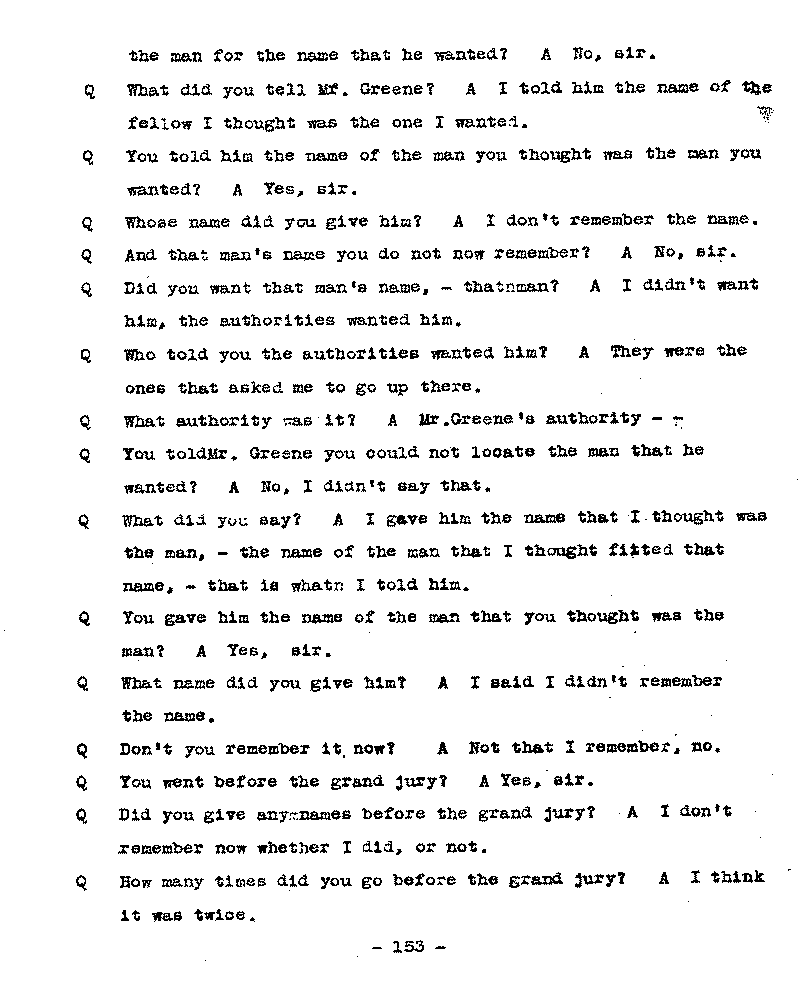


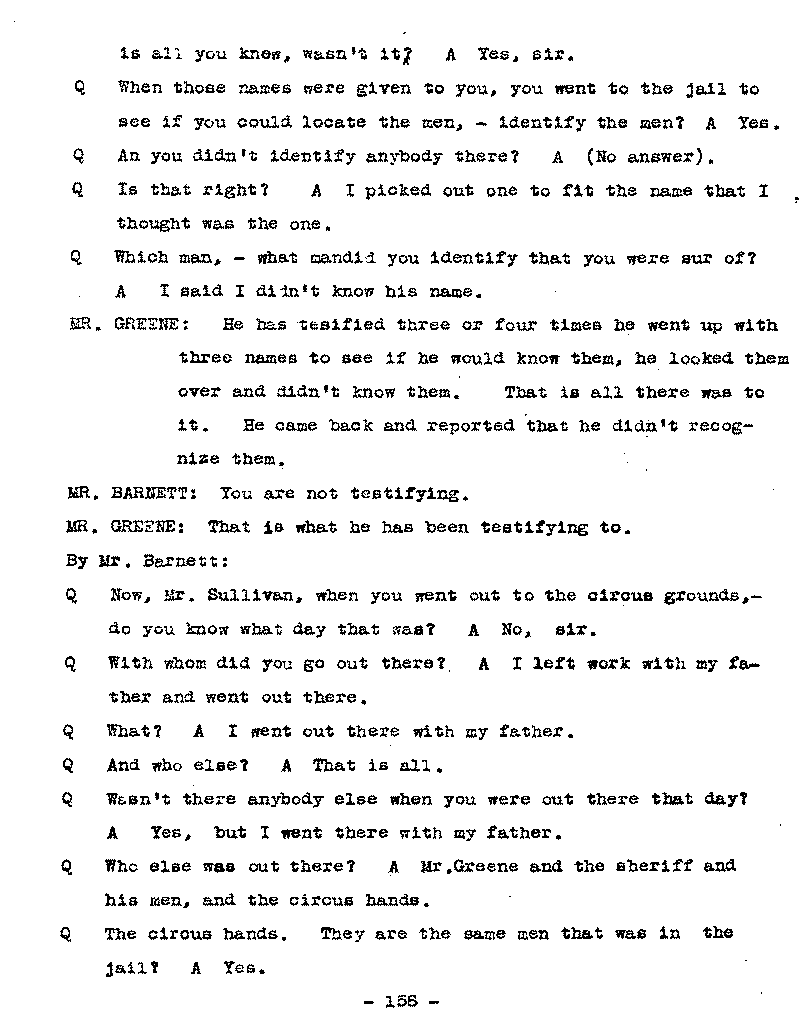

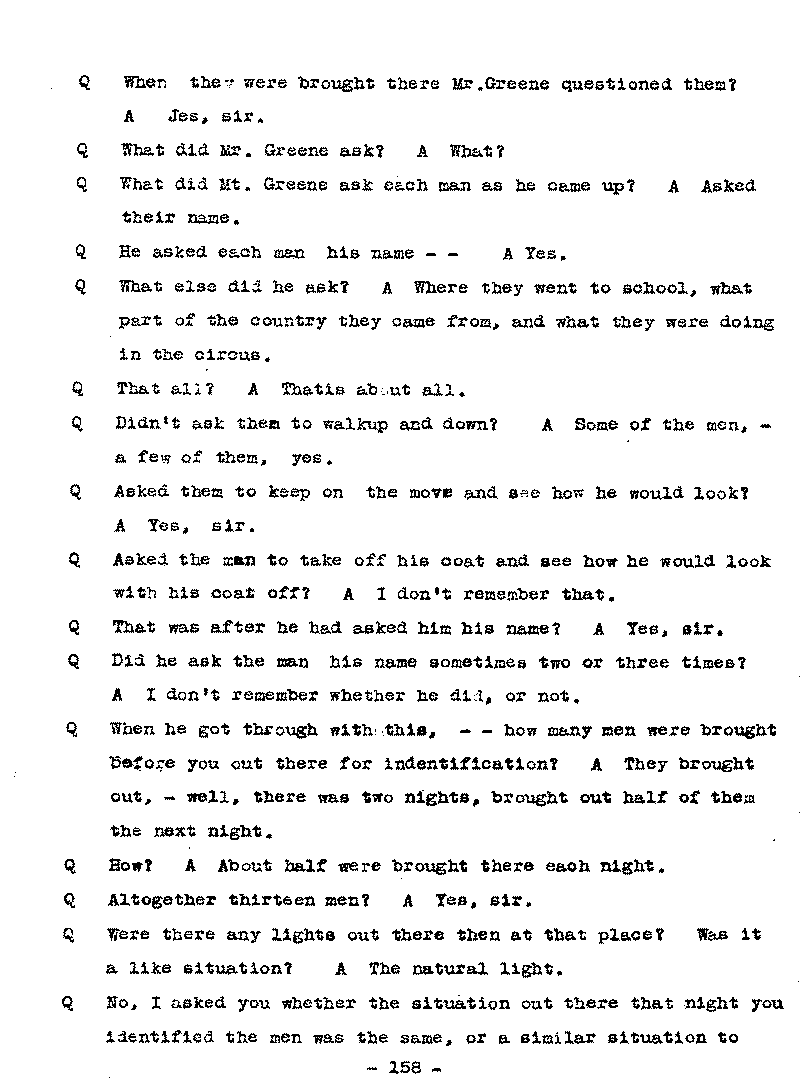
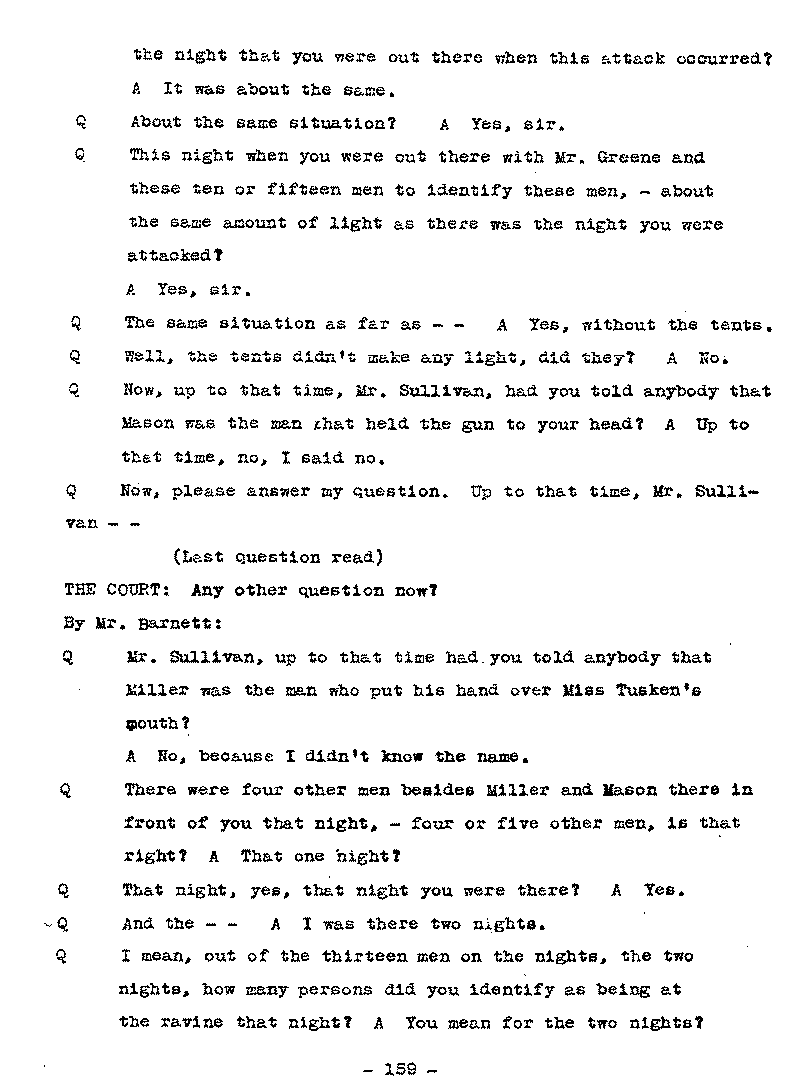

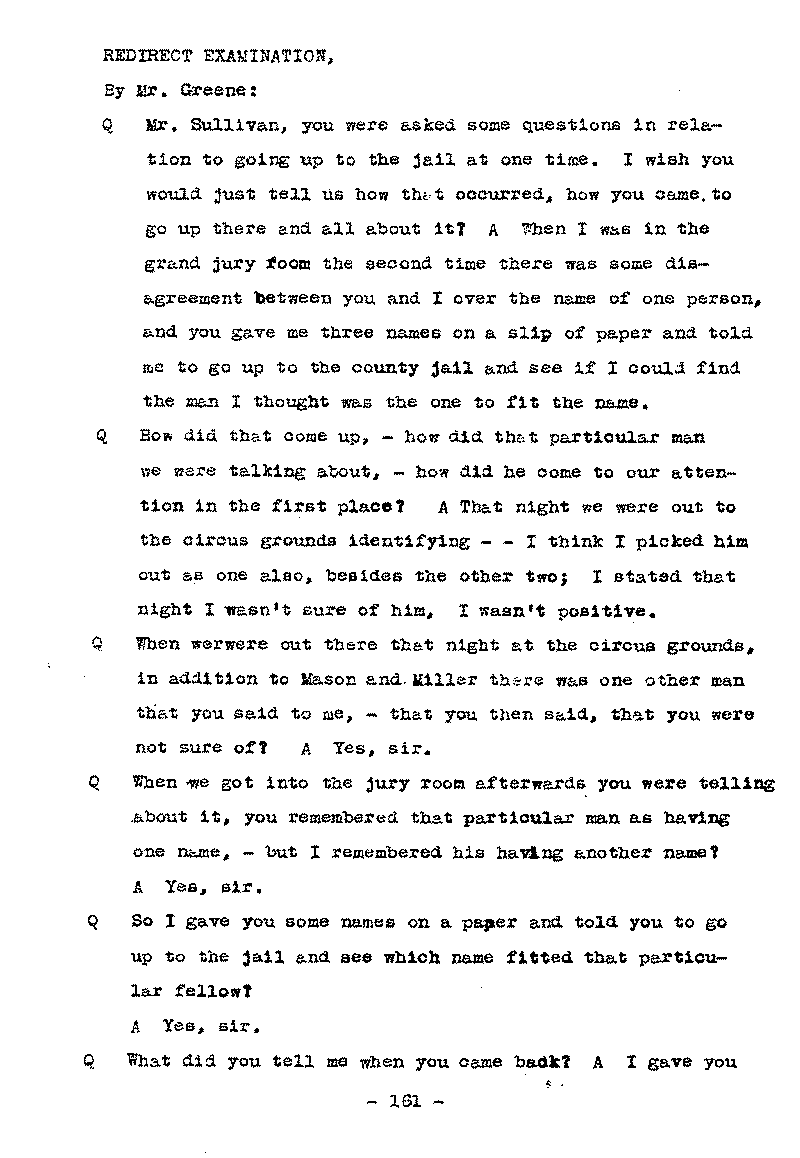
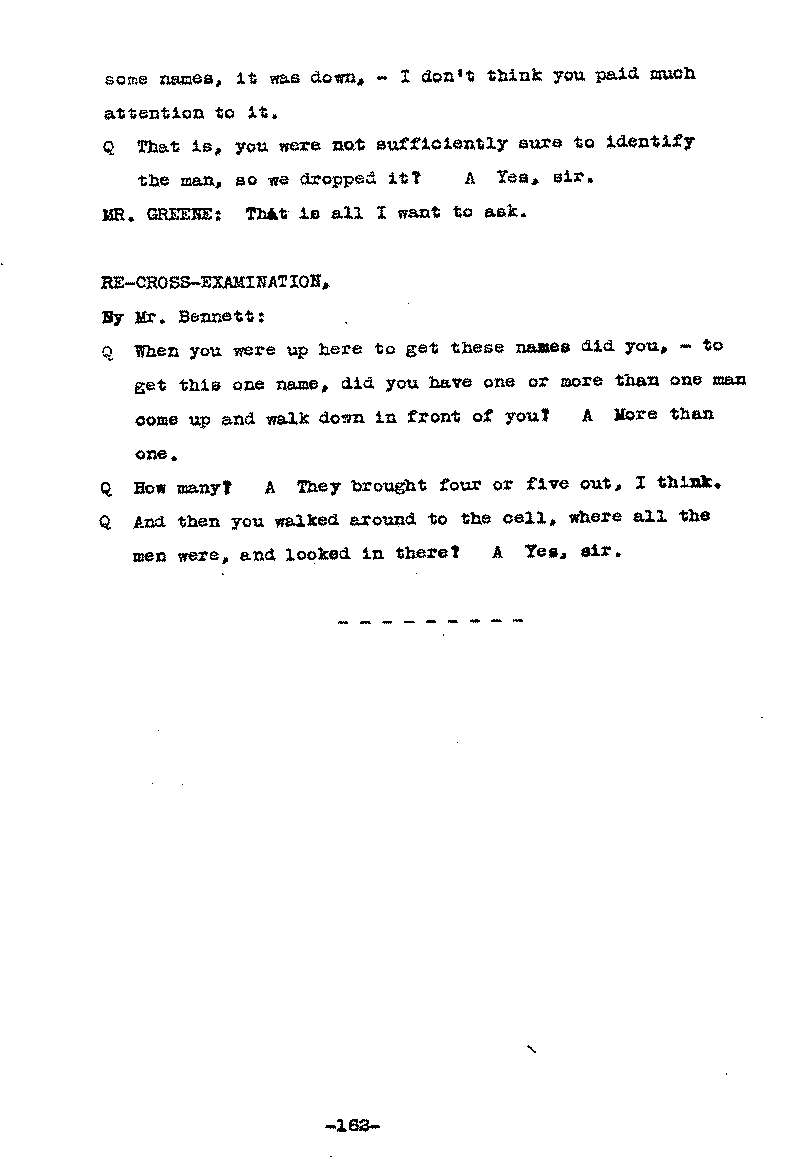

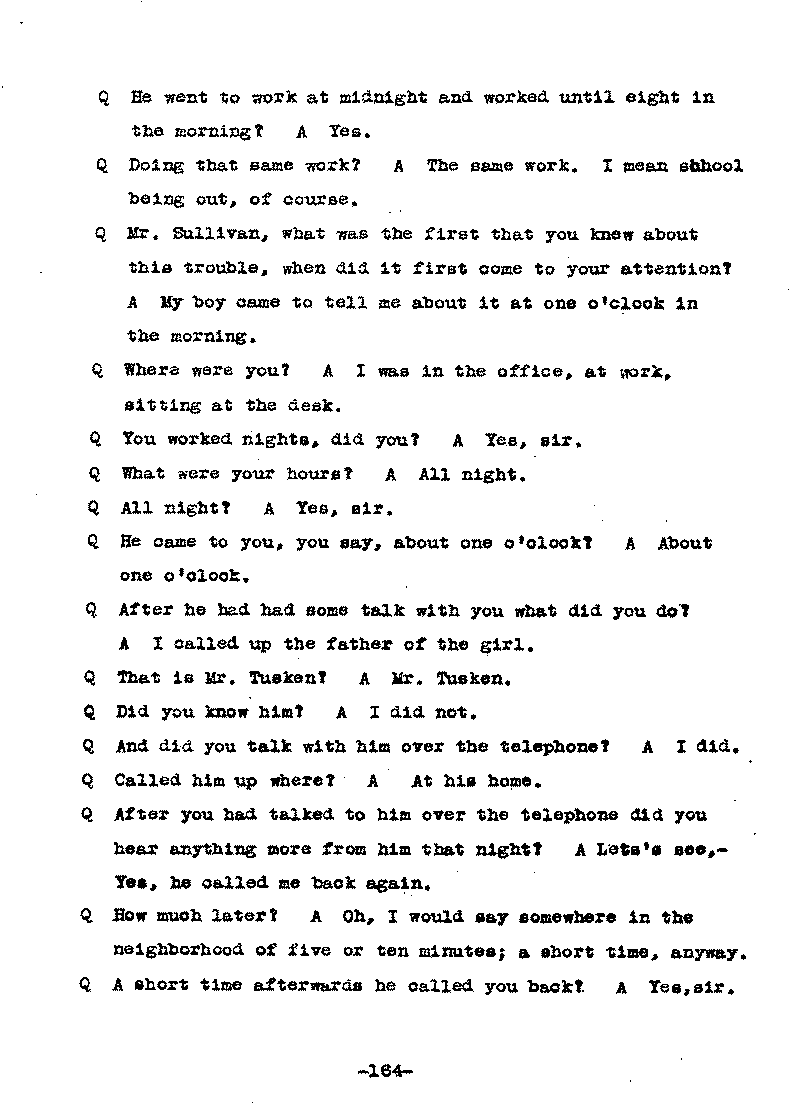
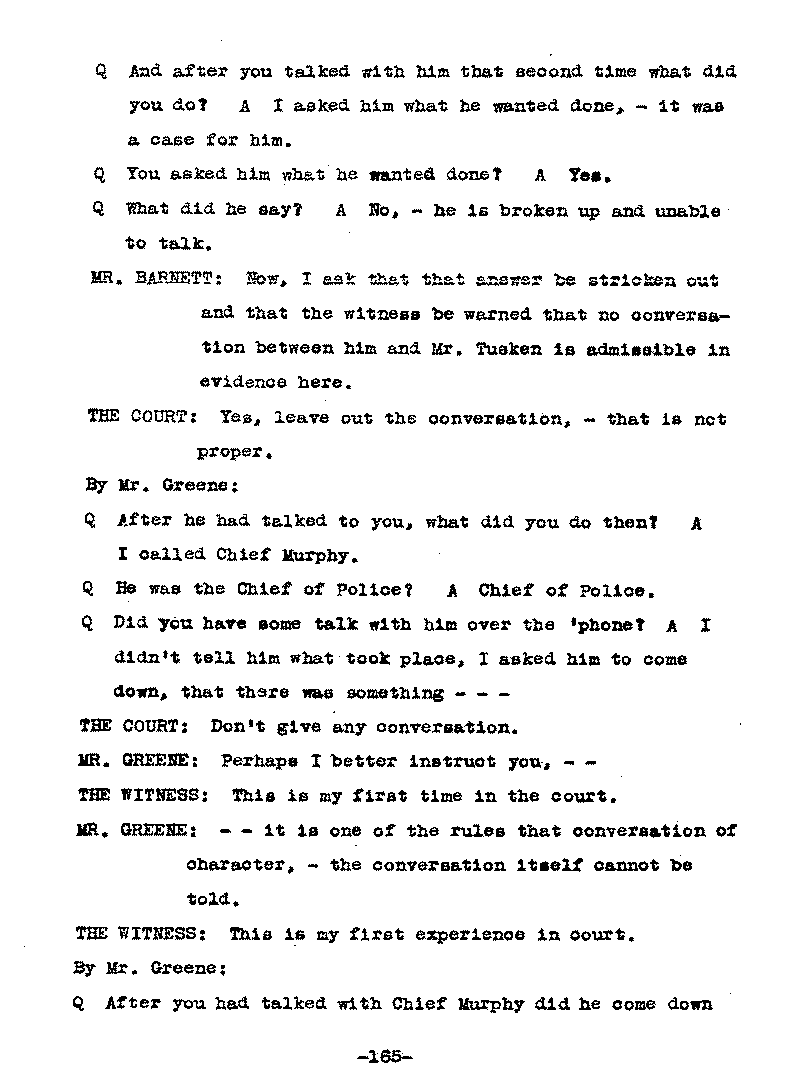




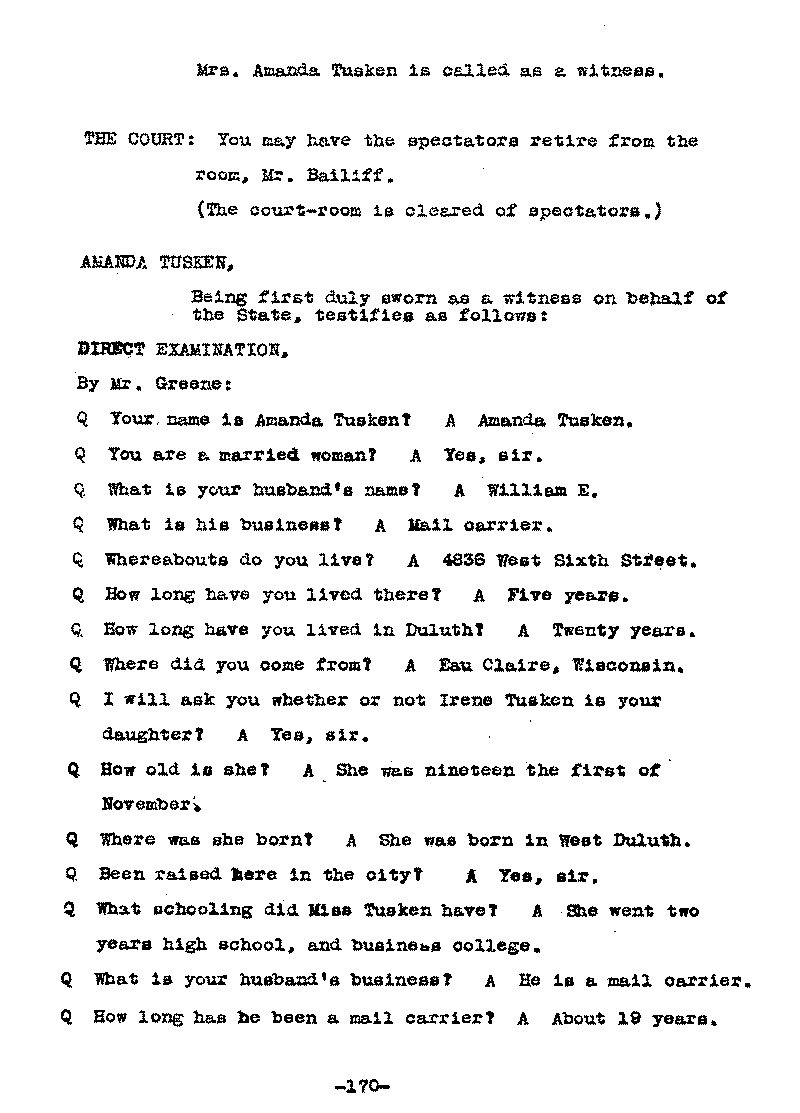



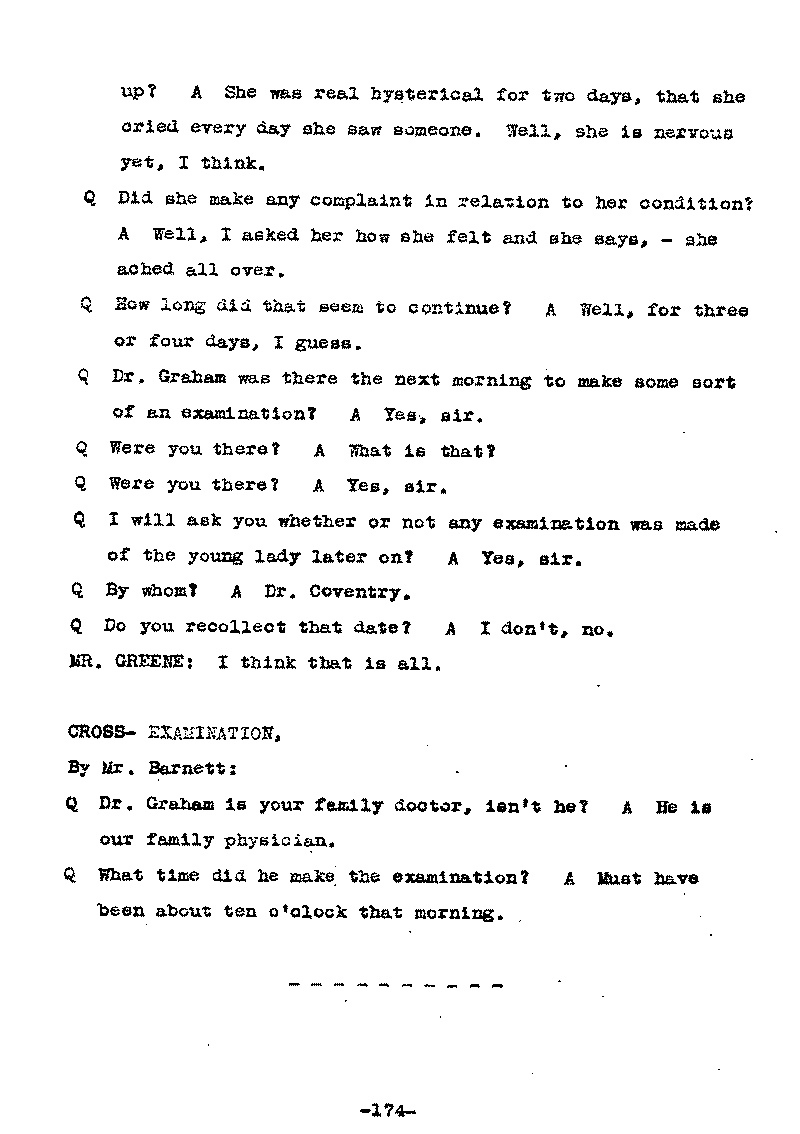
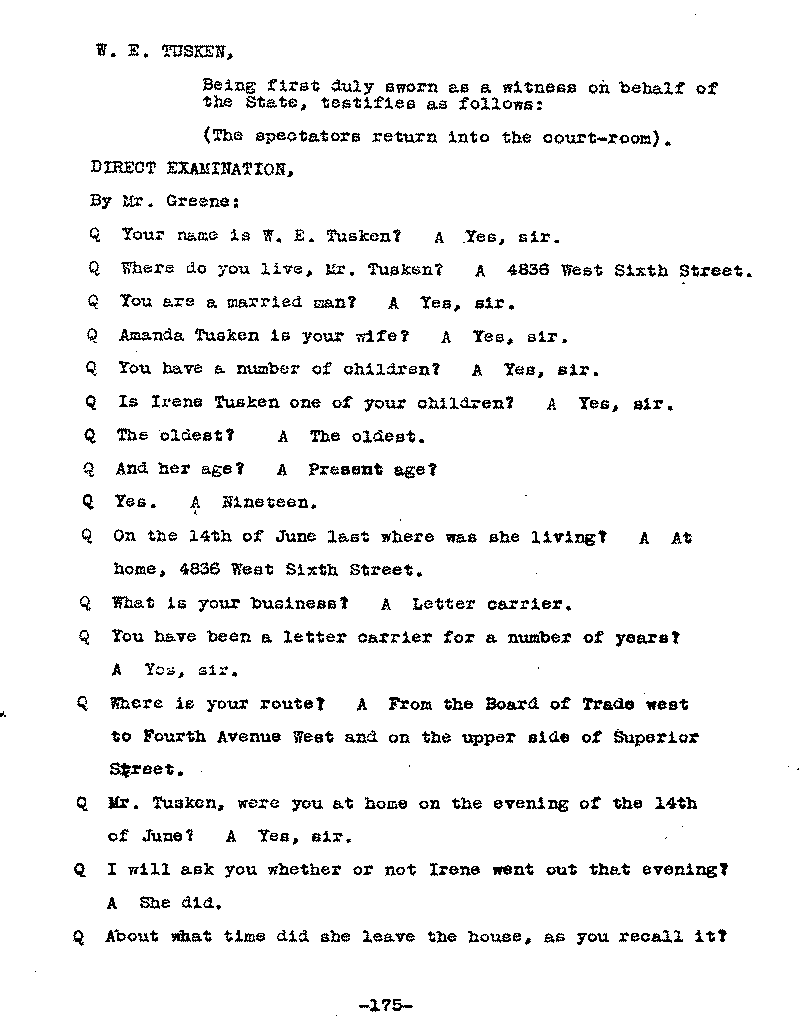
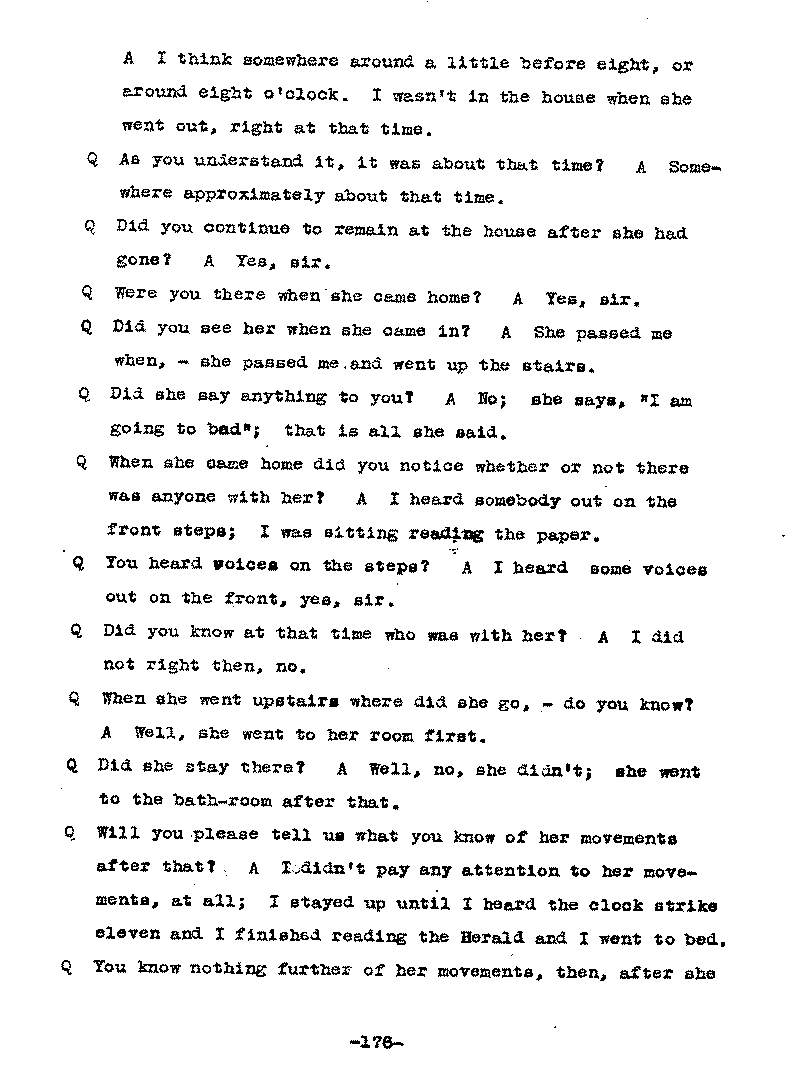

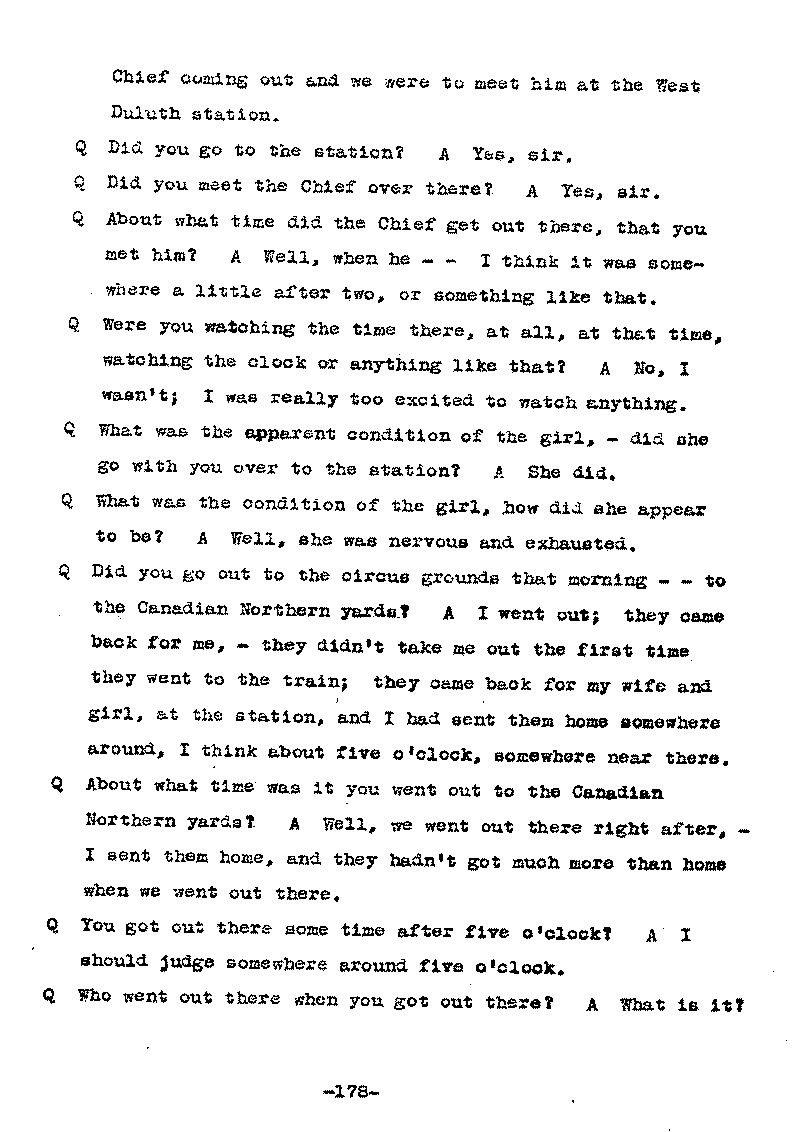
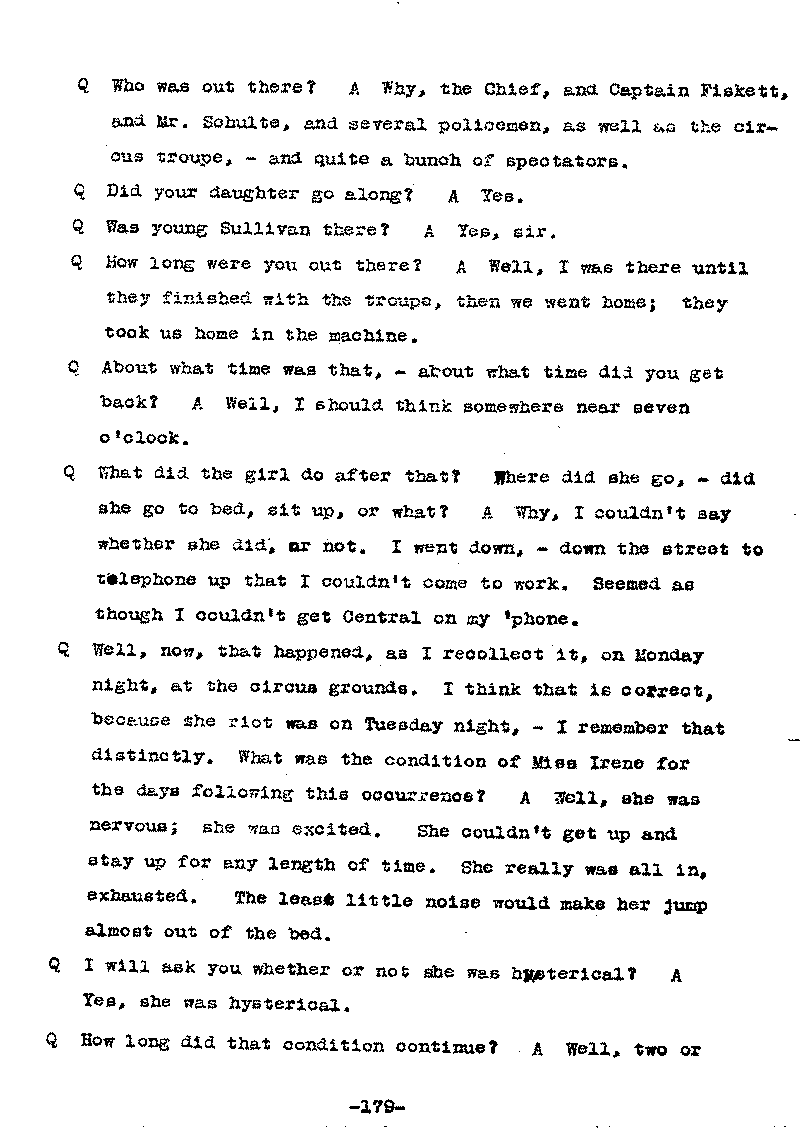
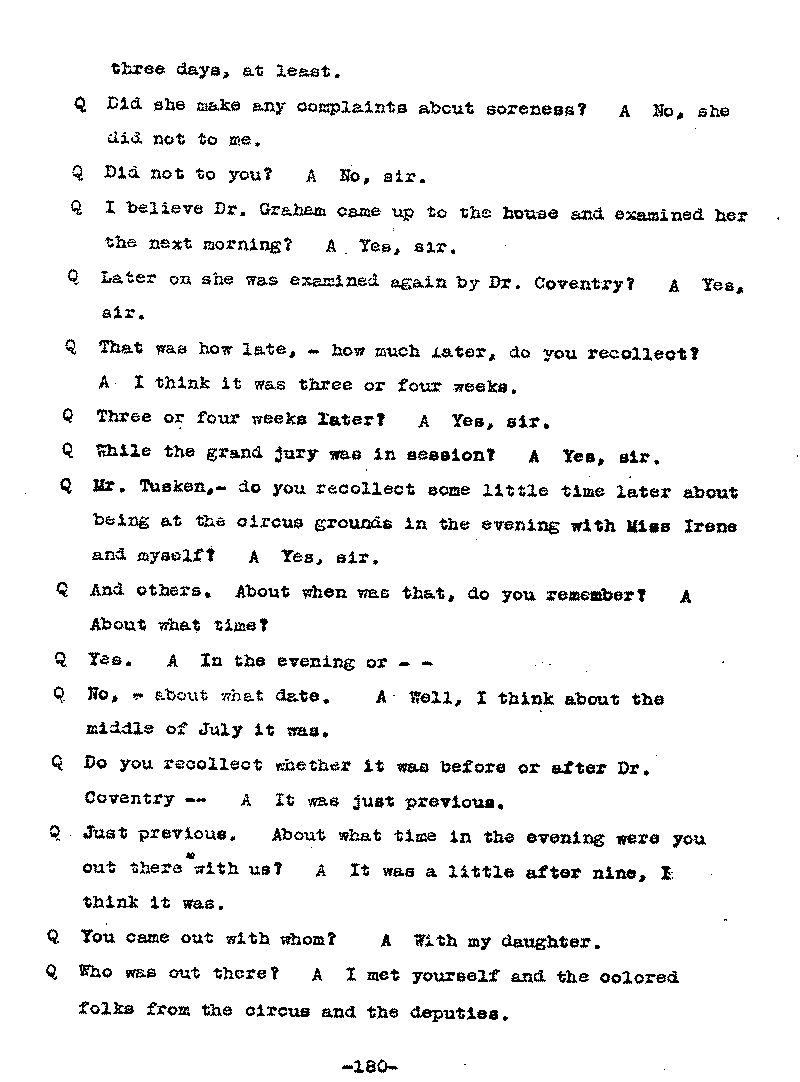
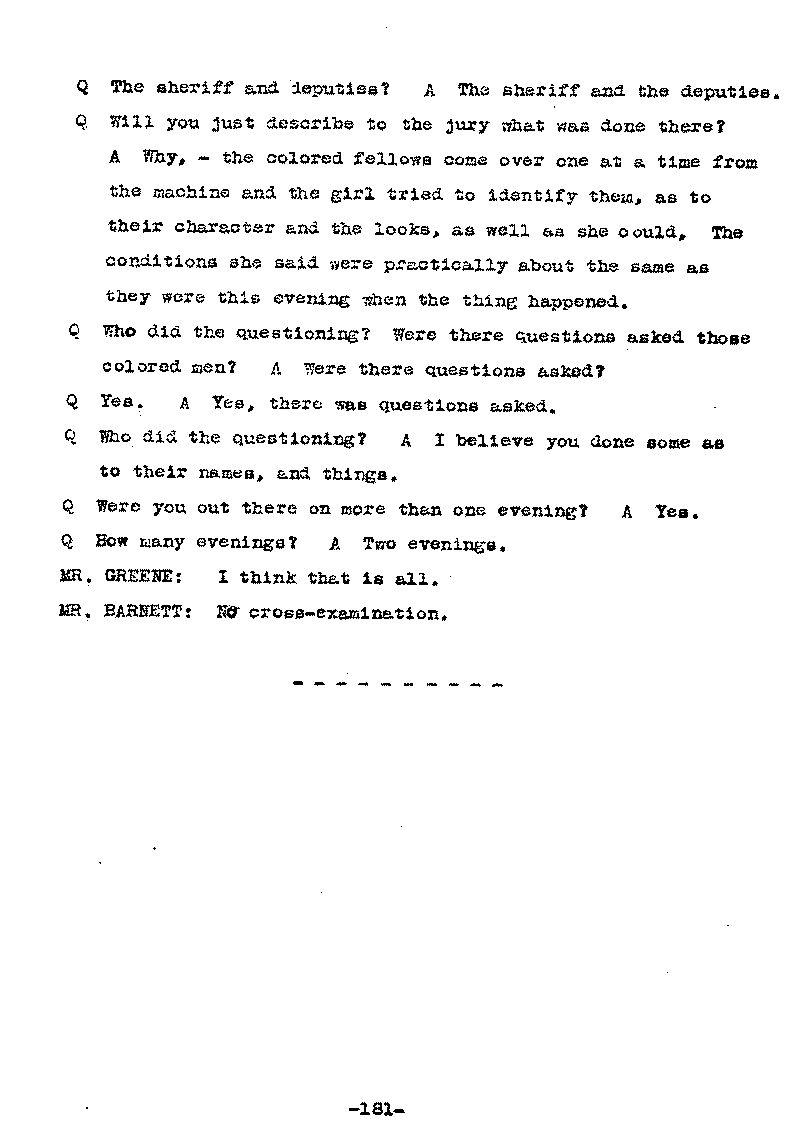
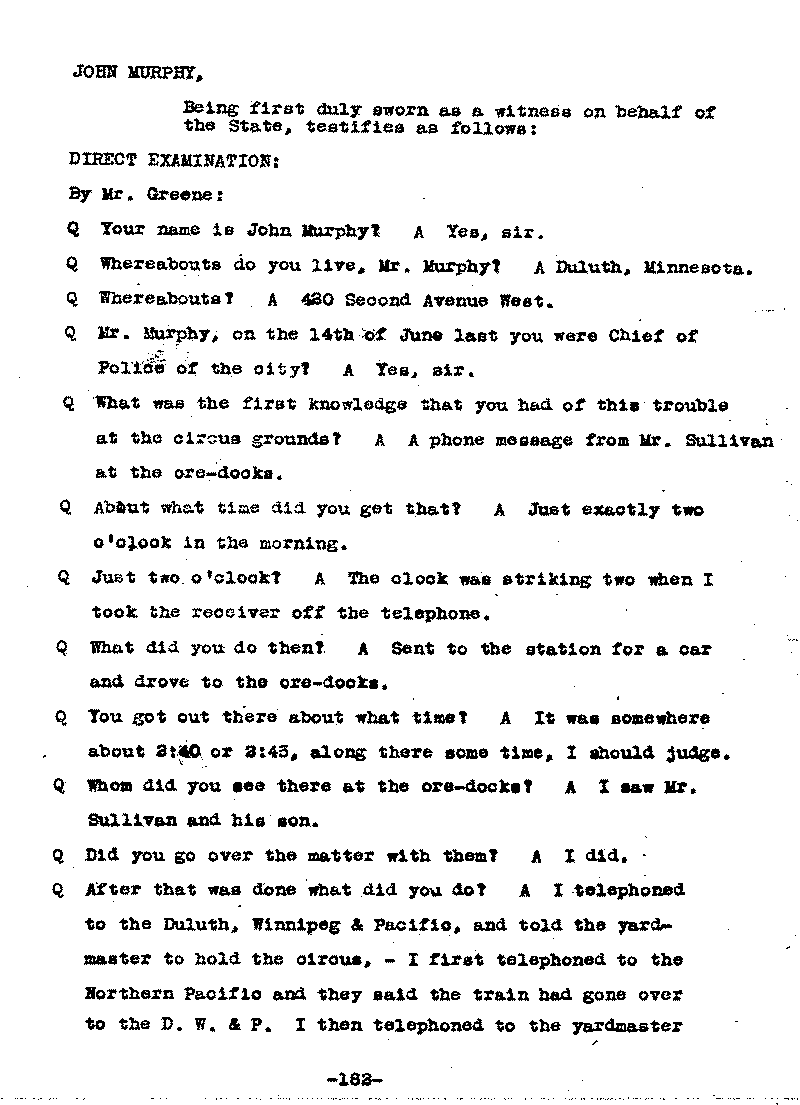
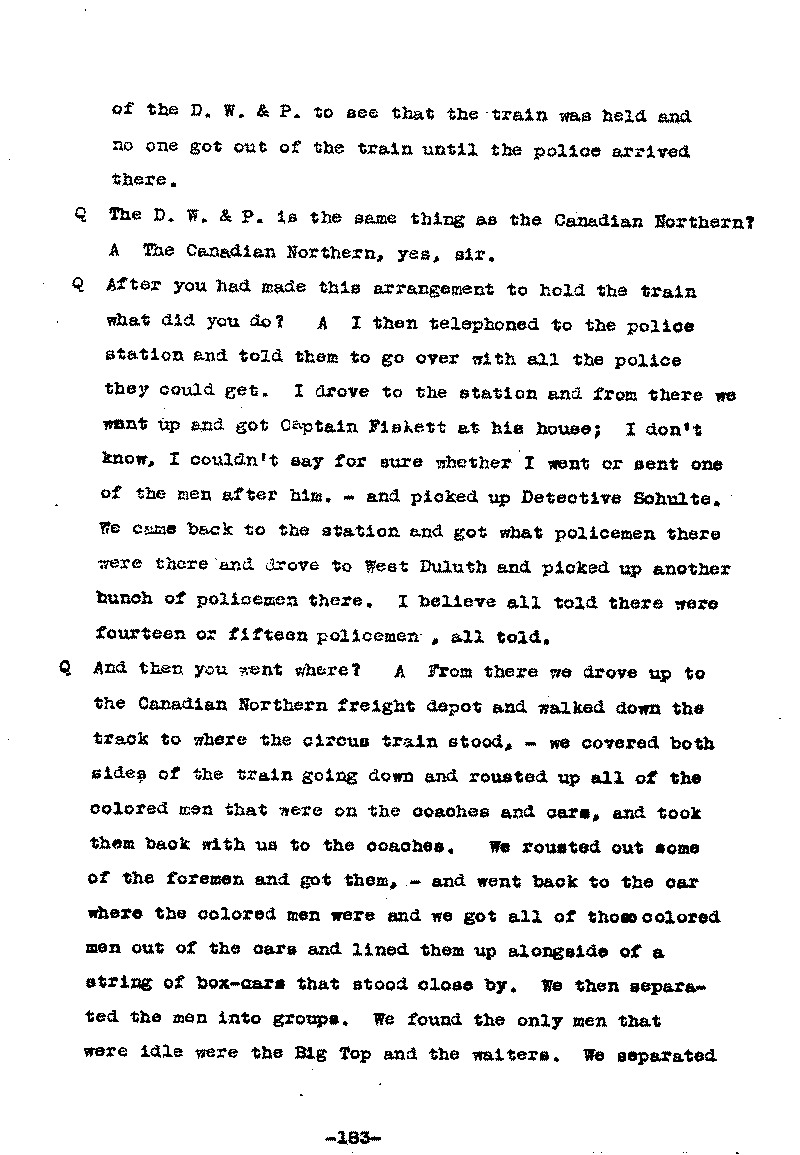

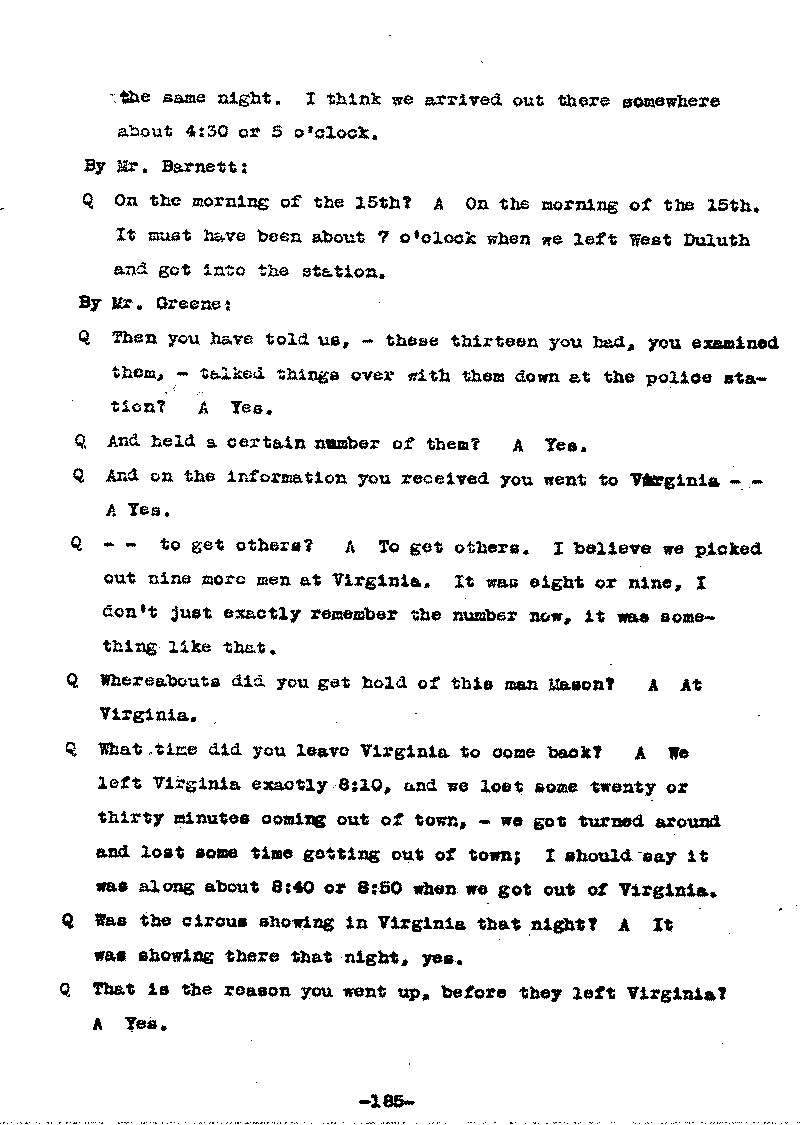


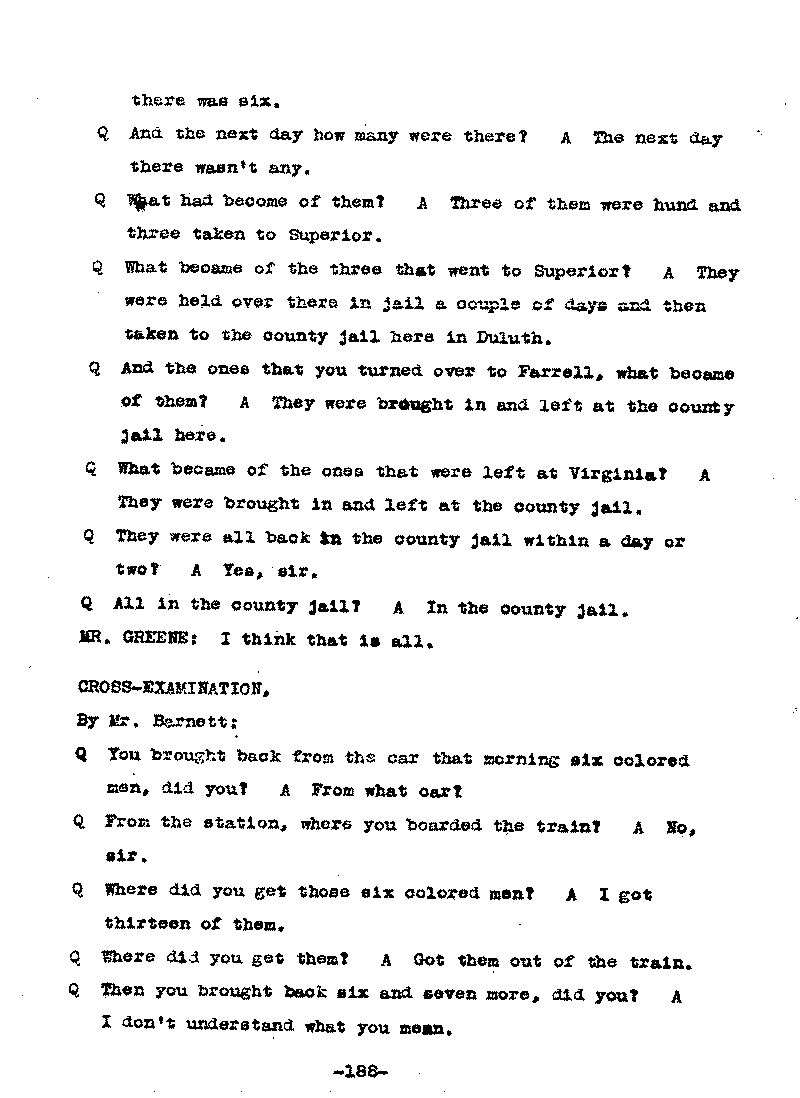

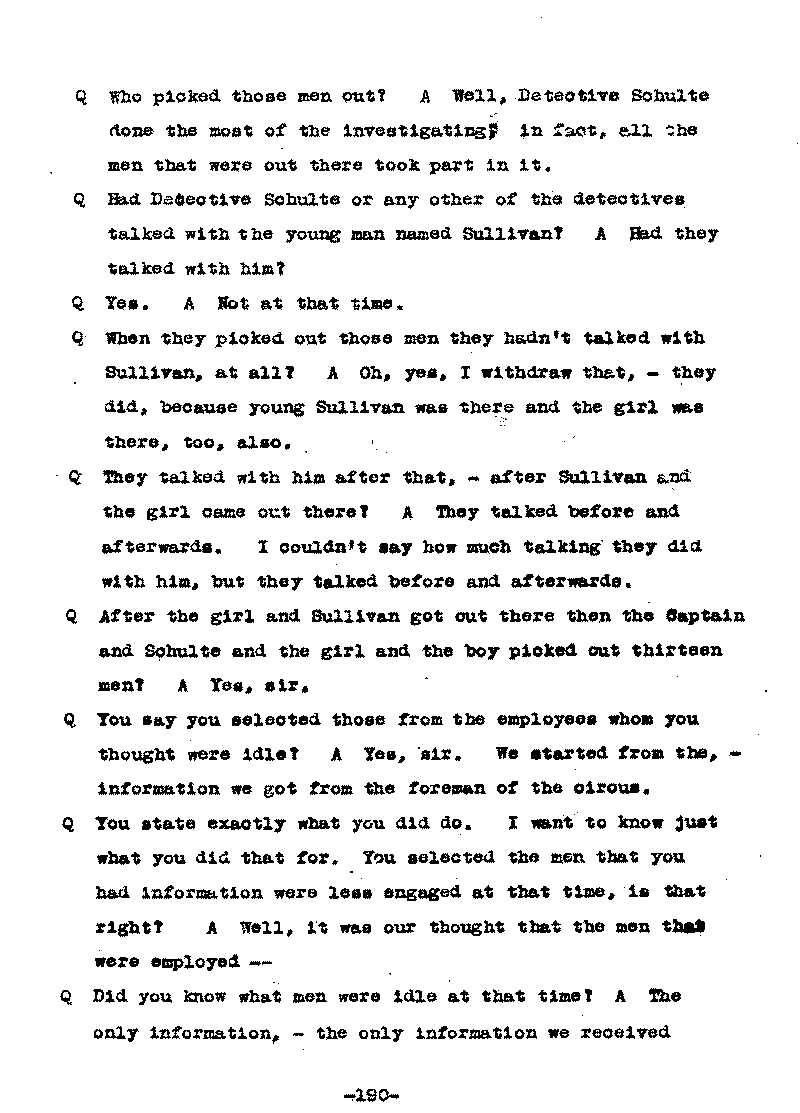
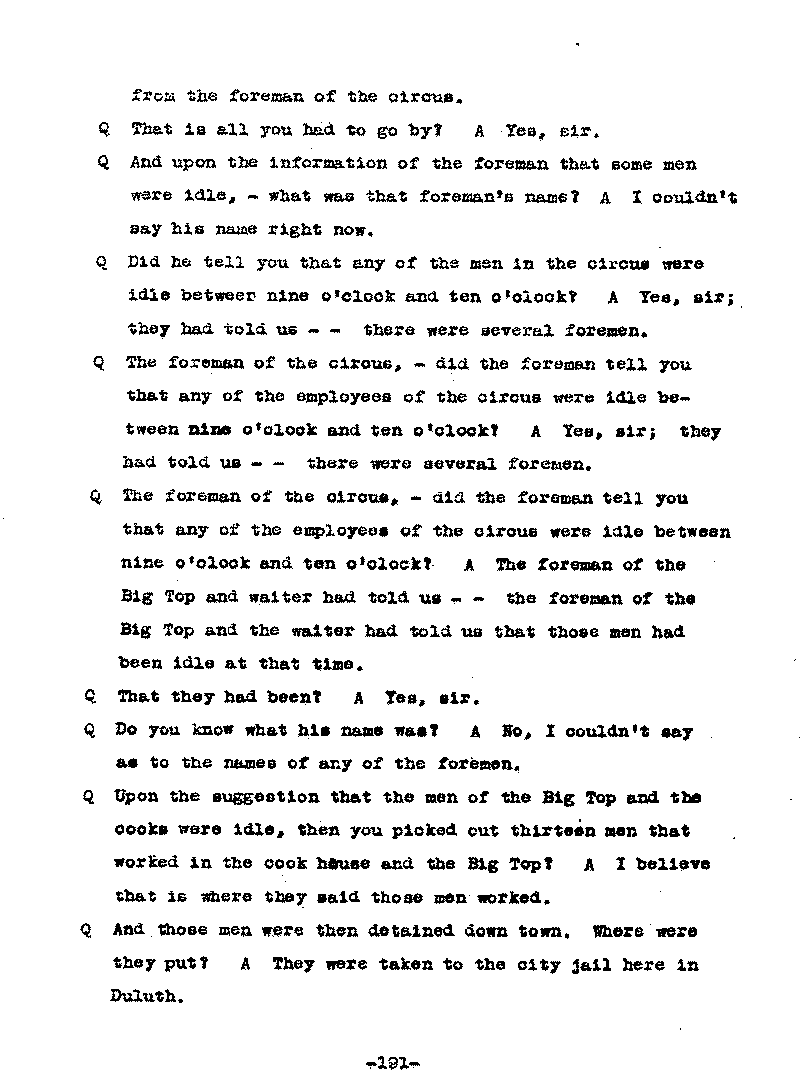
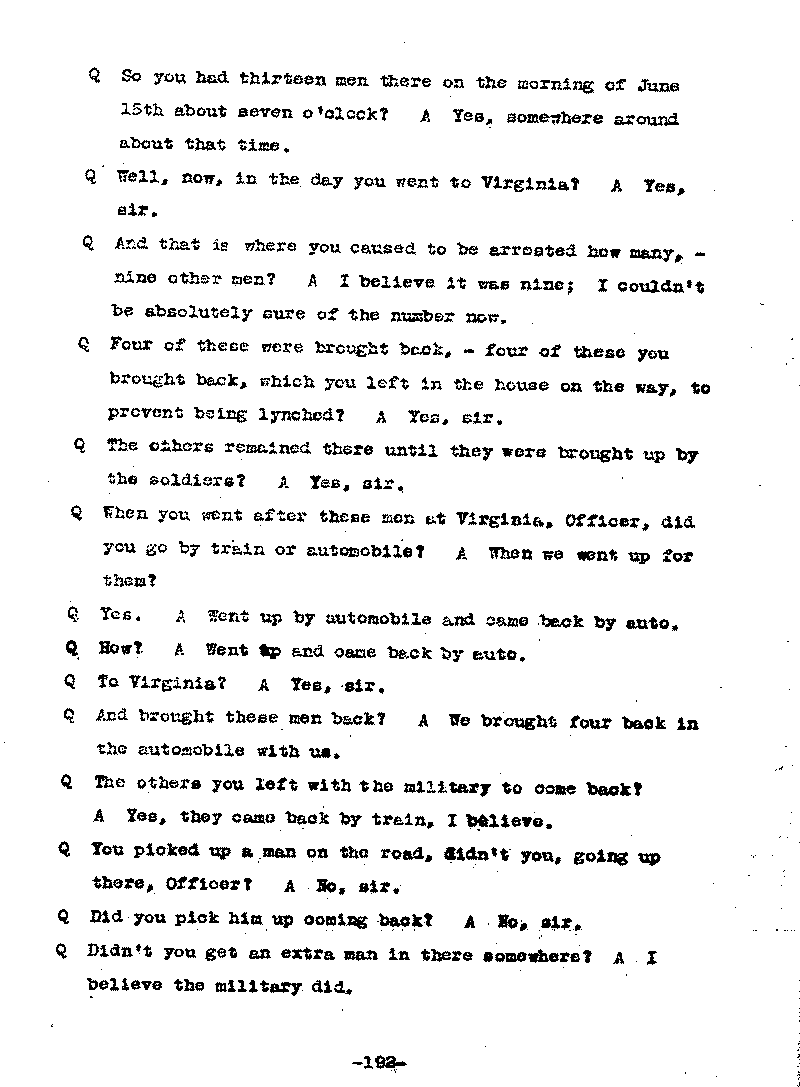
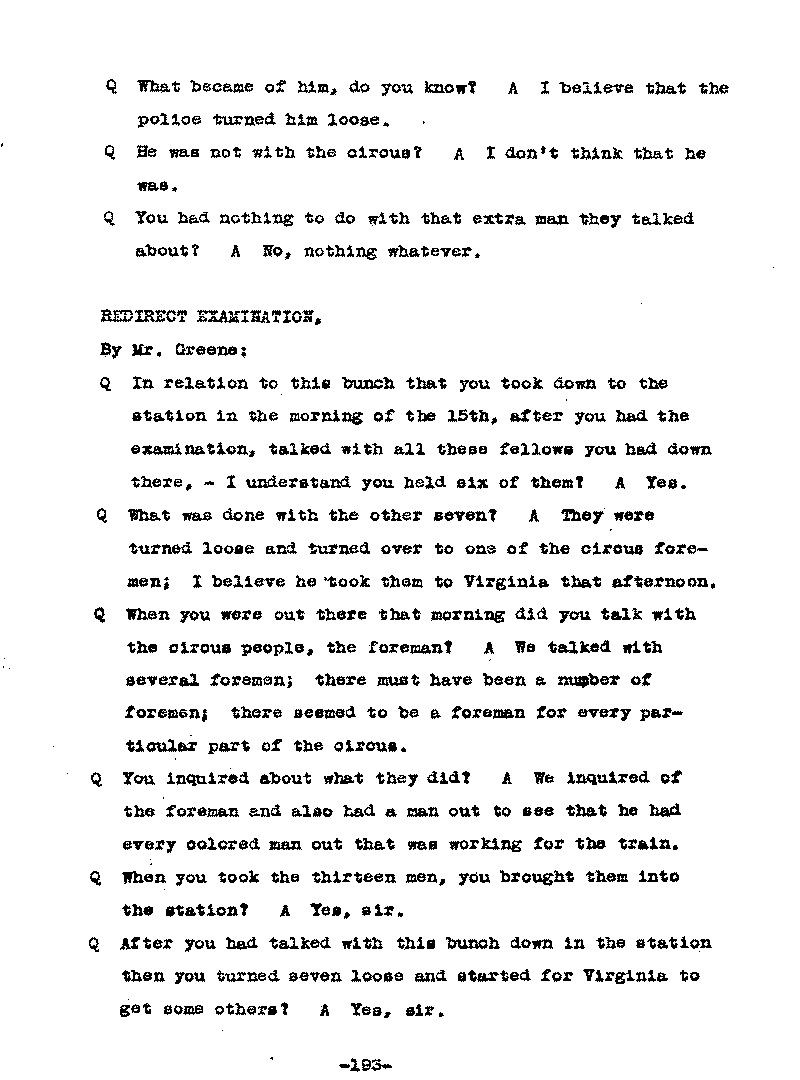

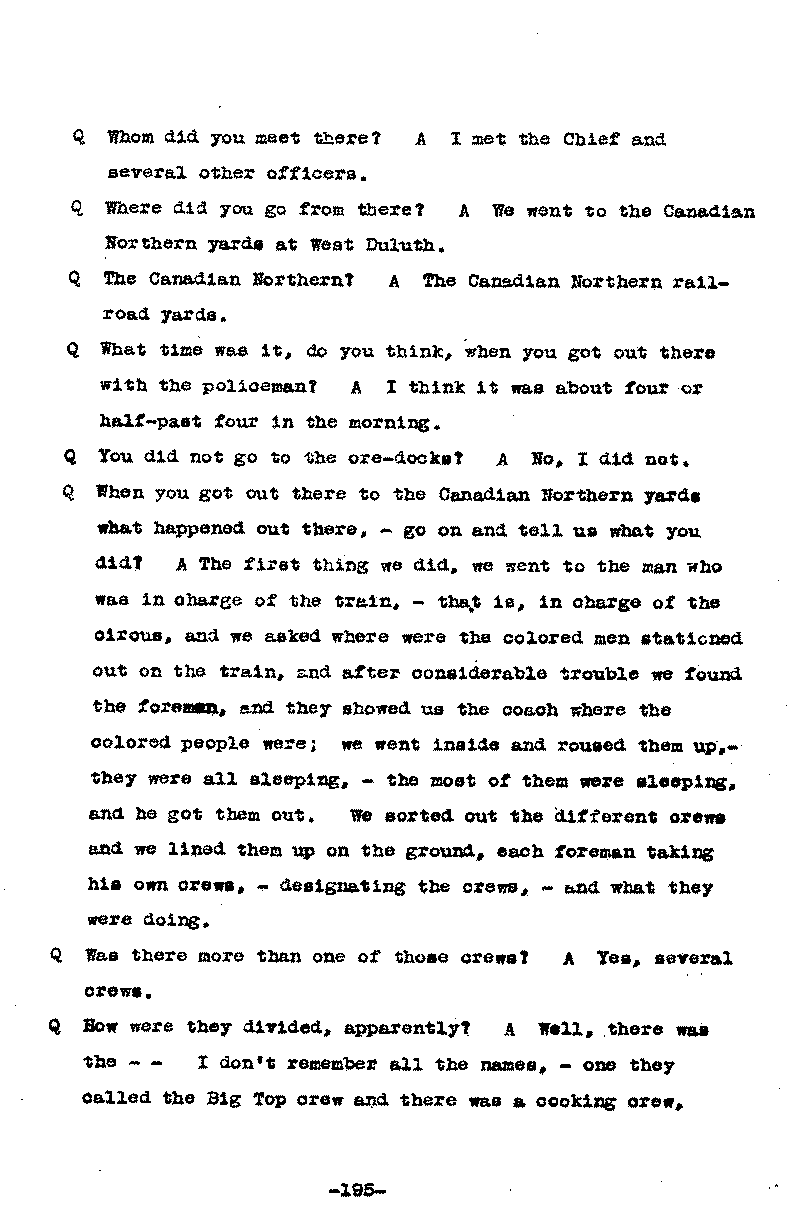

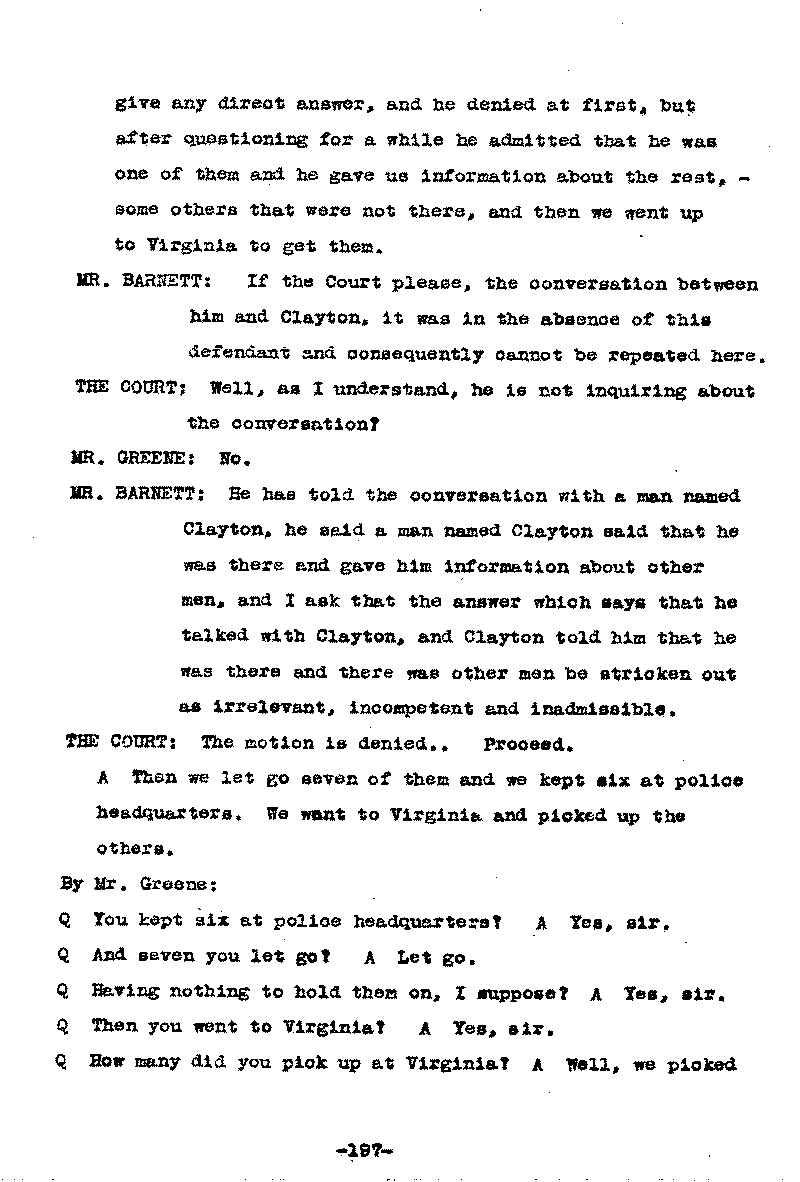
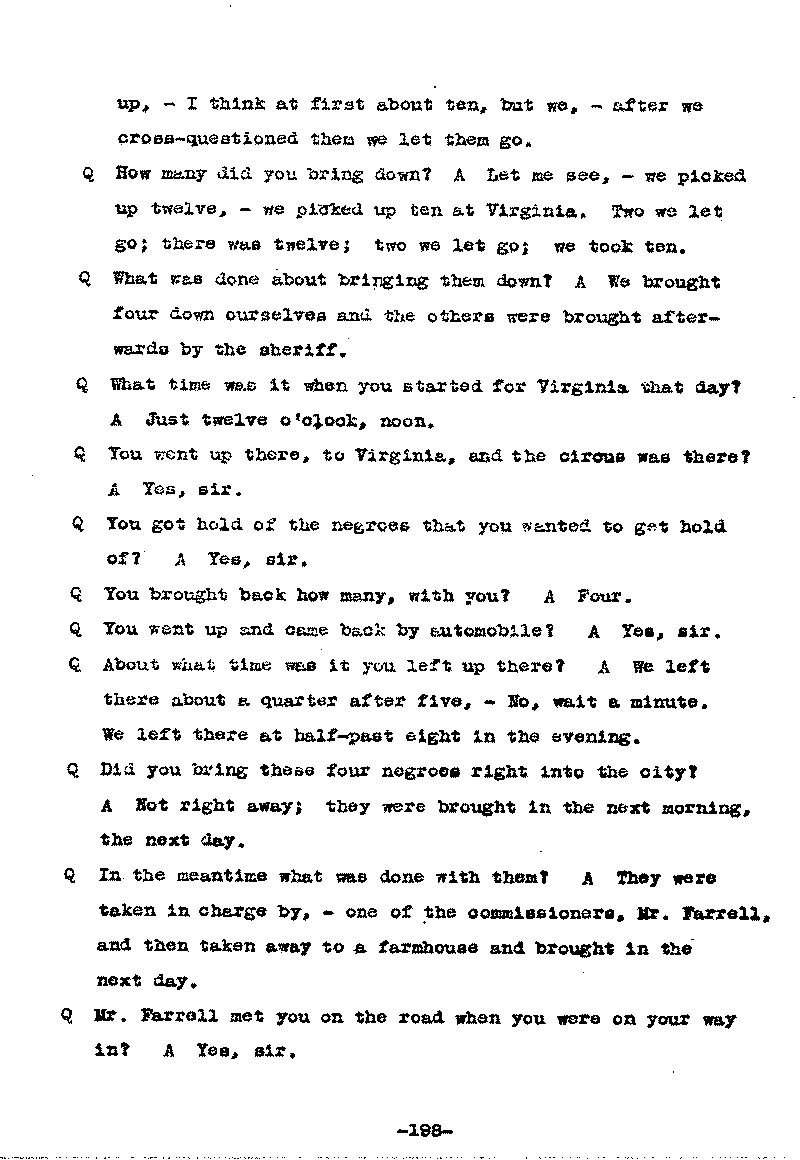

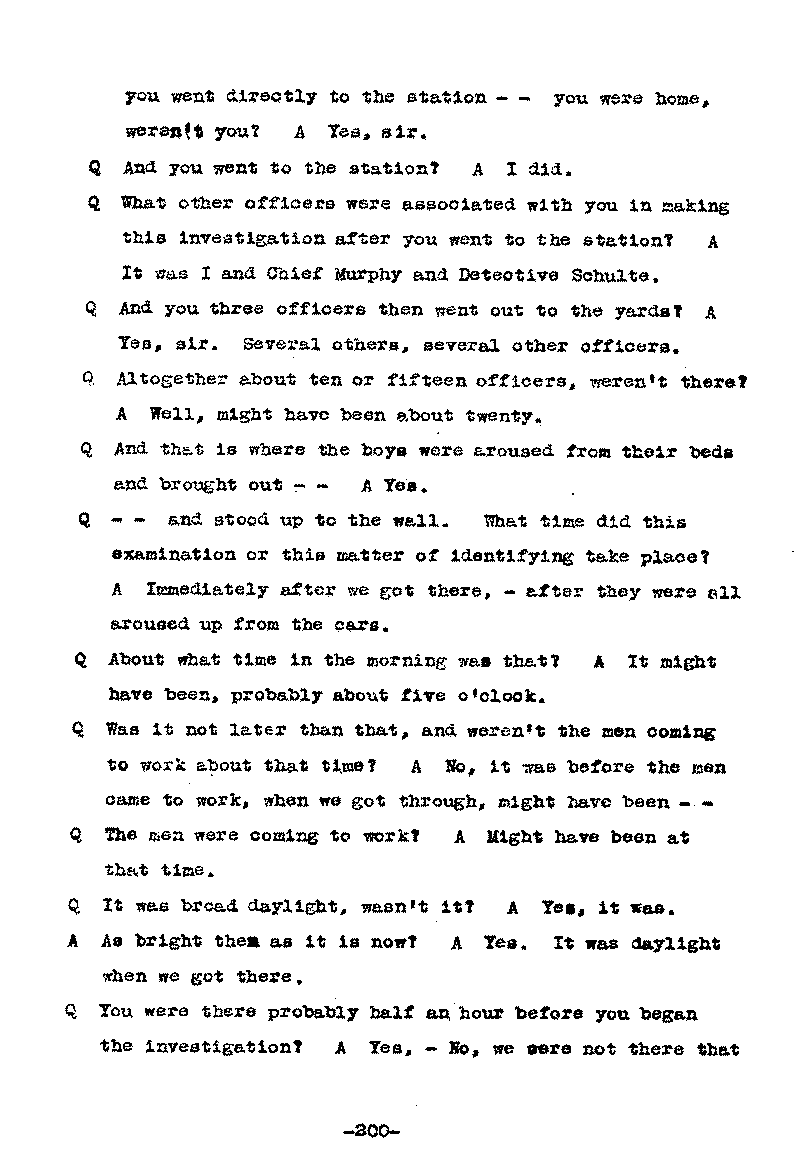
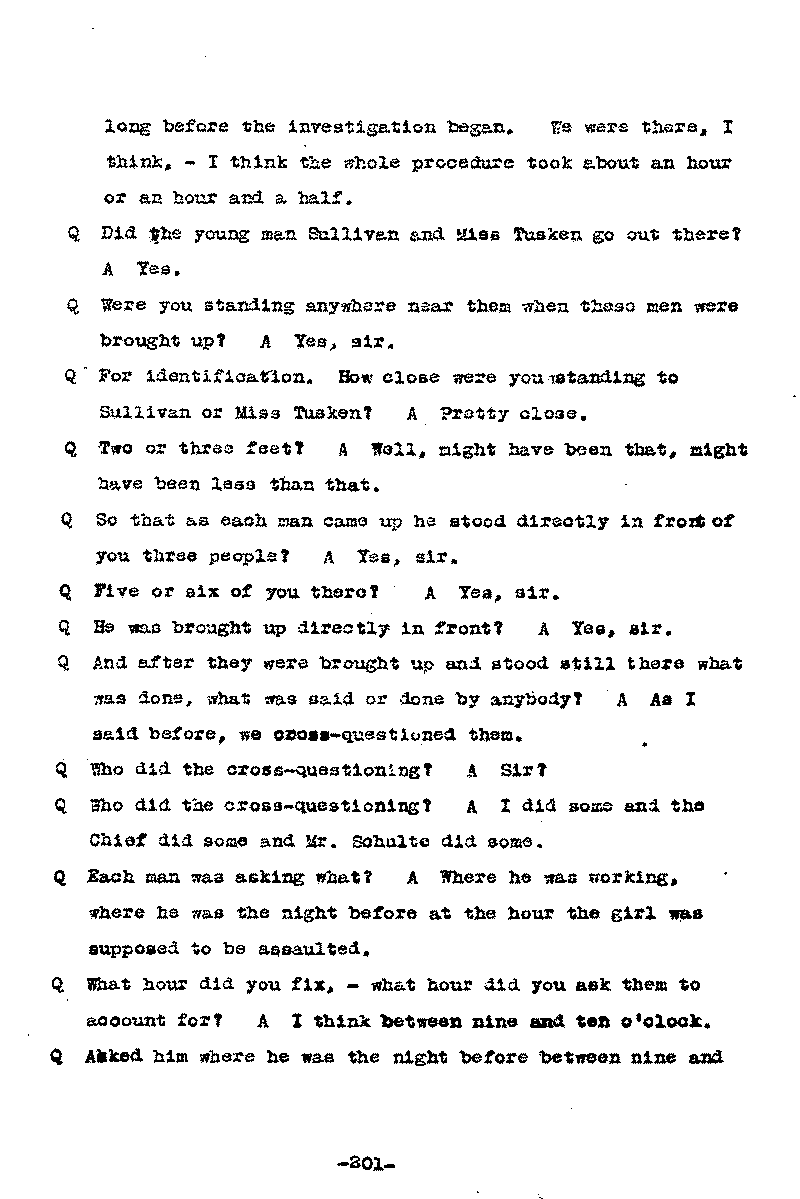
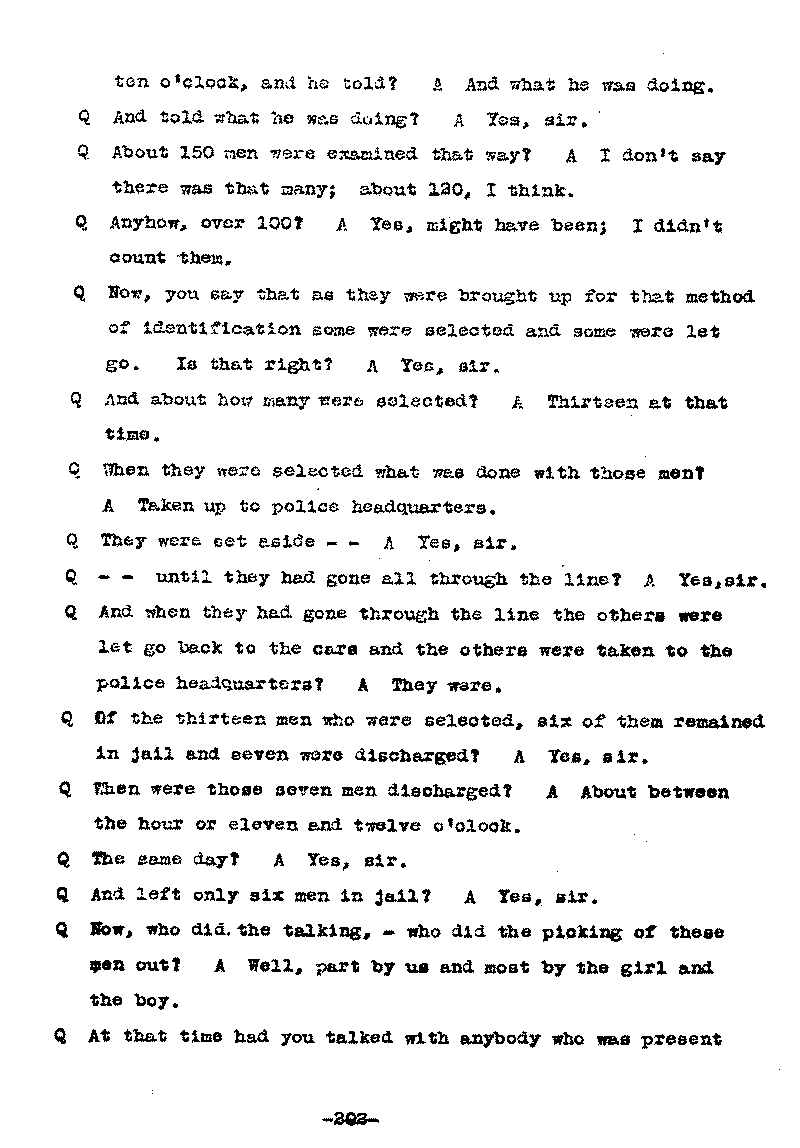

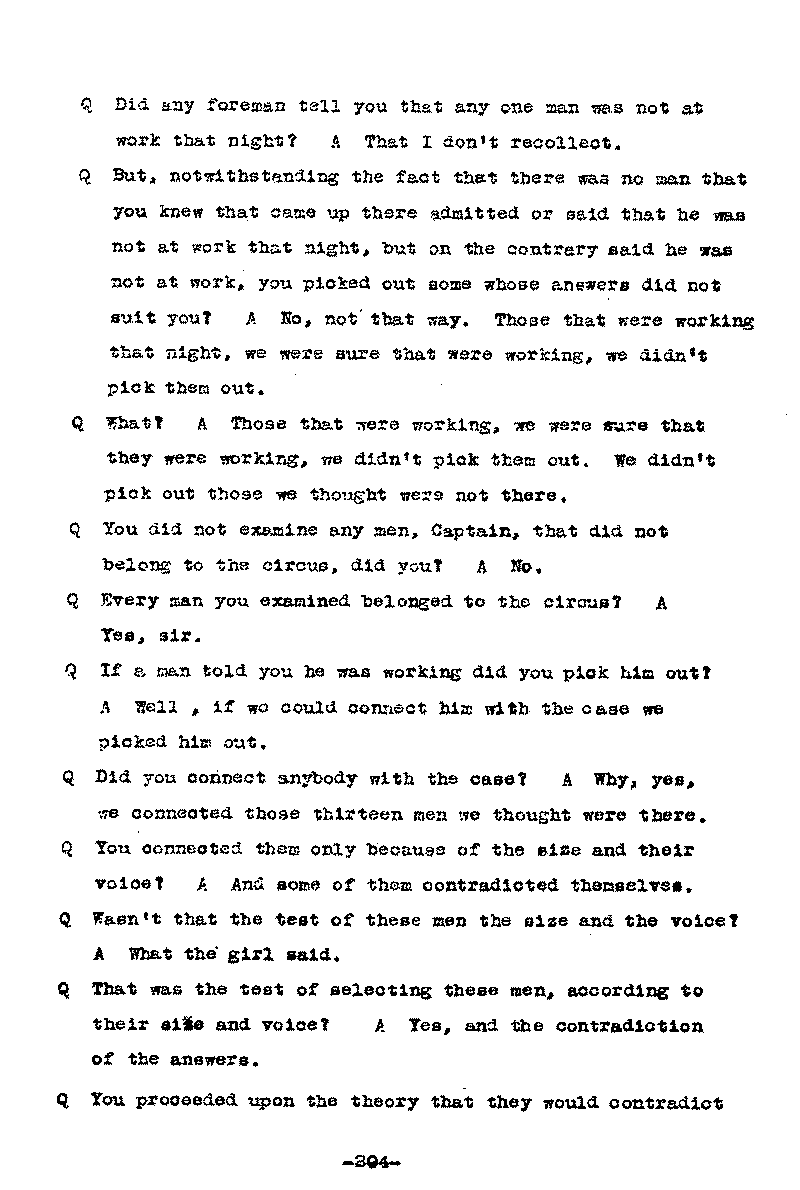
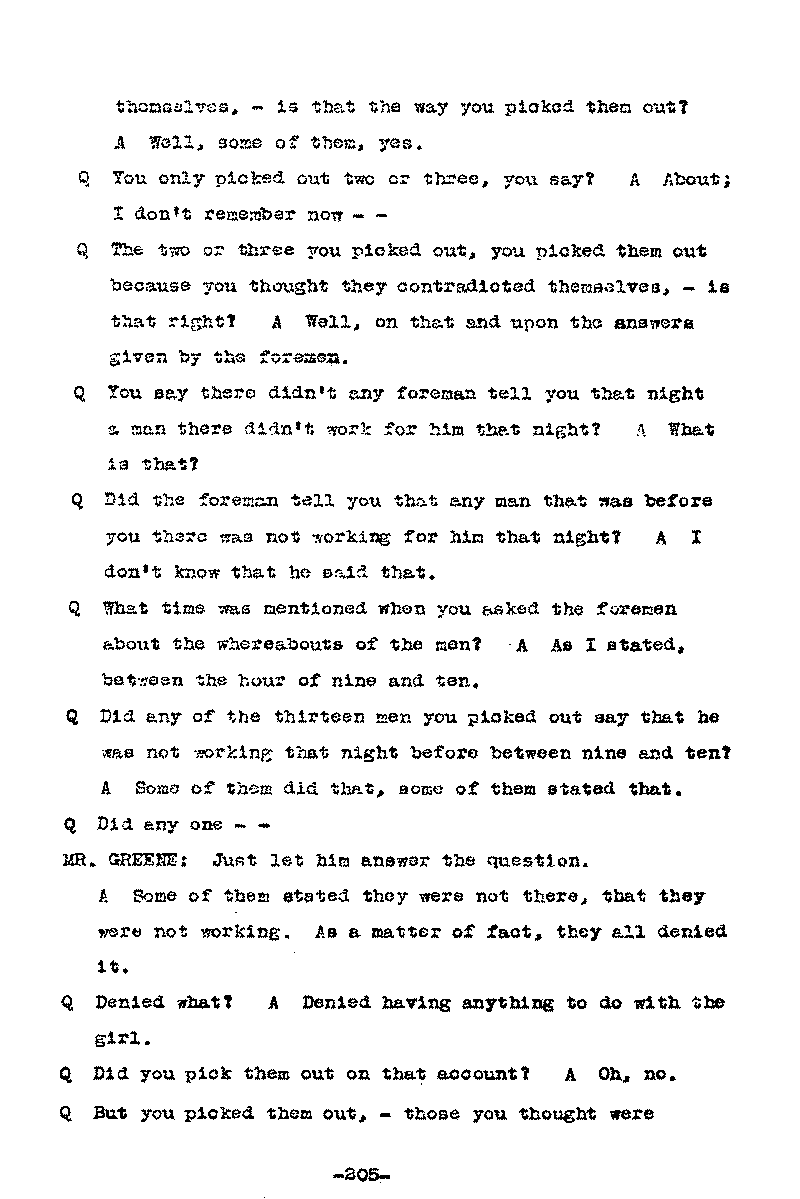
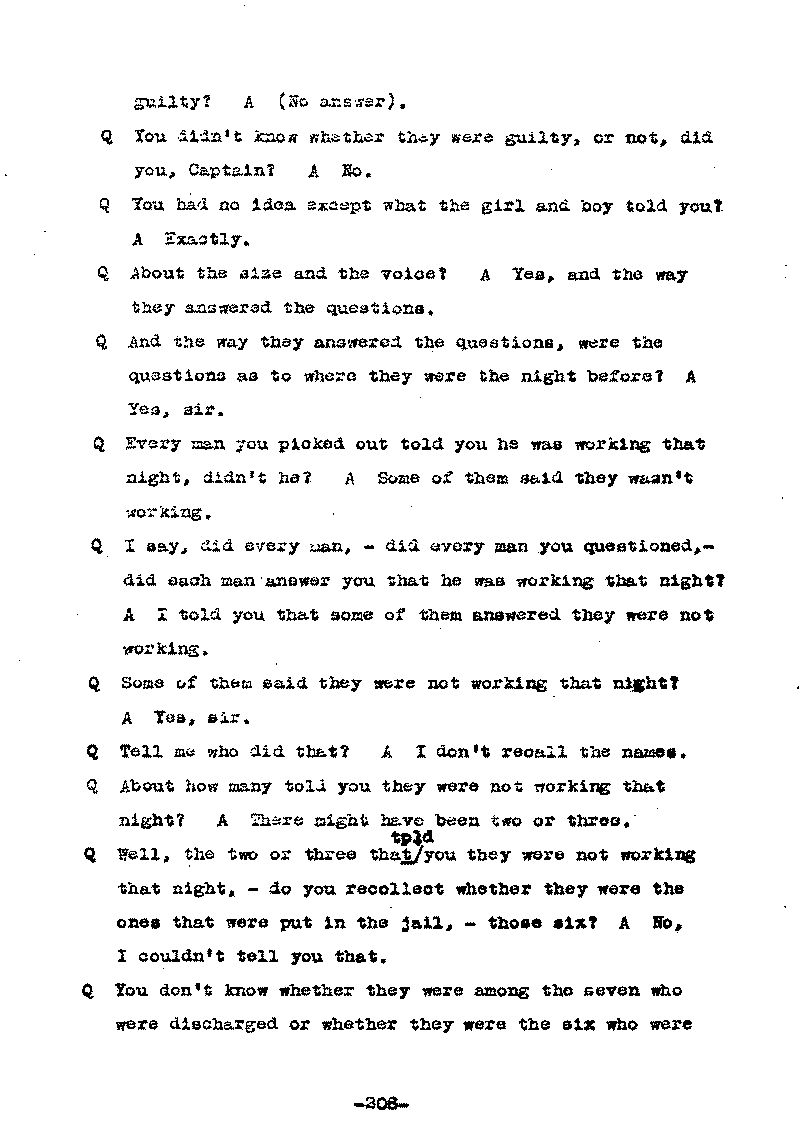
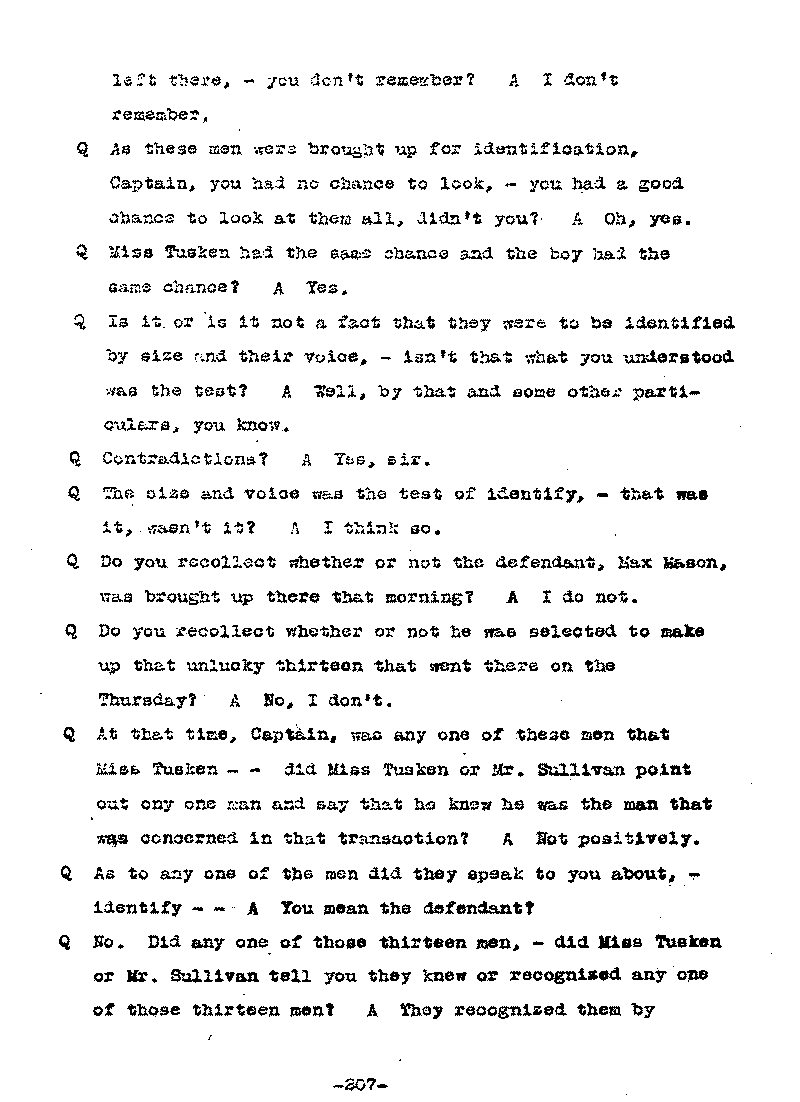
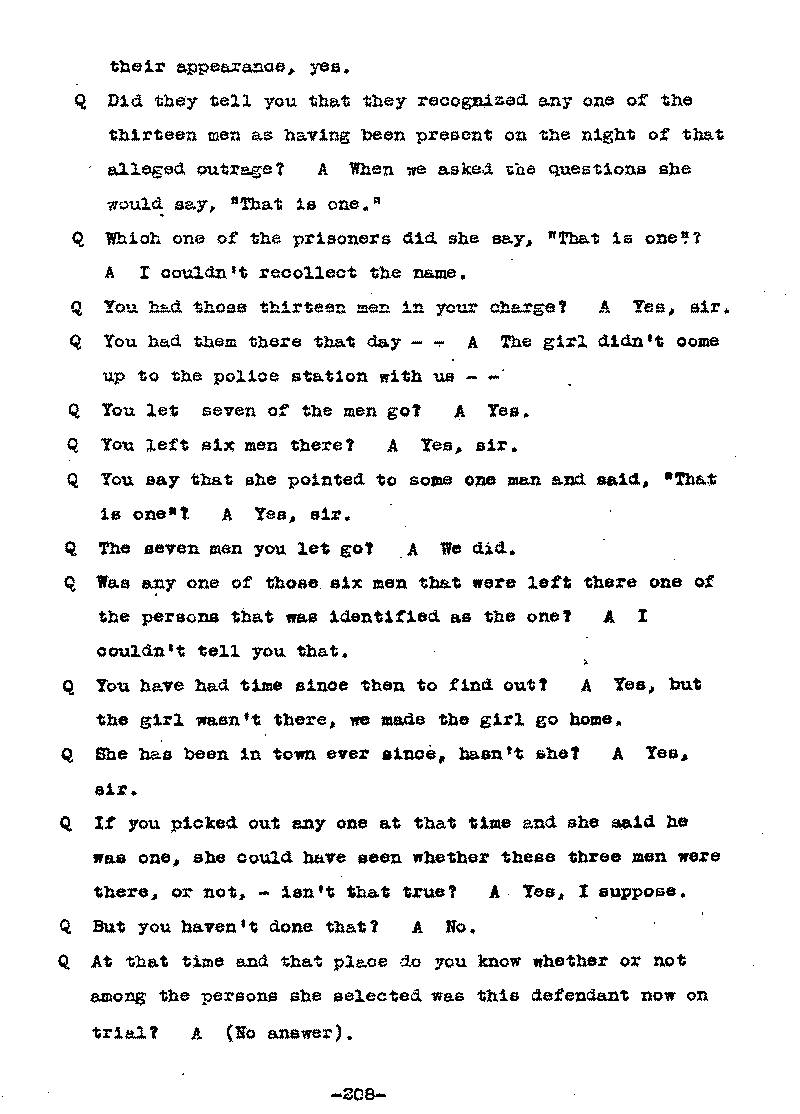
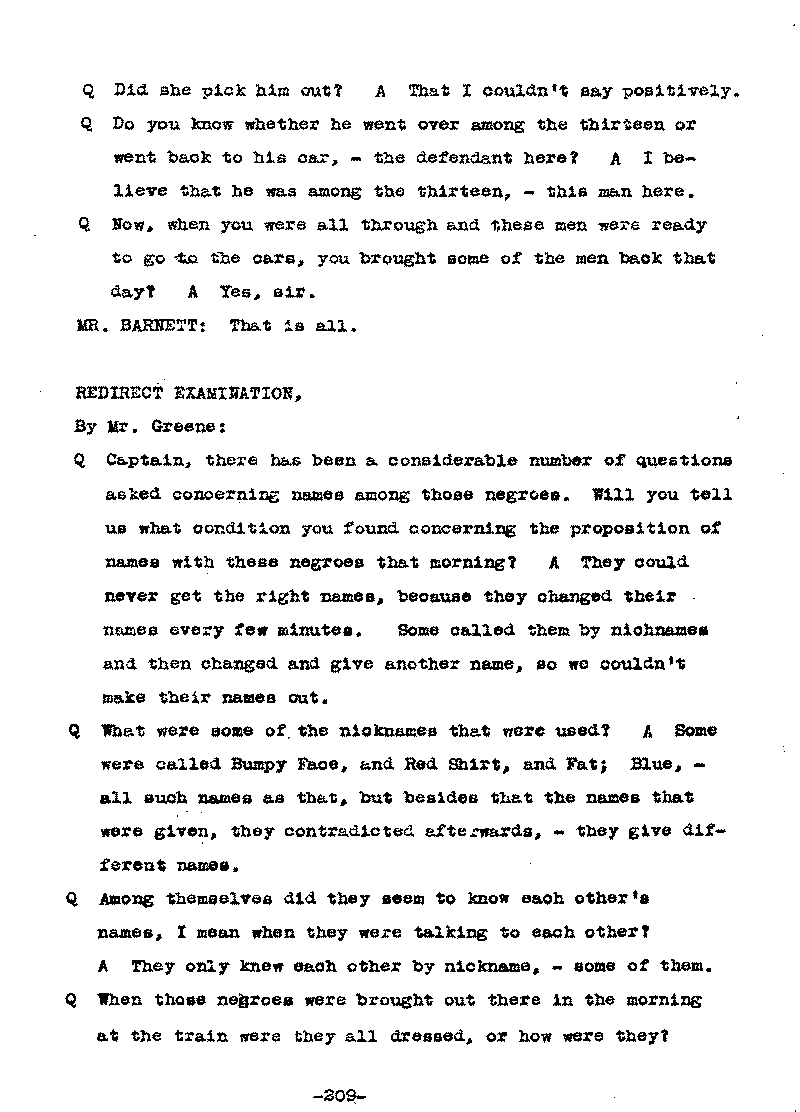

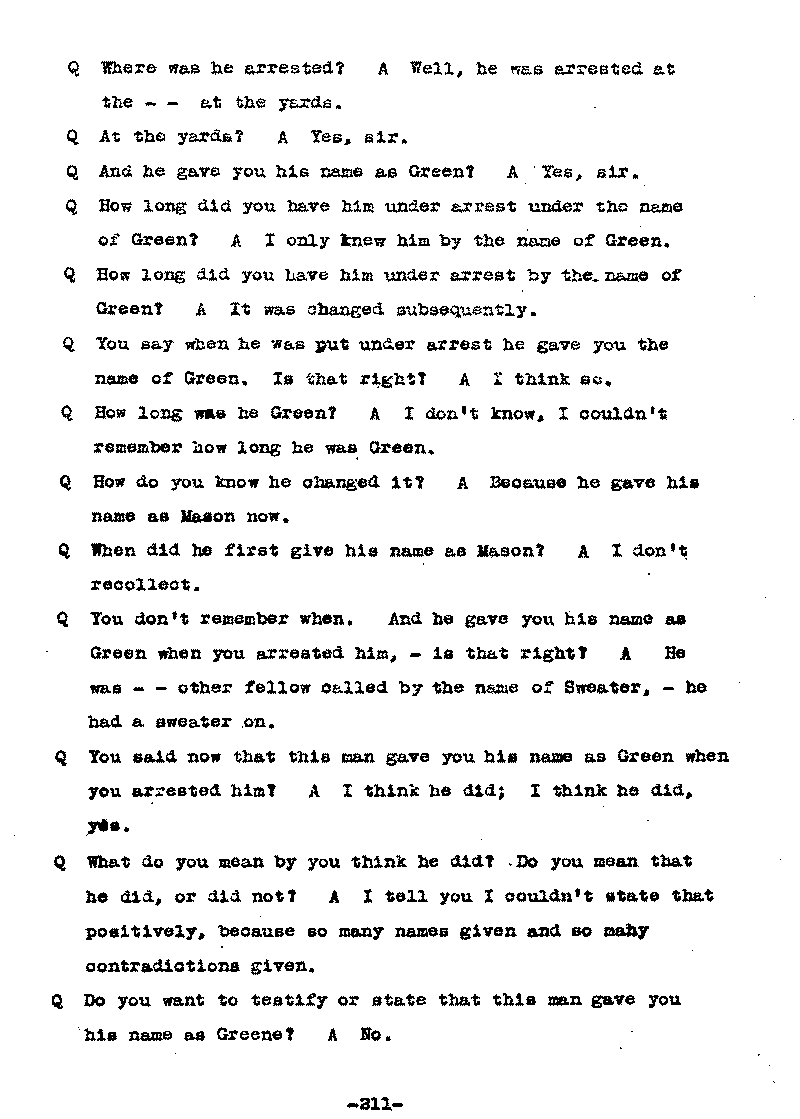
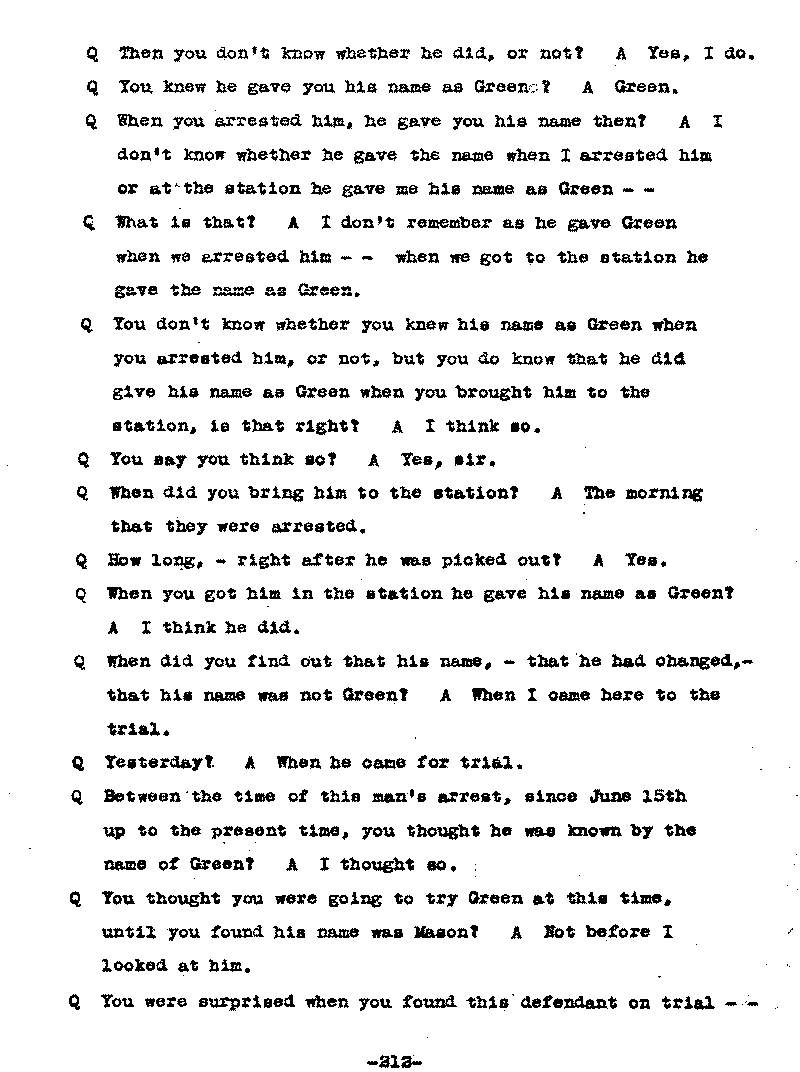



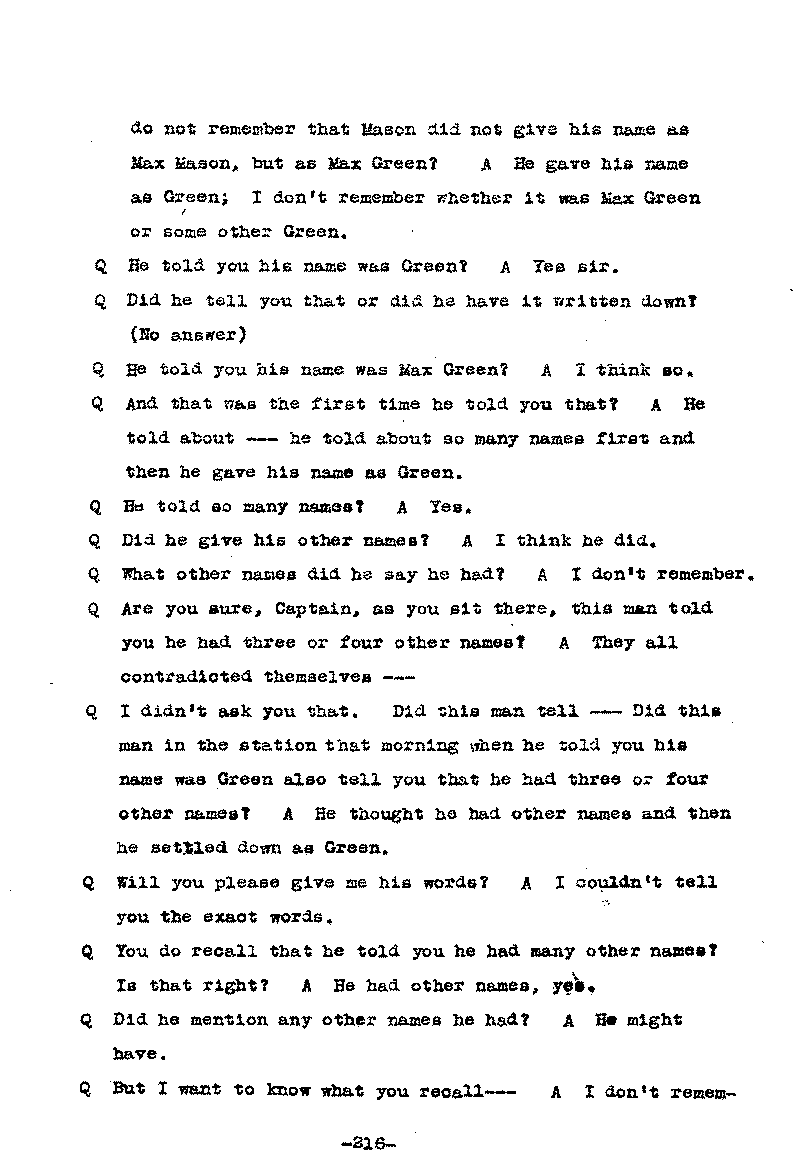
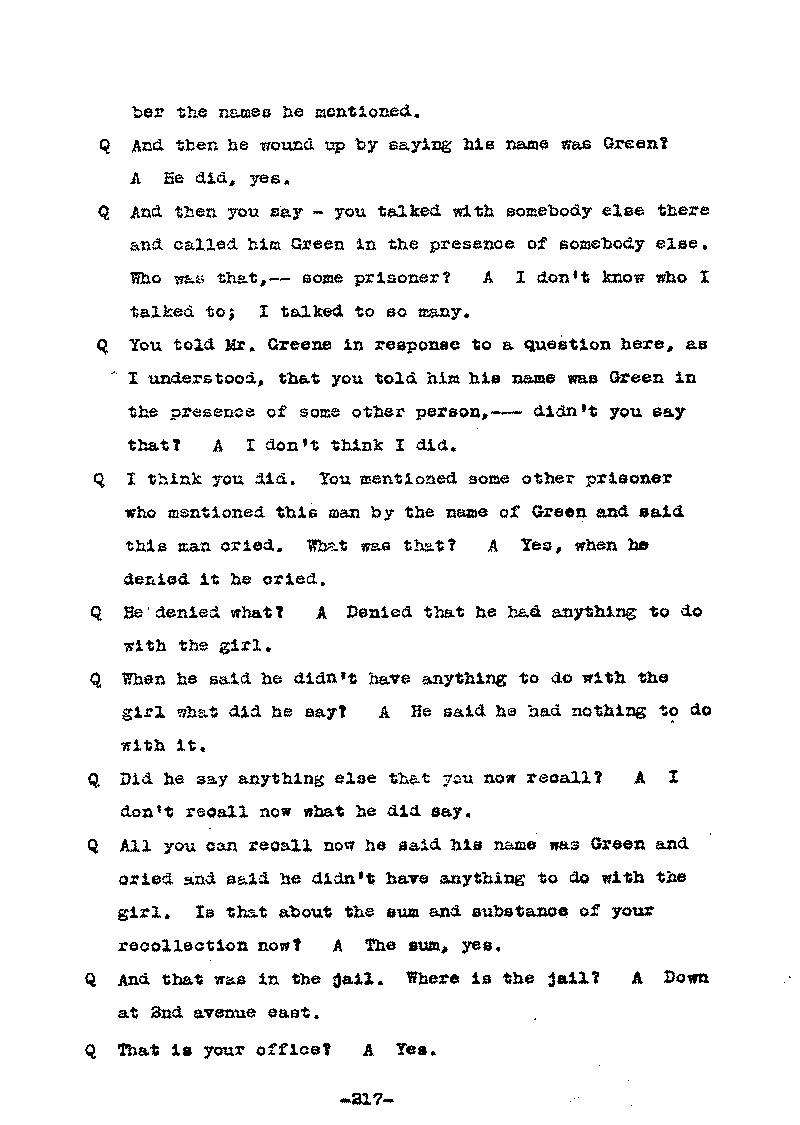

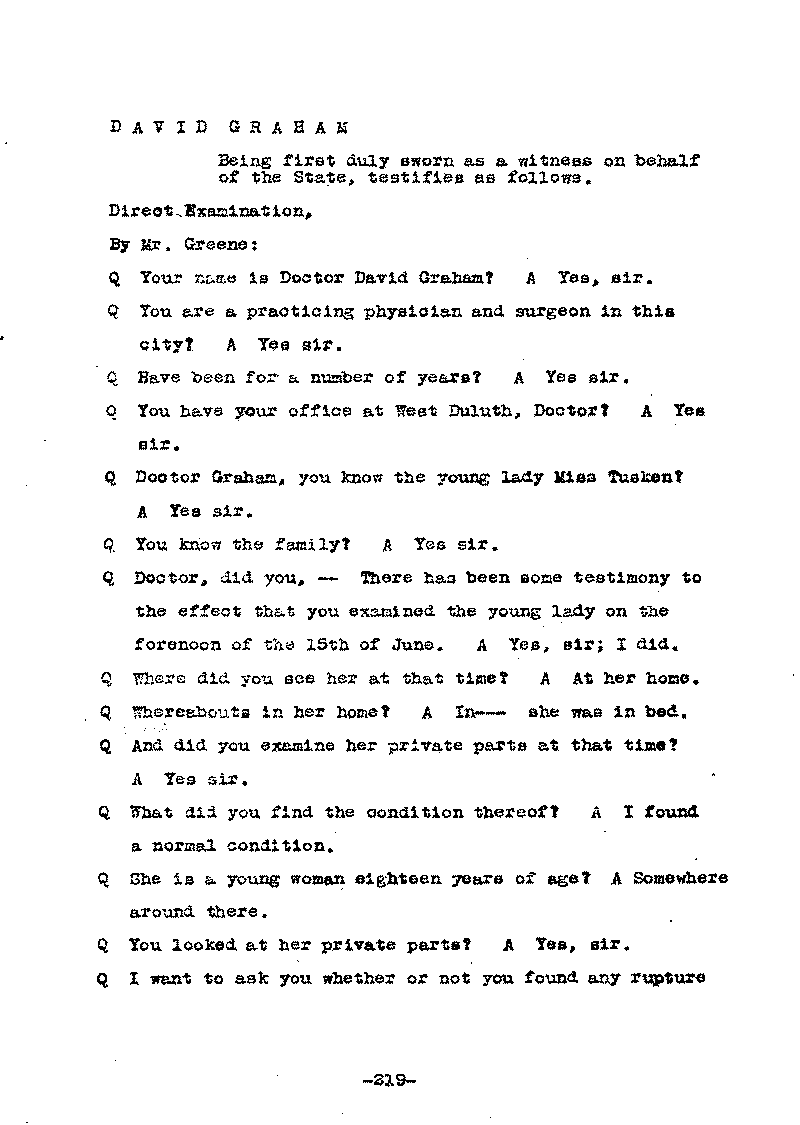

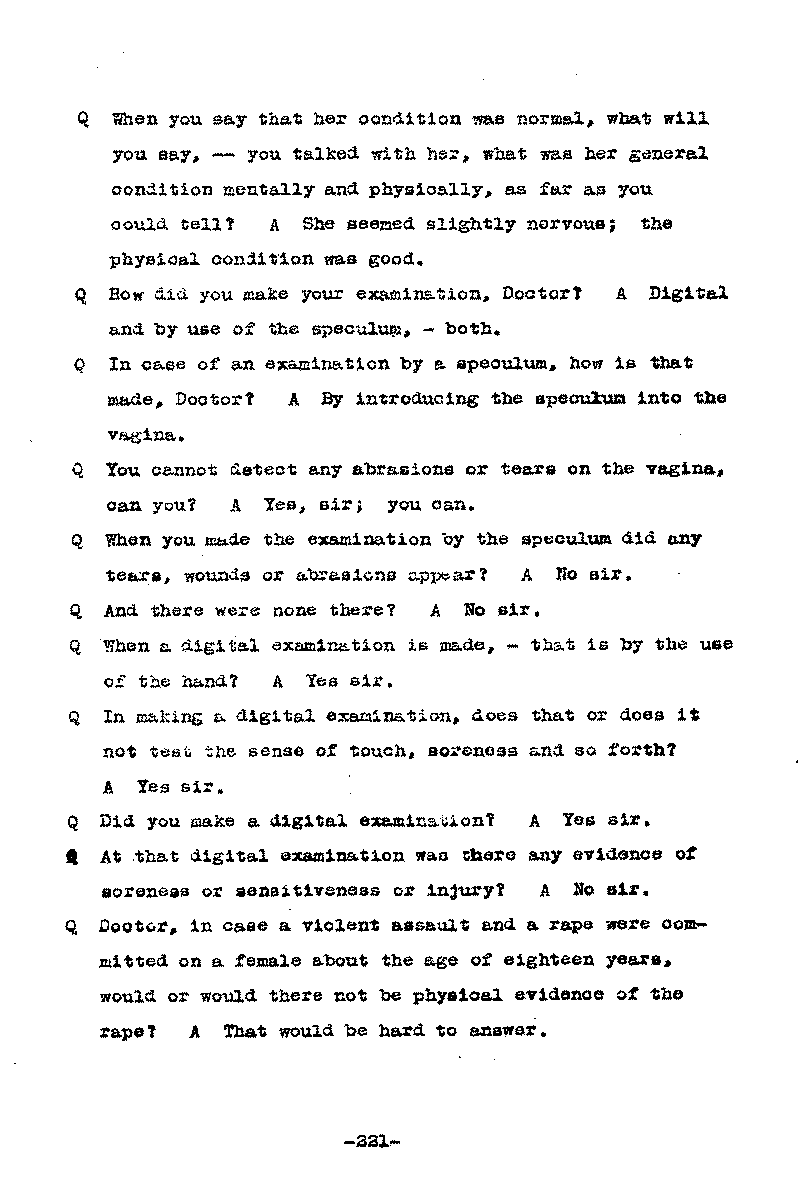
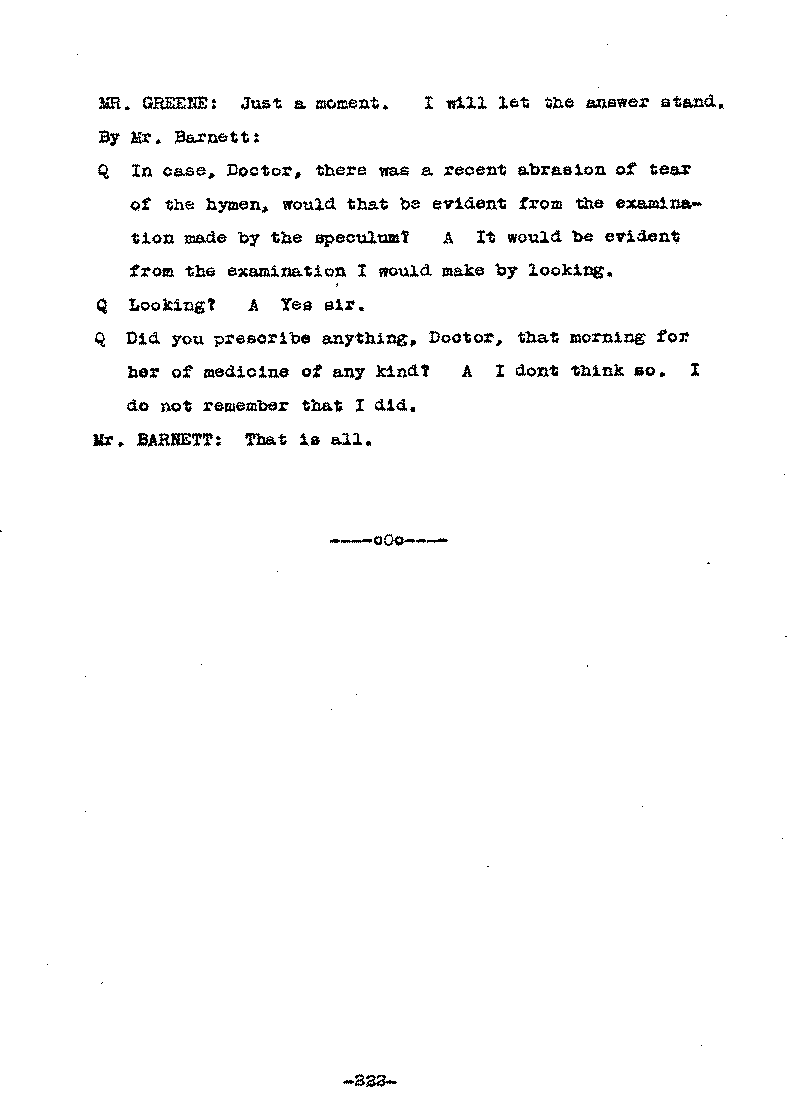
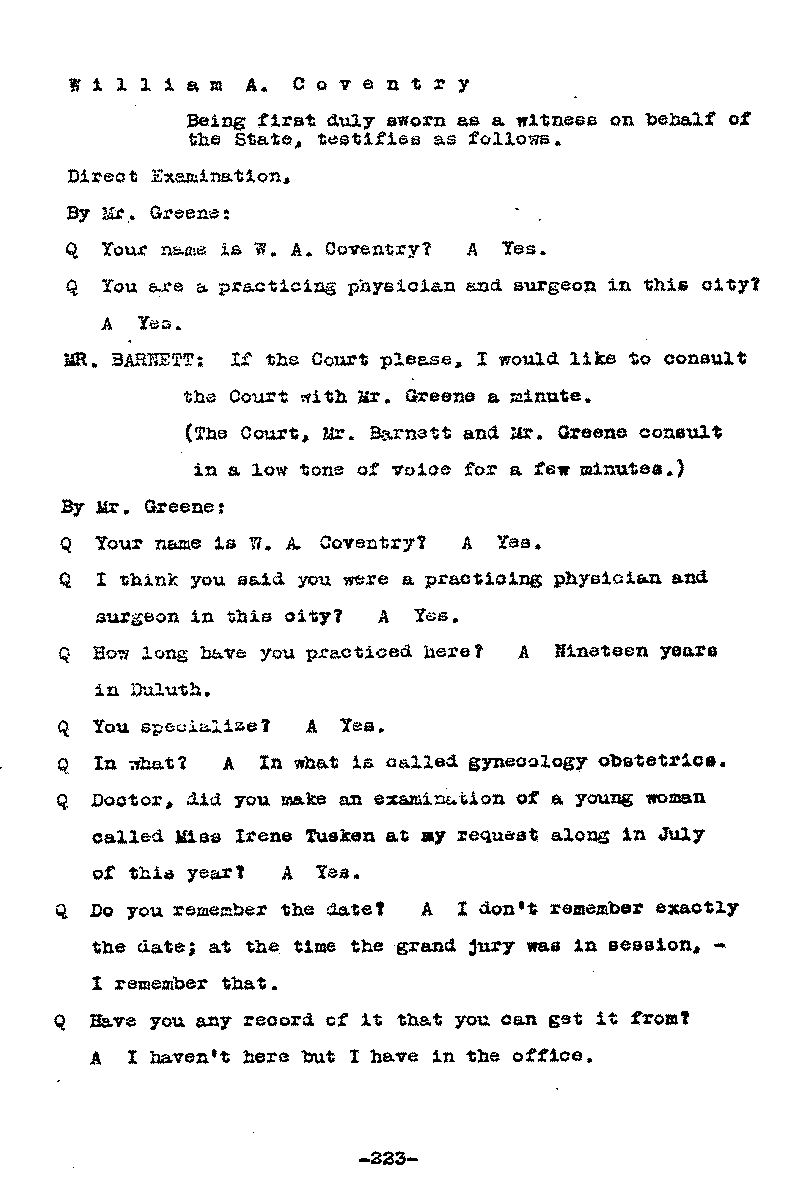
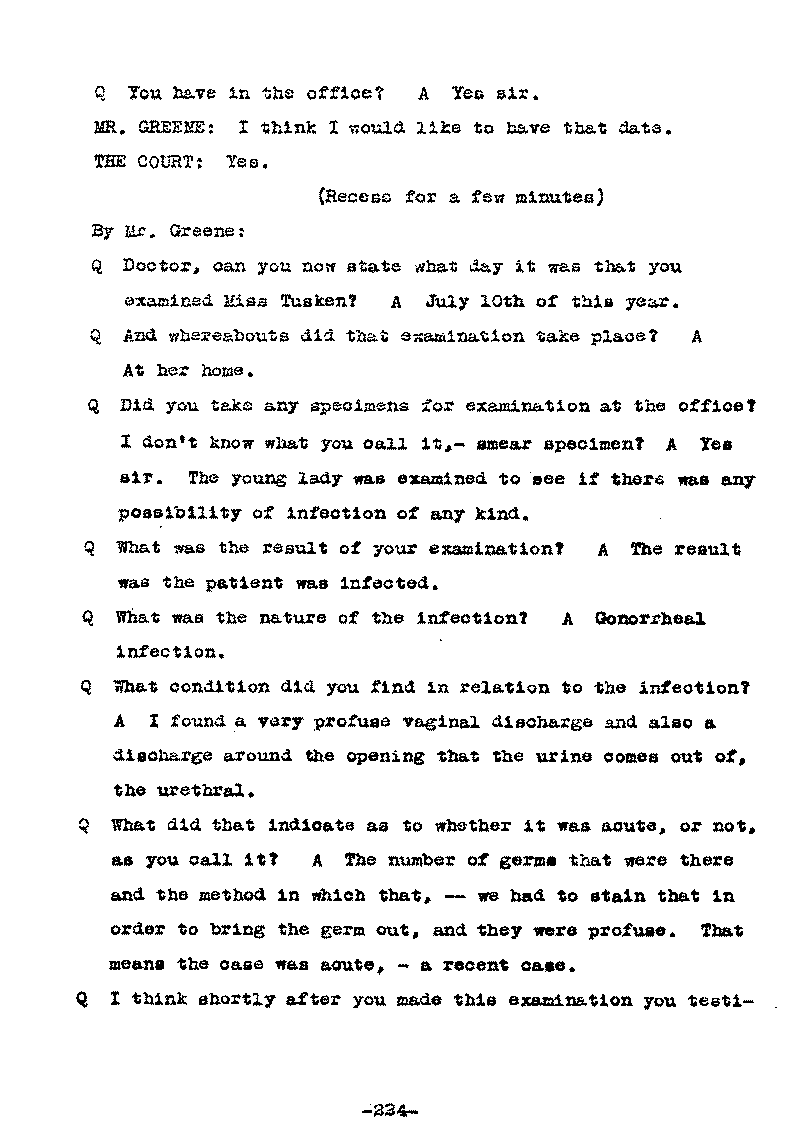




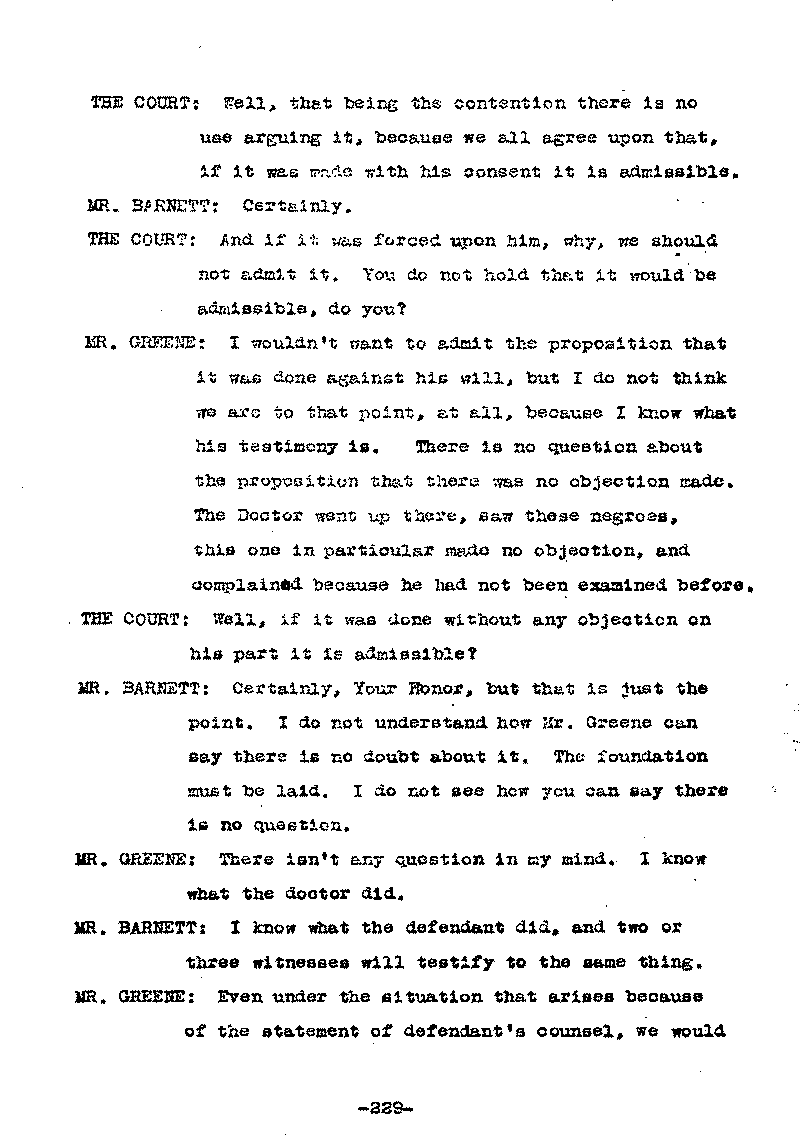
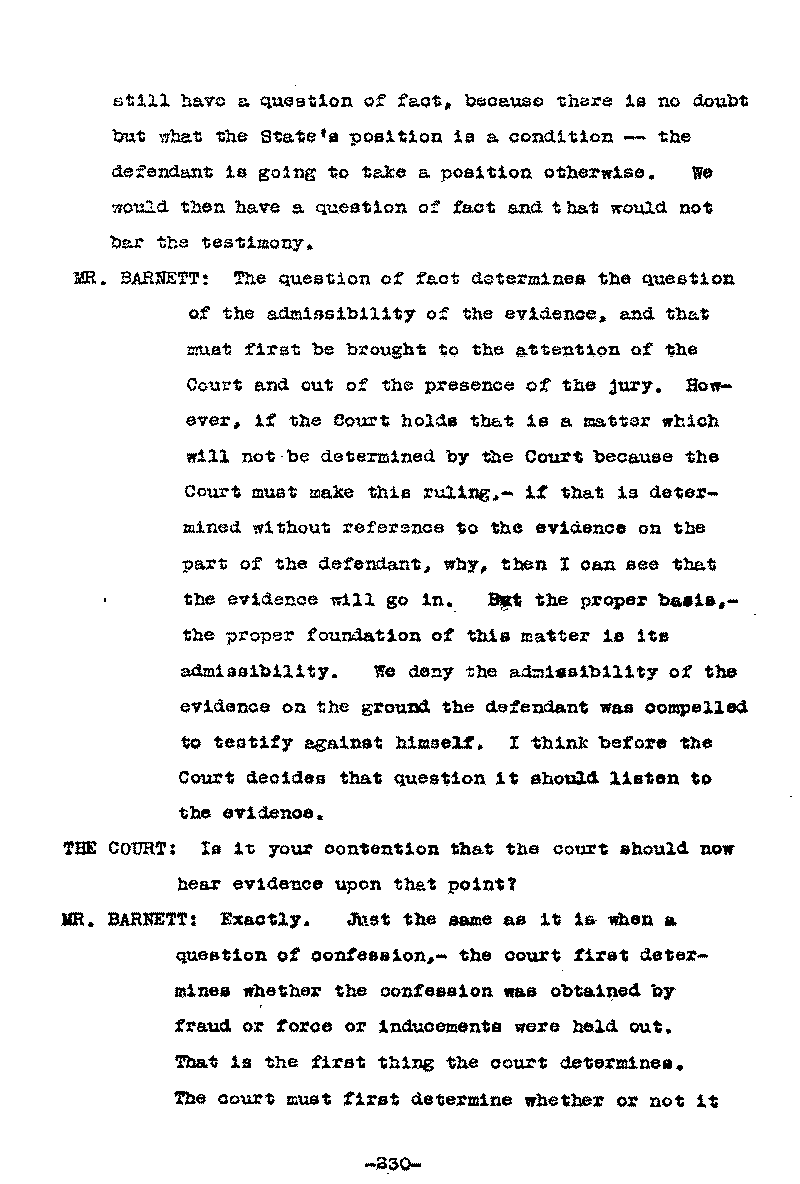
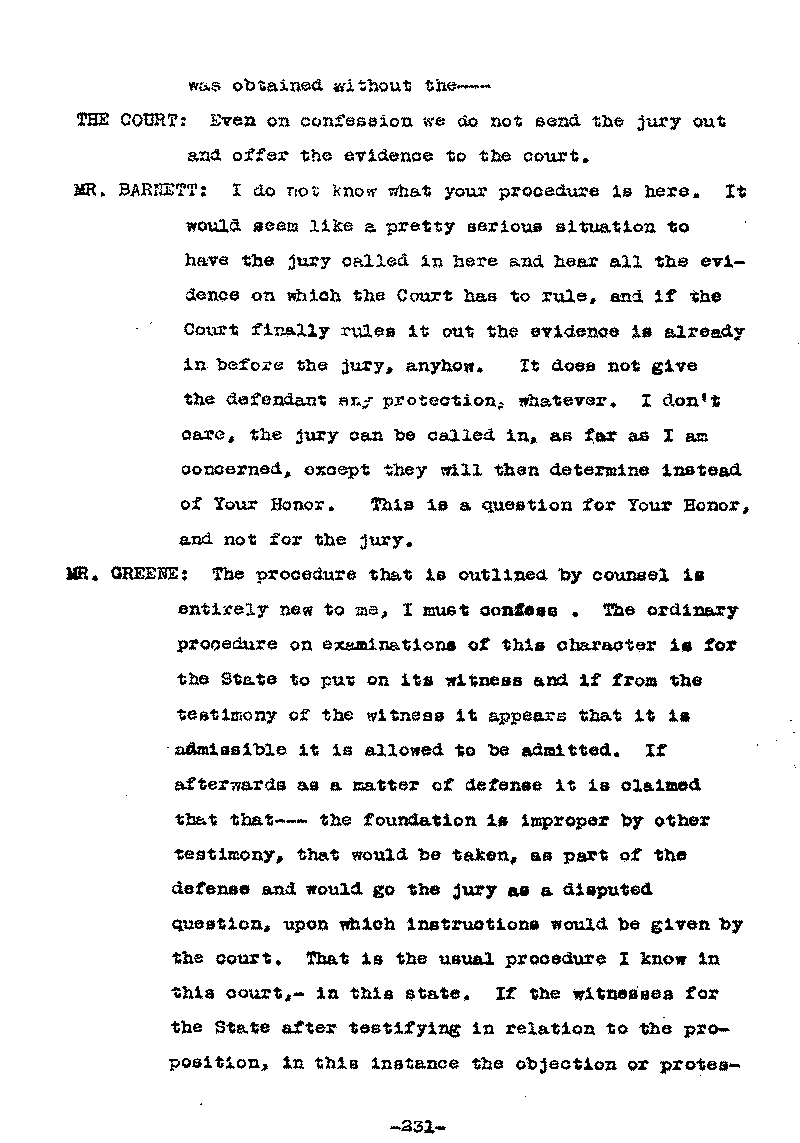
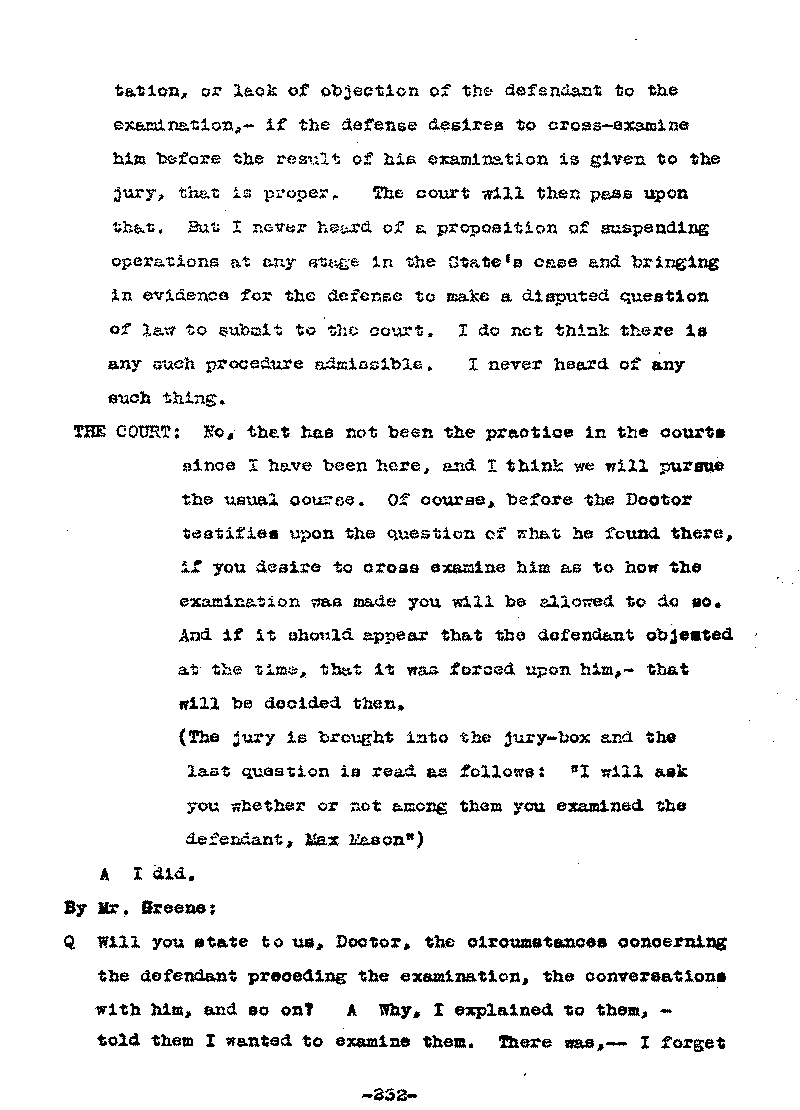
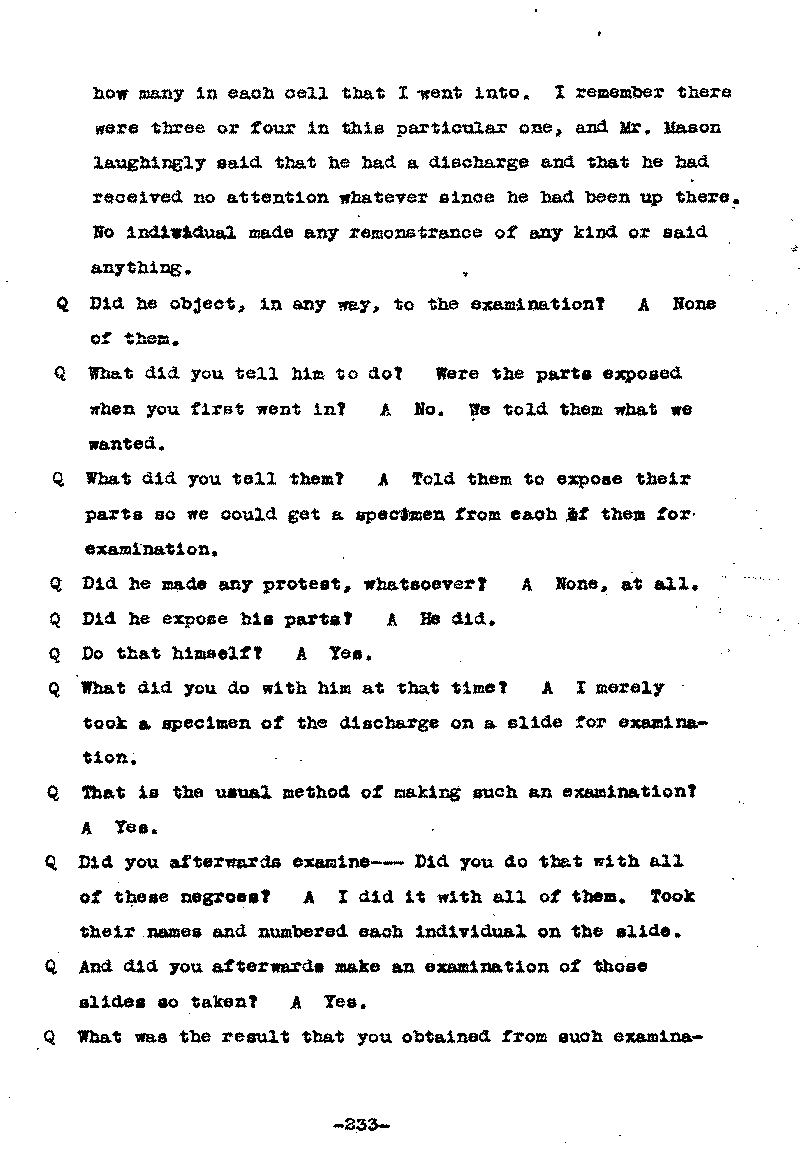

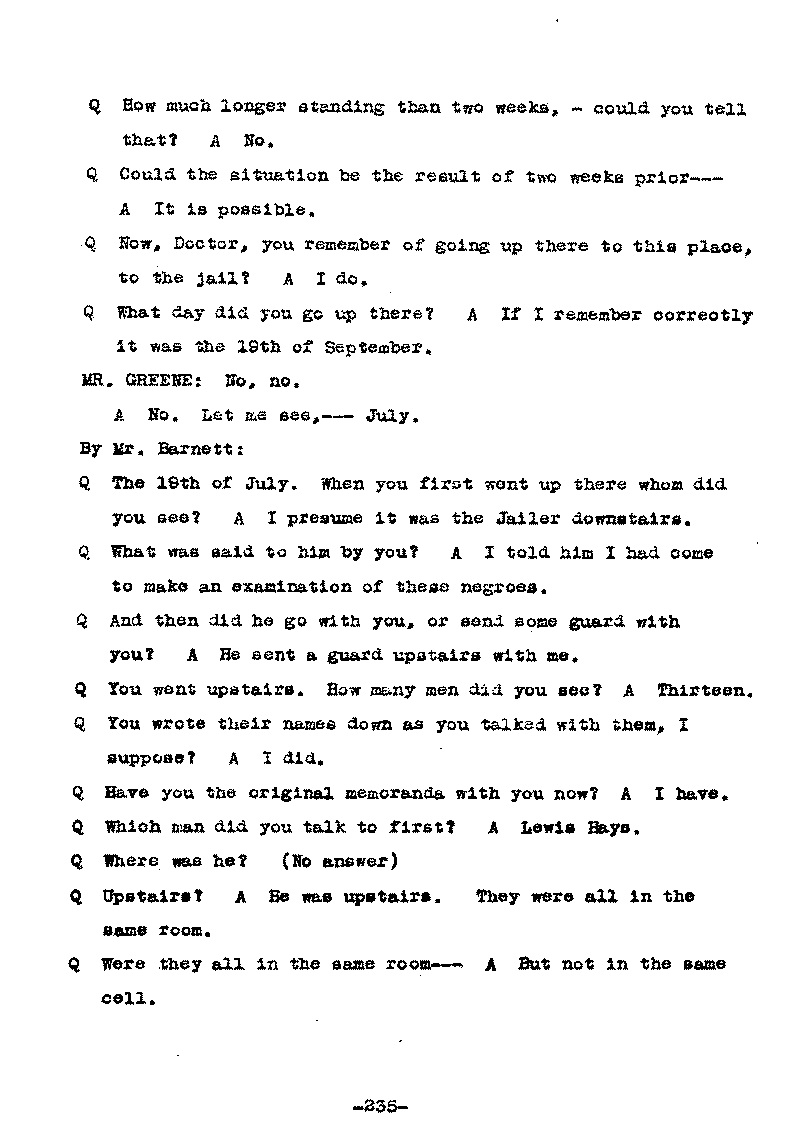

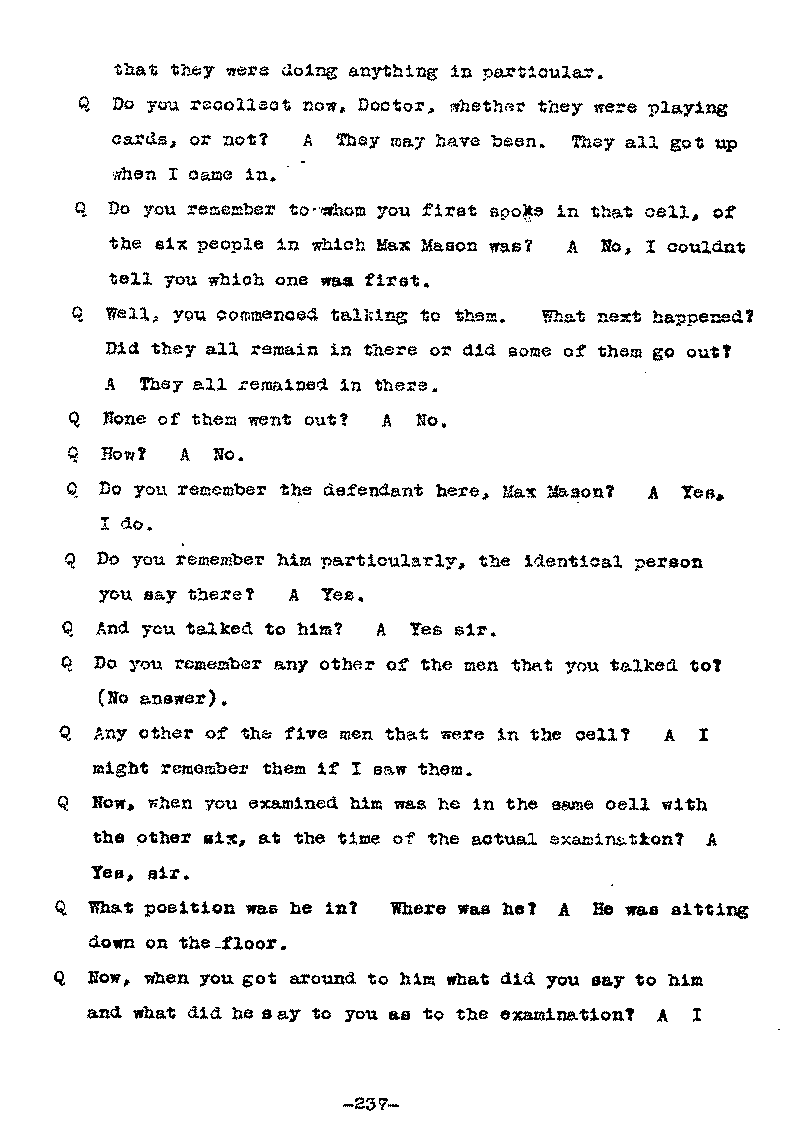
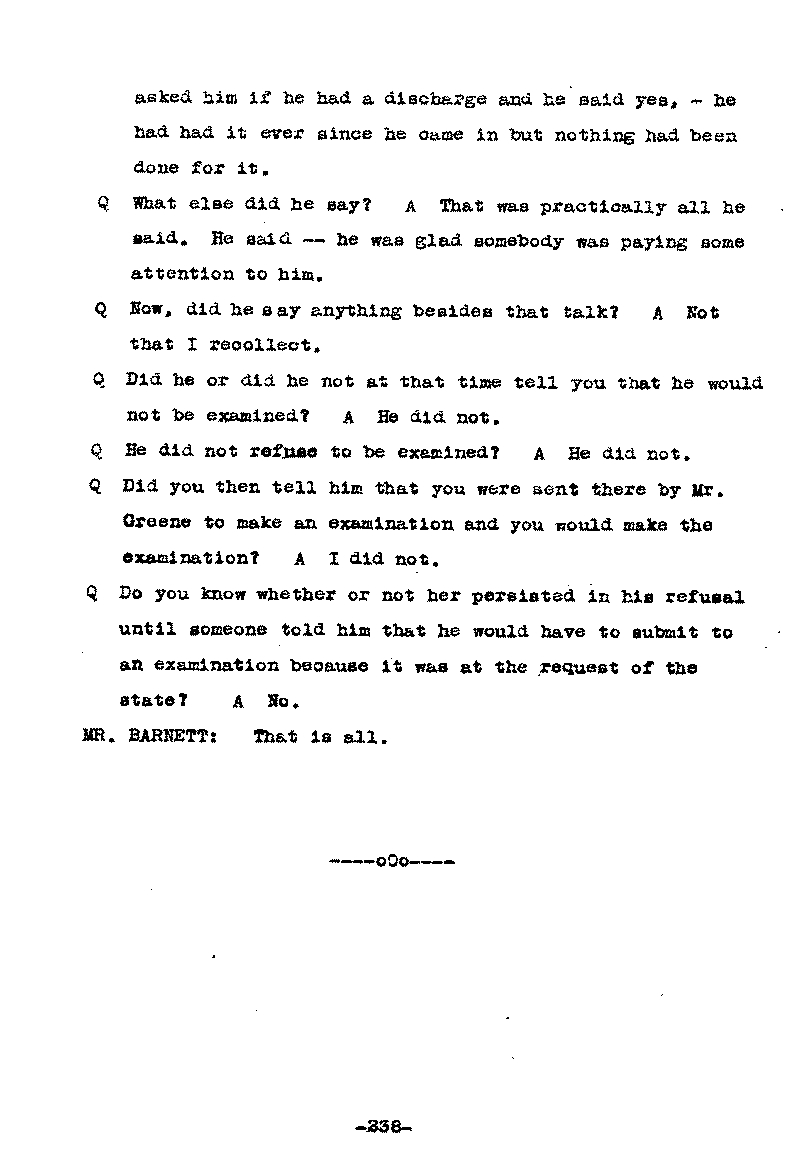
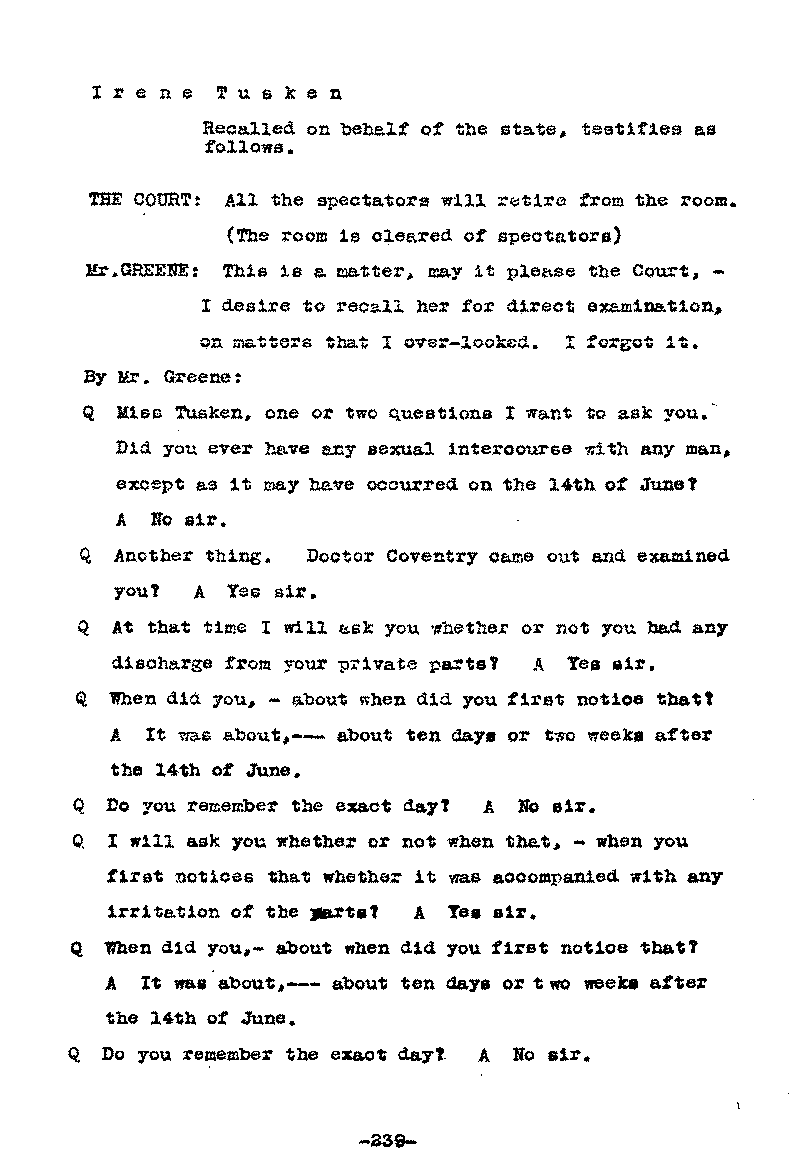
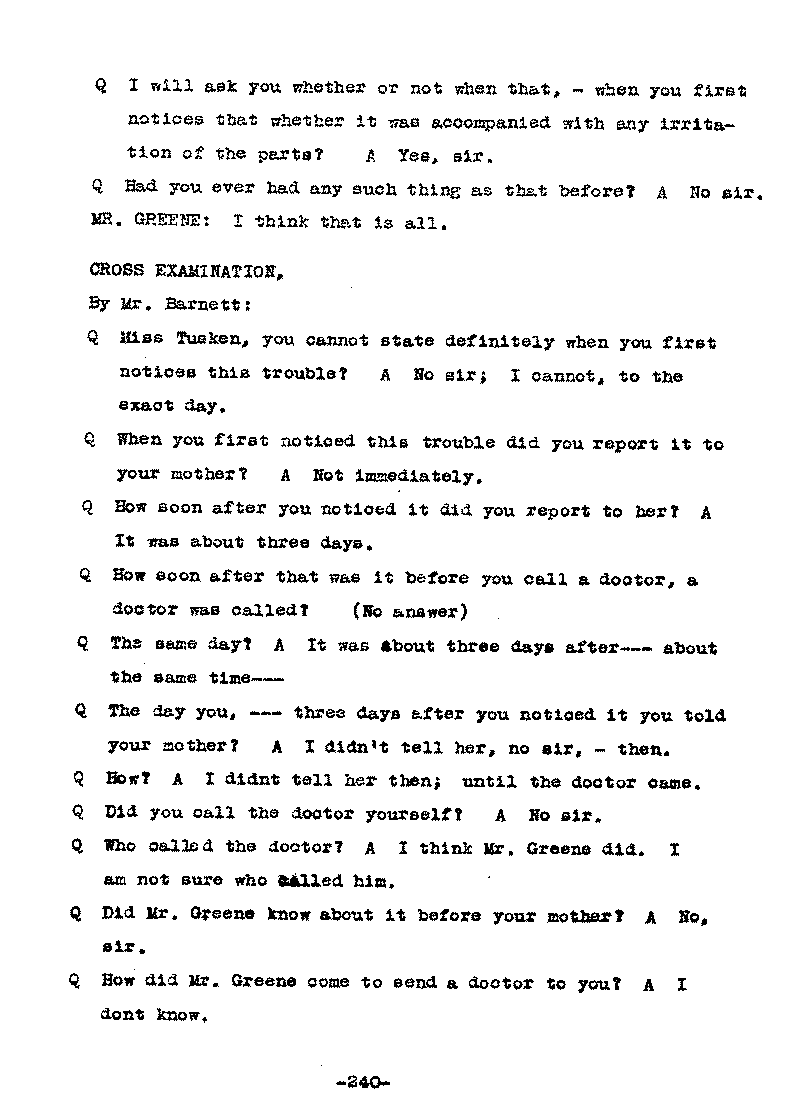
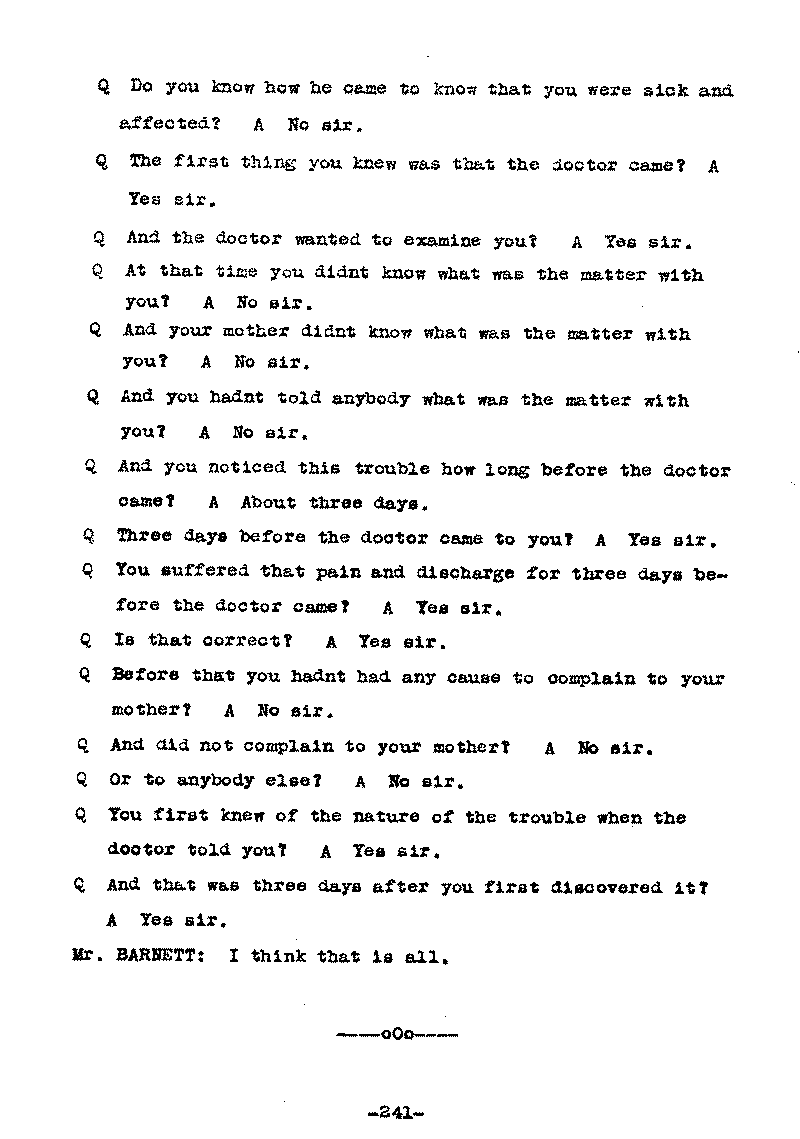
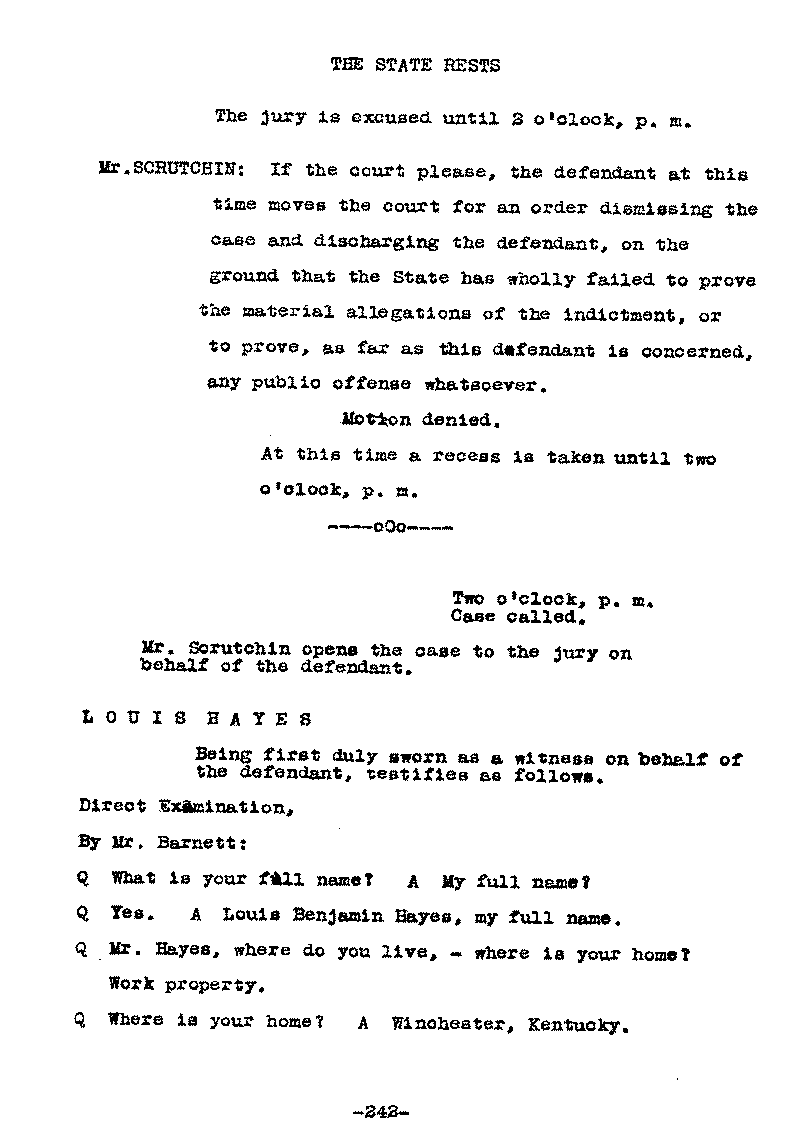
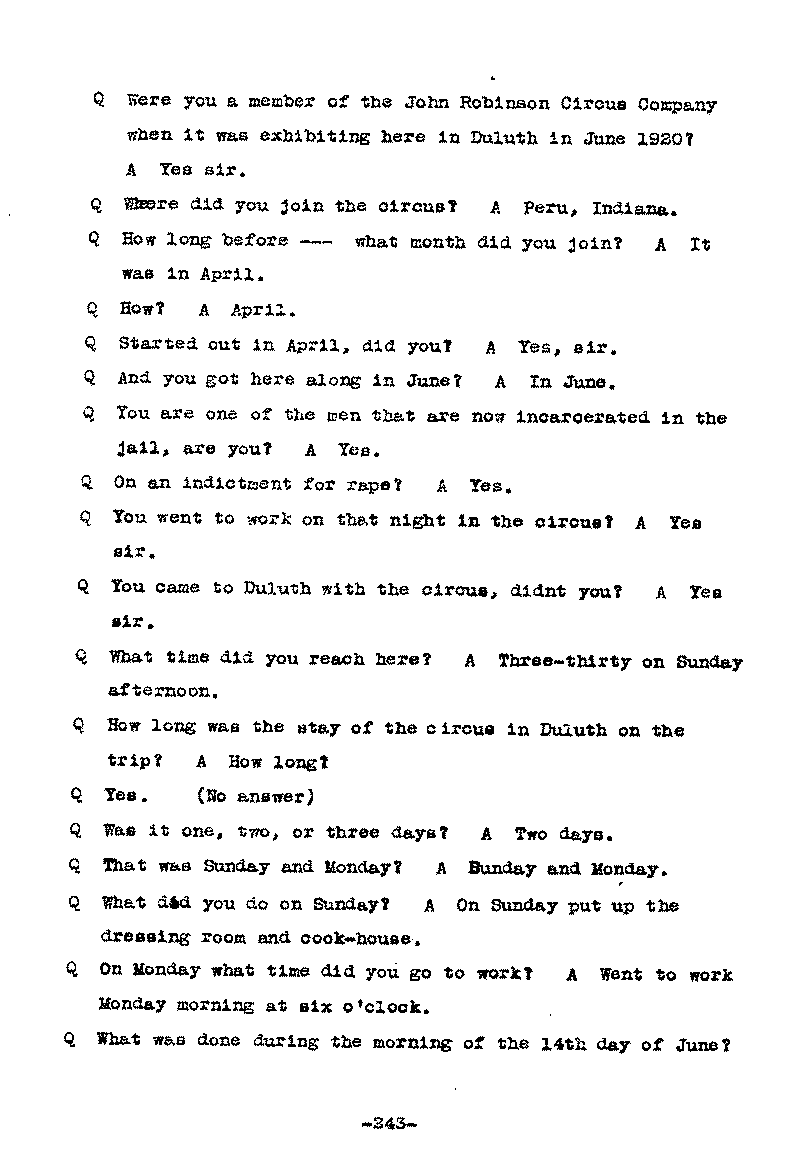

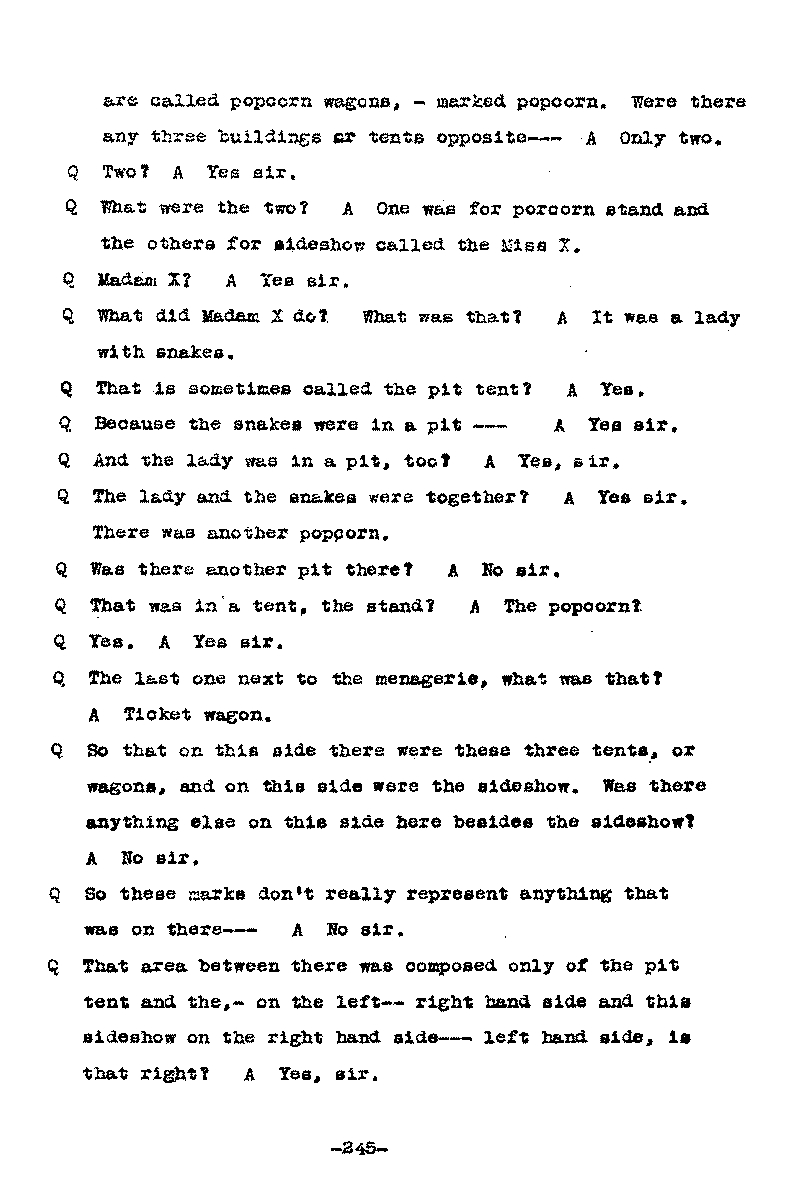
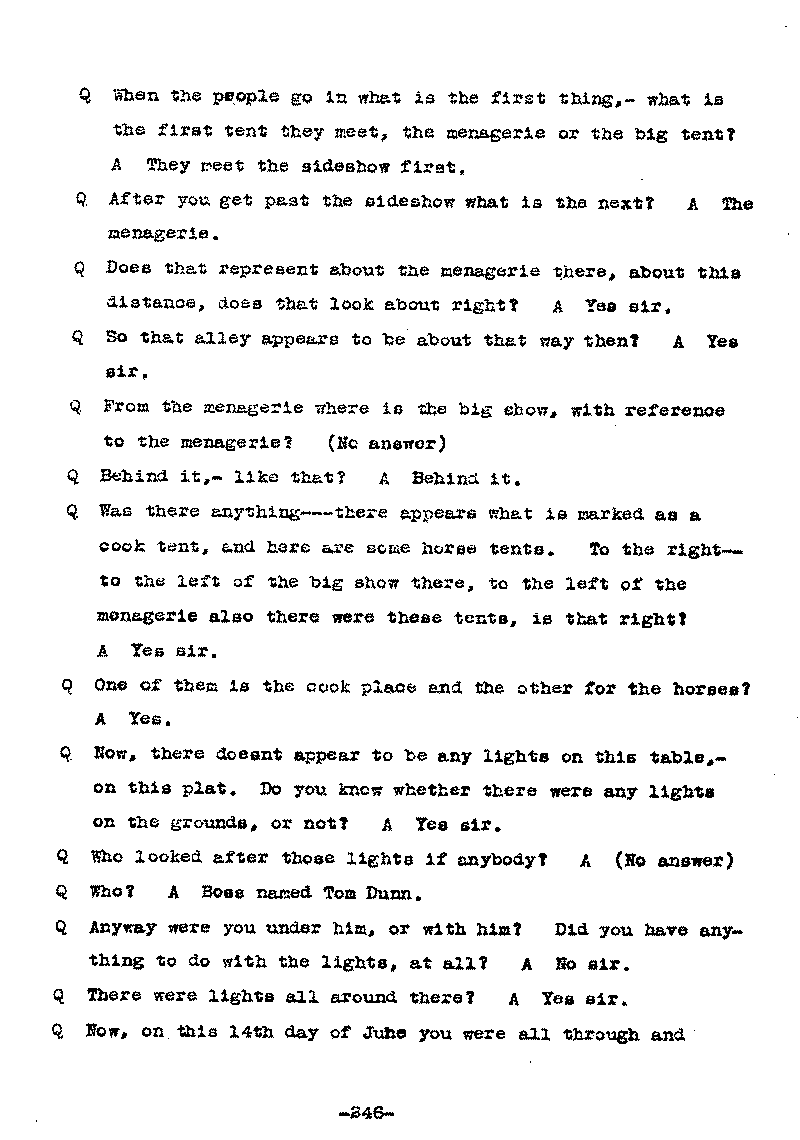


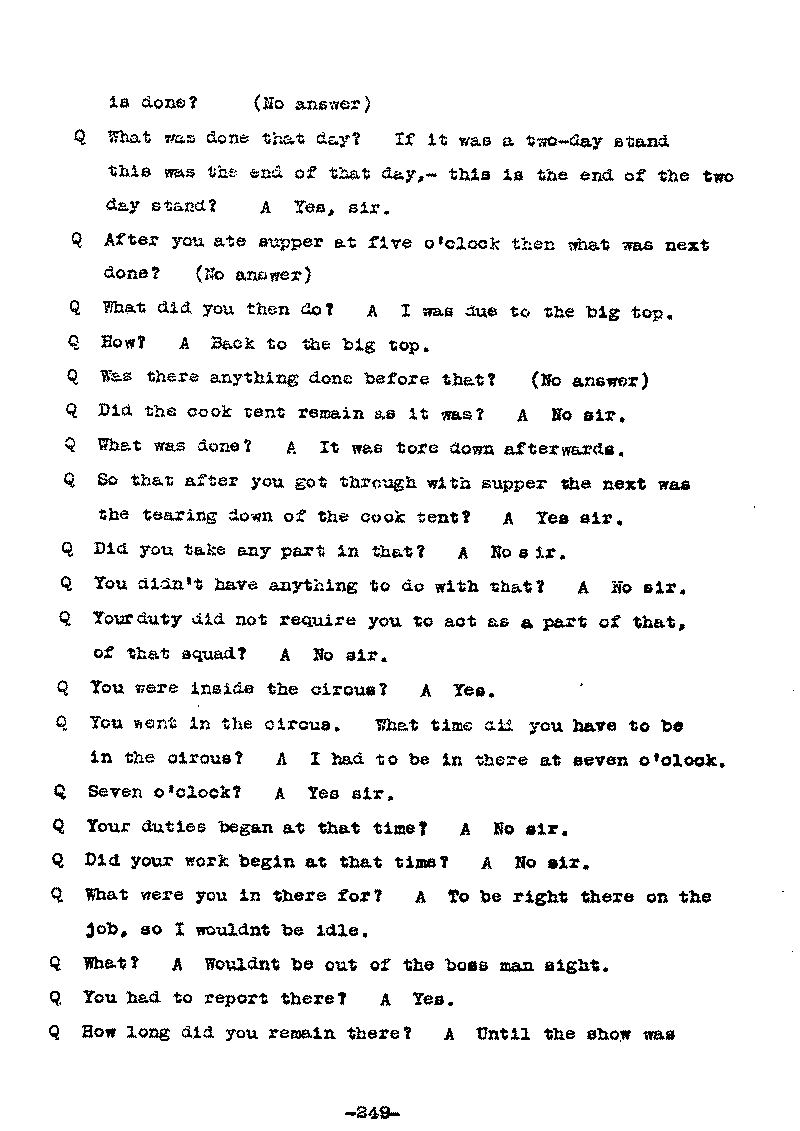


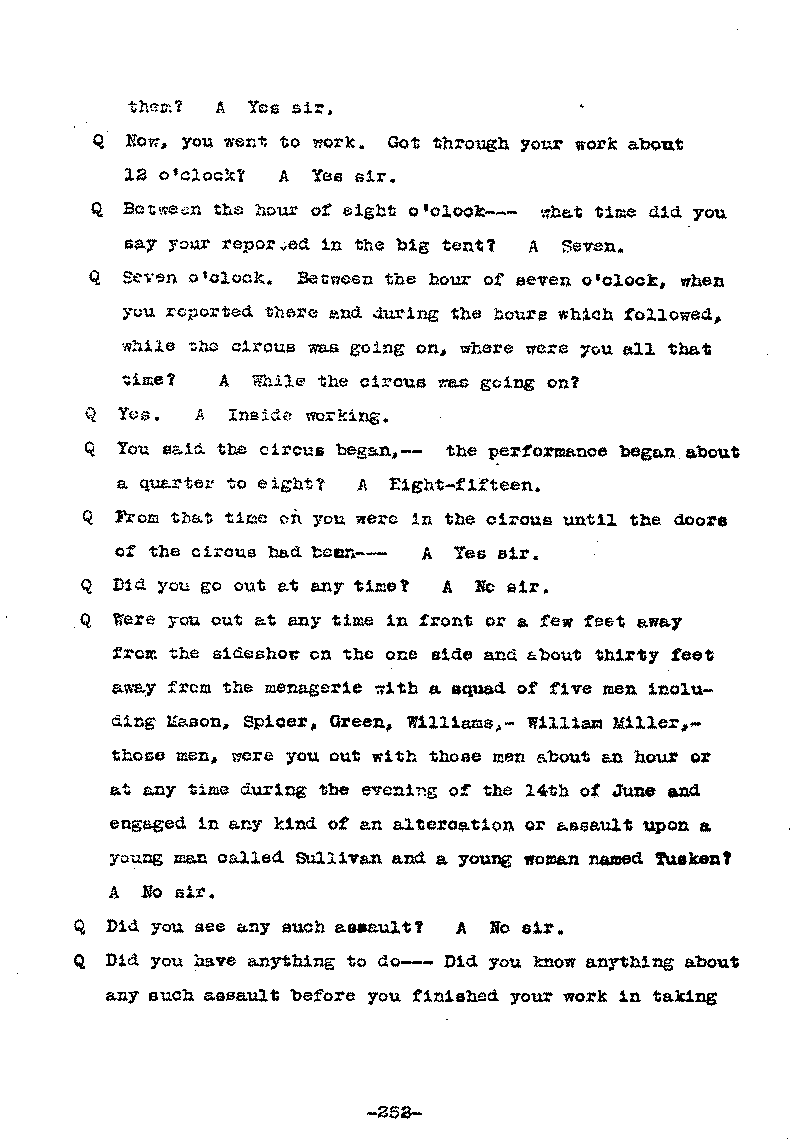
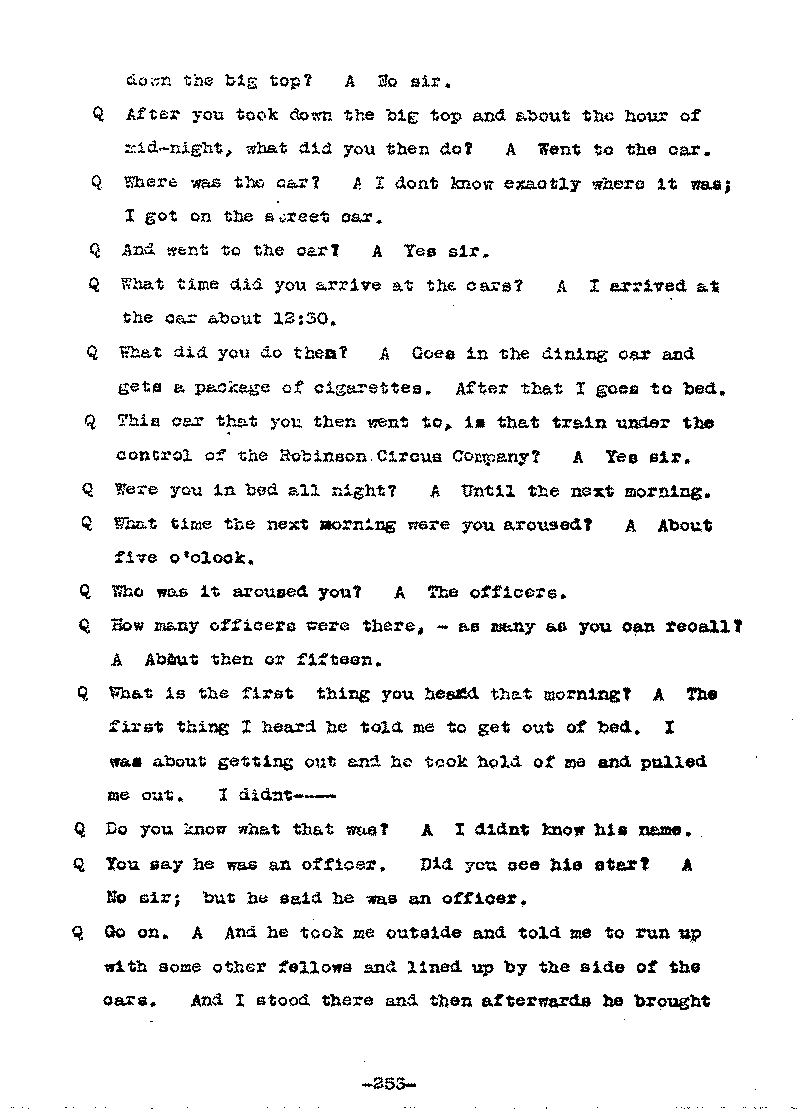
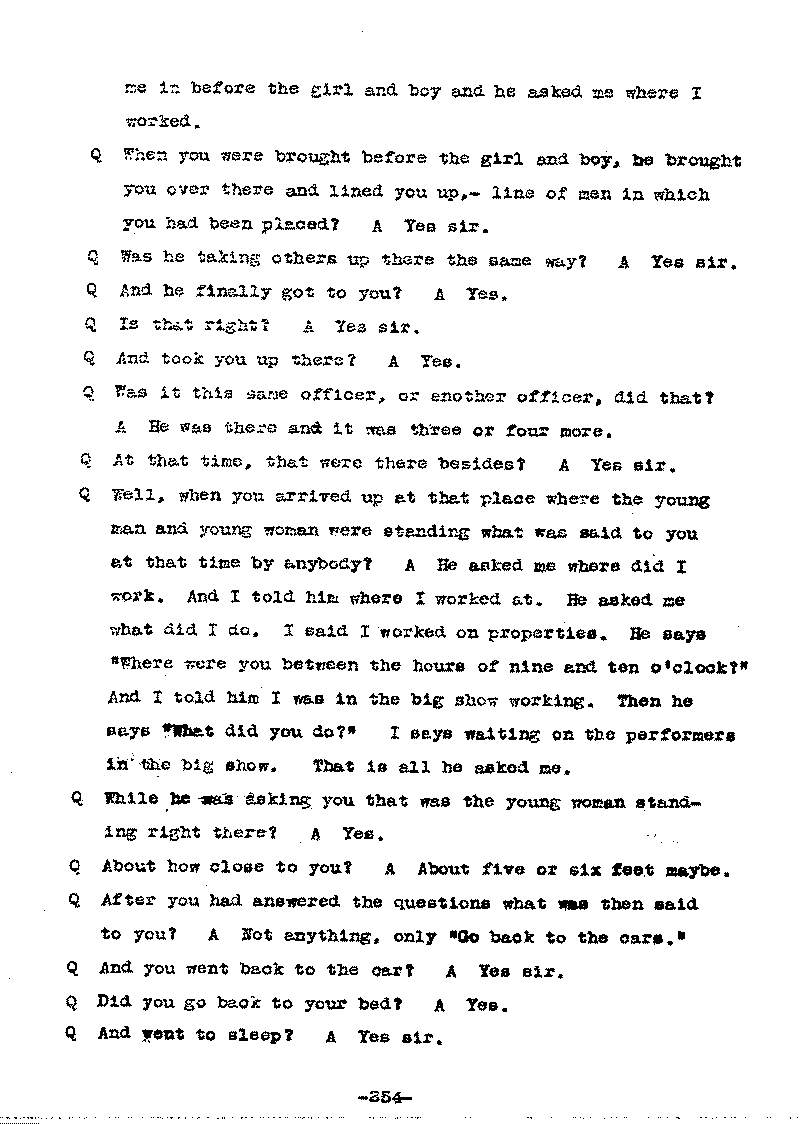
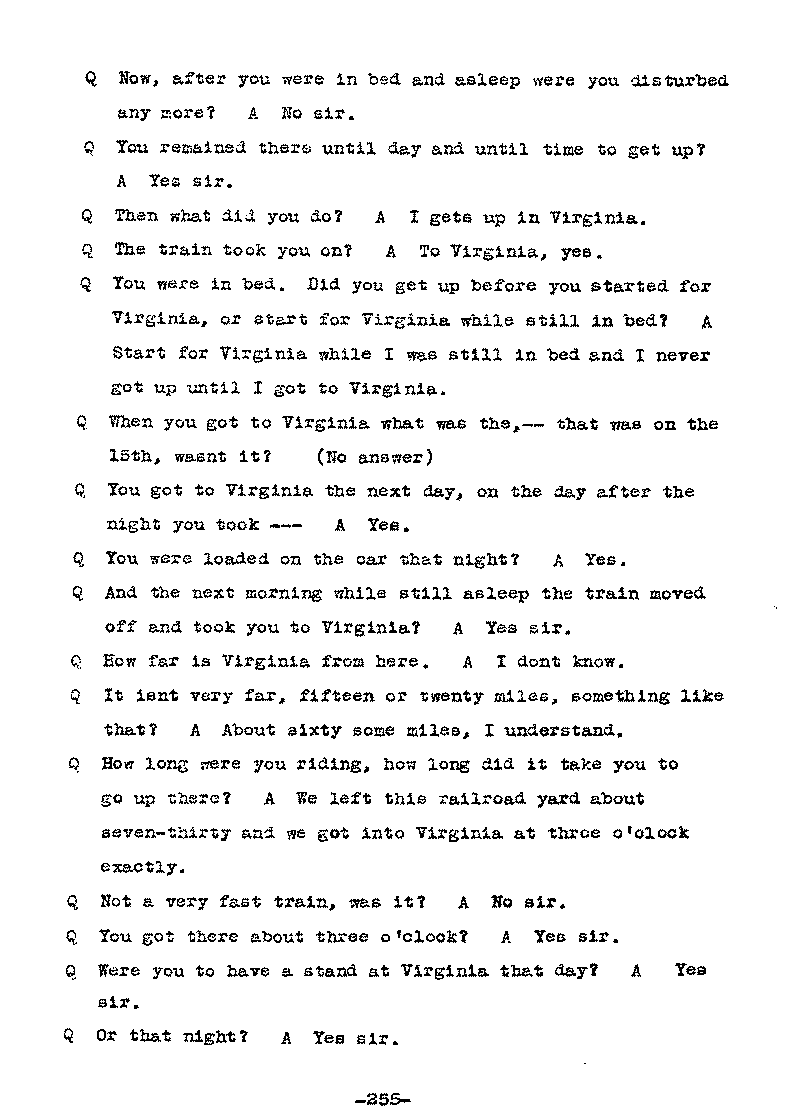


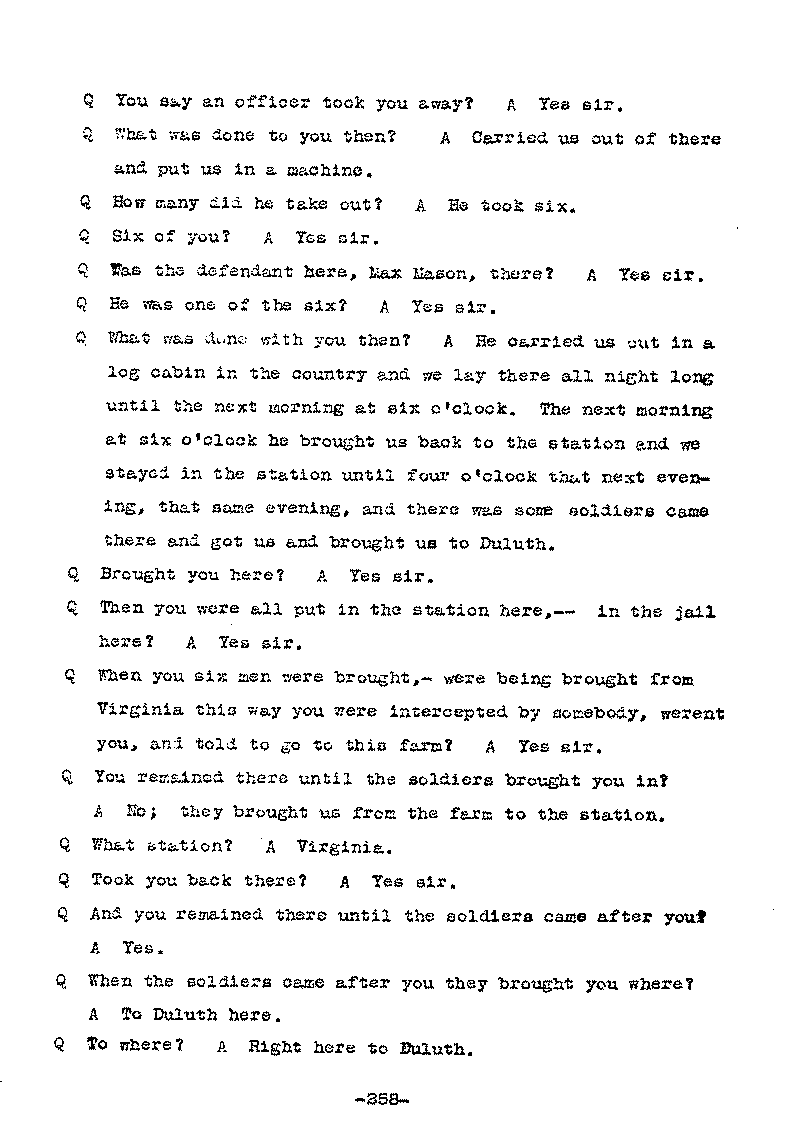
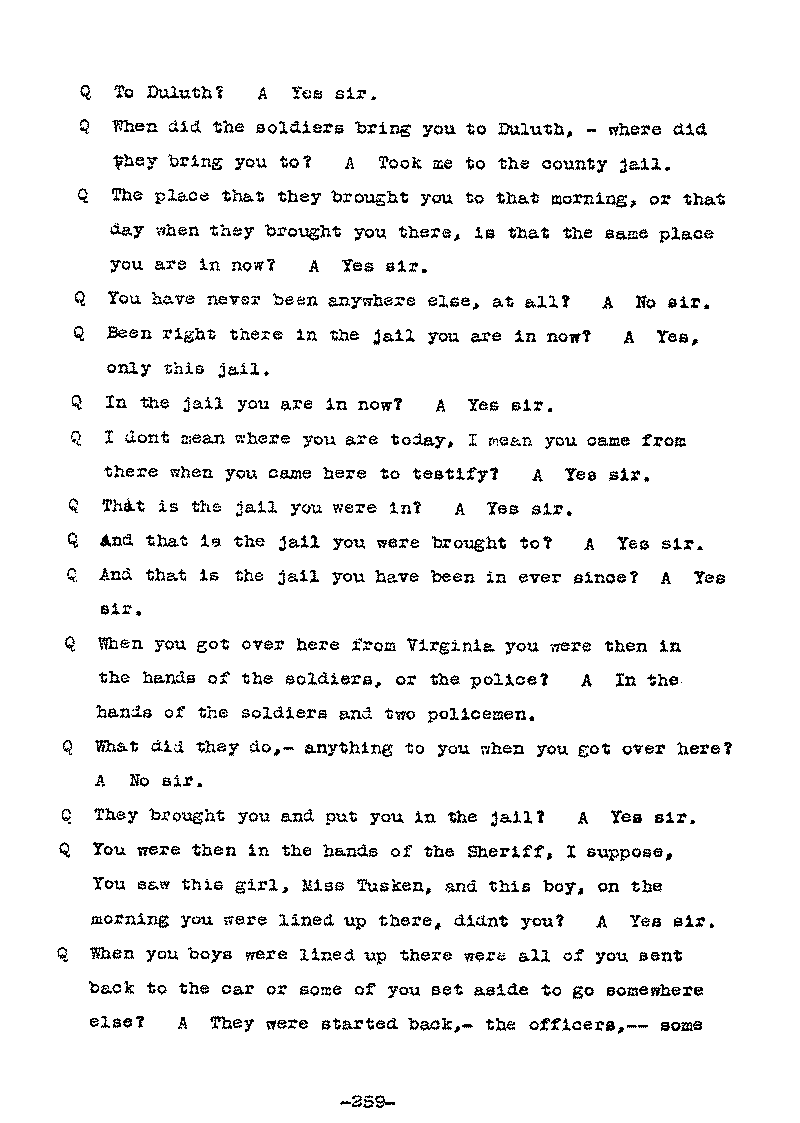
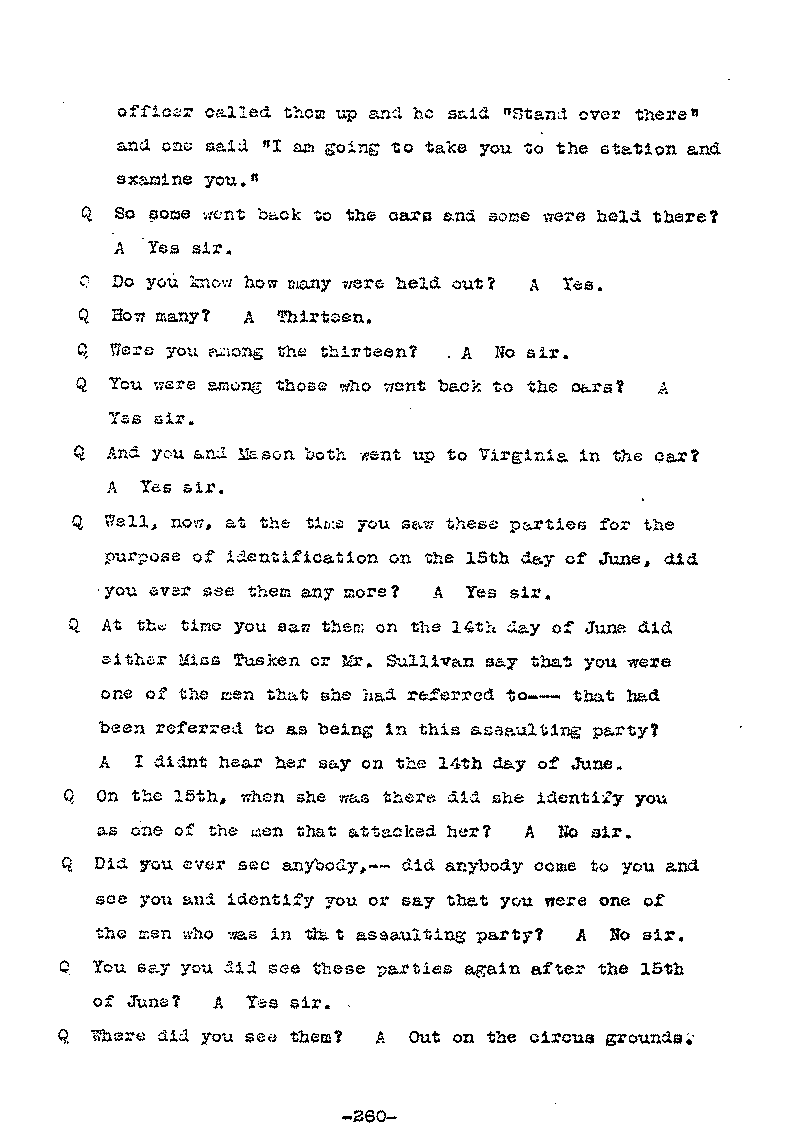
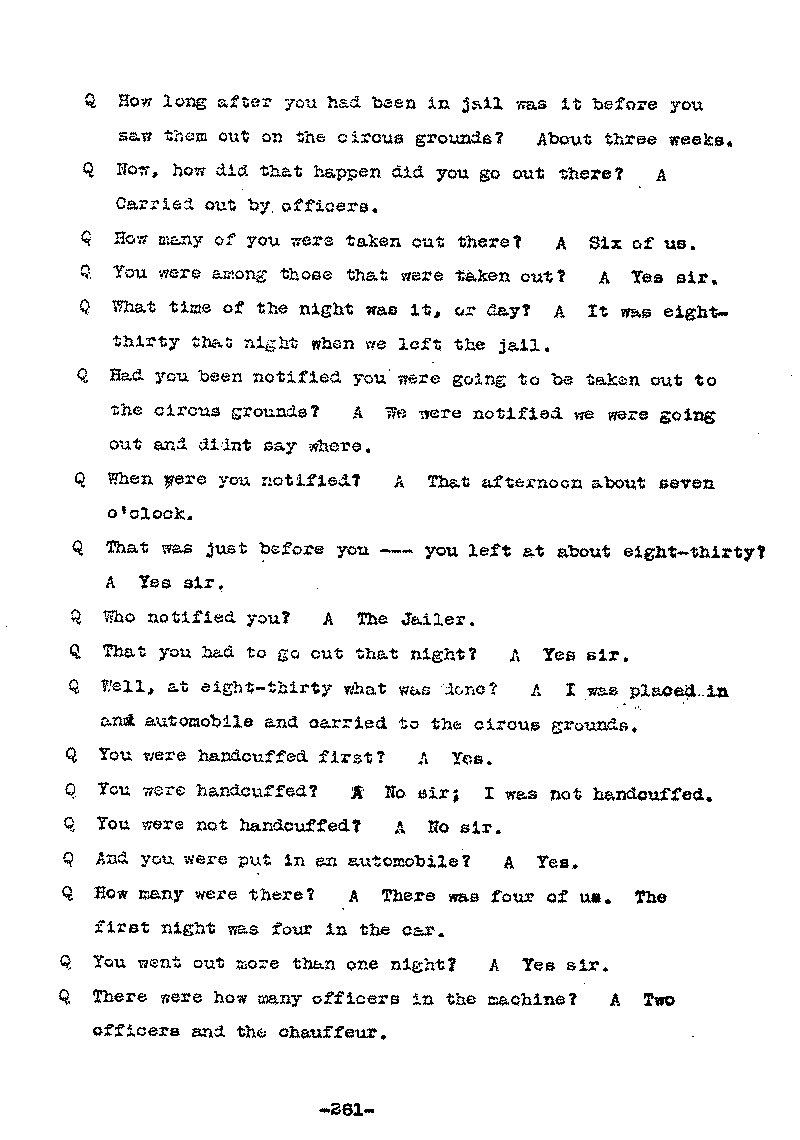
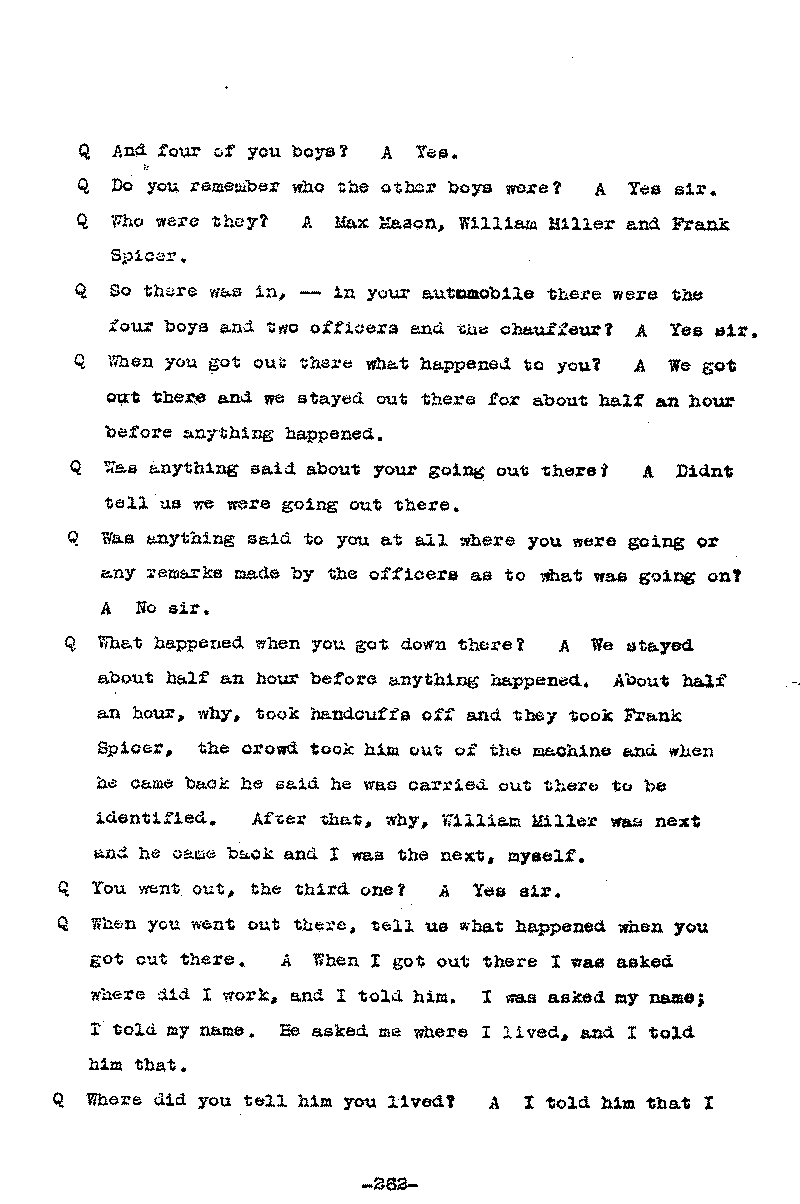

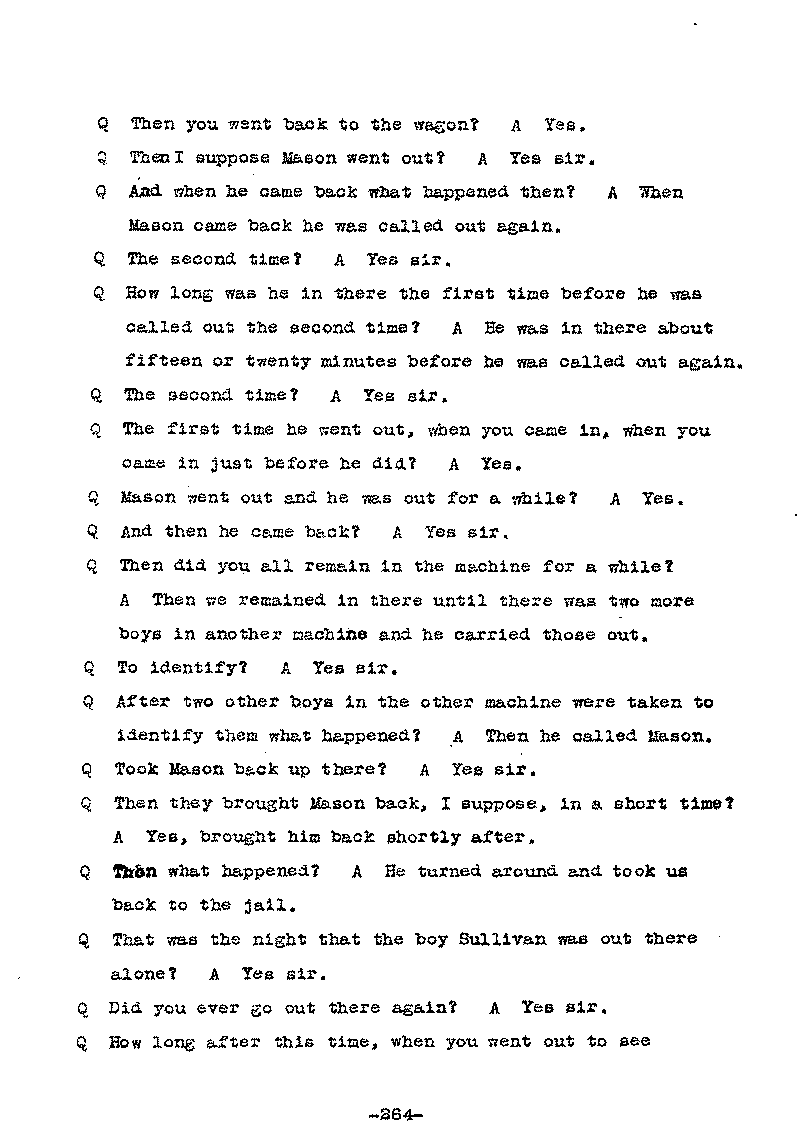

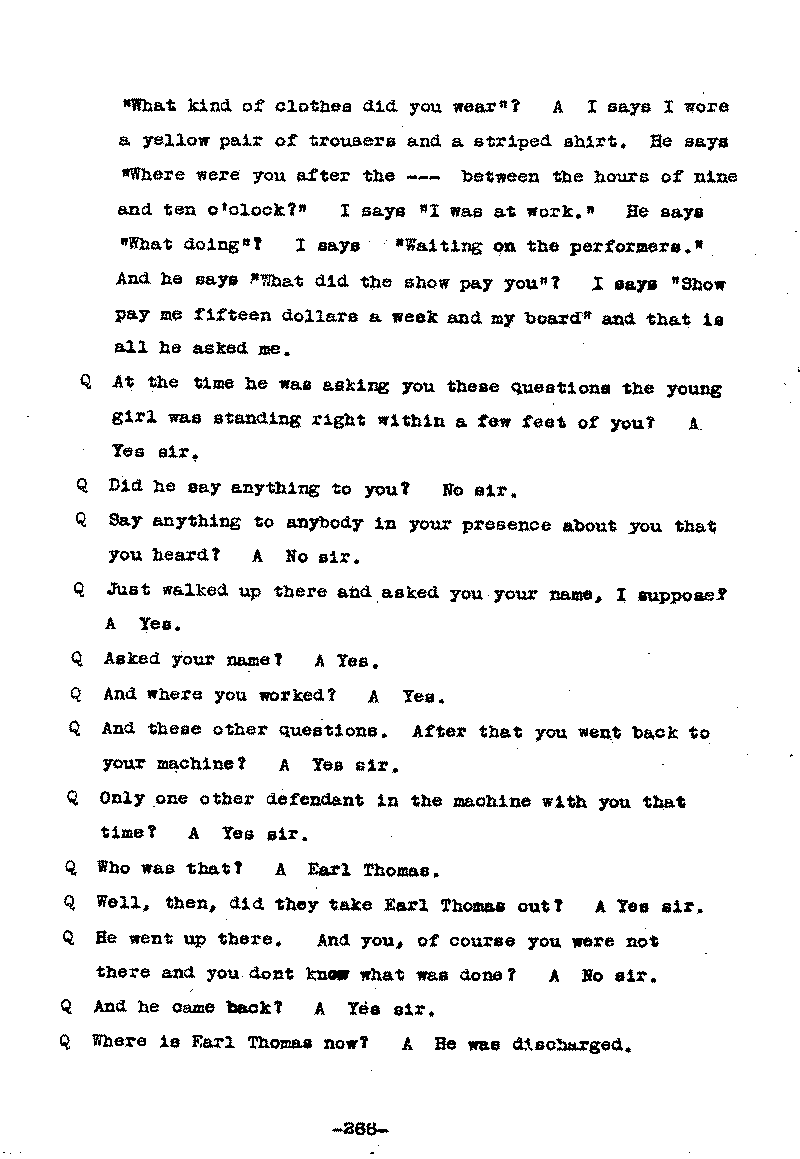
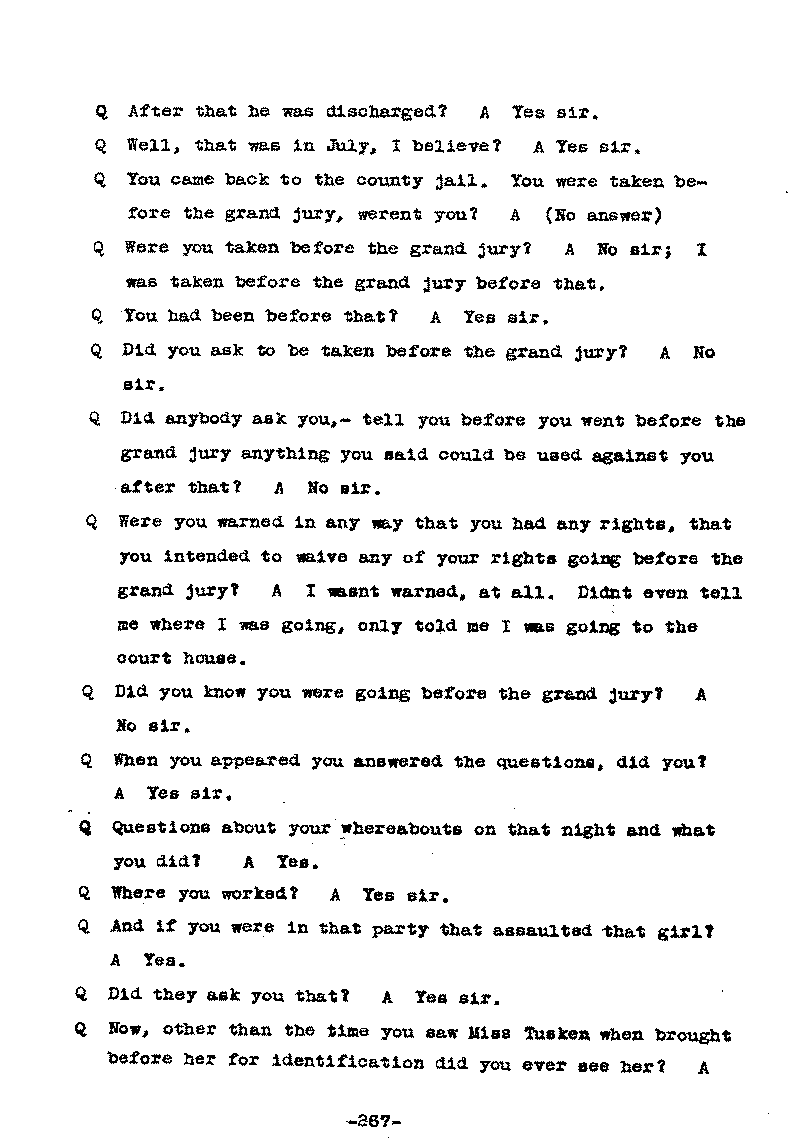
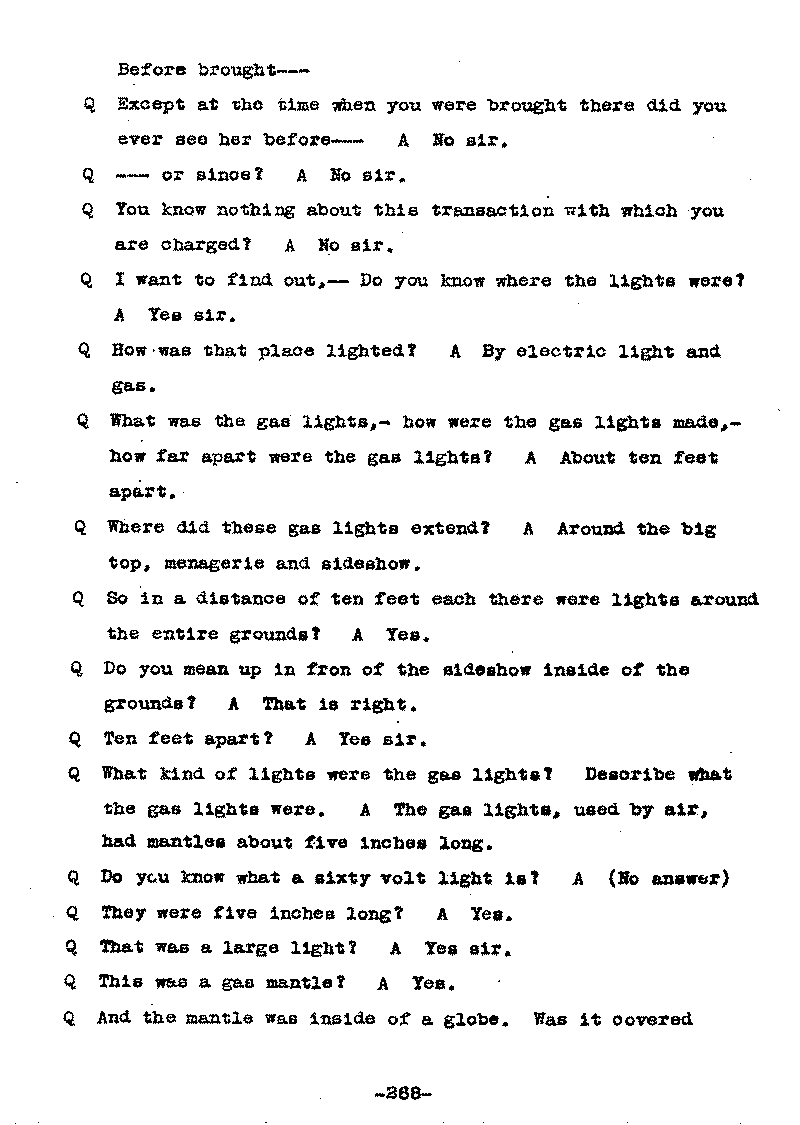

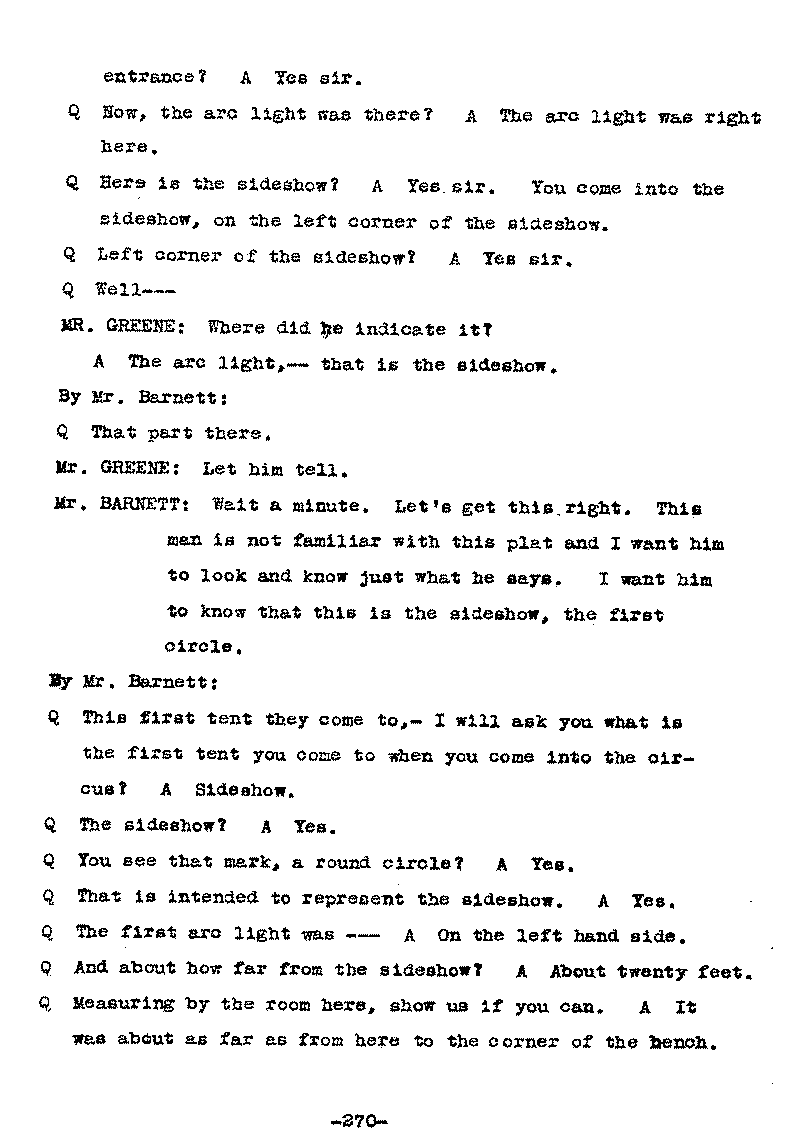
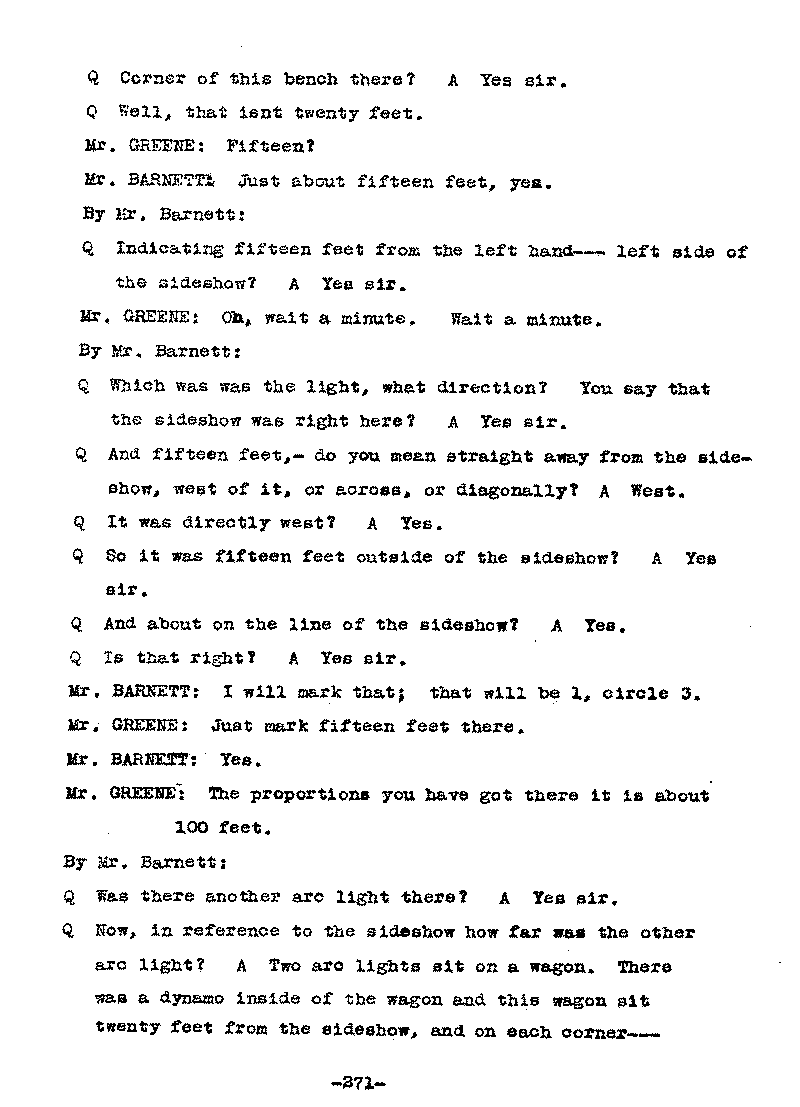
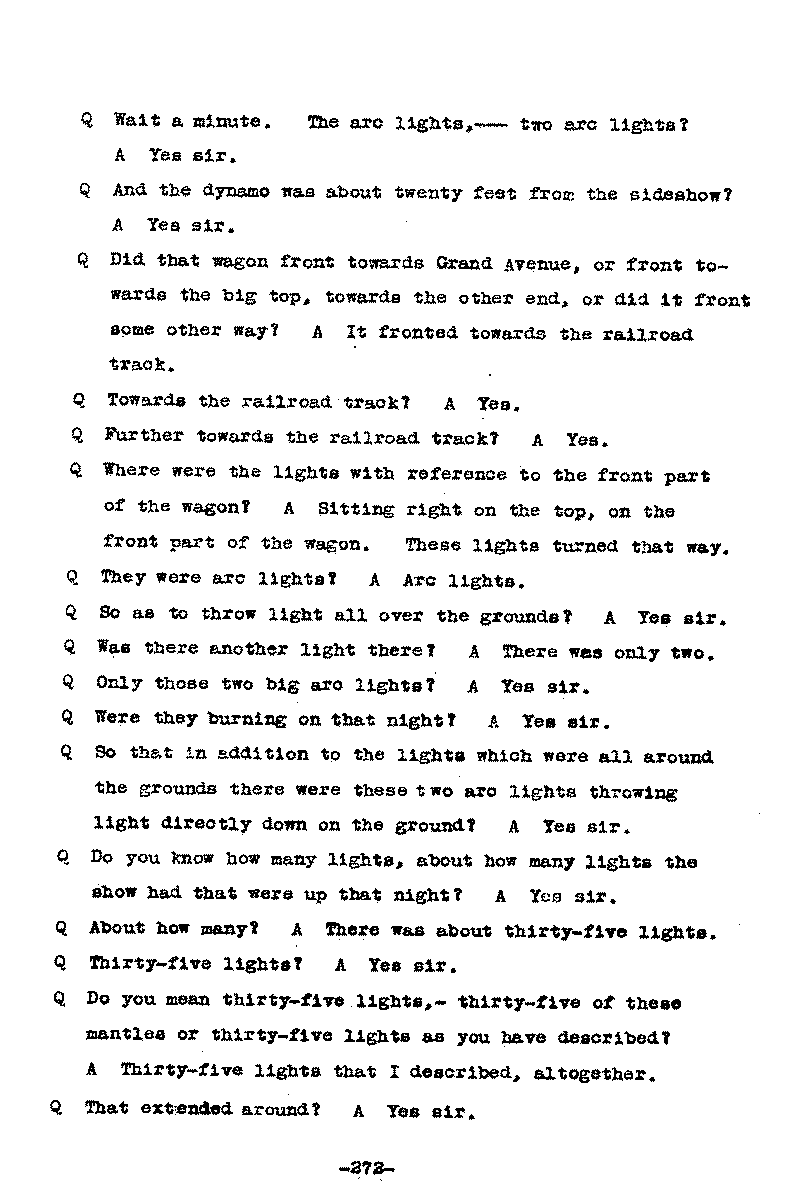

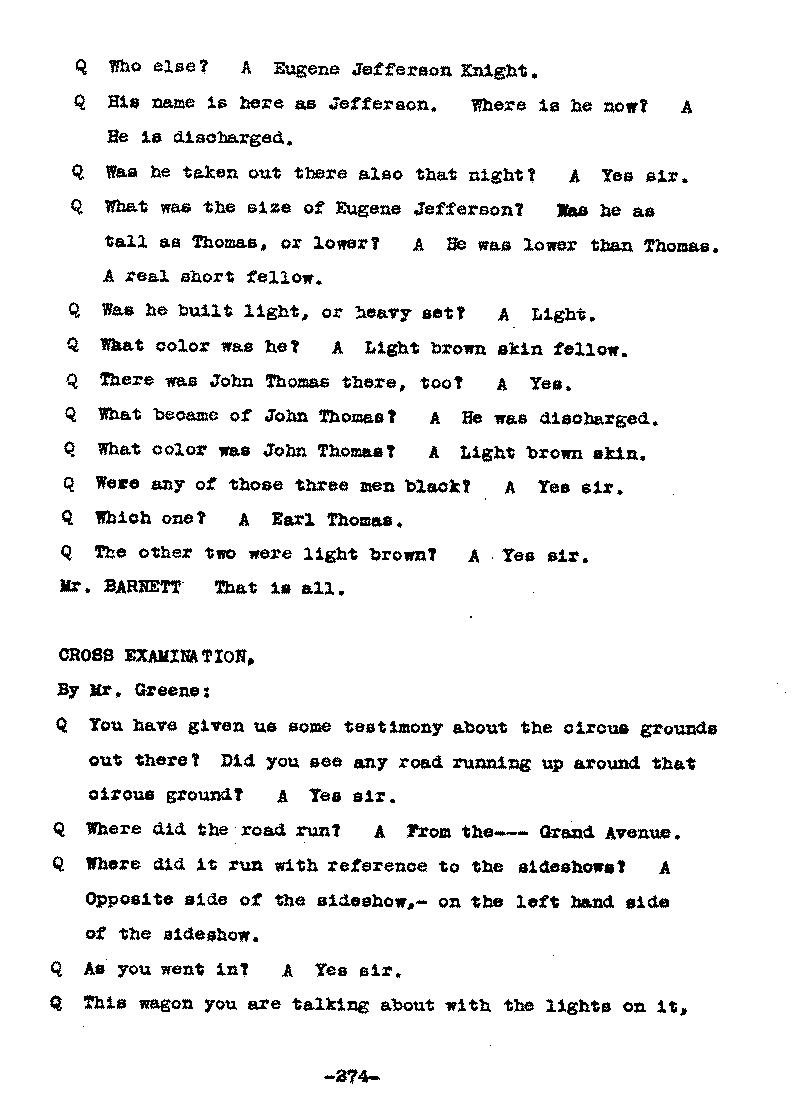

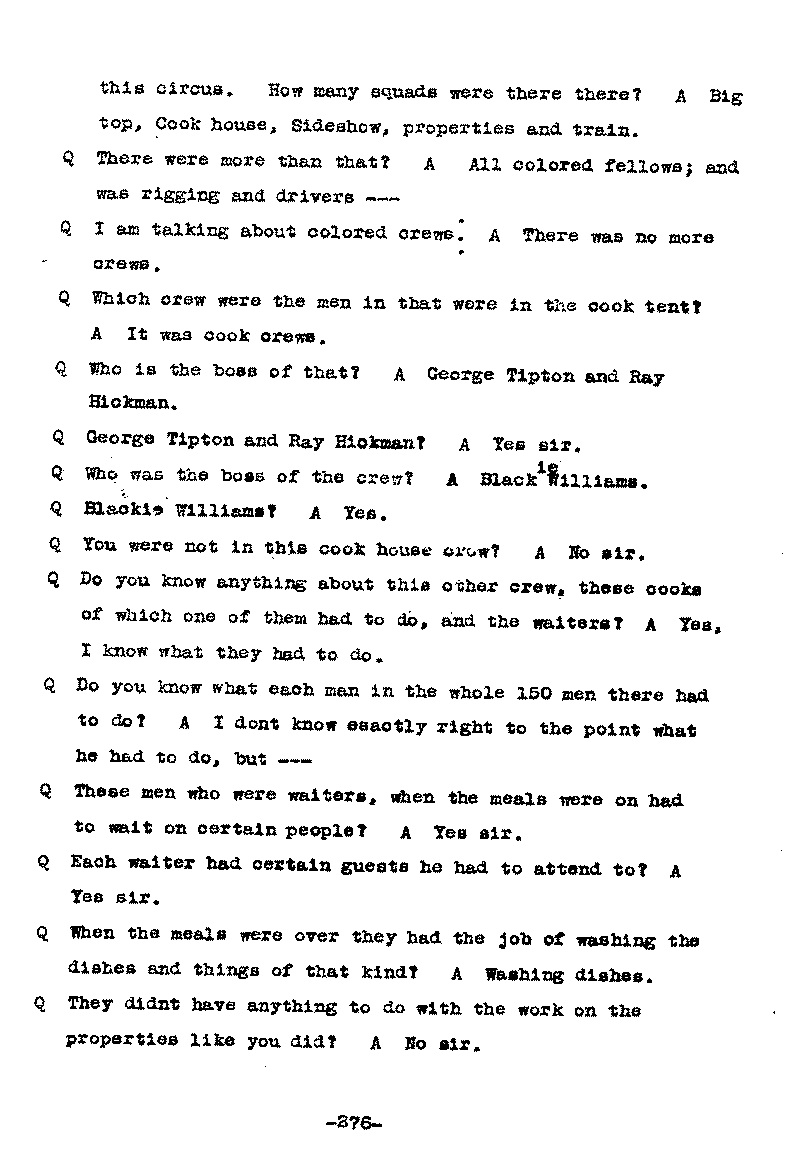
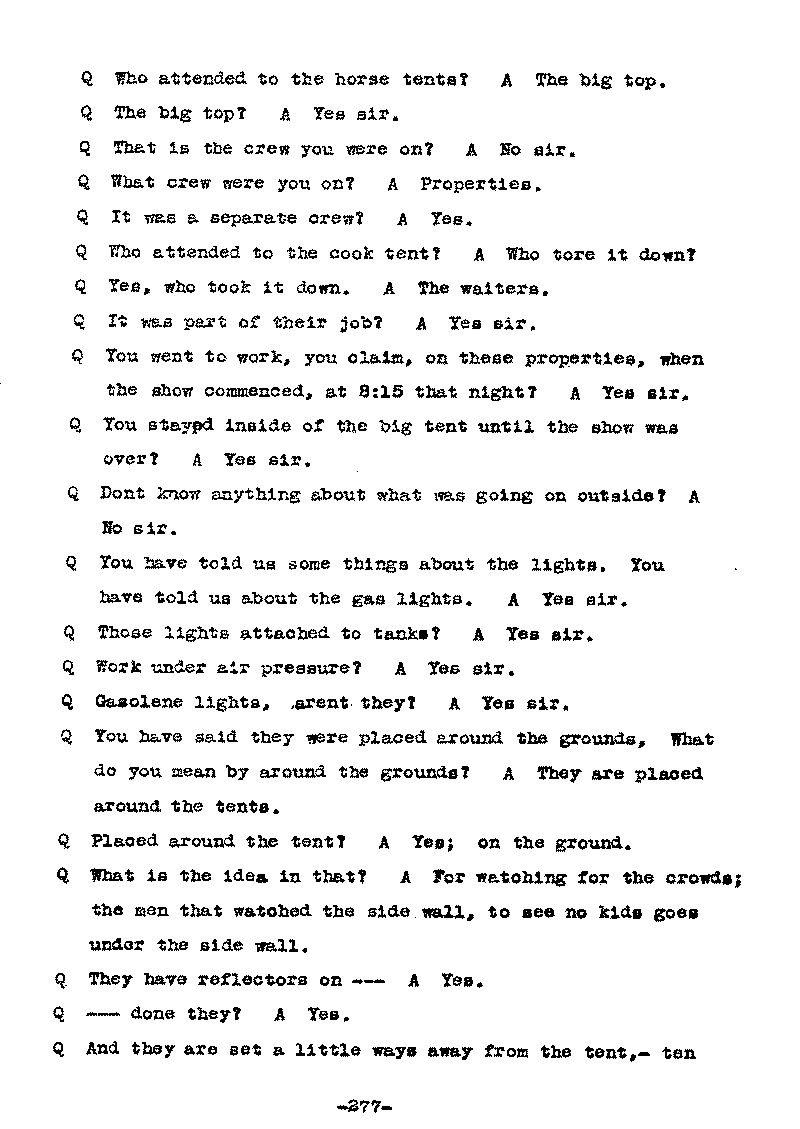

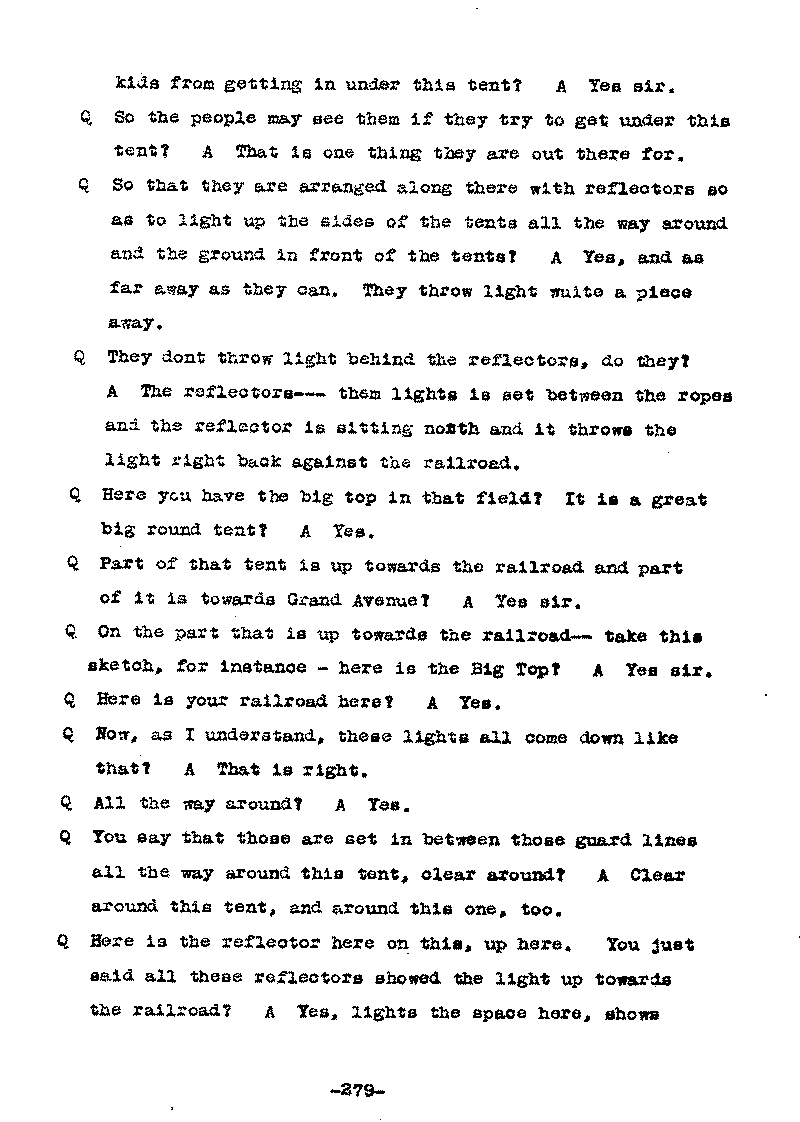

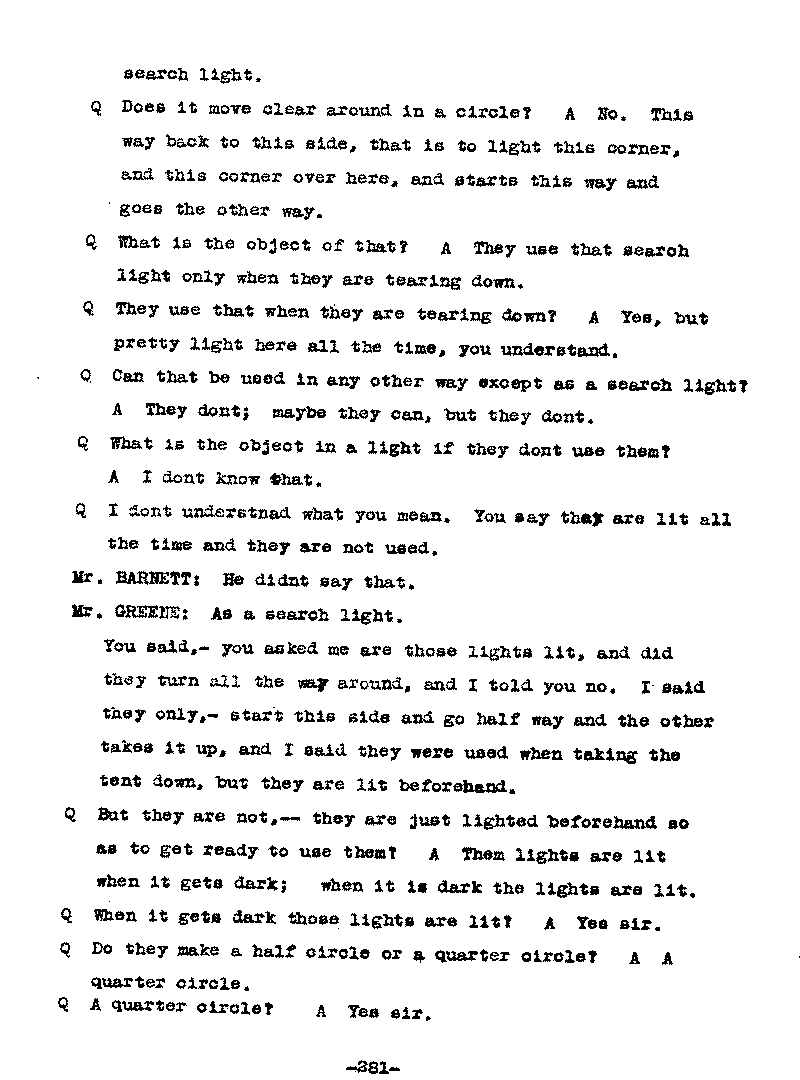


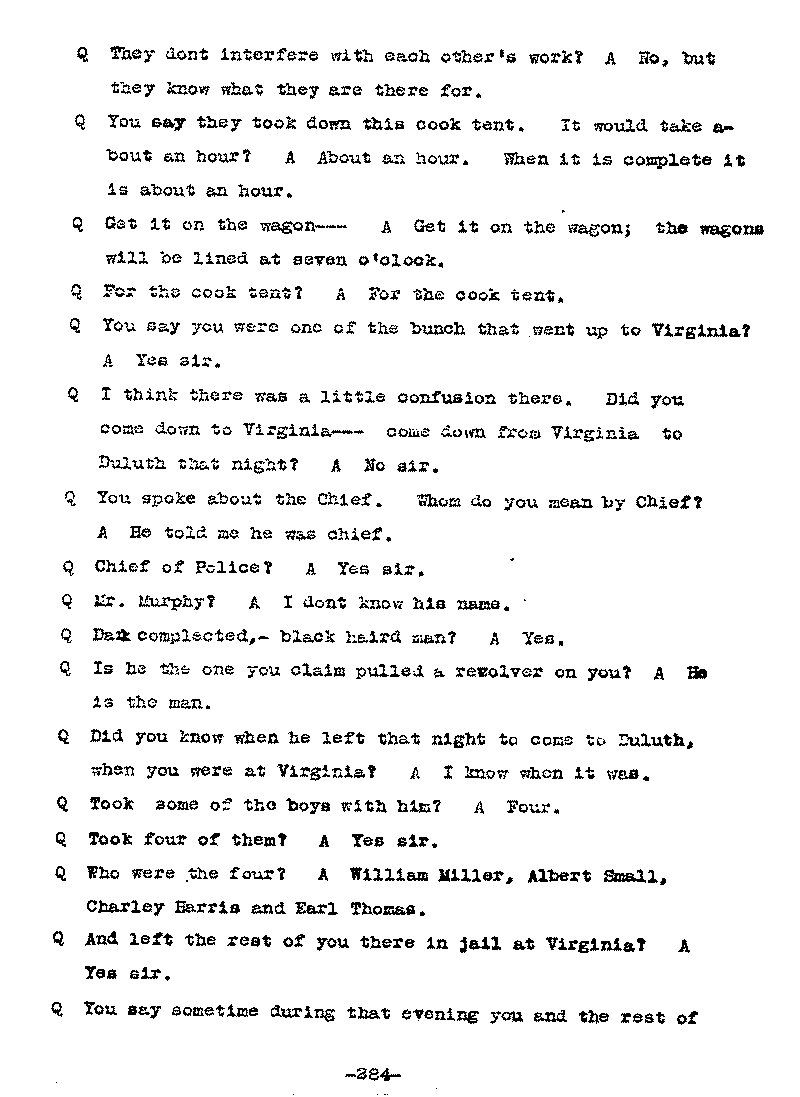
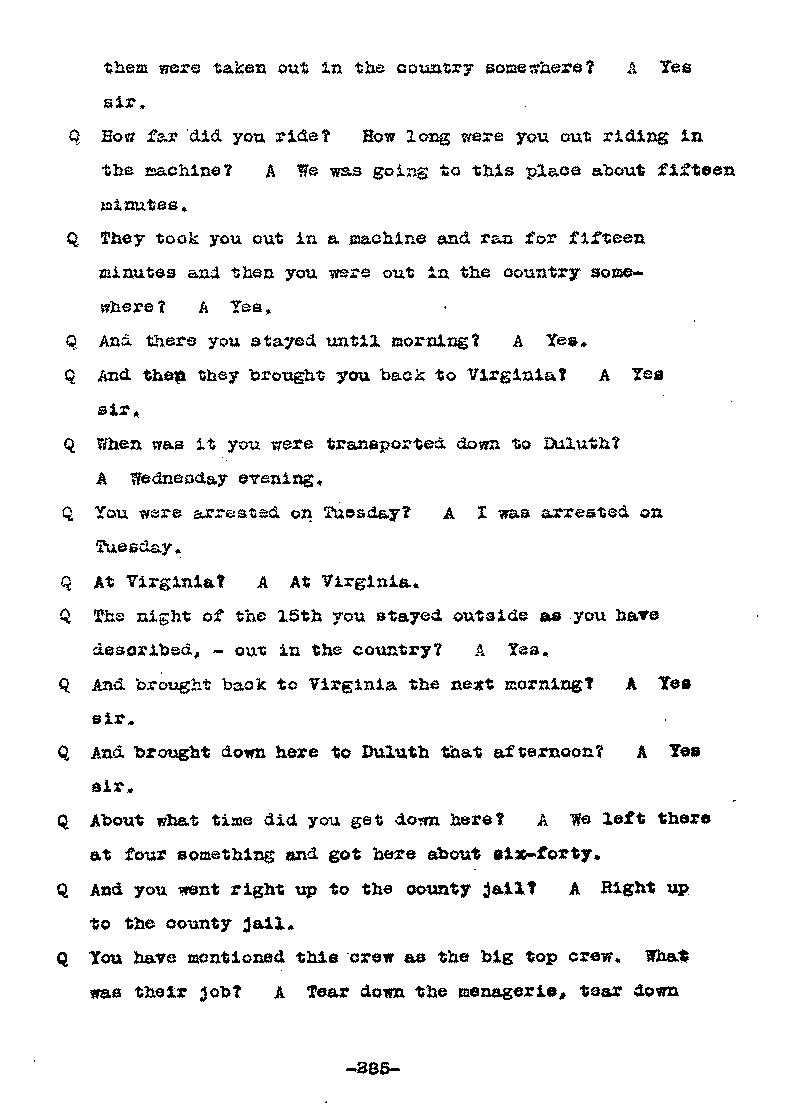
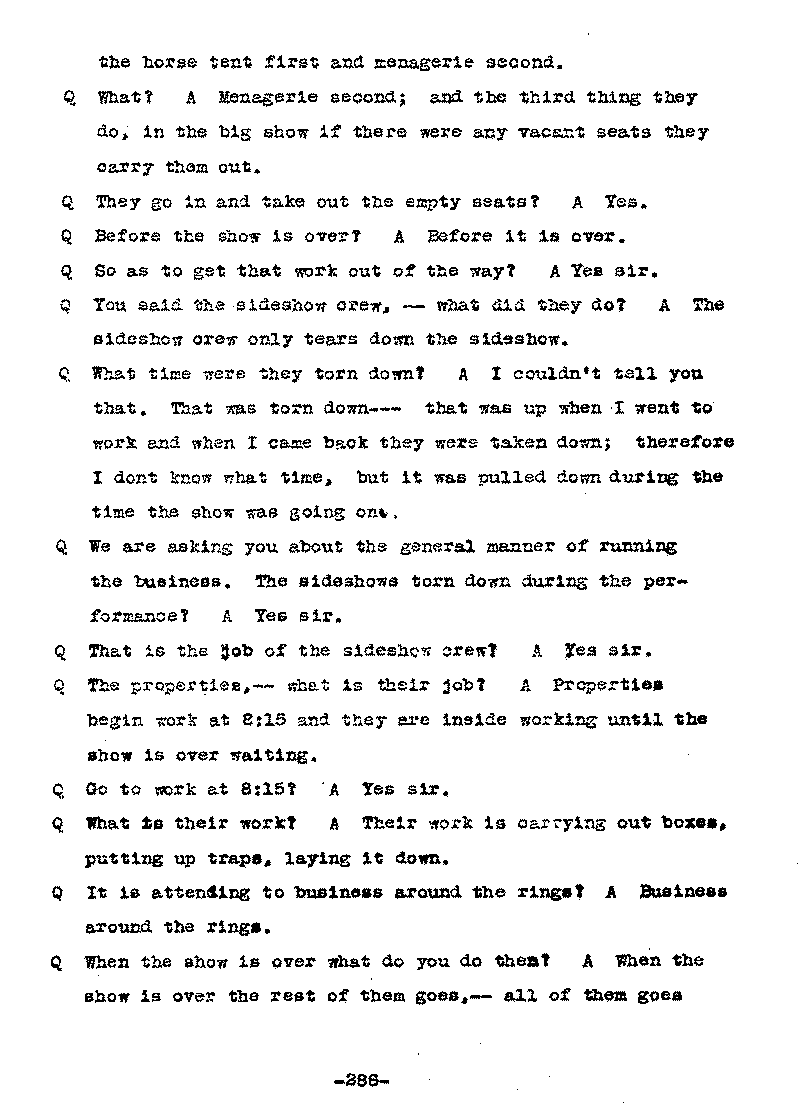


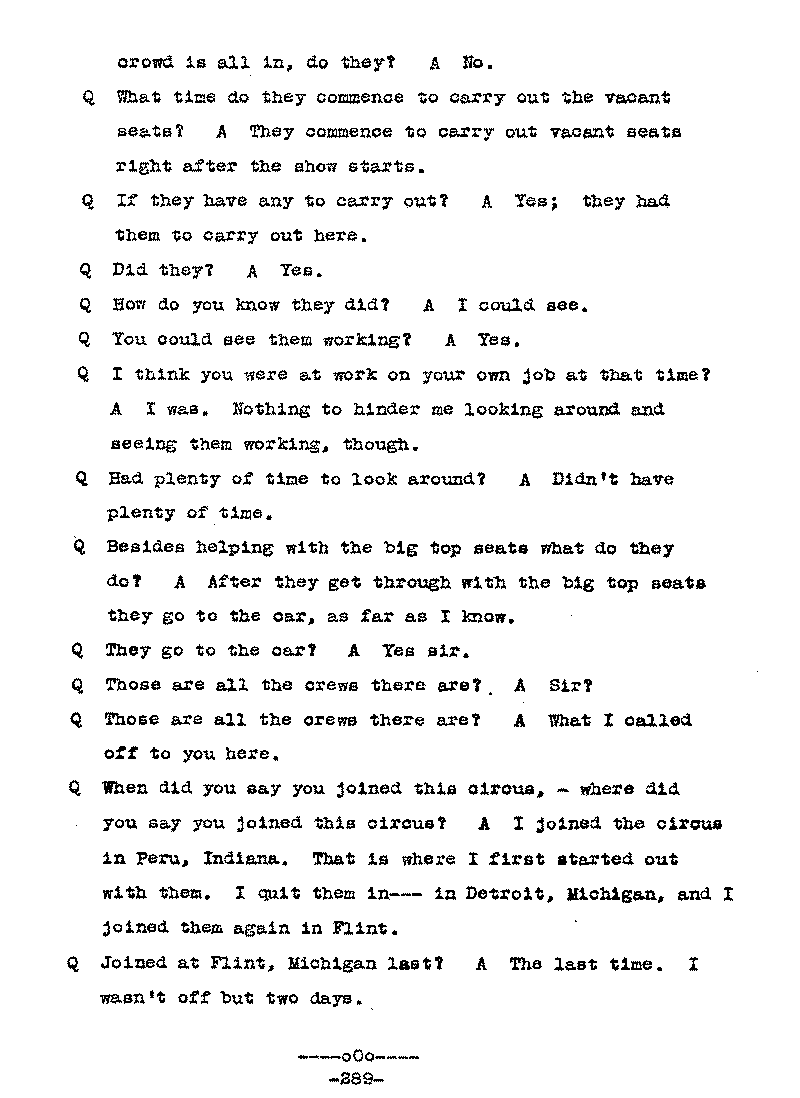

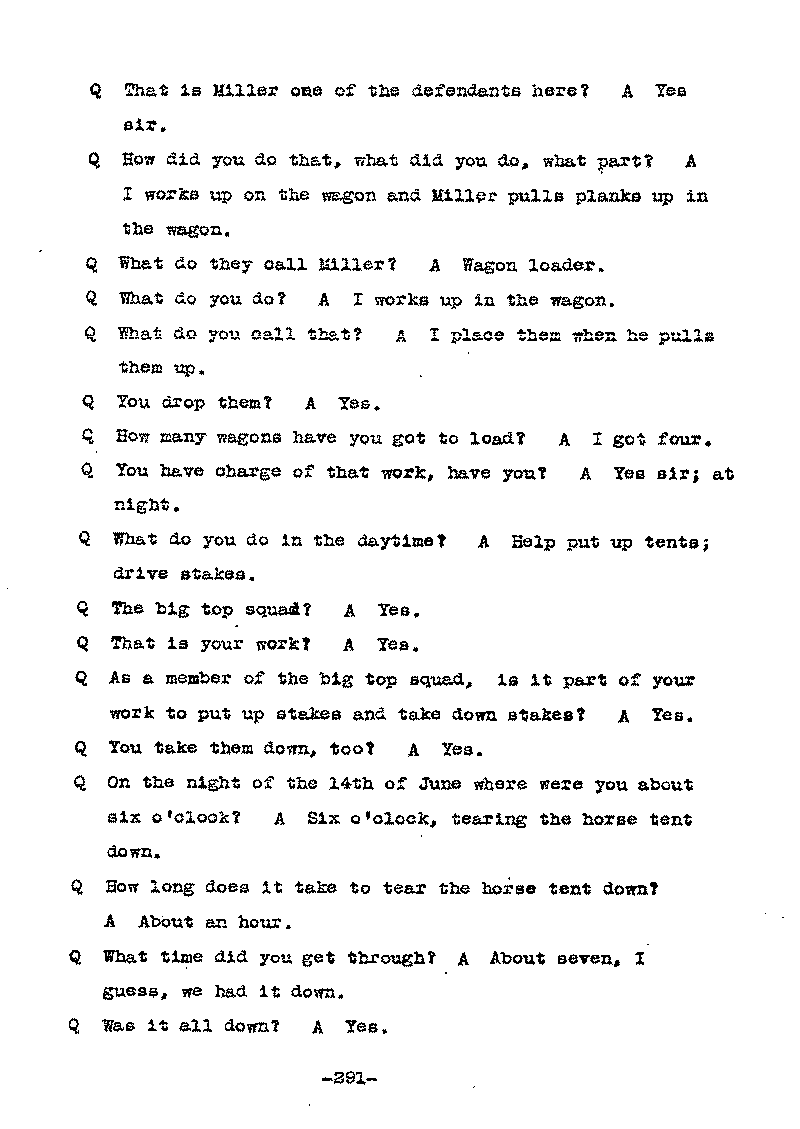
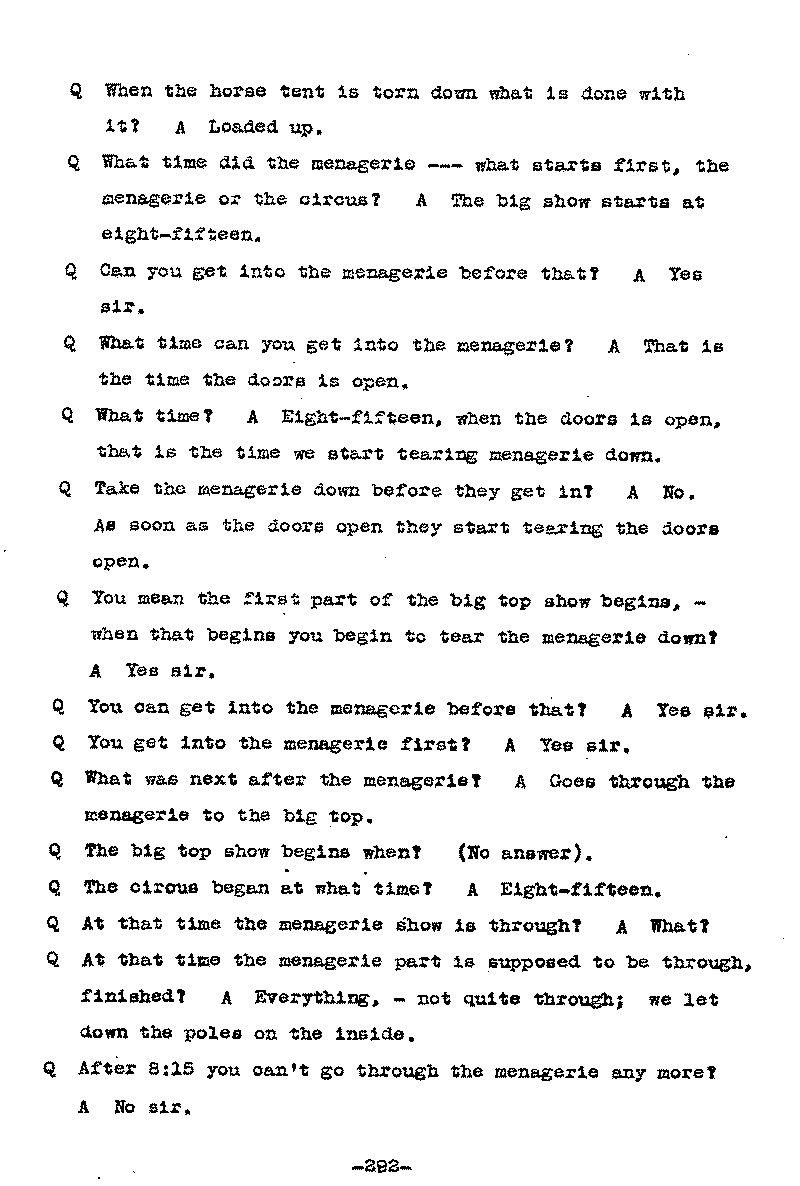
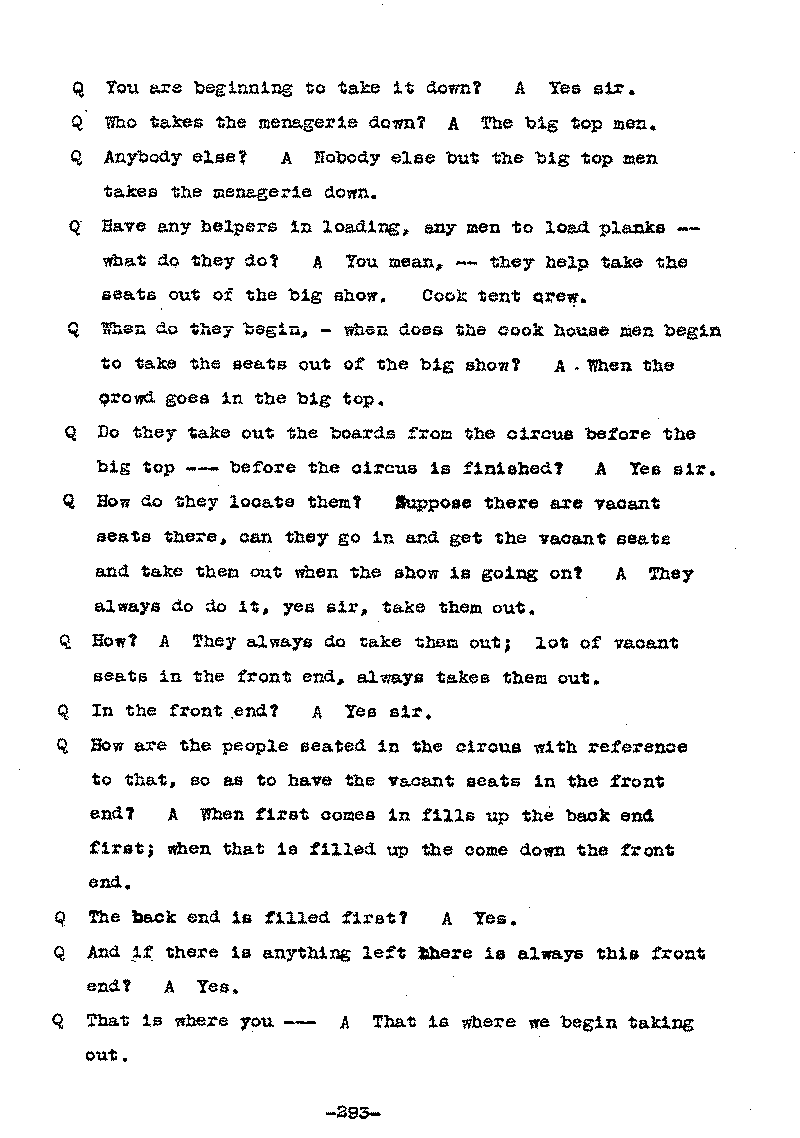
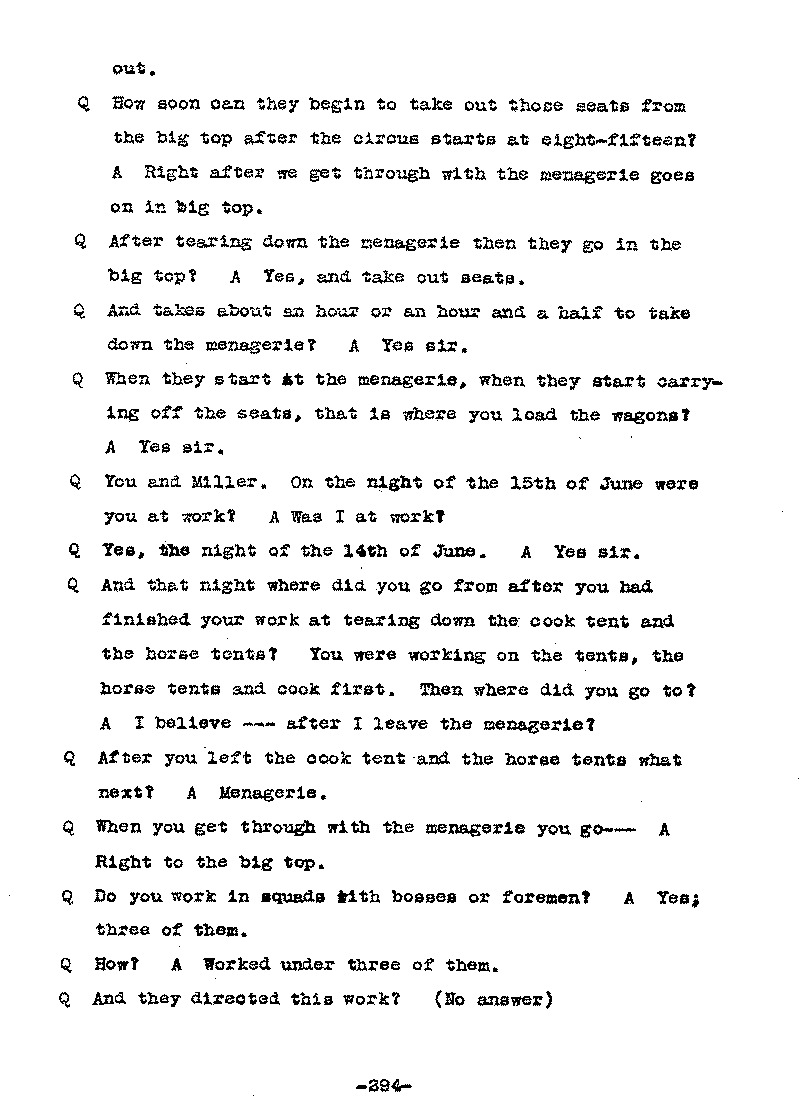


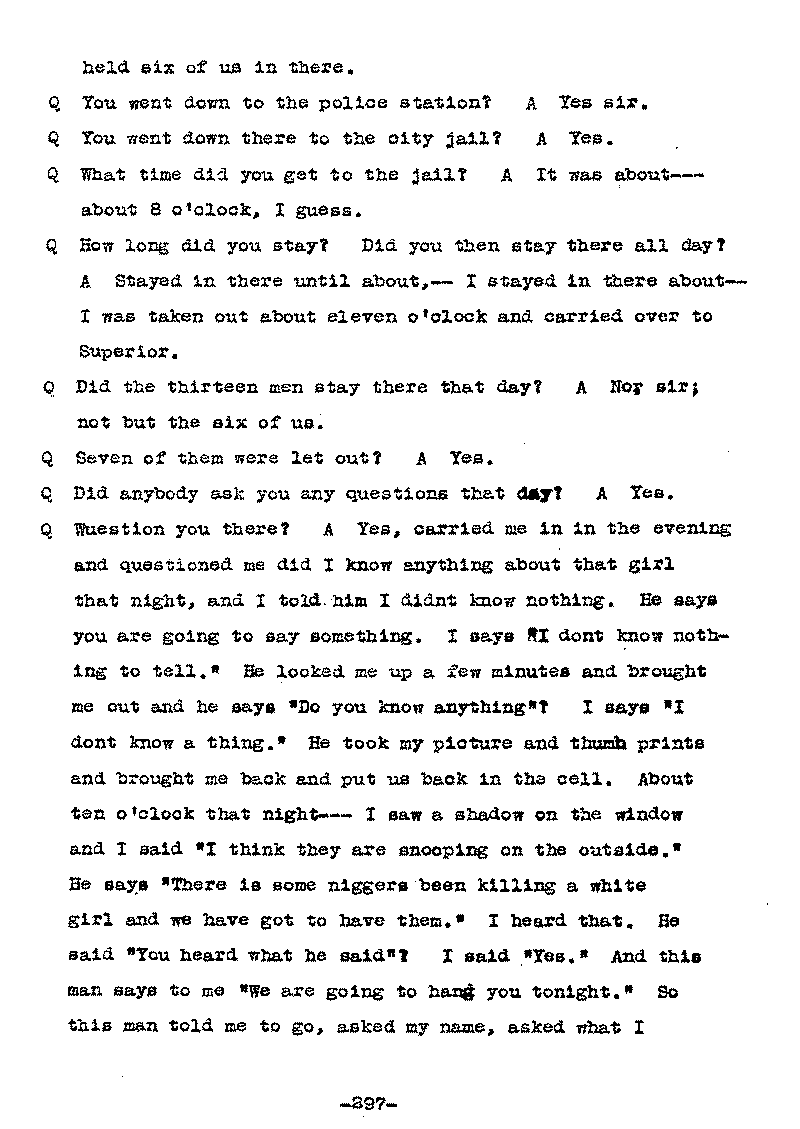




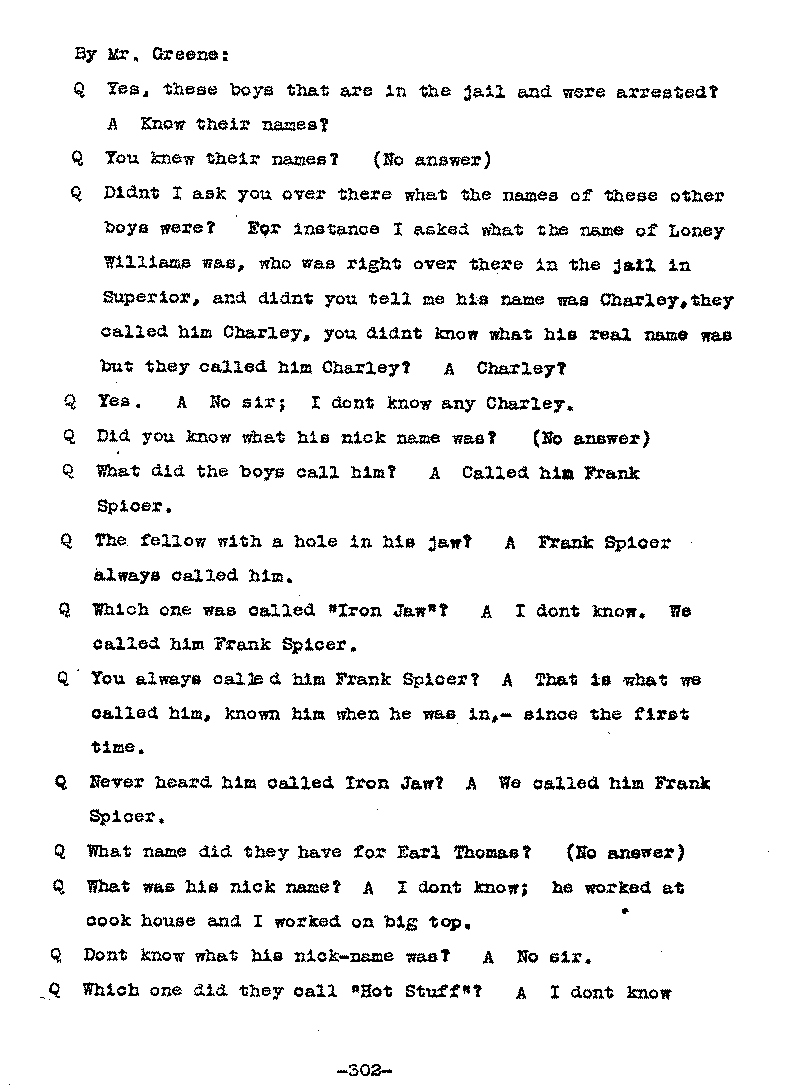
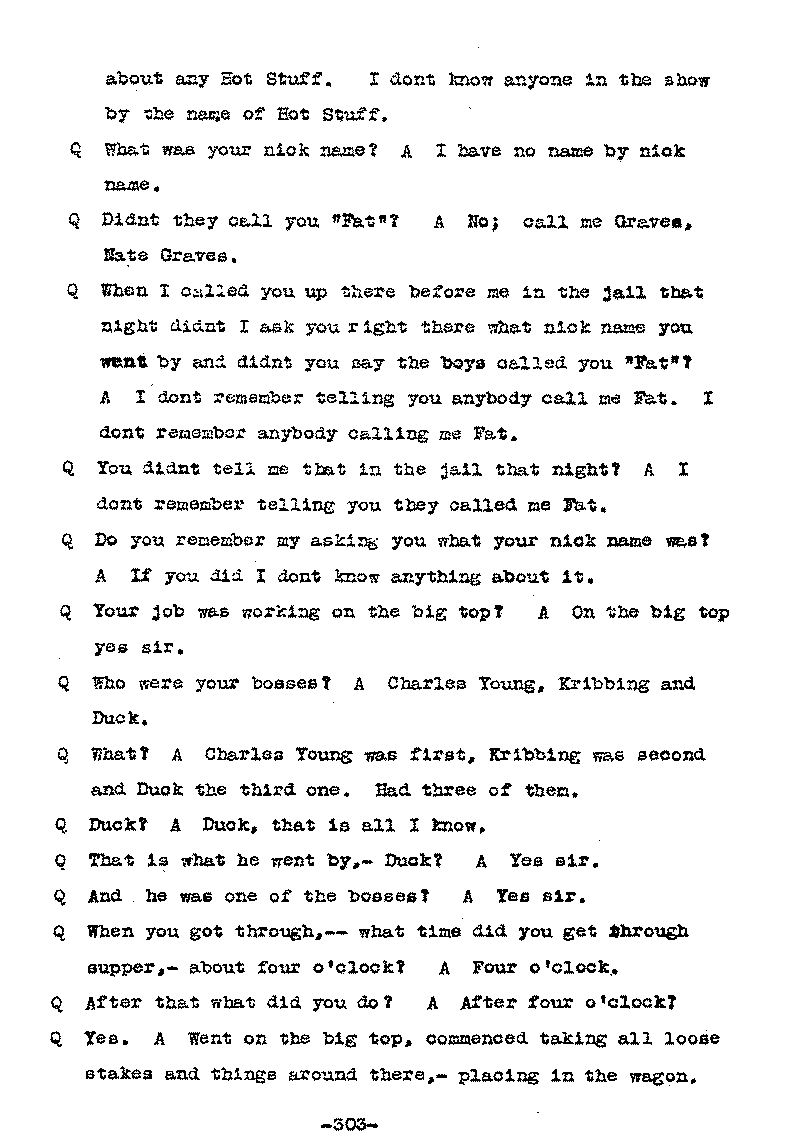

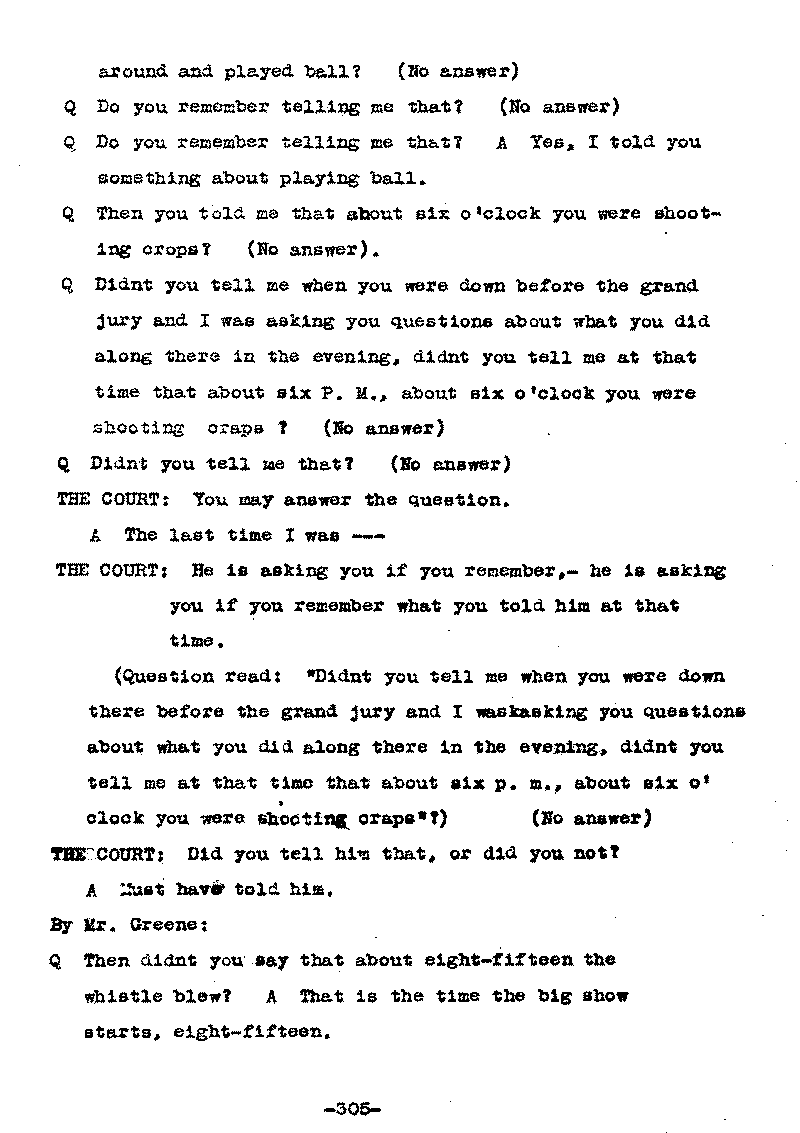
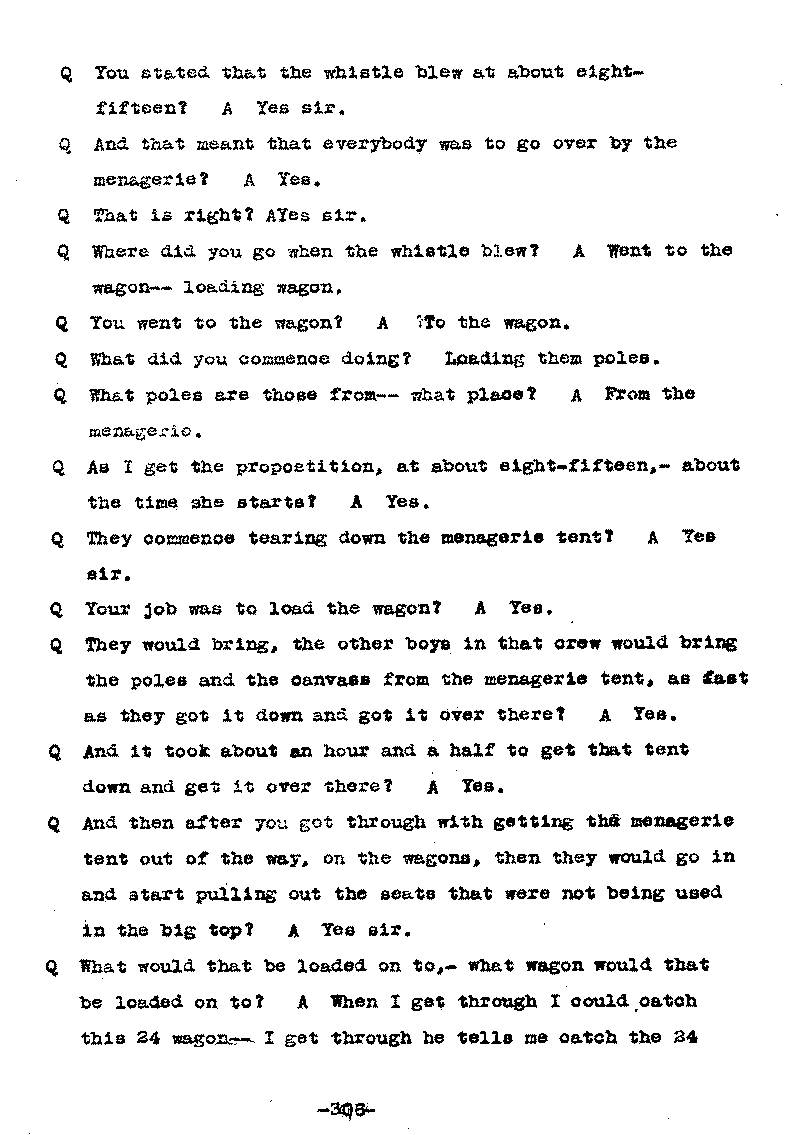
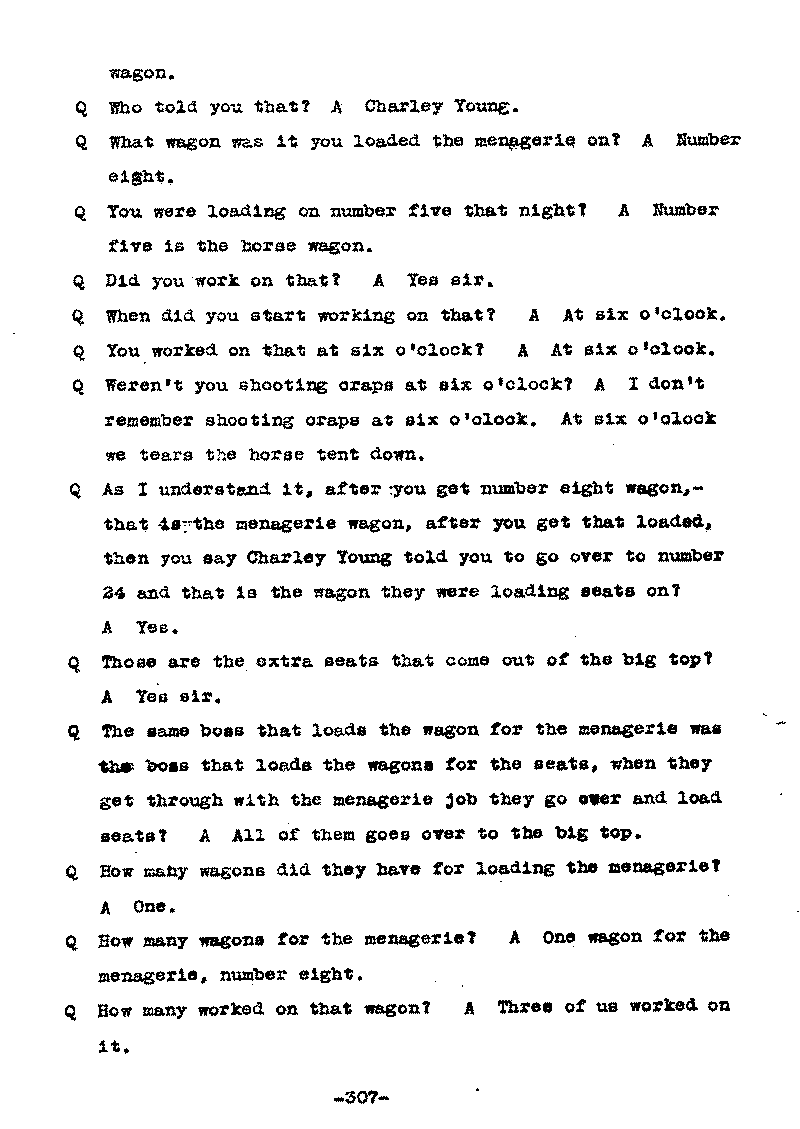
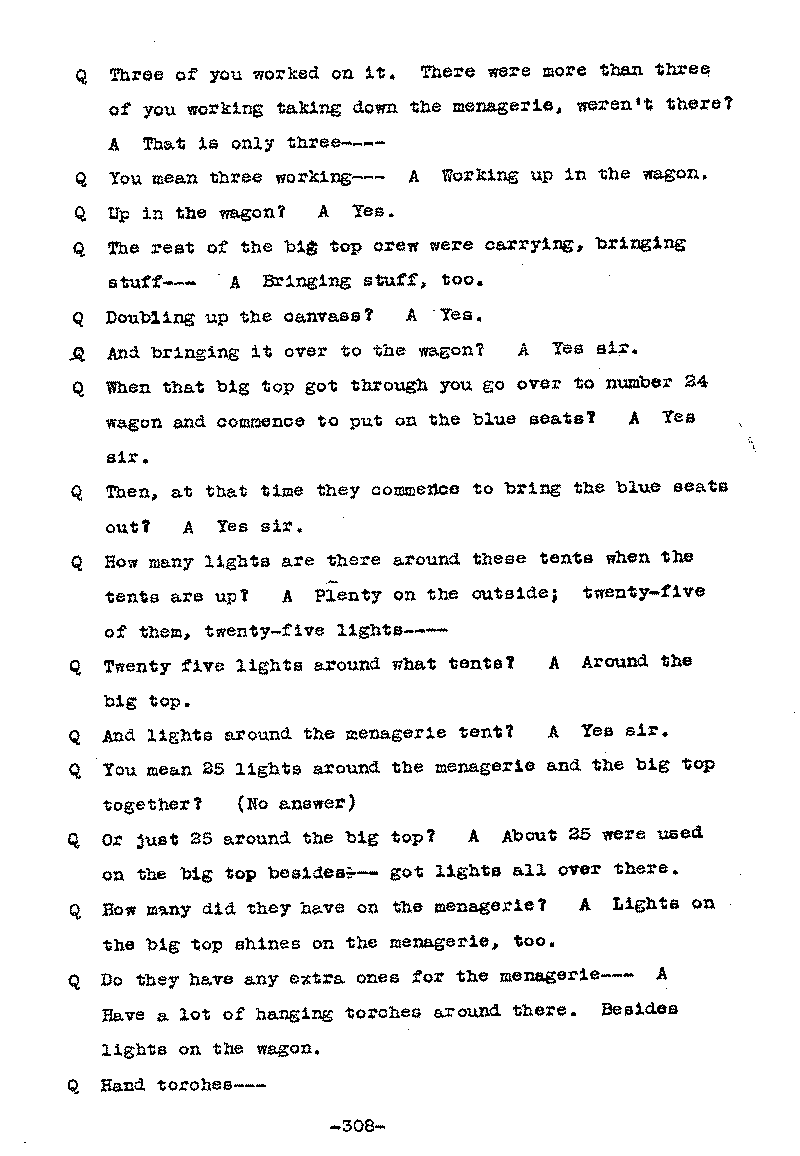
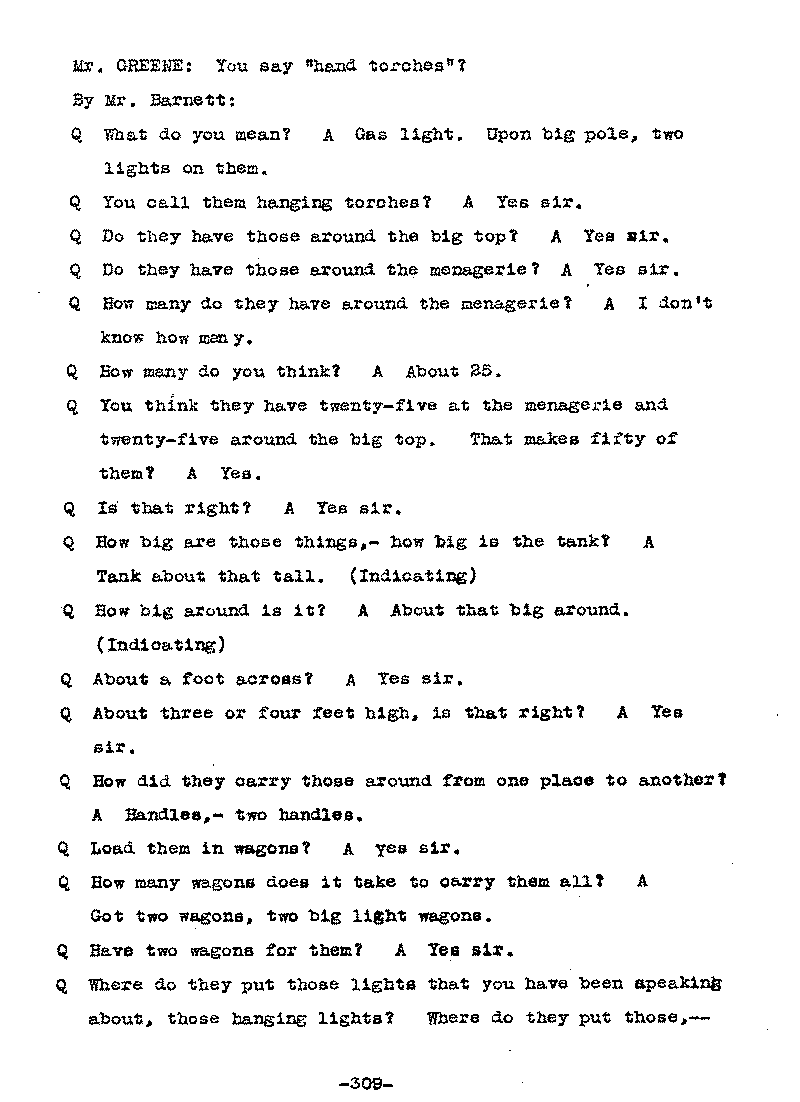


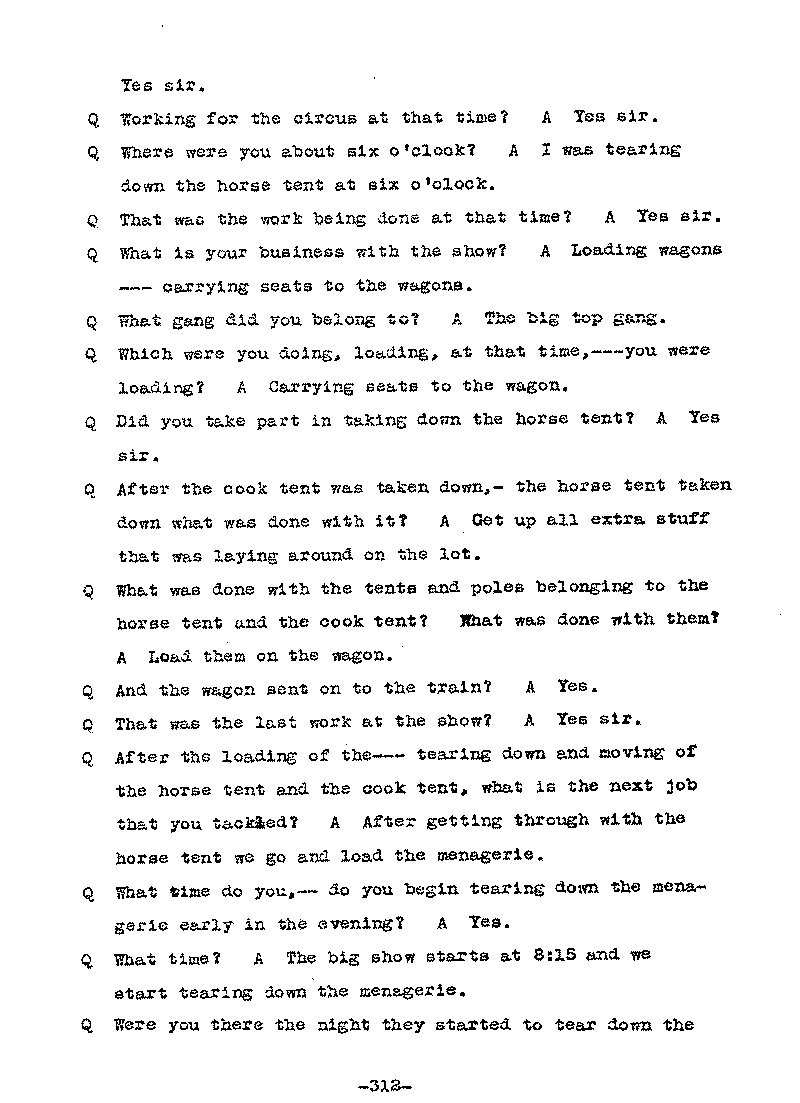
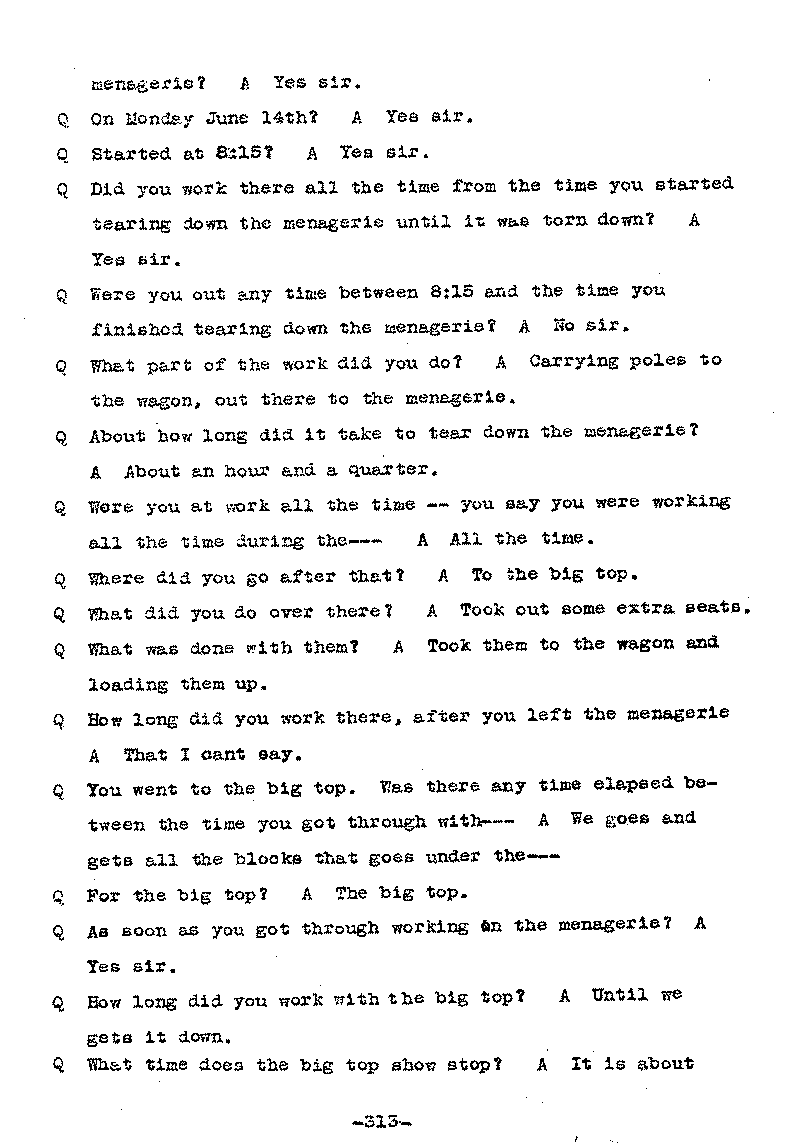
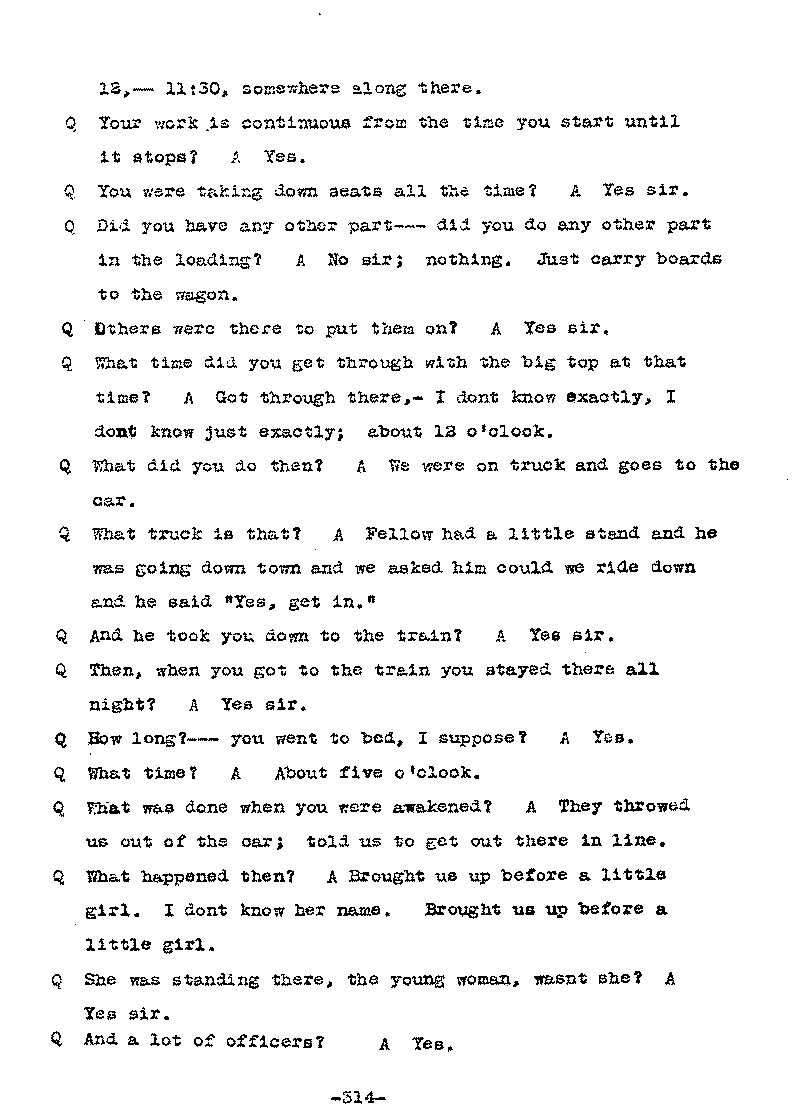
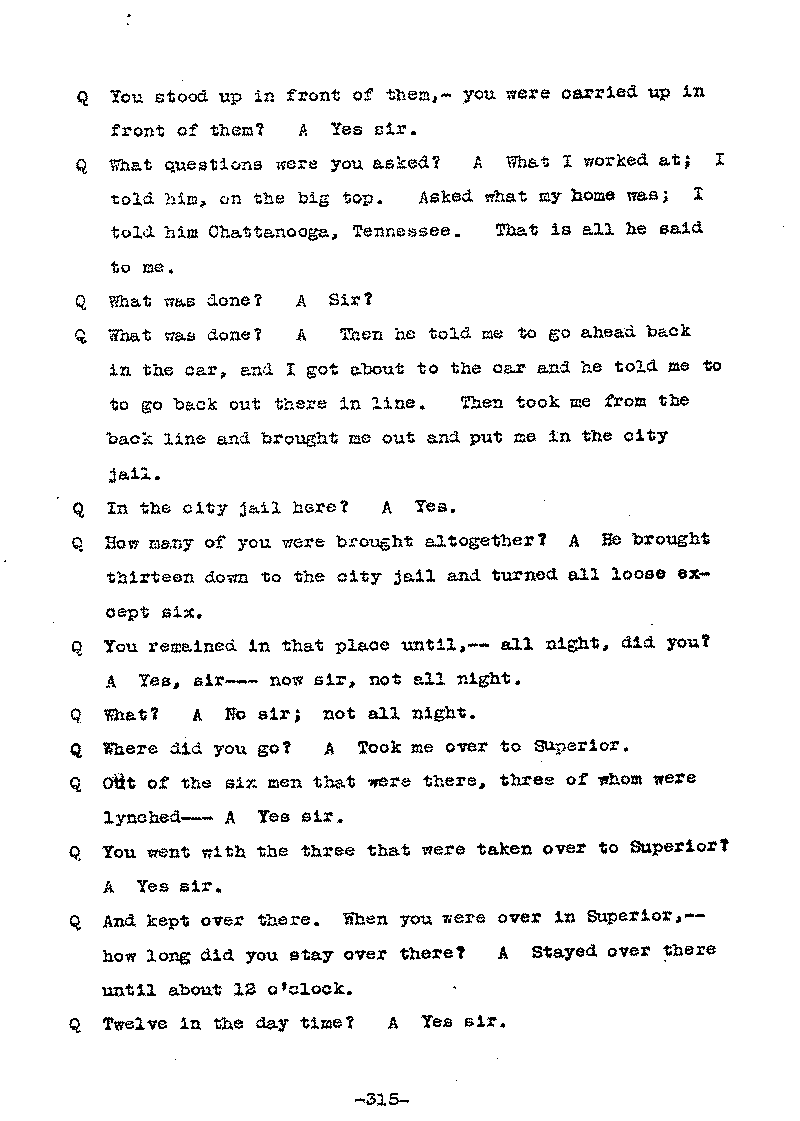

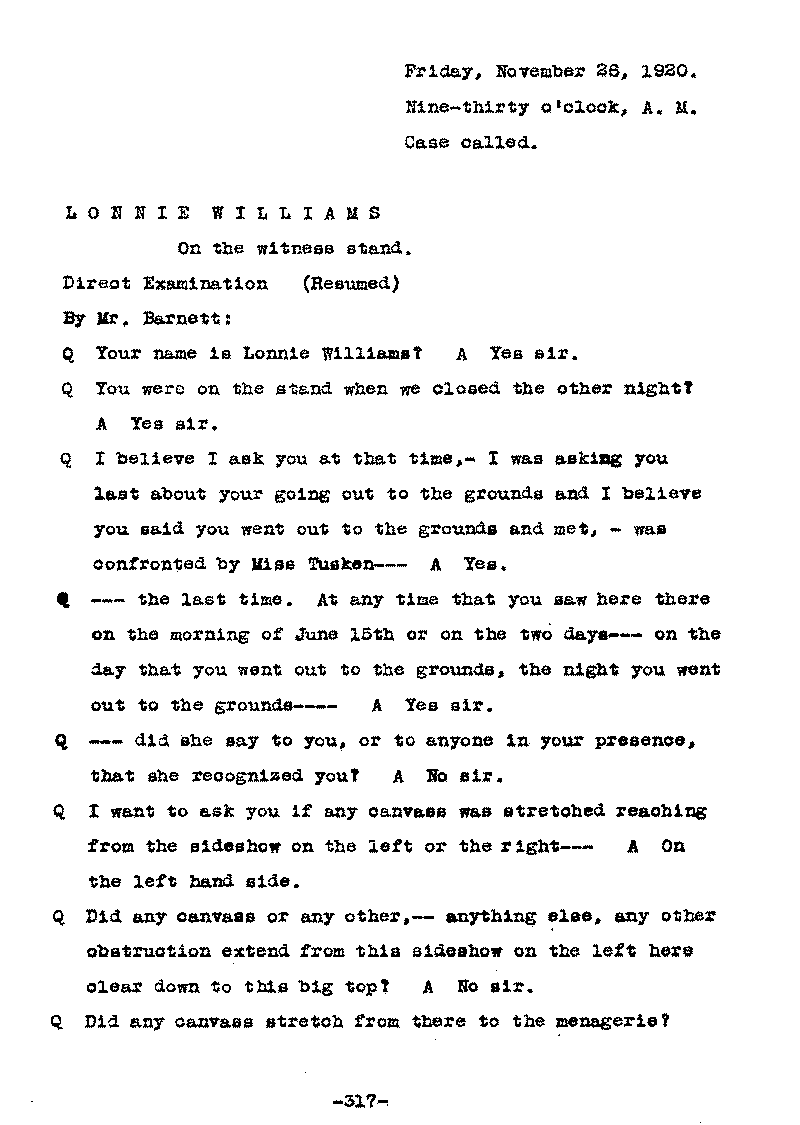


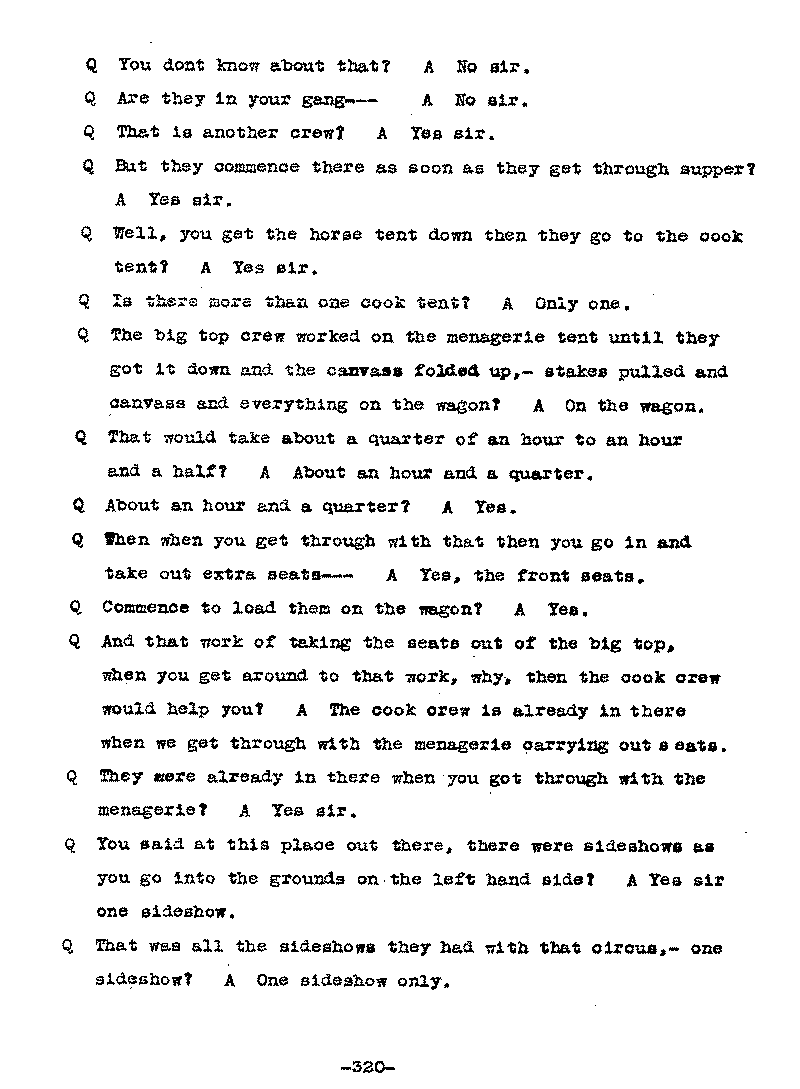
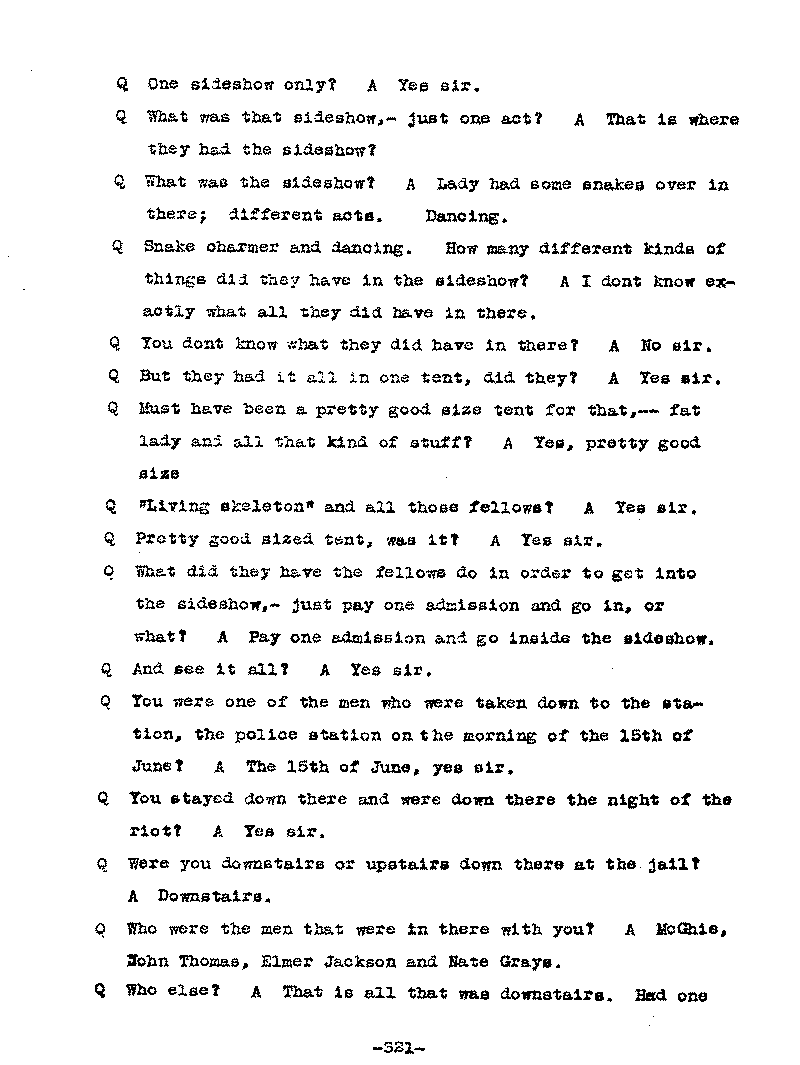
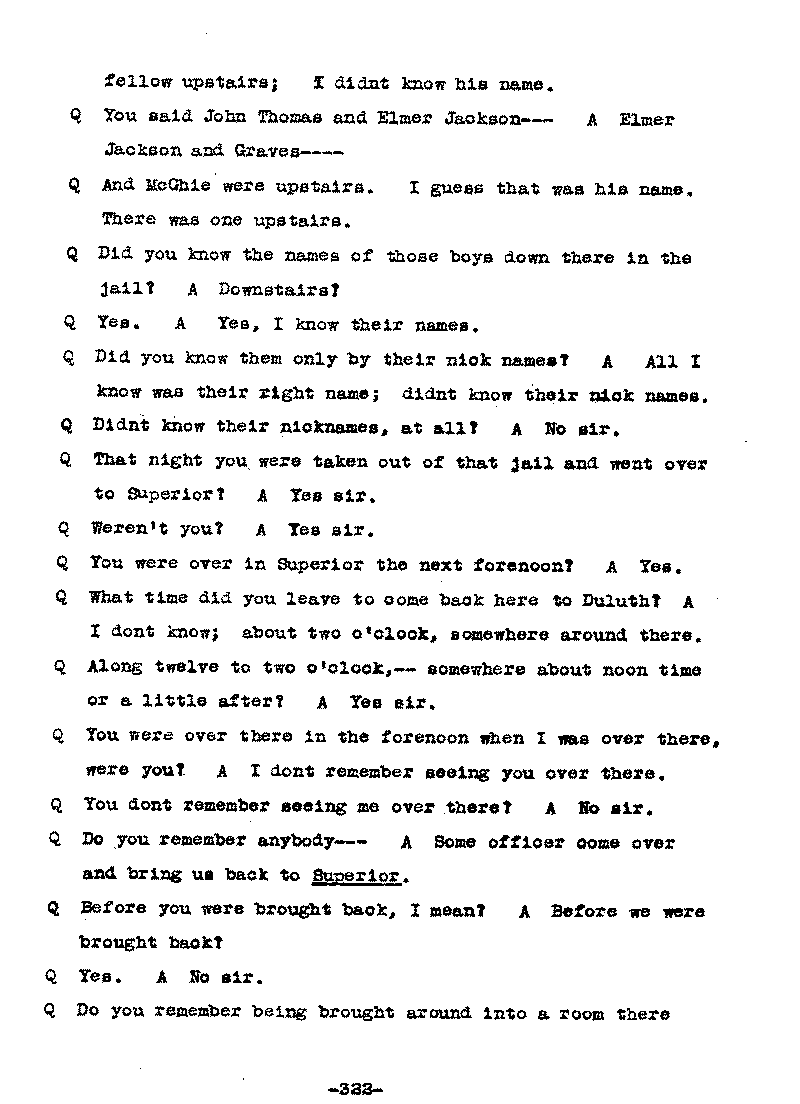
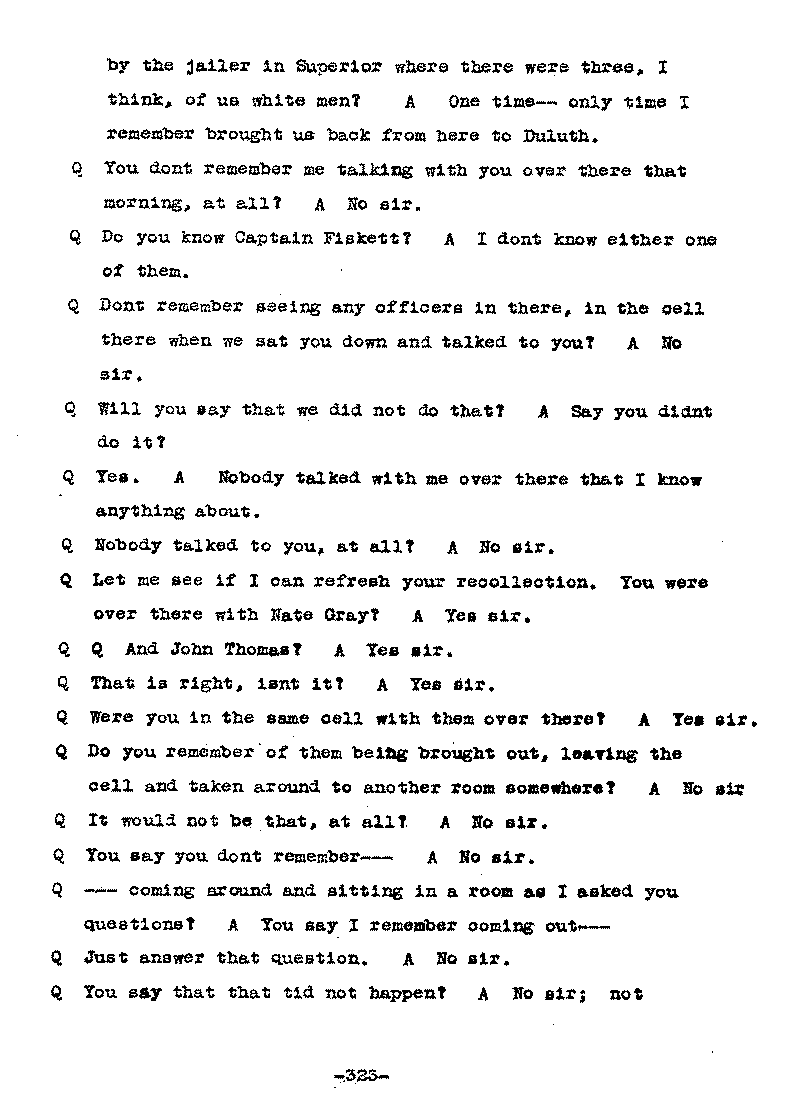
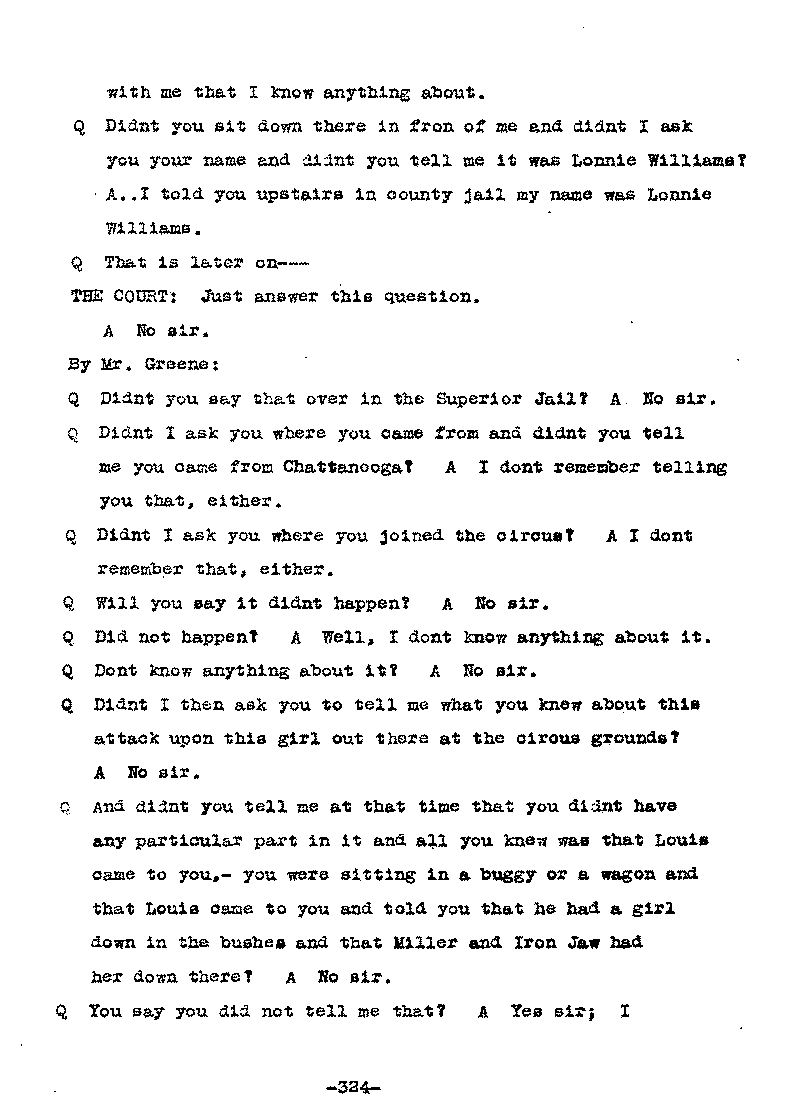

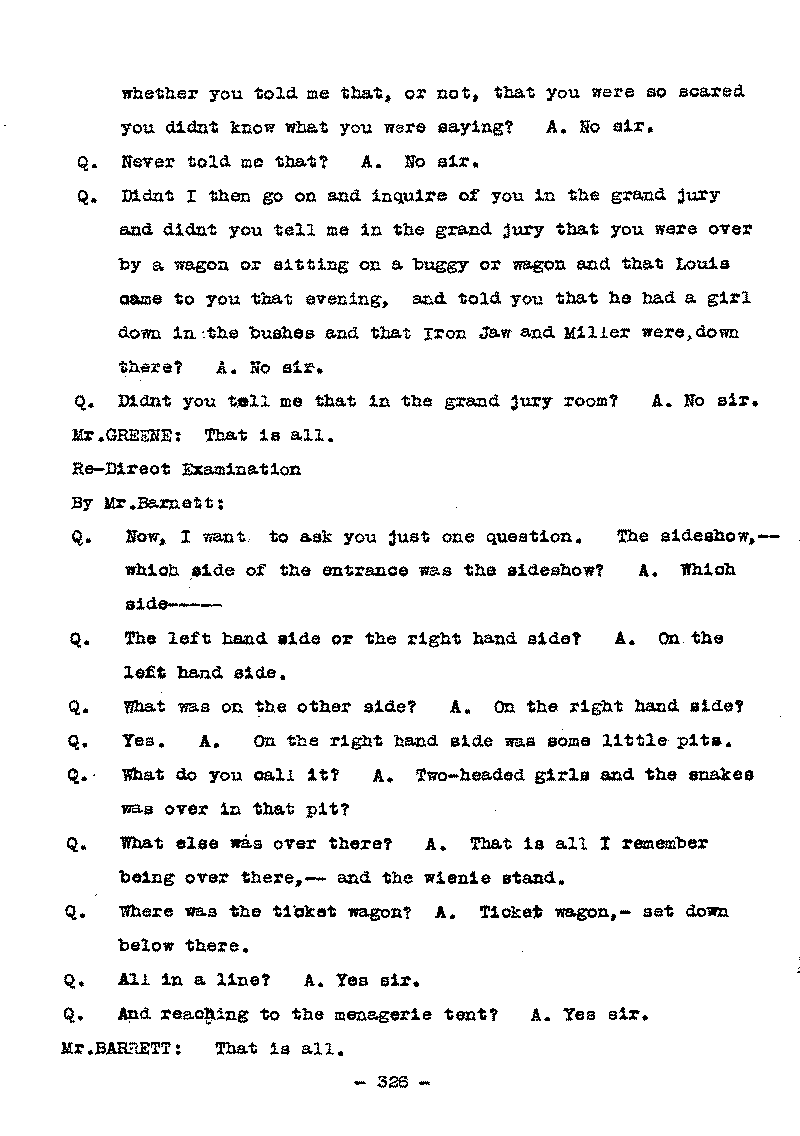

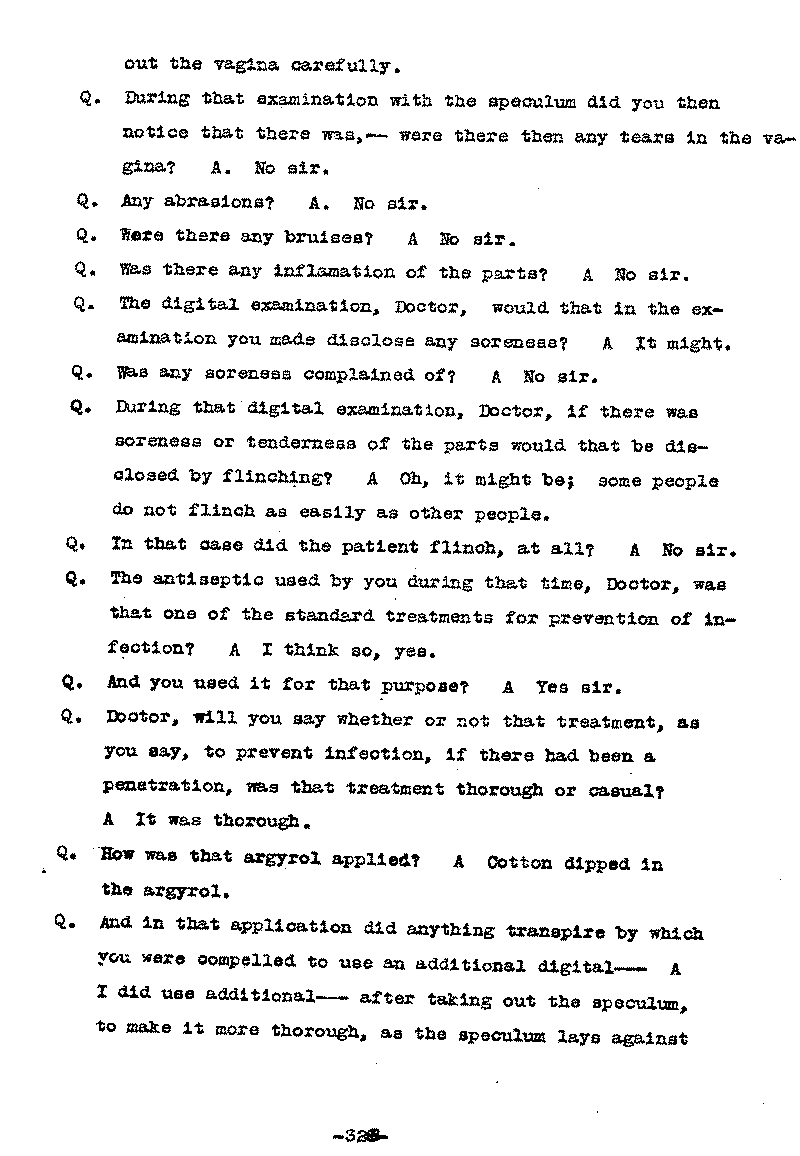
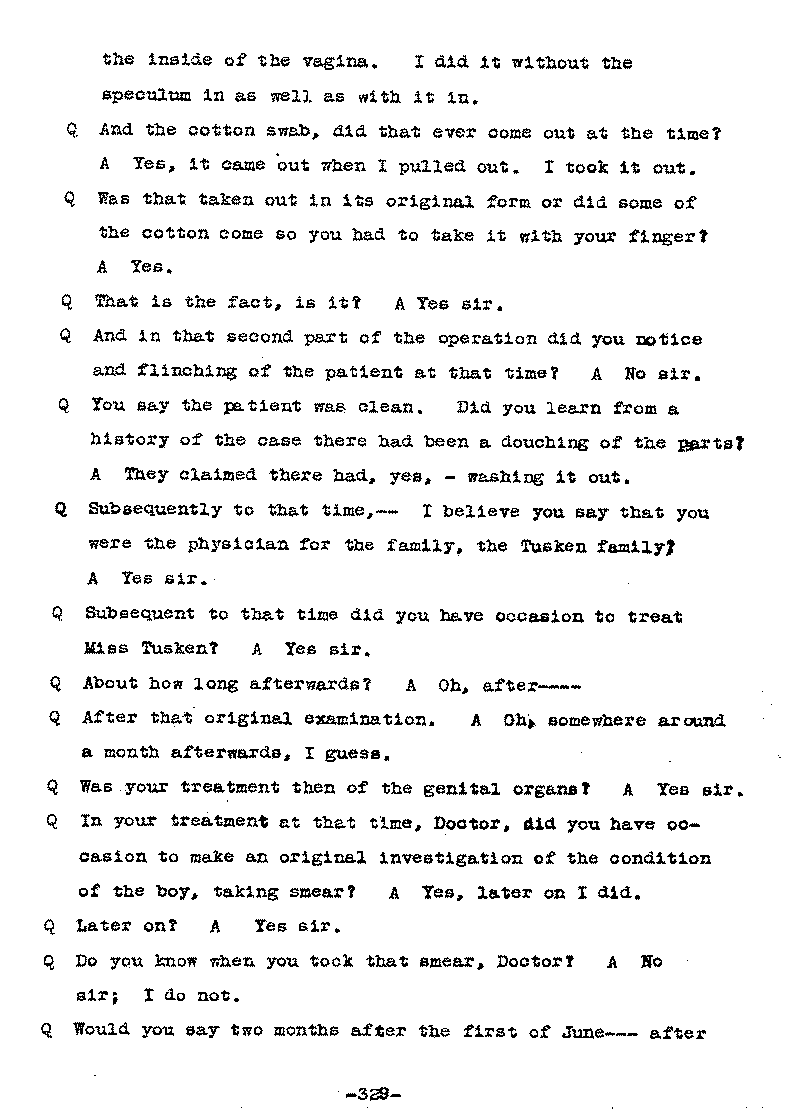
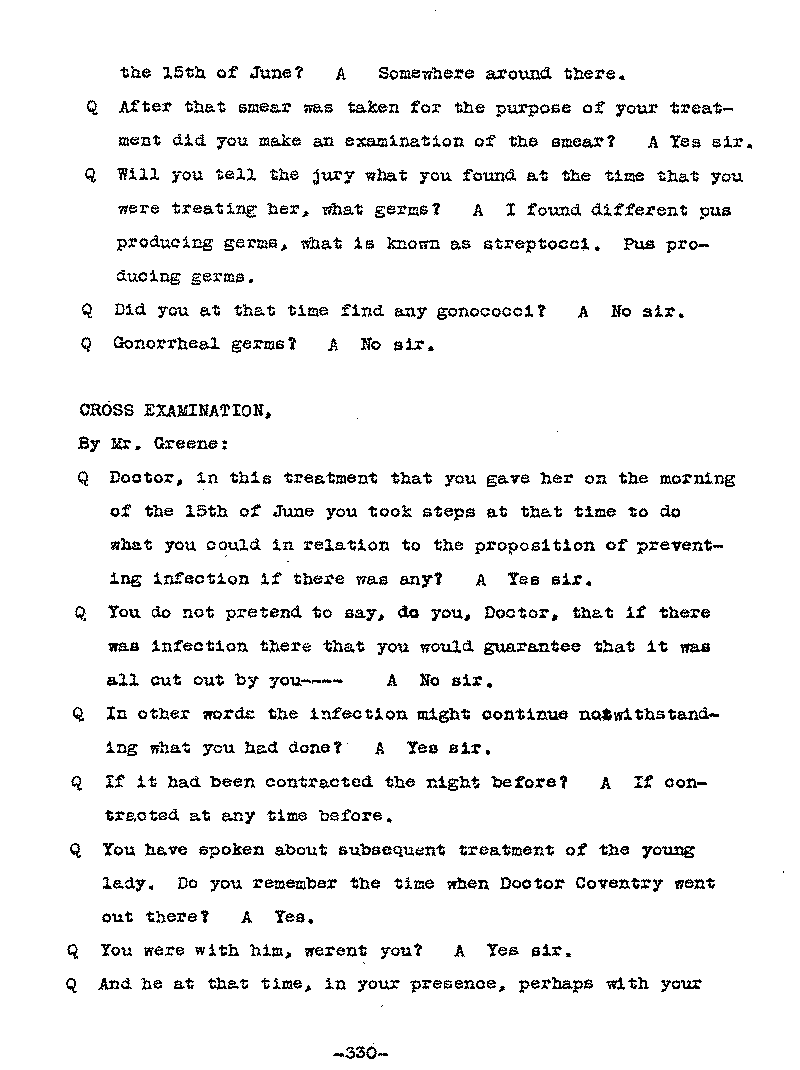


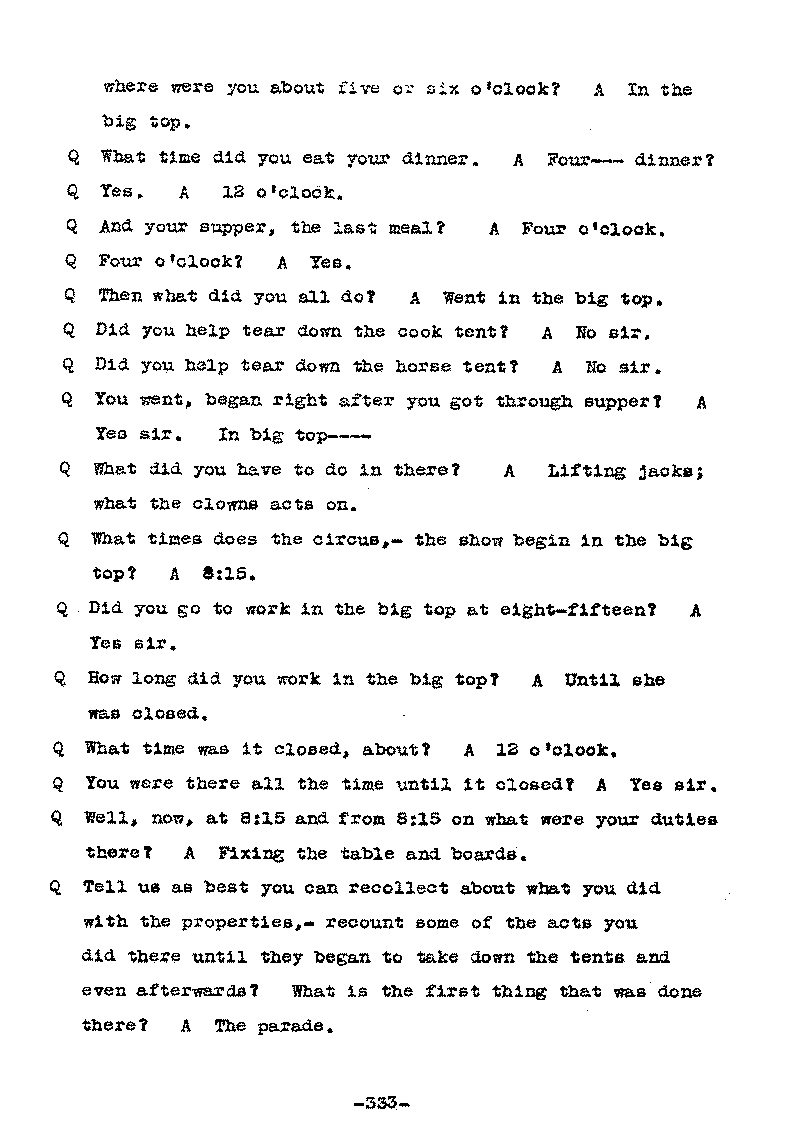
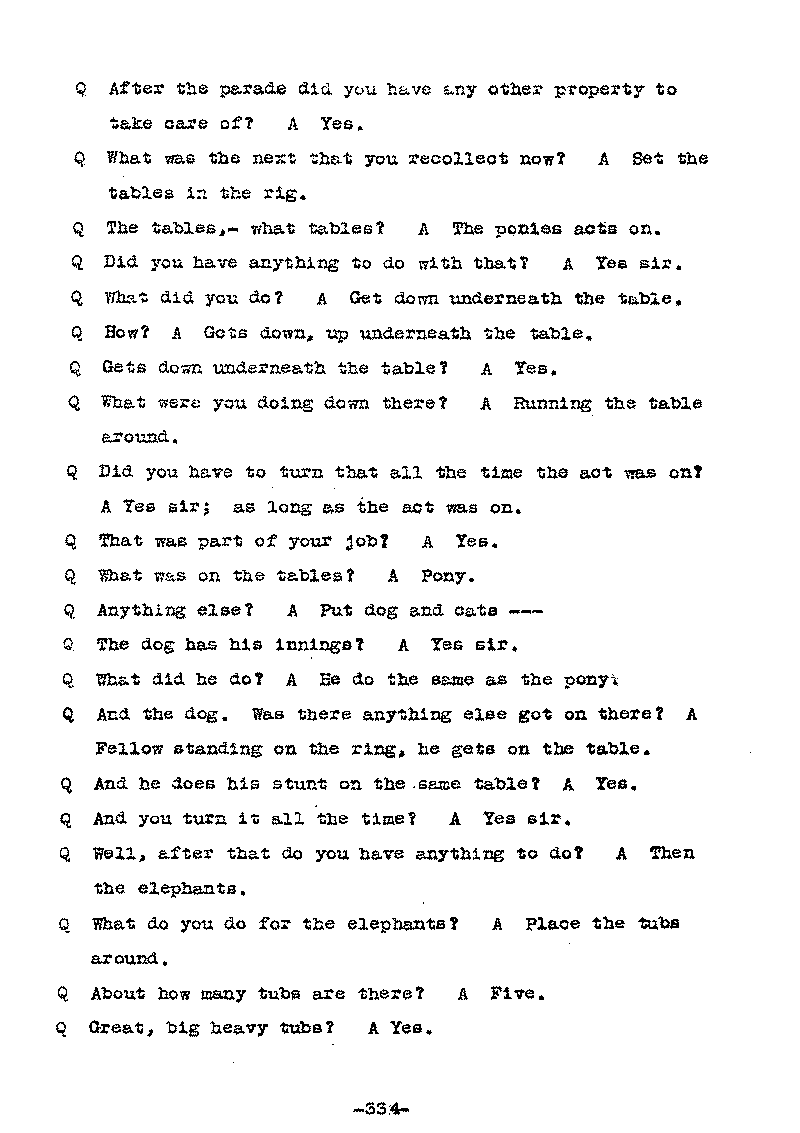


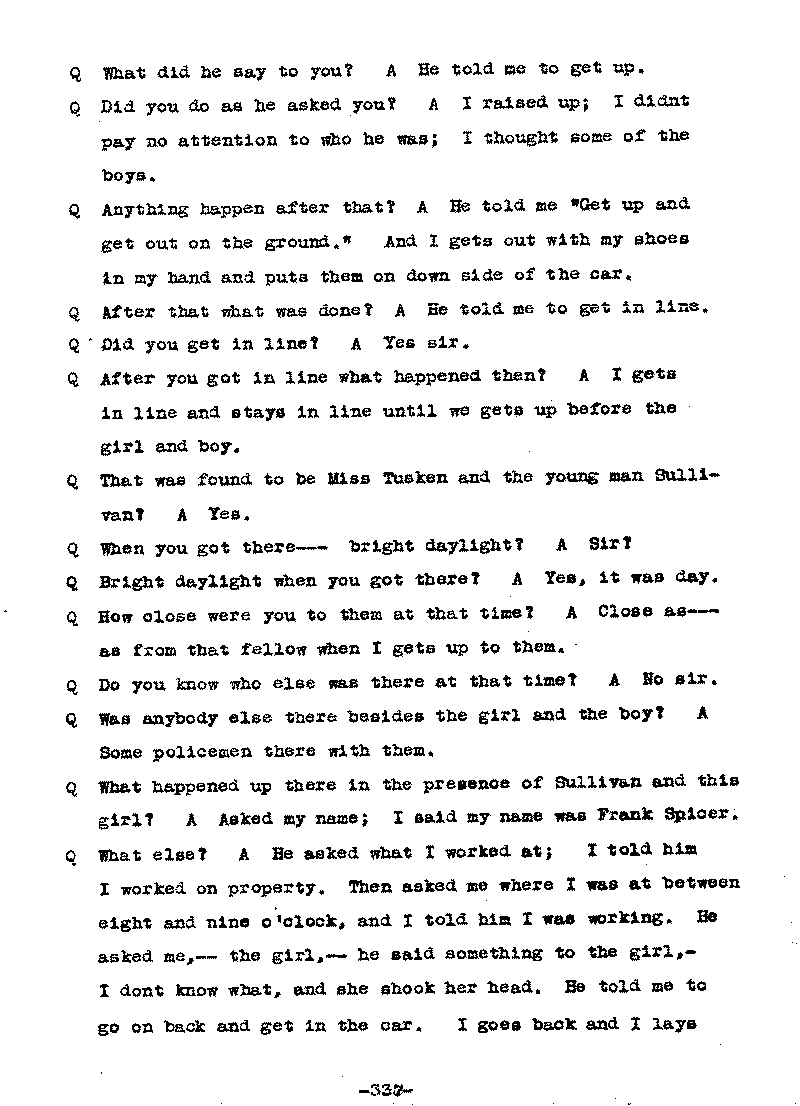
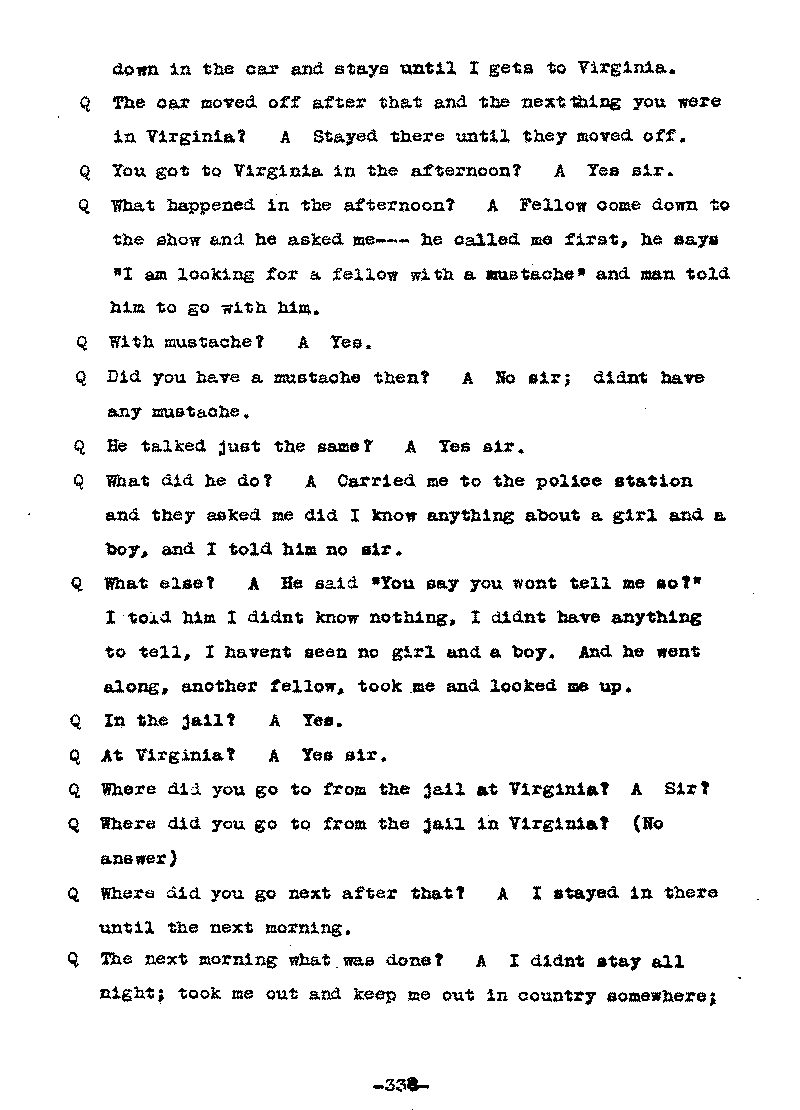
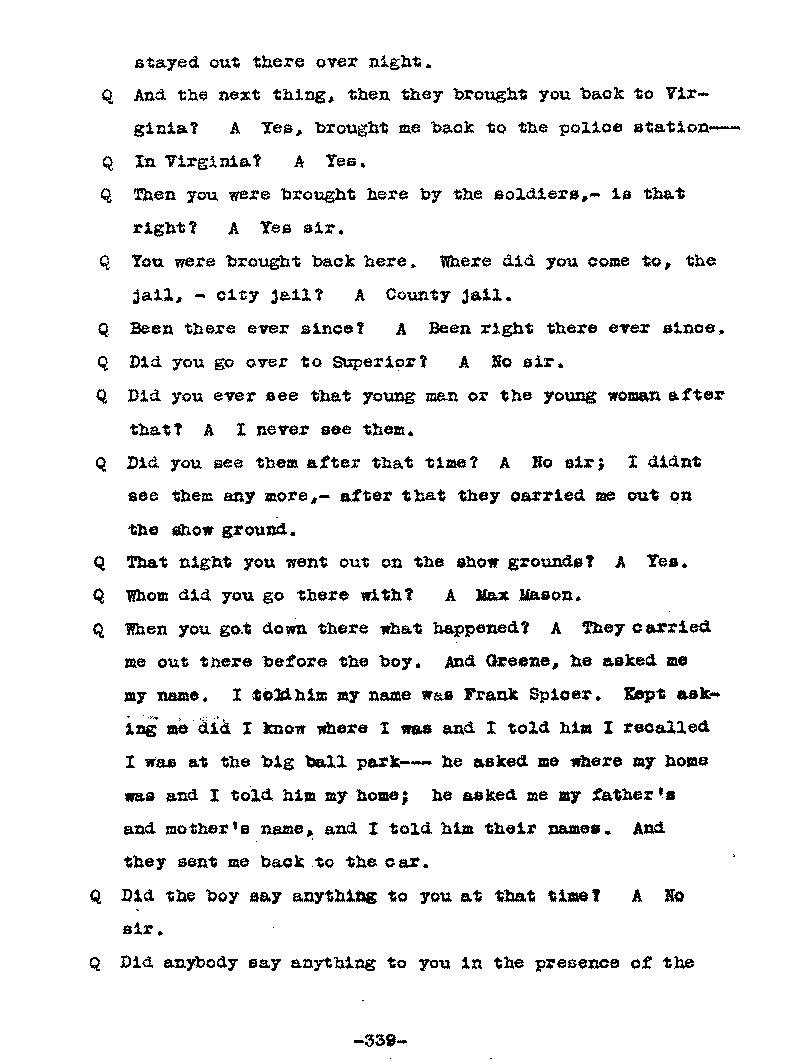
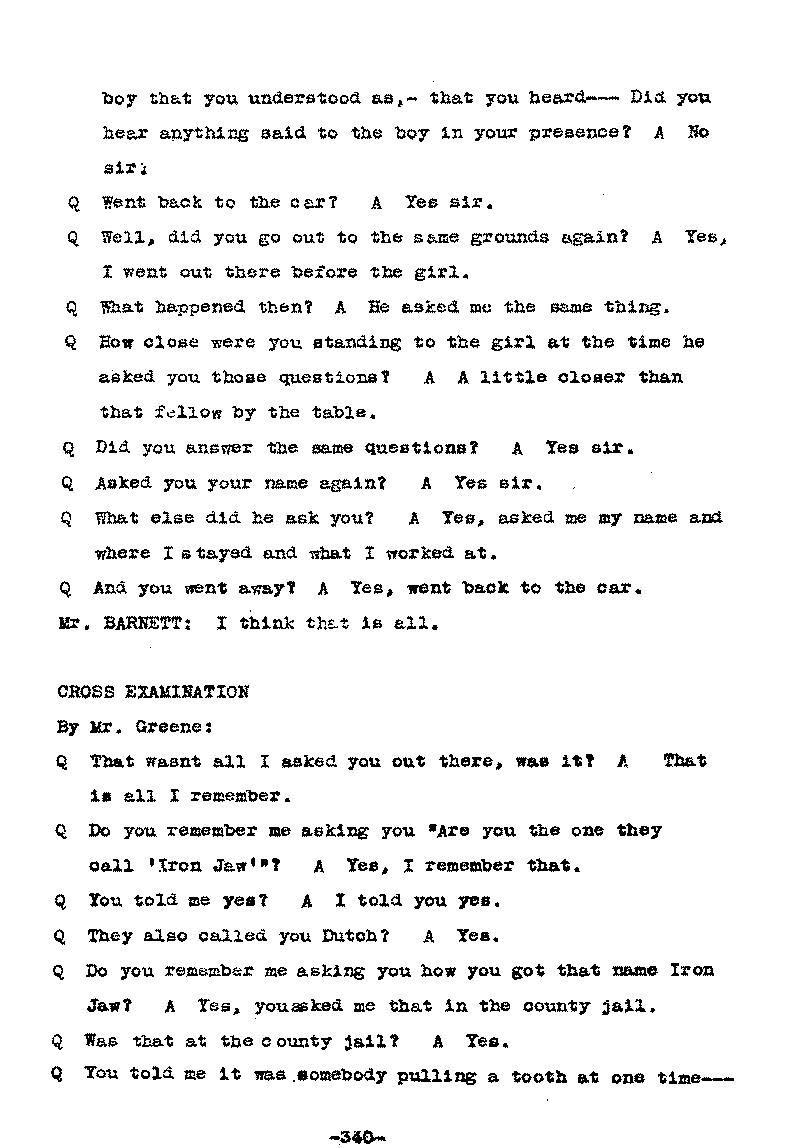



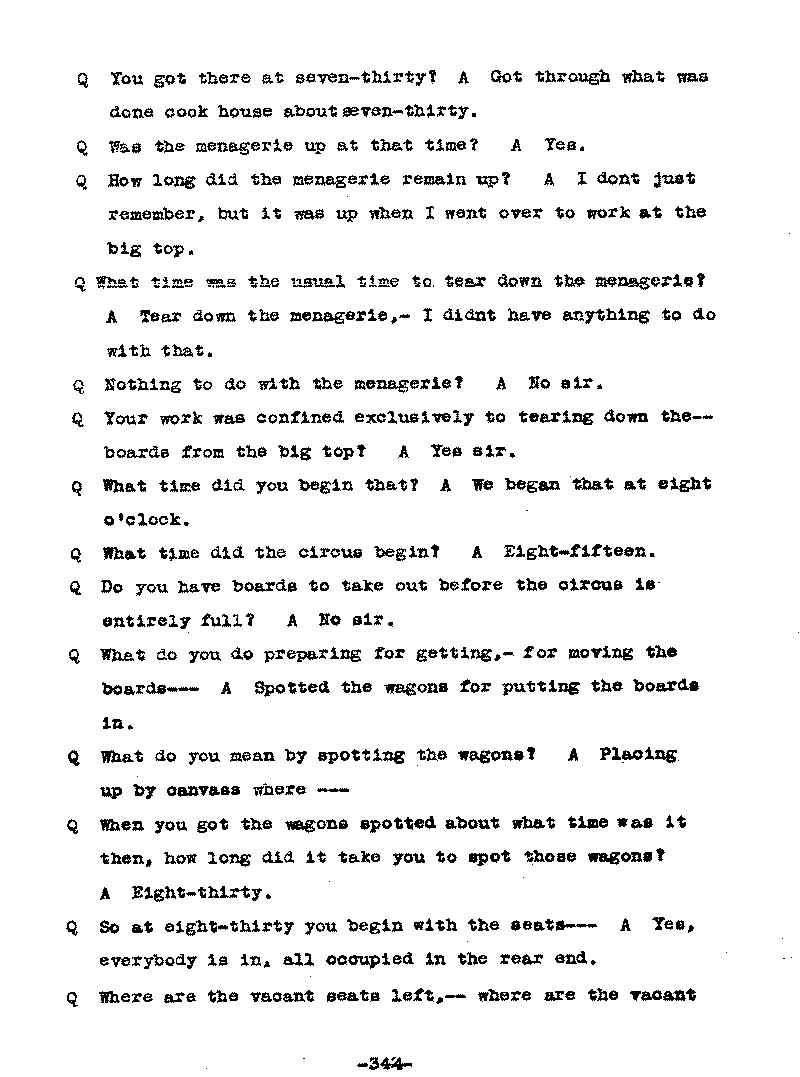
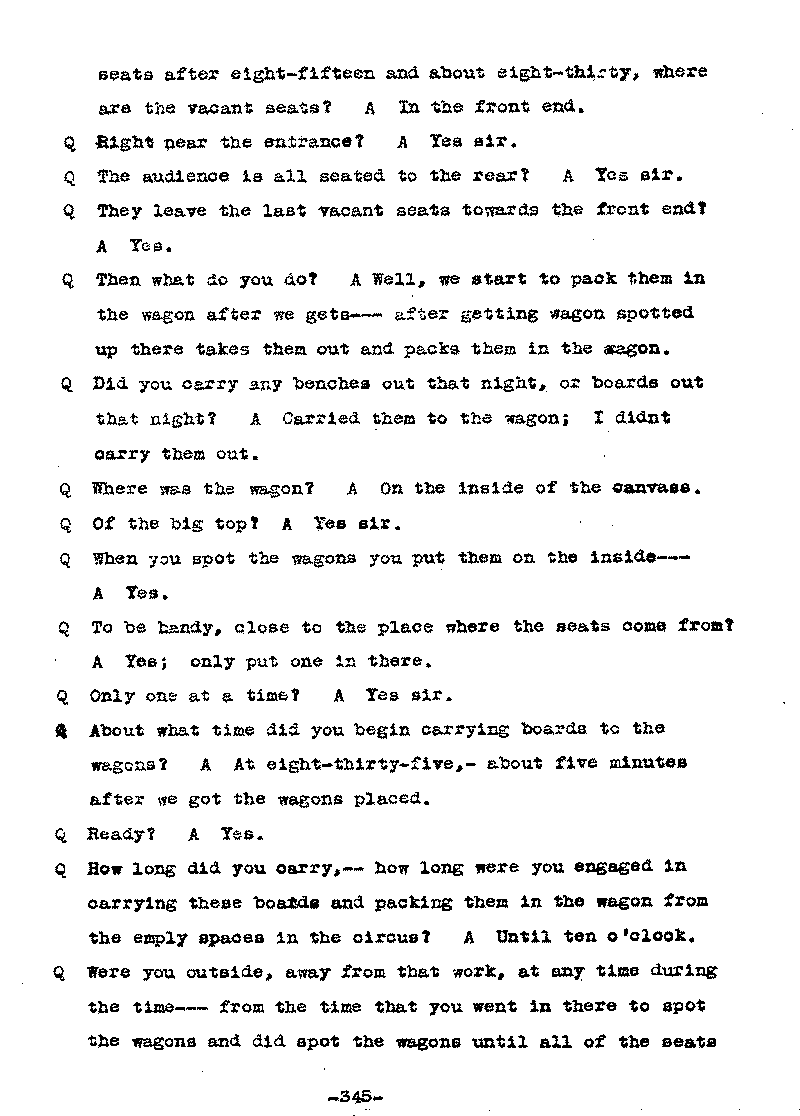
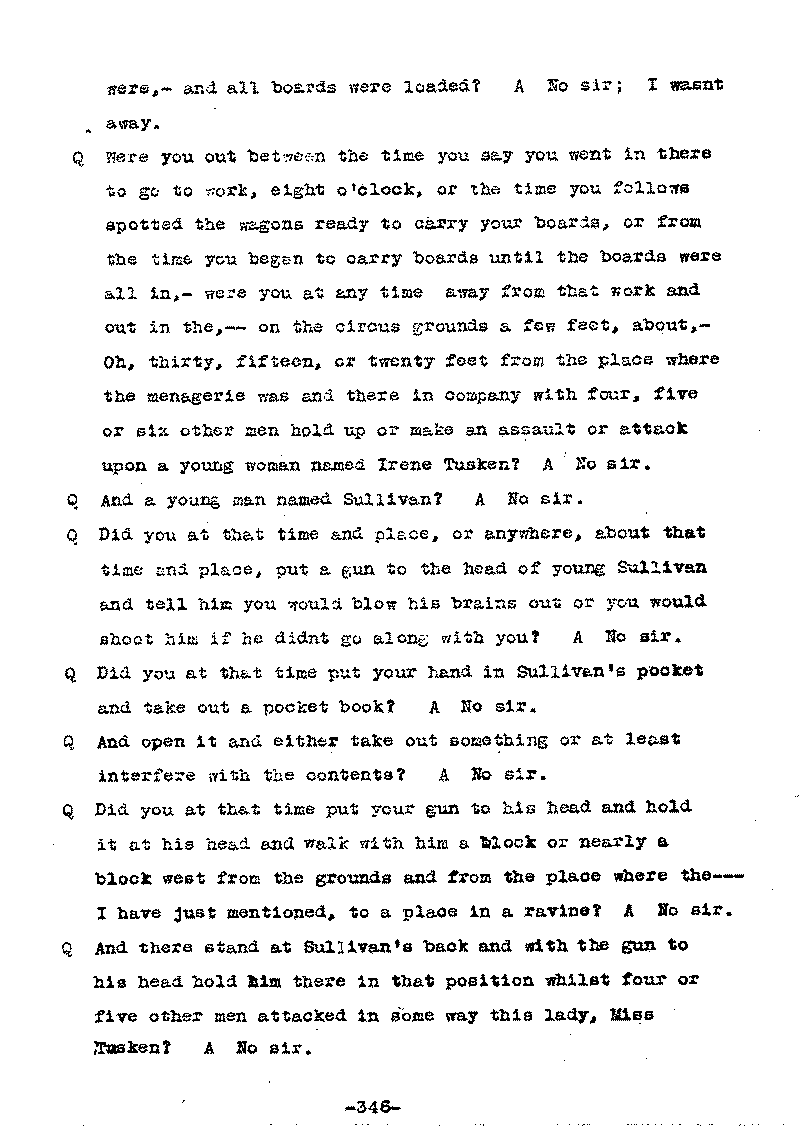
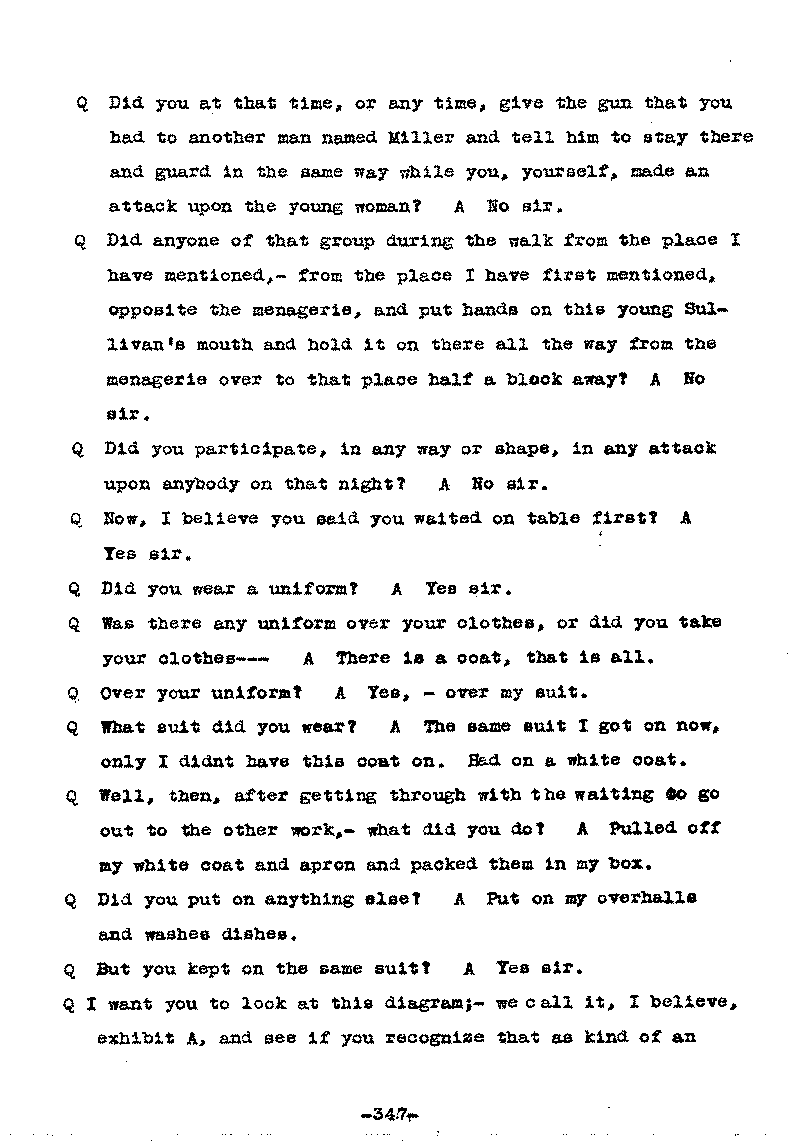
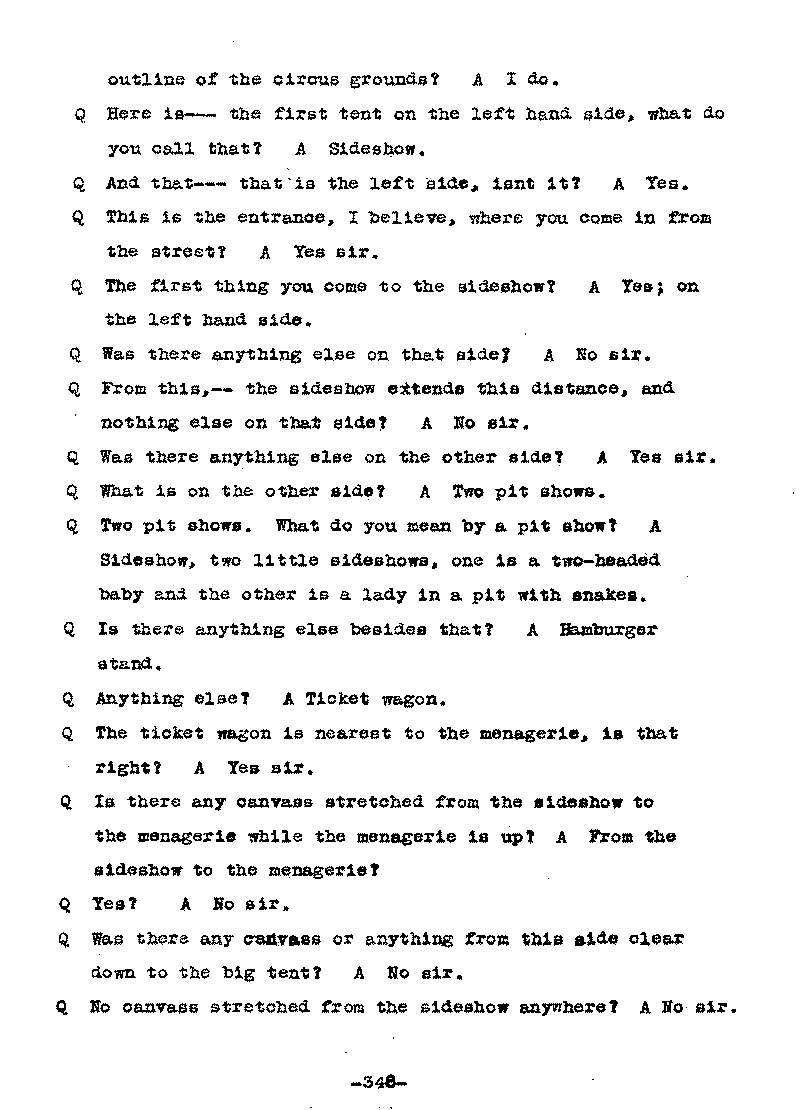


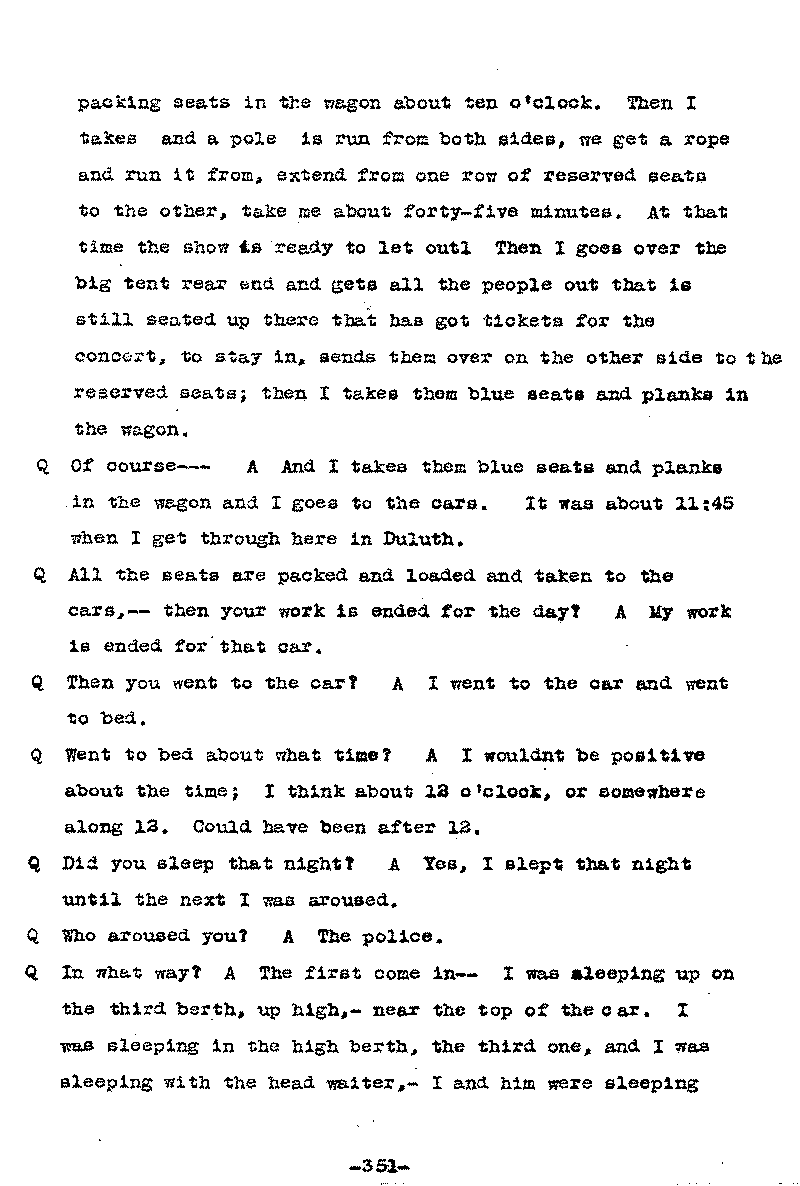

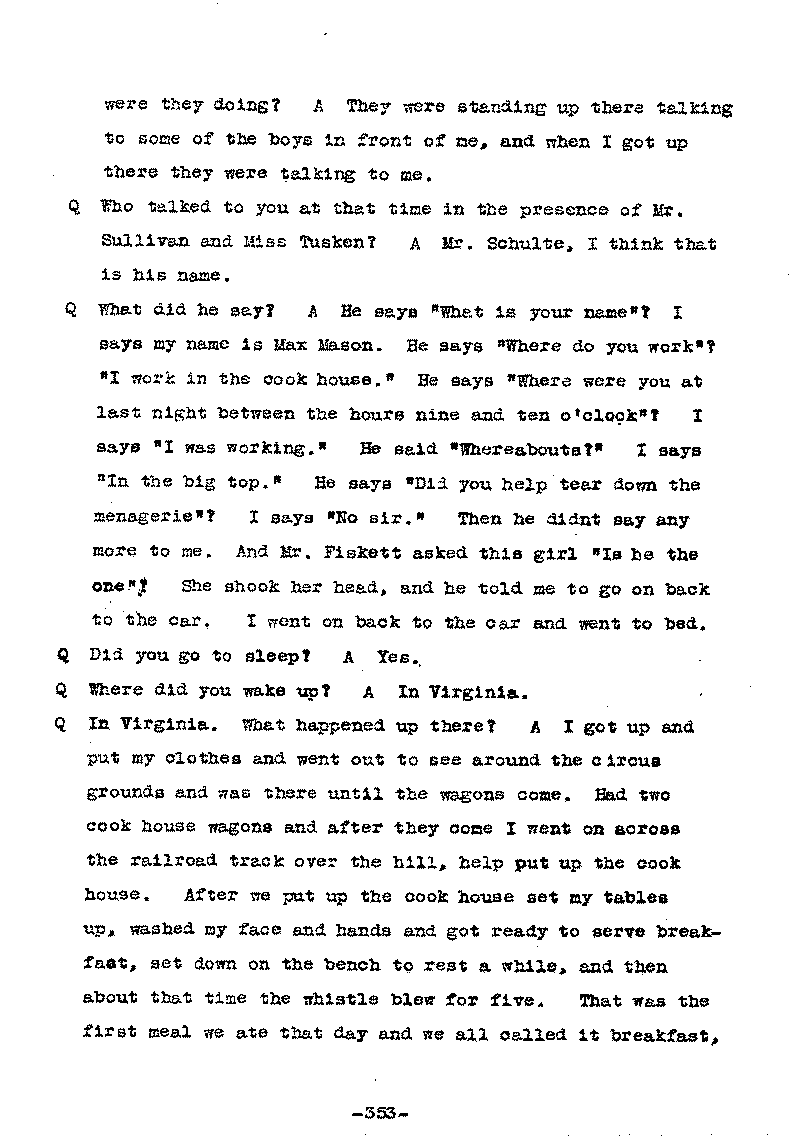
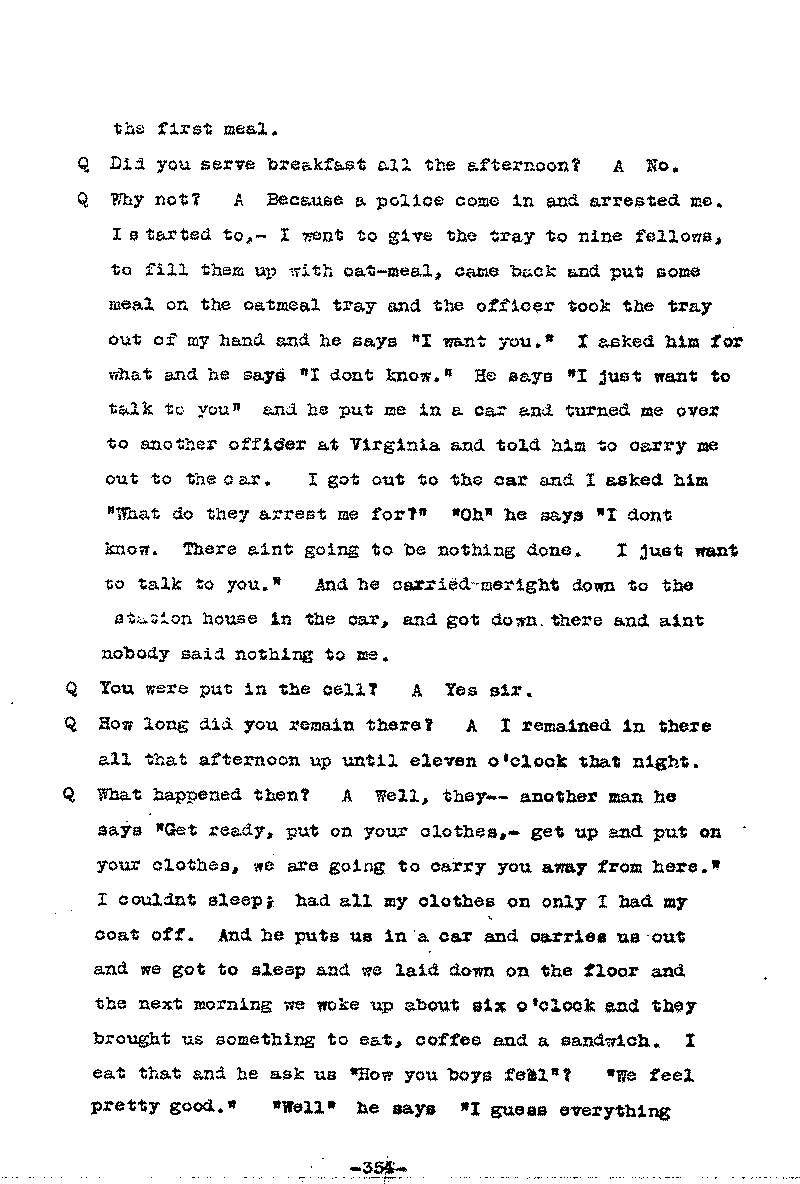
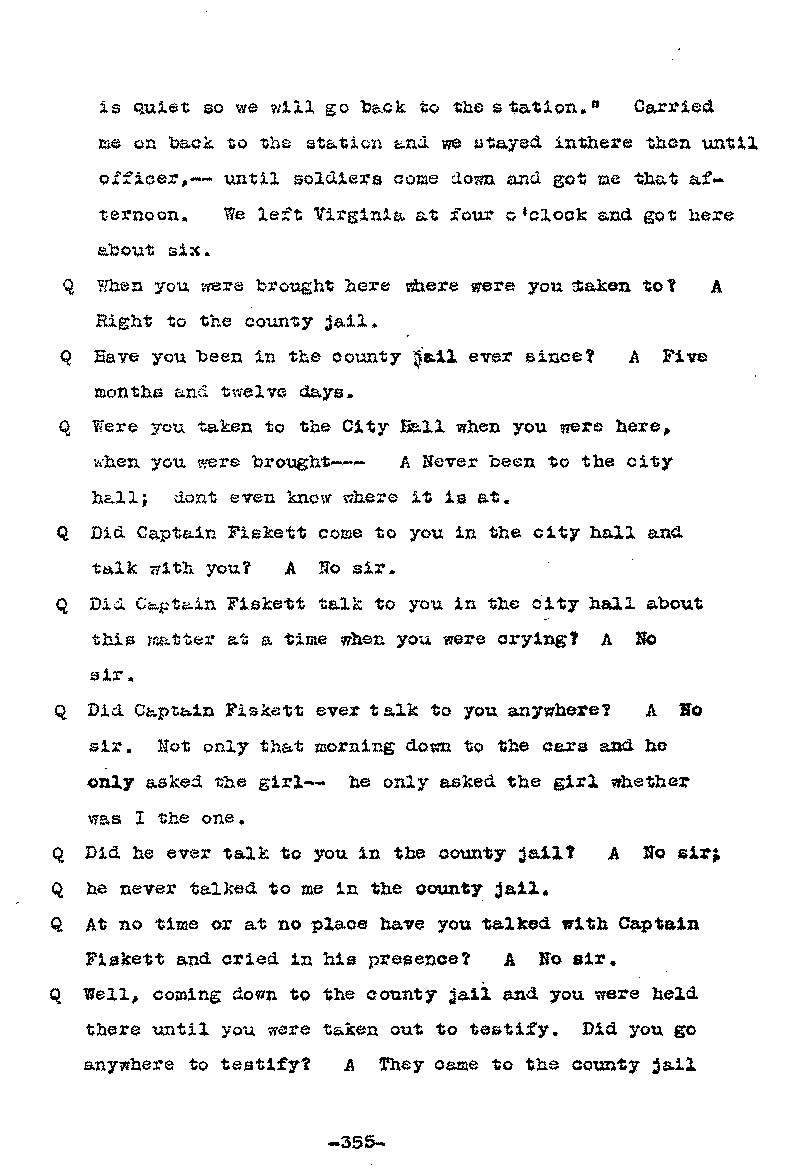



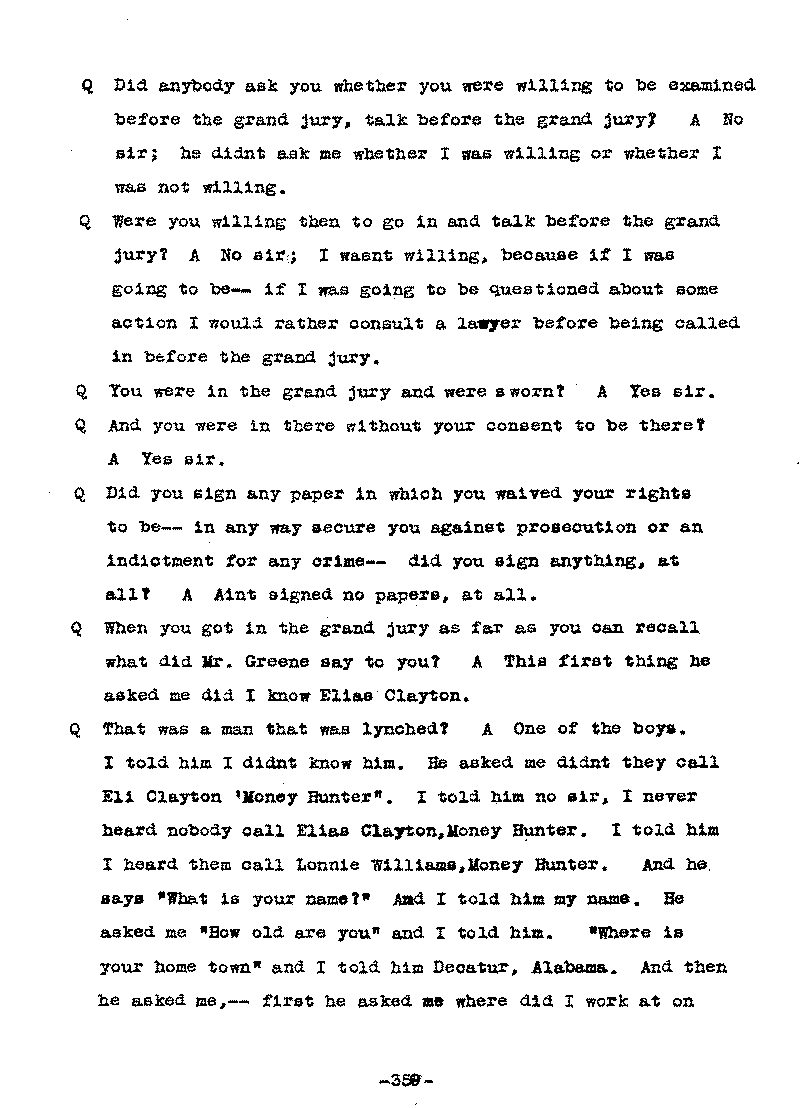

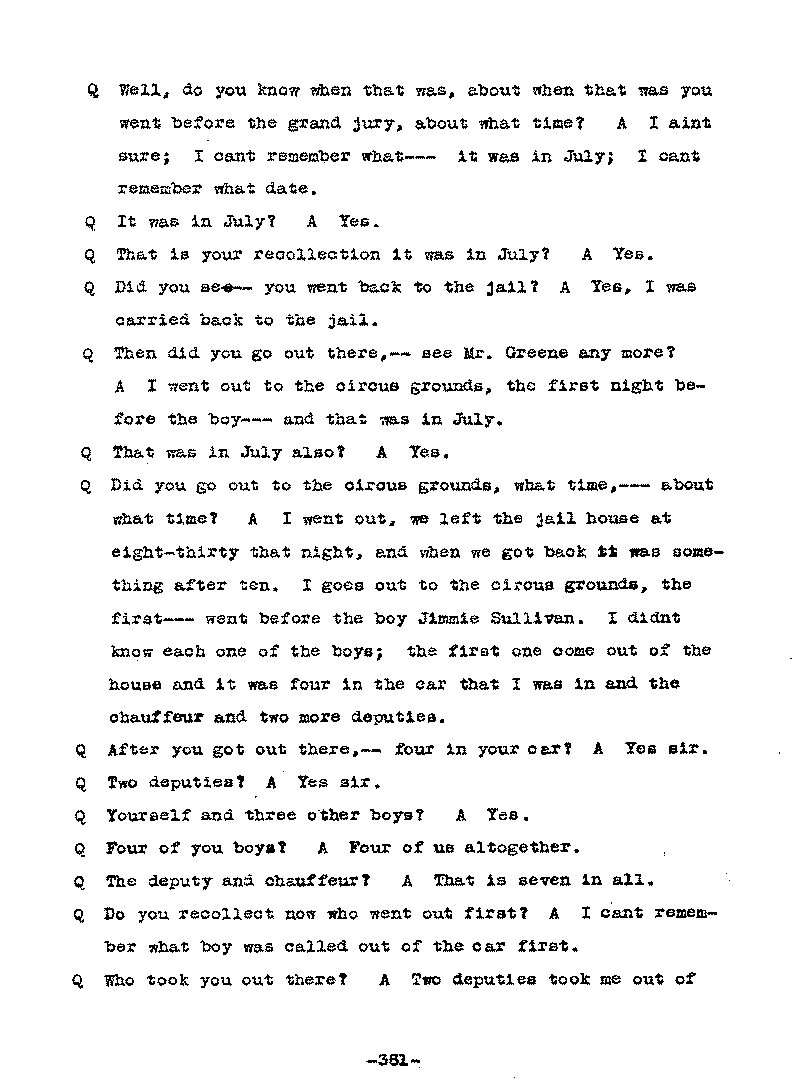

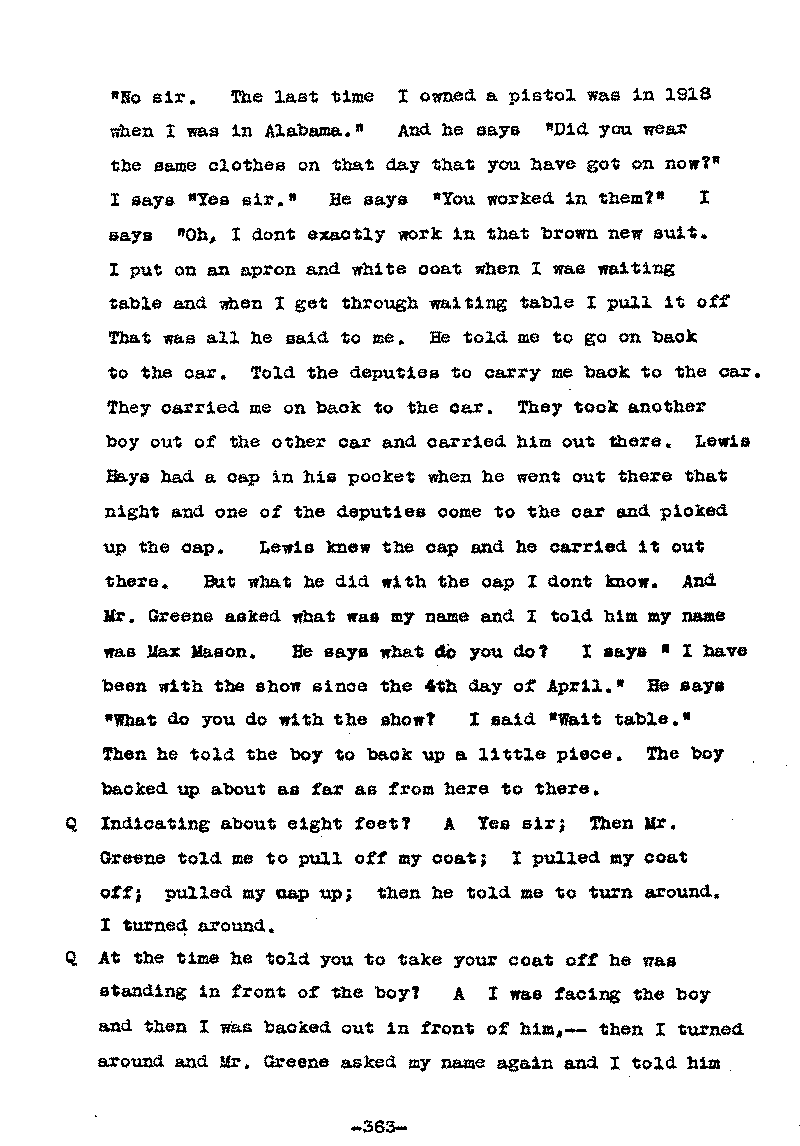


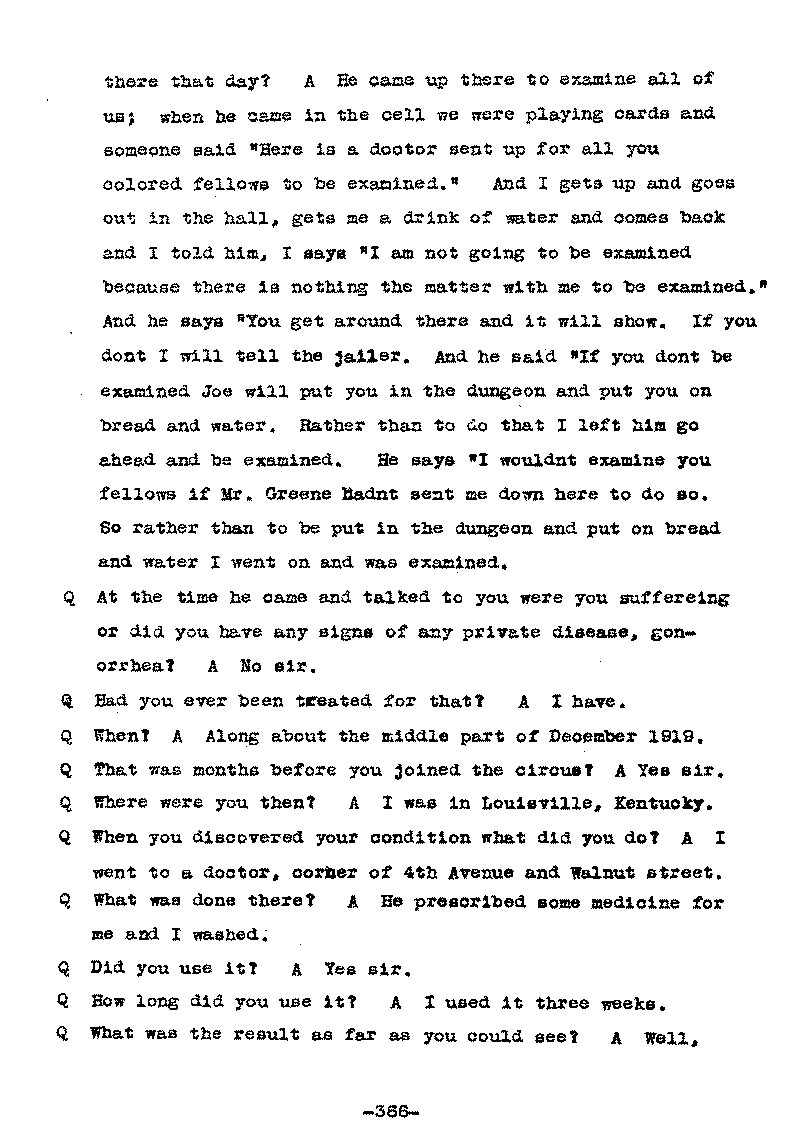

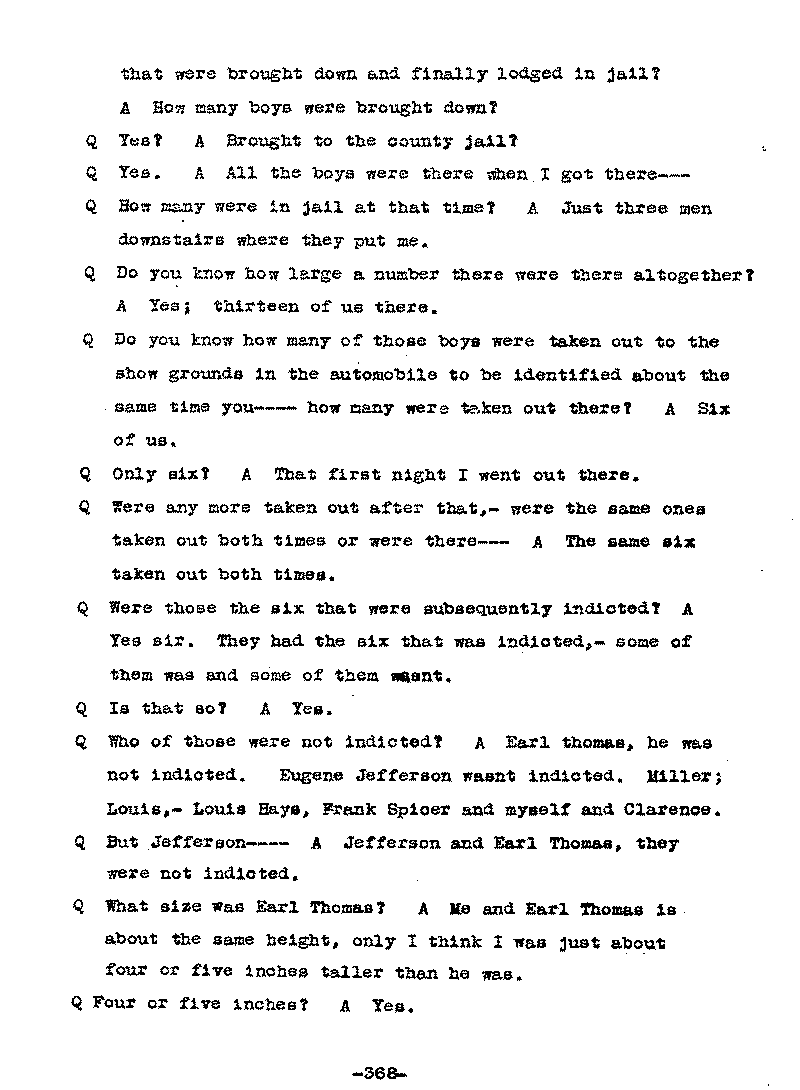

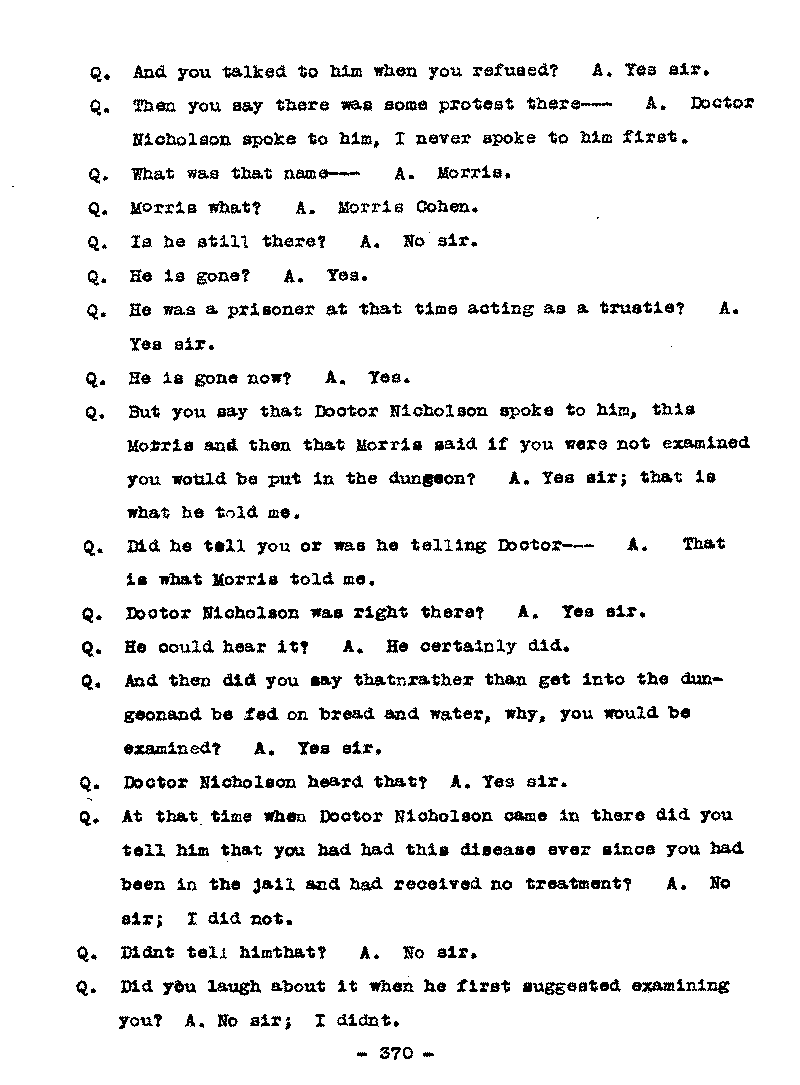
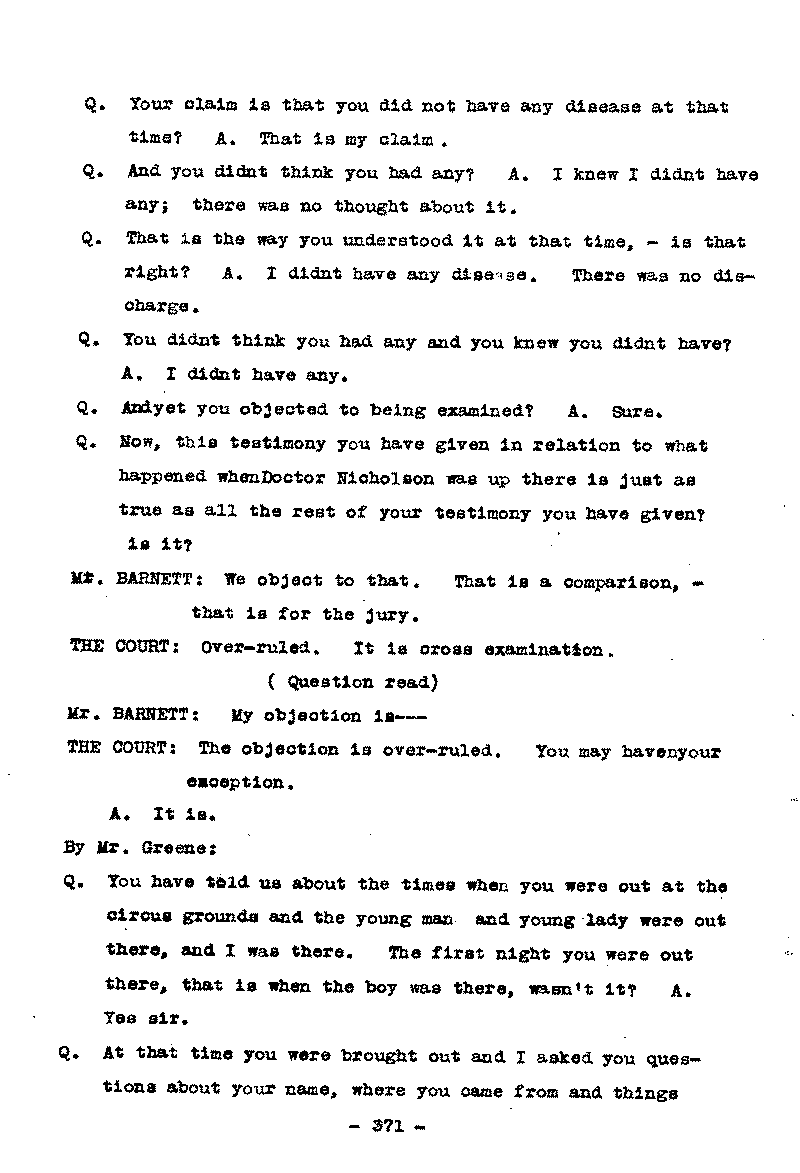

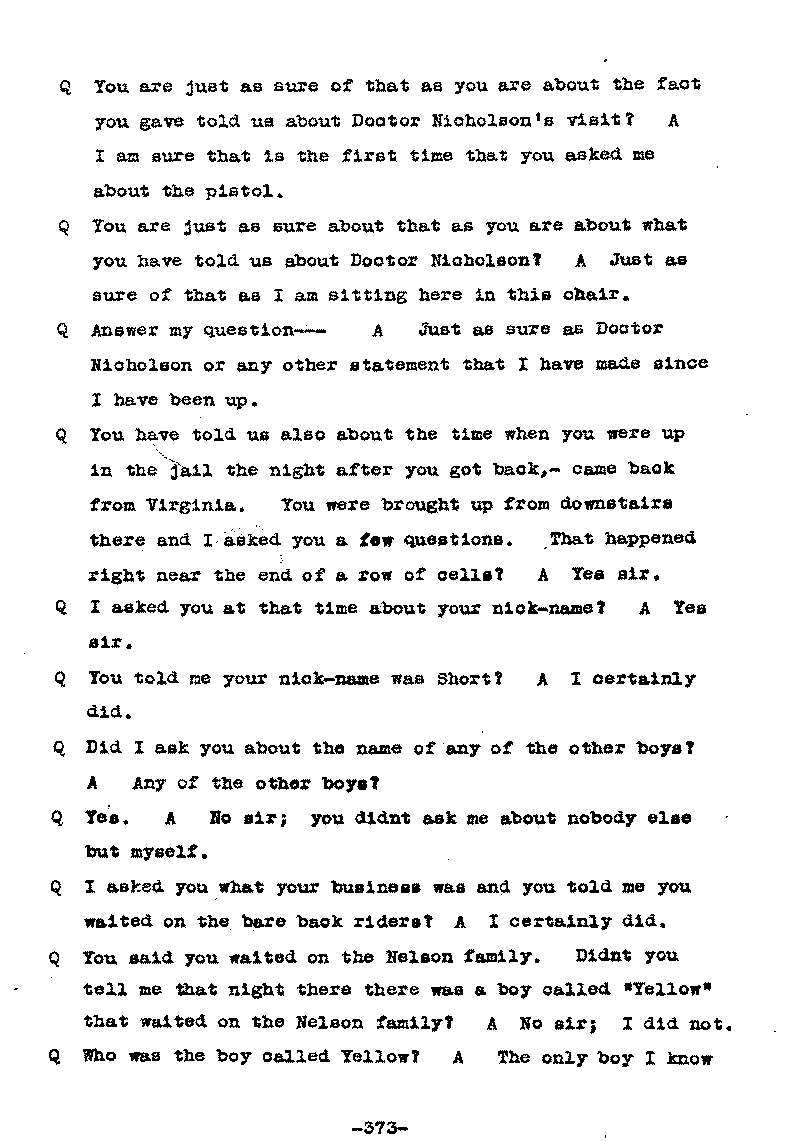
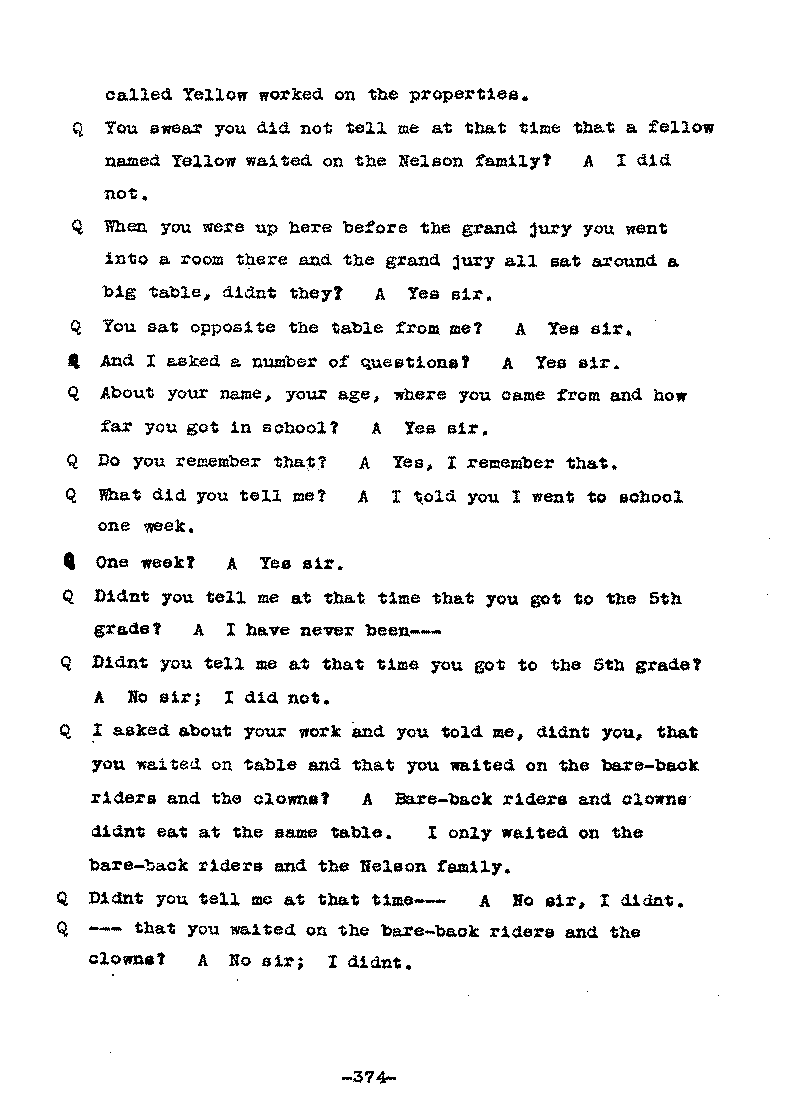

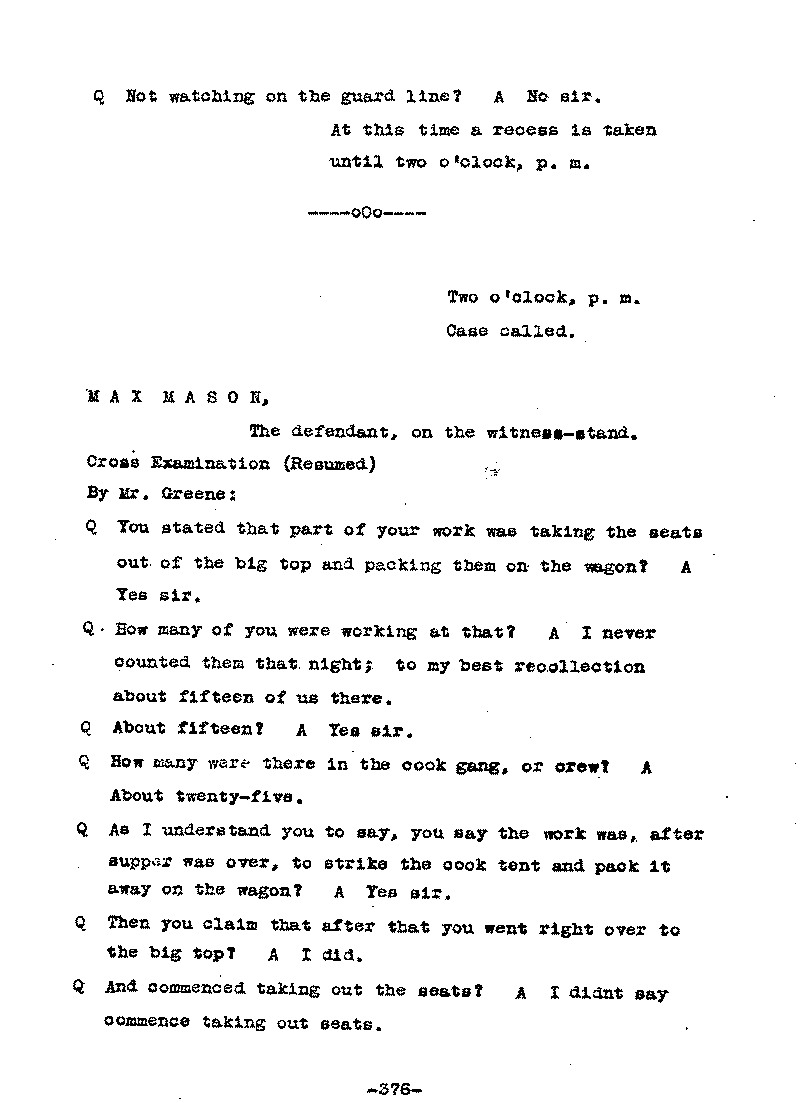
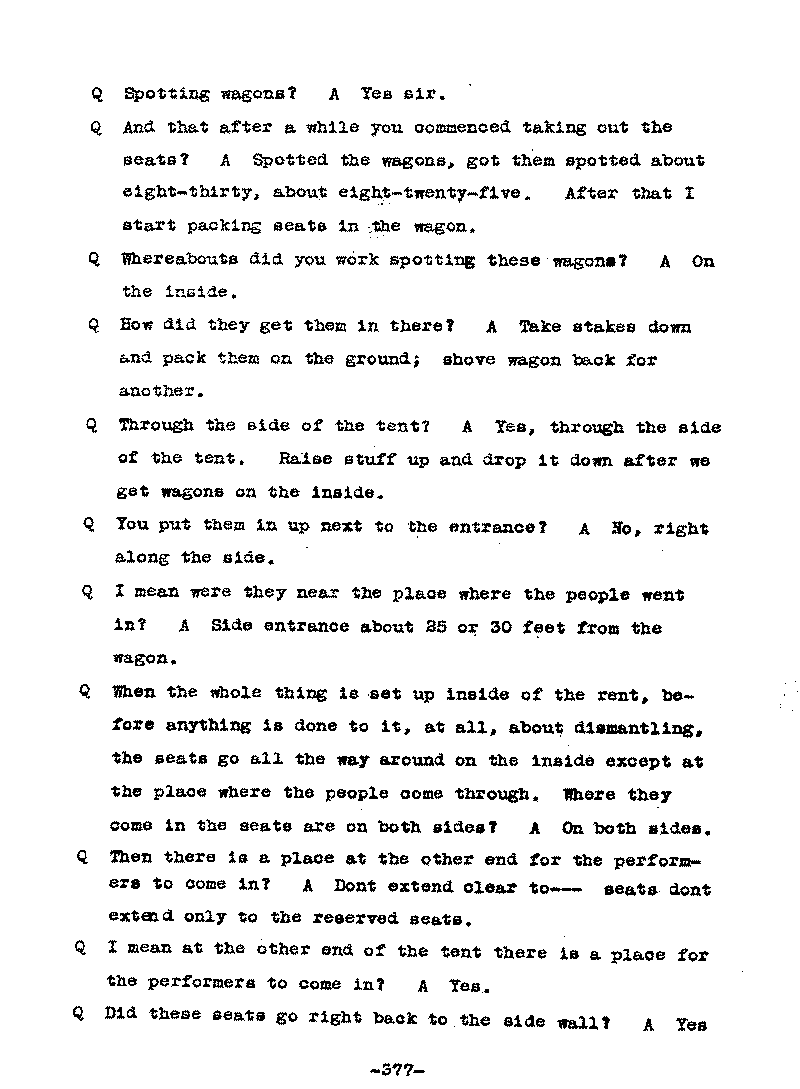
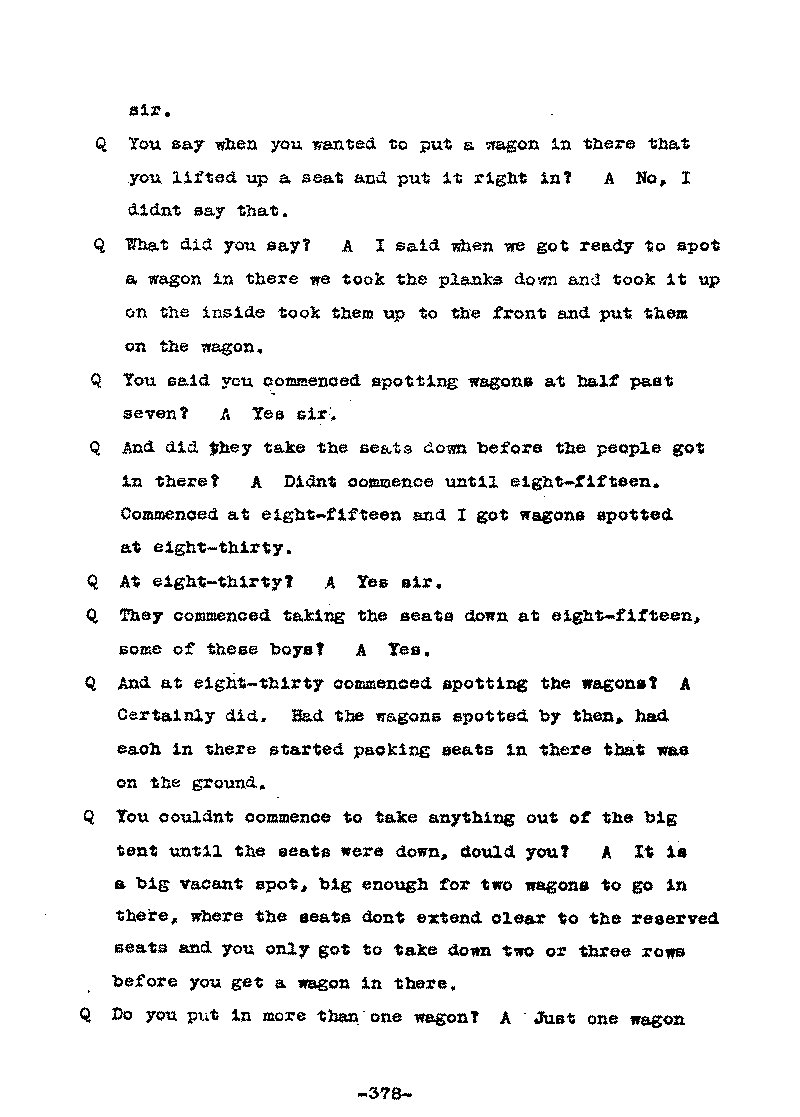
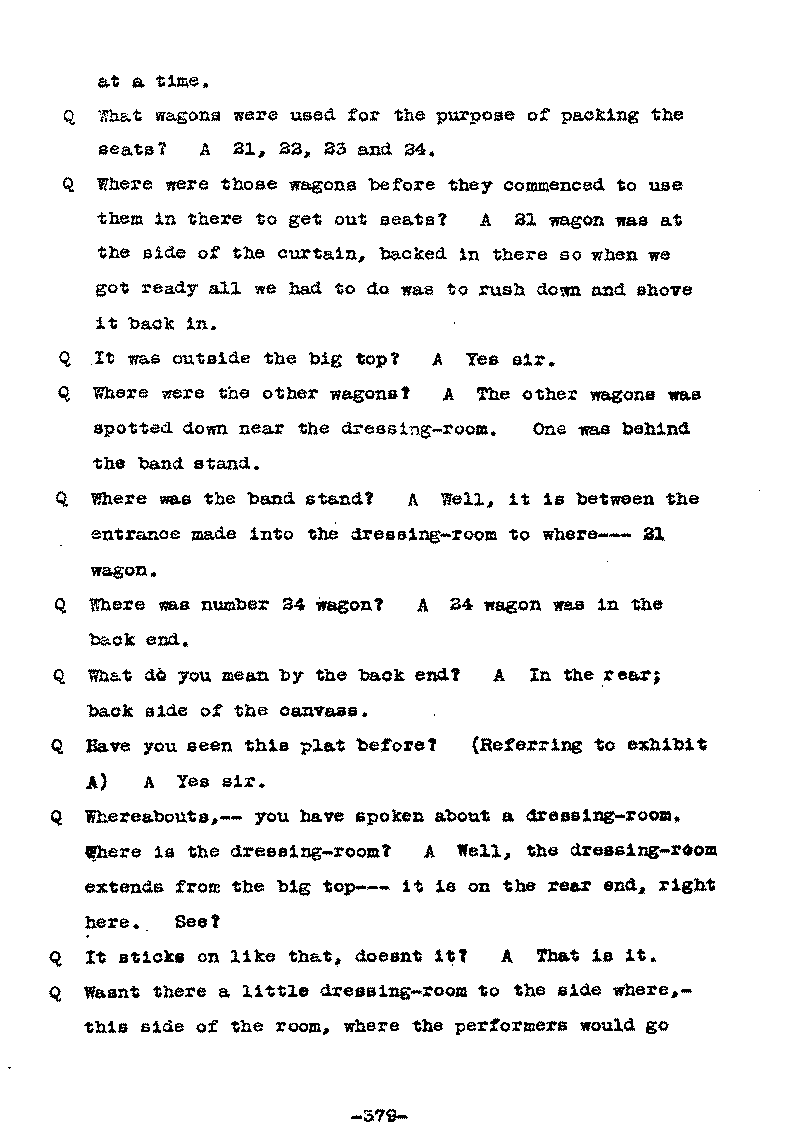
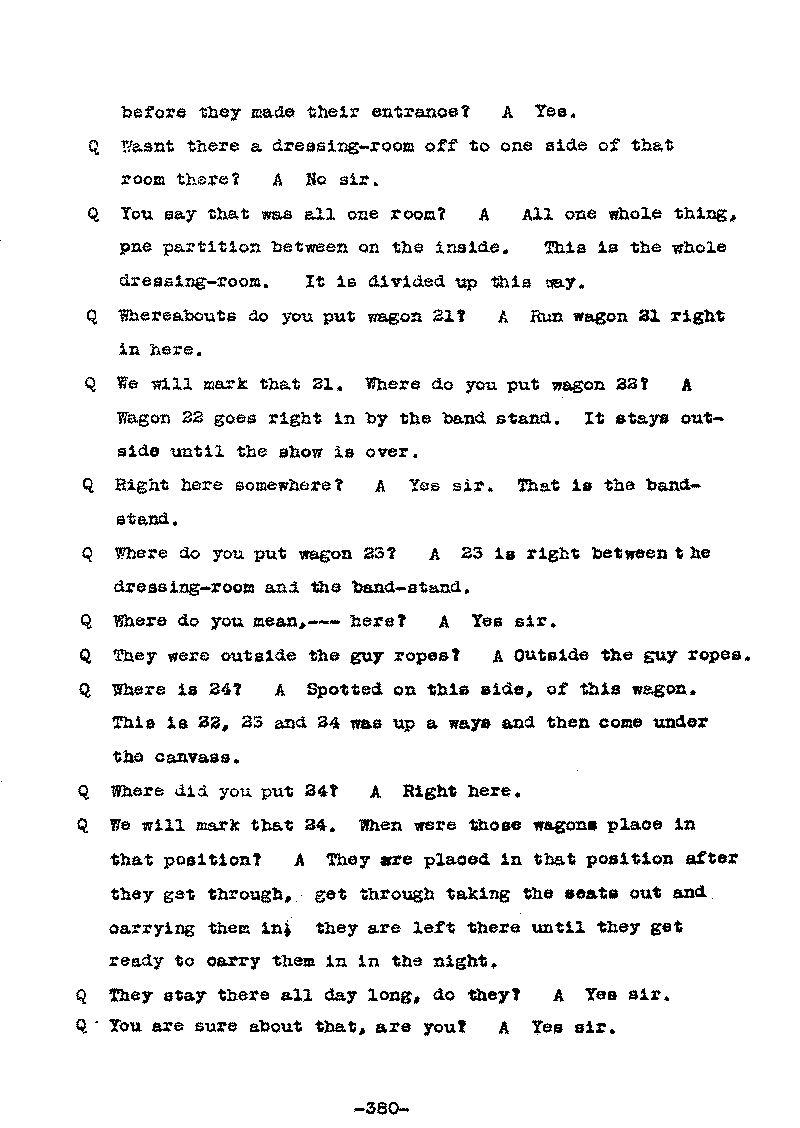
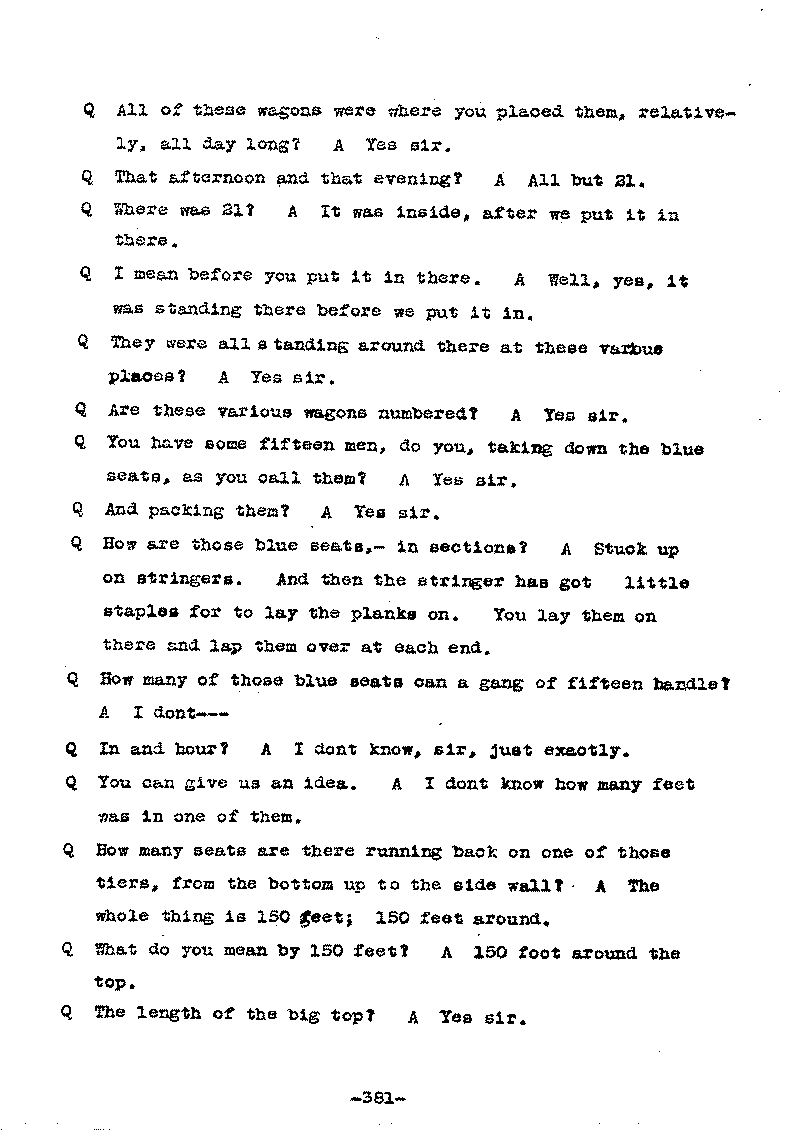





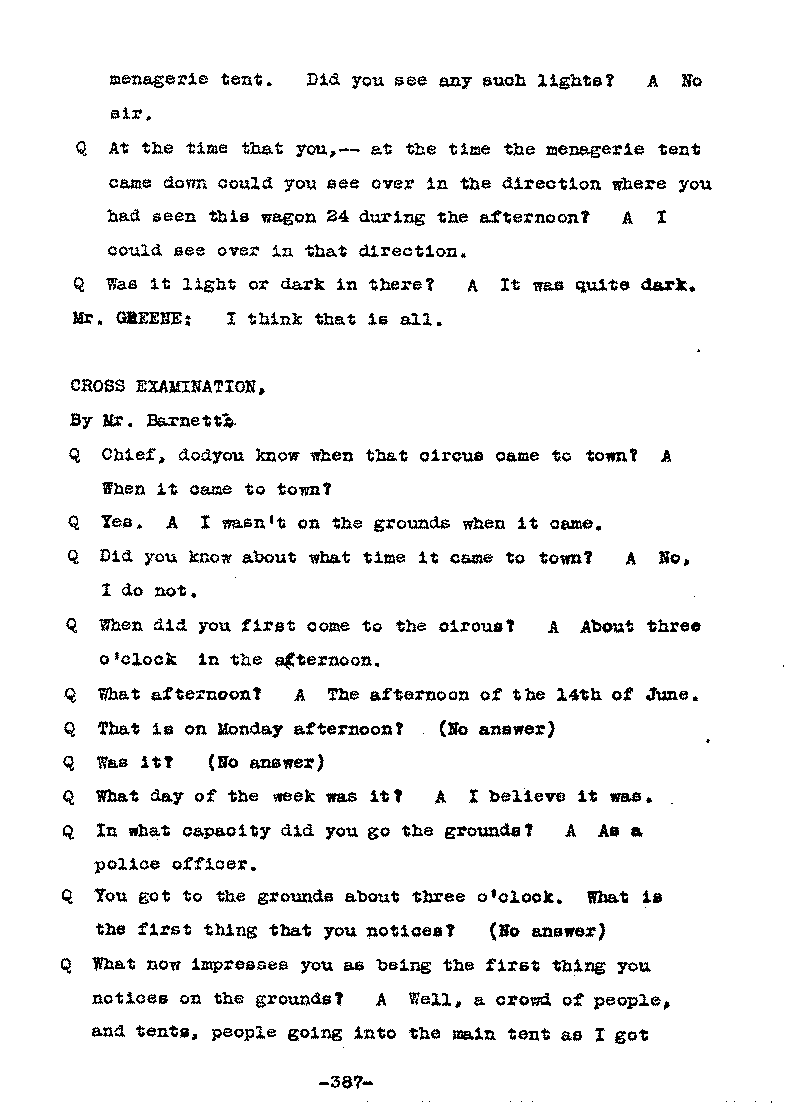
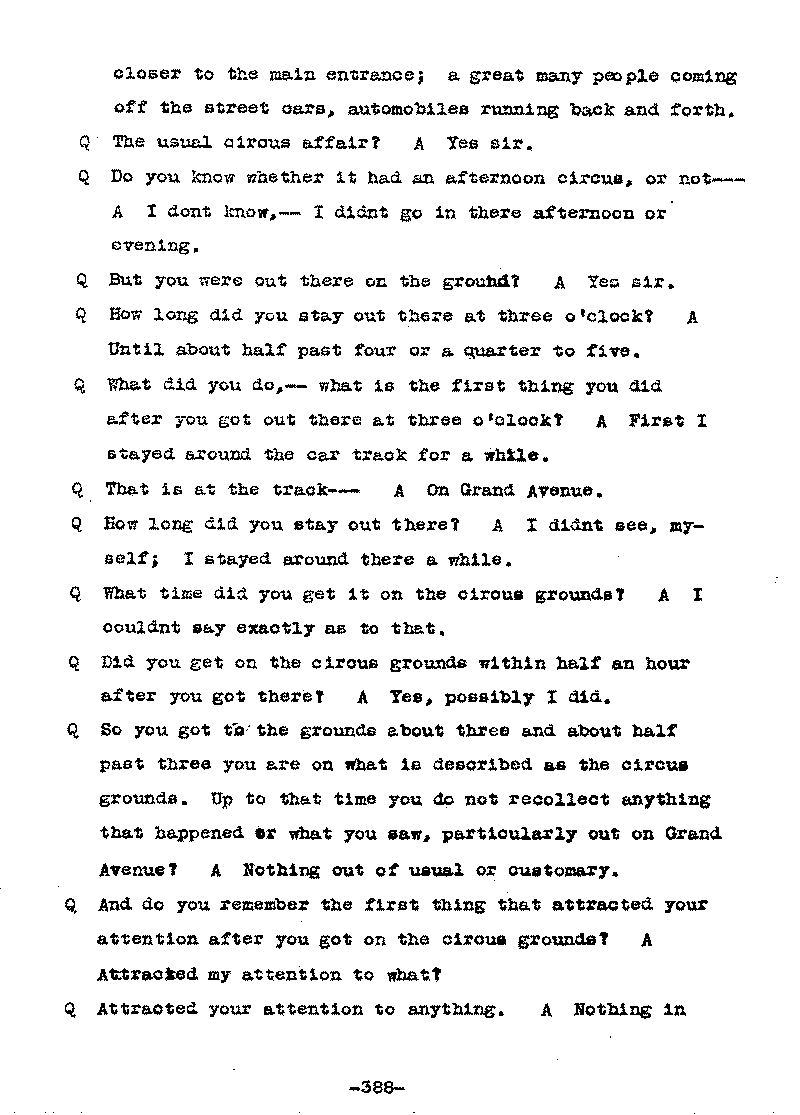

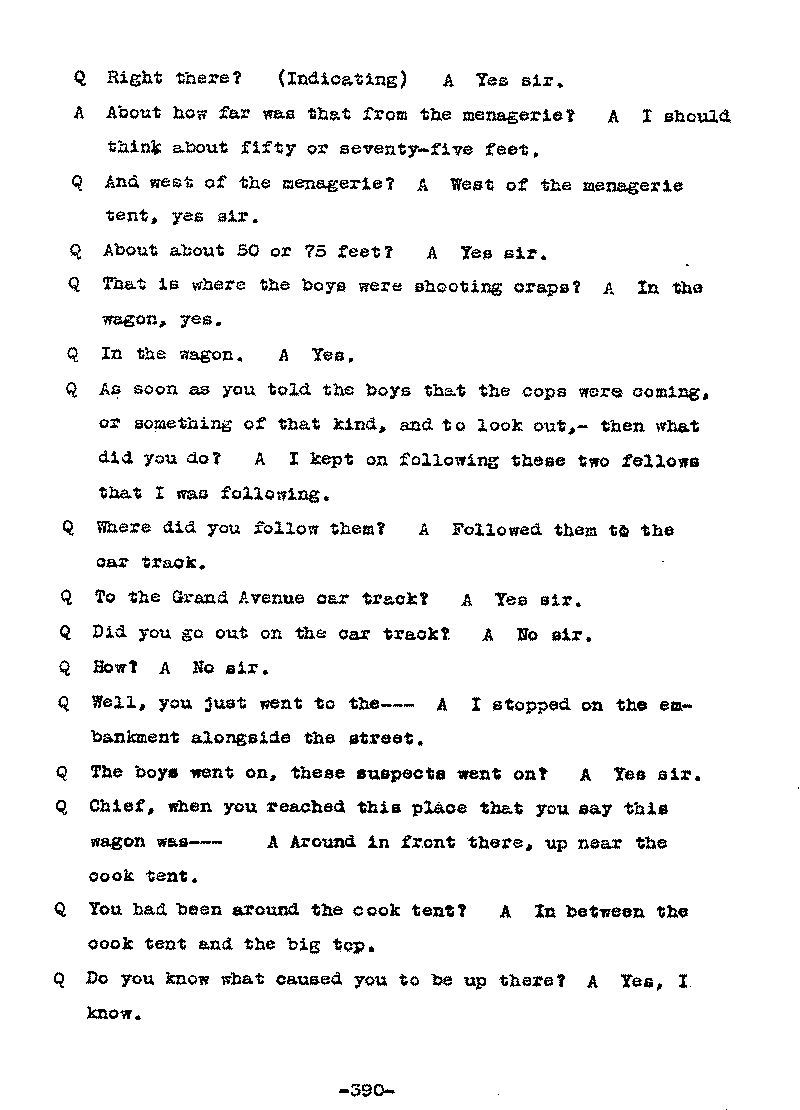







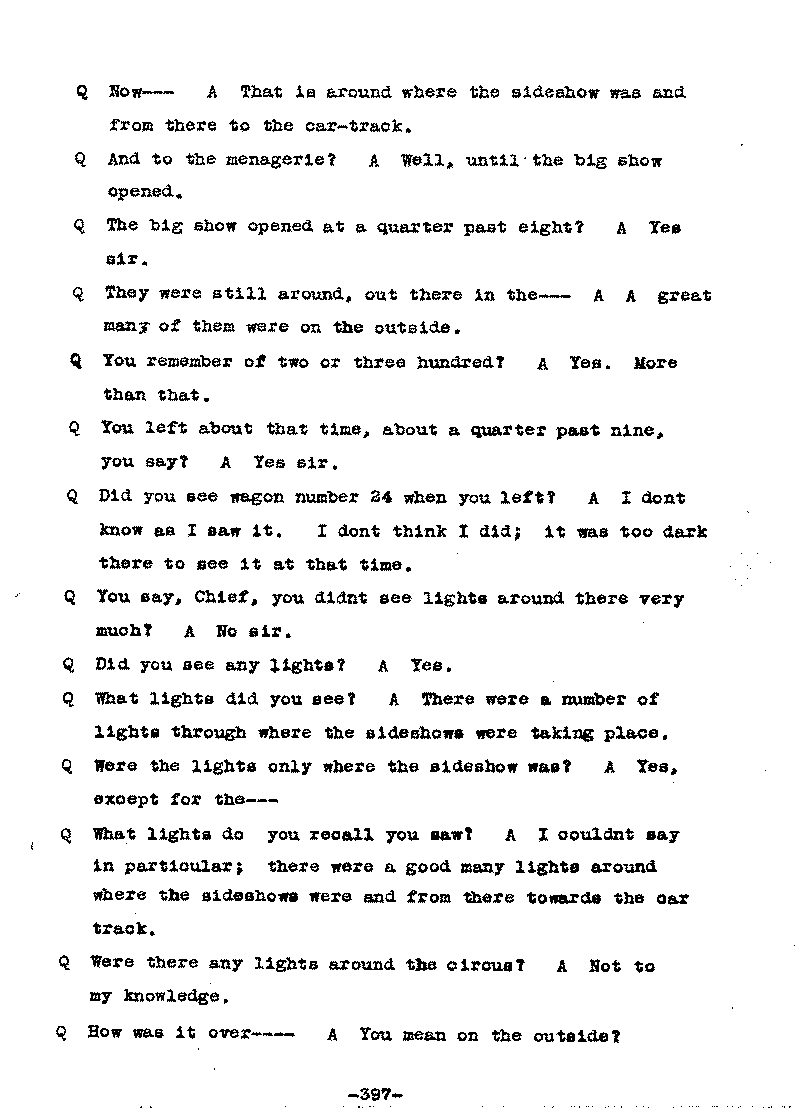



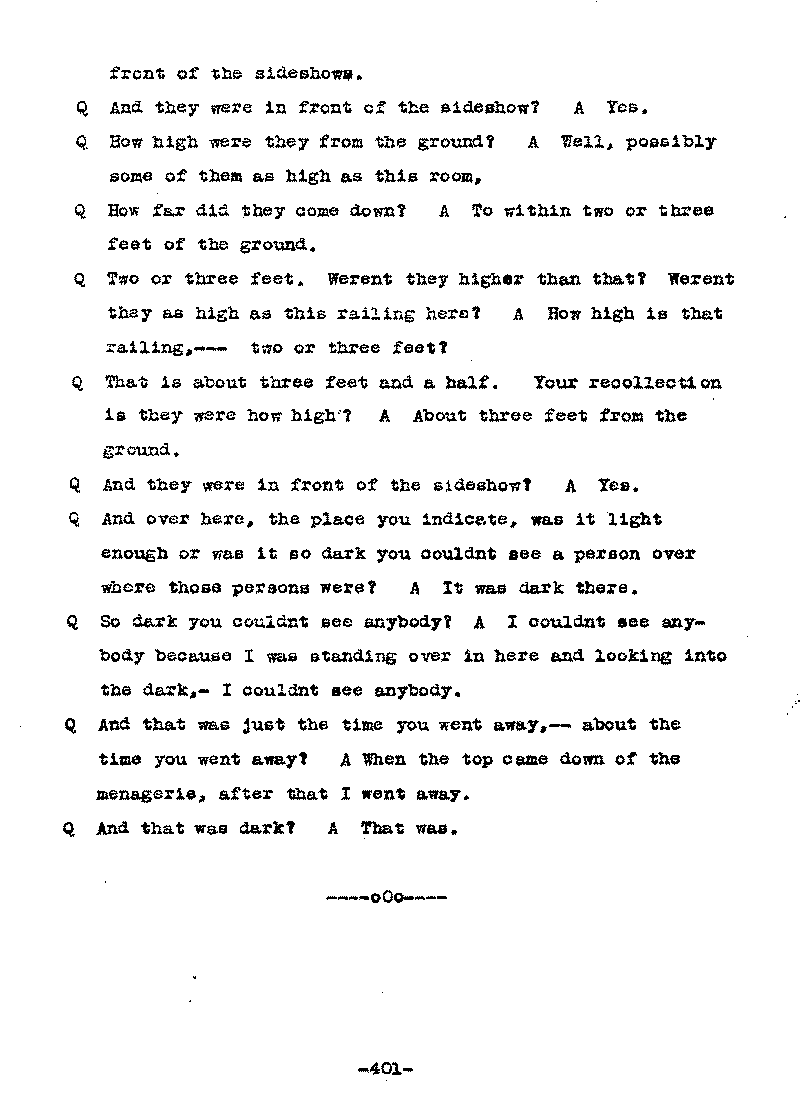
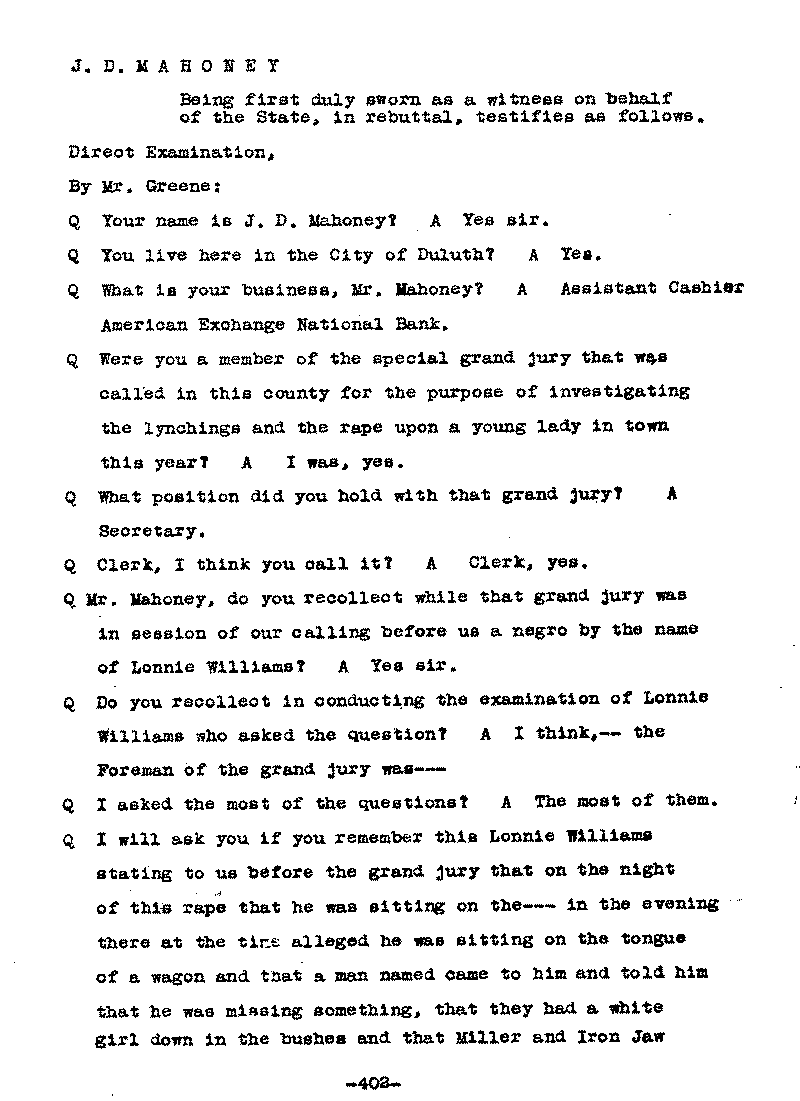
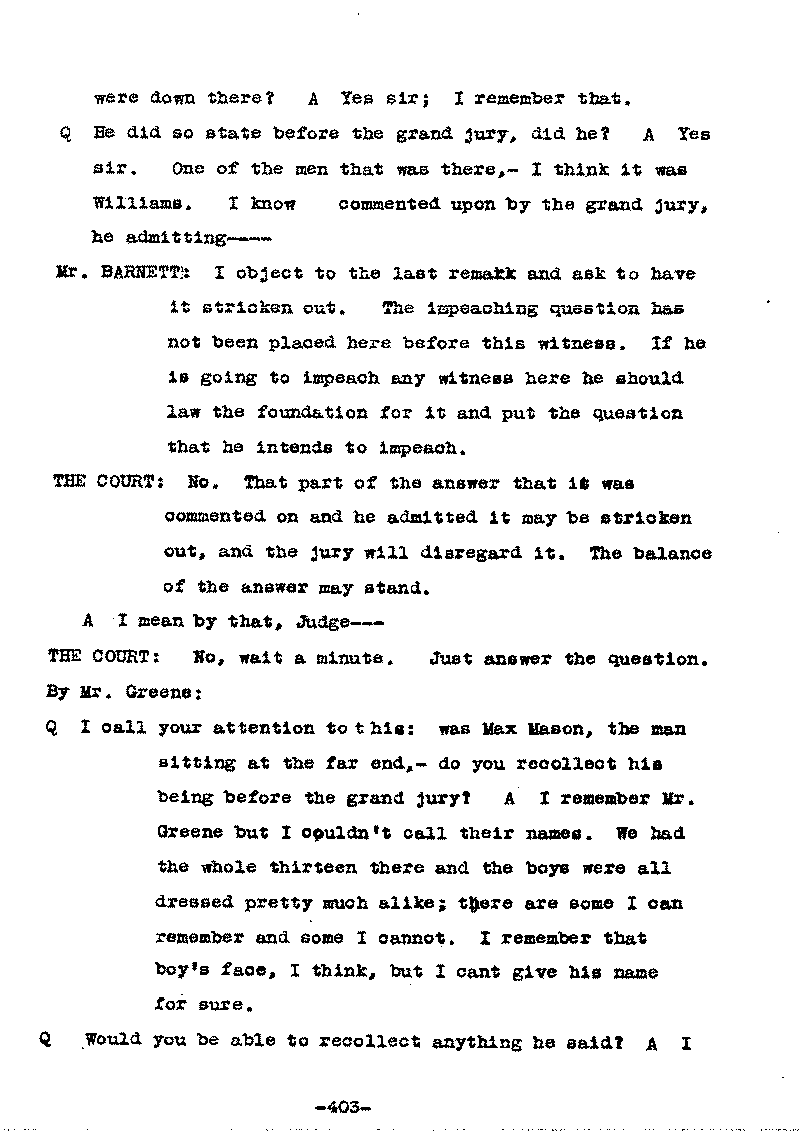
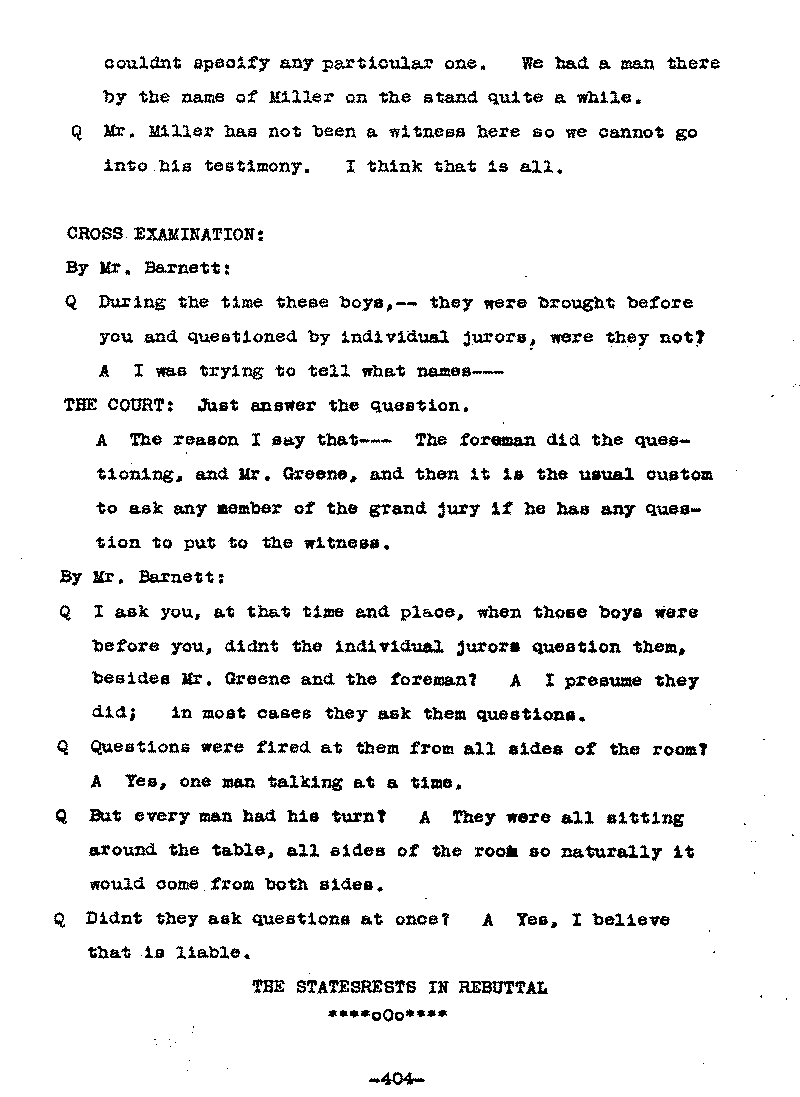
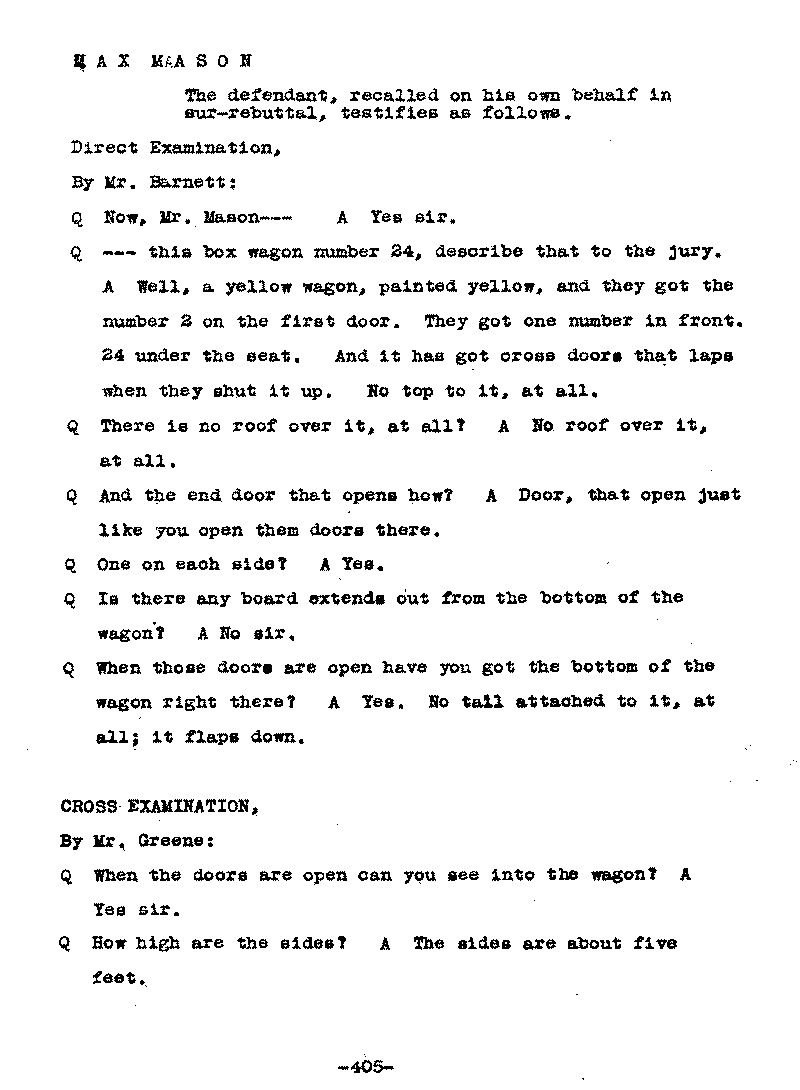

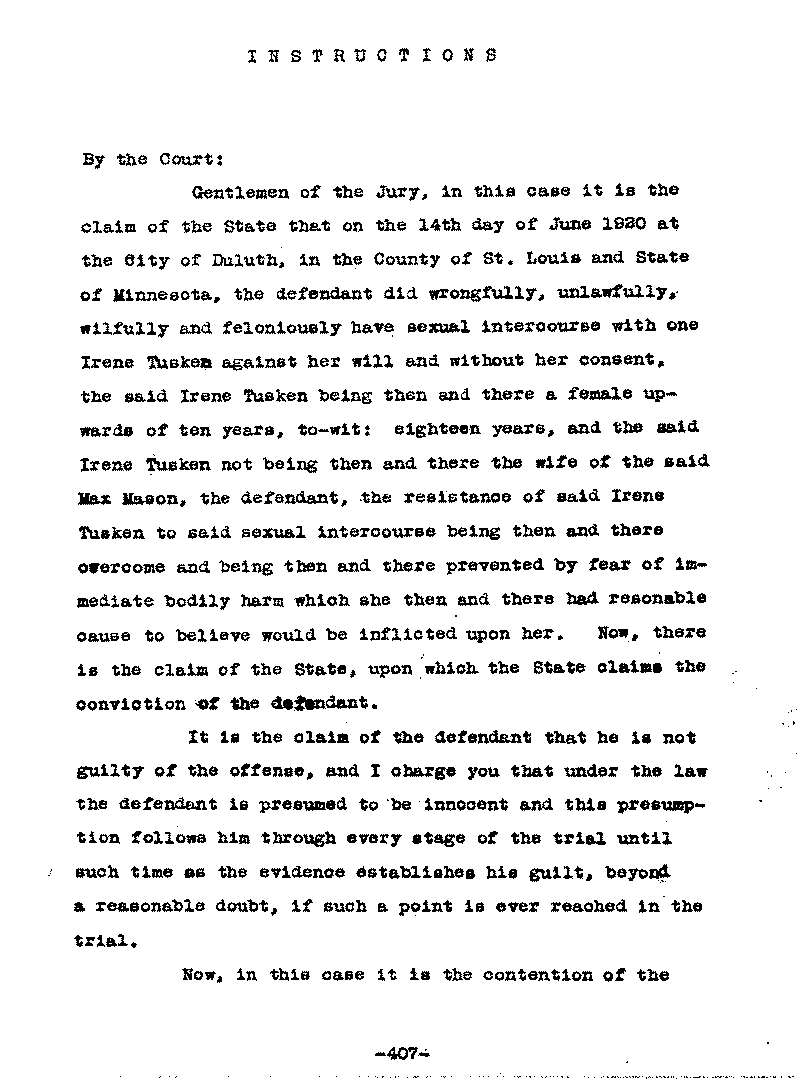

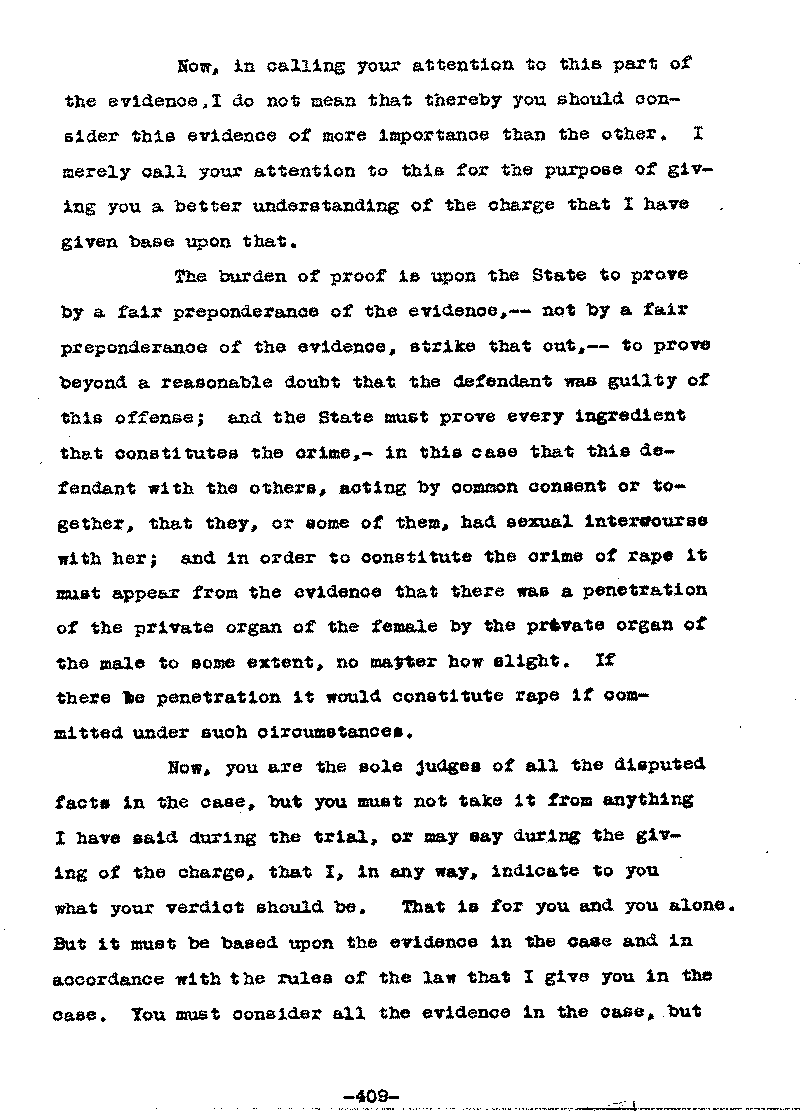

Image text
JUDGES JUDGES
HON.
J. D. Ensign HON. H. A. Dancer
HON. W. A.
Cant HON. Bert Fesler
HON. Martine Hughes HON.
Edward Freeman
COUNTY OF ST.
LOUIS
OFFICE OF
CLERK
OF DISTRICT COURT
Duluth, Minn., August 30th 192 1.
J. P.
JOHNSON
CLERK
Hon. J. J. Sullivan,
Warden,
Minnesota State Prison,
Stillwater, Minnesota.
Dear
Sir:
In Re. State of Minnesota VS Max Mason.
Referring to my letter of
August 6th handing you Commitment in the above entitled matter, I am
enclosing you here with certified copy of Synopsis of the testimony given at the
trial of this case as ordered by Hon. L. S. Nelson.
Kindly acknowledge
receipt, and oblige.
Yours very truly,
J. P. JOHNSON,
Clerk.
By J. A.
Cummings
Deputy
JAC/J
Encl.
CLERK’S CERTIFICATE
State of Minnesota, } ss. DISTRICT COURT
COUNTY OF
ST. LOUIS } ELEVENTH JUDICIAL DISTRICT
I. J. P. Johnson, Clerk
of the District Court, St. Louis County, and State of Minnesota do hereby
certify that I have compared the attached papers writing with the
original Synopsis of Testimony in the case of State of Minnesota vs. Max
Mason
in the action therein entitled, now remaining of record in my
office, and that the same is a true and correct copy and transcript of said
original Papers and the whole thereof.
WITNESS, My hand and seal of the said Court, at Duluth, this Thirtieth day of August A. D. 19 21
J. P. JOHNSON, Clerk
By J. A. Cummings Deputy.
STATE OF MINNESOTA
COUNTY OF ST. LOUIS
IN DISTRICT COURT
ELEVENTH JUDICIAL DISTRICT
_________________________________
Plaintiff.
AGAINST
Defendant.
_________________________________
Clerk’s
Certificate
_________________________________
I N D E X
State’s Witnesses:
Coventry, W. A. Direct Examination ---------------223
“ “ “ Cross “ ---------------225
Fiskett, A. G. Direct Examination ---------------194
“ “ “ Cross “ ---------------199
Graham, David Direct Examination ---------------219
“ “ Cross “ ---------------220
Murphy, John Direct Examination ---------------182
“ “ Cross “ ---------------188
Mahoney, J. D. Direct Examination ---------------402
“ “ “ Cross “ ---------------404
Nicholson, M.A. Direct Examination ---------------226
“ “ “ Cross “ ---------------234
Sullivan, Jas. Direct Examination --------------- 75
“ “ Cross “ --------------- 97
Sullivan, P. B. Direct Examination ---------------163
“ “ “ No Cross “
Schulte, F.A. Direct Examination ---------------383
“ “ “ Cross “ ---------------387
Tusken, Irene Direct Examination --------------- 17
“ “ Cross “ --------------- 41
“ “ Recalled “ ---------------239
Tusken, Amanda Direct Examination ---------------170
“ “ Cross “ ---------------174
Tusken, W. E. Direct Examination, --------------175
No Cross-examination.
_________
Defendant’s Witnesses:
Graves, Nate Direct Examination --------------290
“ “ Cross “ --------------299
Graham, David Direct Examination --------------327
“ “ Cross “ --------------330
Hayes, Louis Direct Examination --------------242
“ “ Cross “ --------------274
MASON, Max Direct Examination --------------342
“ “ Cross “ --------------369
“ “ Direct “ (Rebuttal-sur) 405
“ “ Cross “ “ 405
Spicer, Frank Direct Examination --------------332
“ “ Cross “ --------------340
Williams, Lonnie Direct Examination --------------311
“ “ Cross “ --------------318
State Rests -----------------------------------------242
Defendant Rests -----------------------------------------406
State Rests in Rebuttal ---------------------------------------
STATE OF MINNESOTA IN DISTRICT COURT
County of St. Louis 11th Judicial District
________________________________________
STATE OF MINNESOTA .......... Plaintiff
vs.
M A X M A S O N ................... Defendant
________________________________________
The above entitled cause came regularly on for trial
at the November, 1920, term of the District Court of the
Eleventh Judicial District of the State of Minnesota, held
at the Court House in the City of Duluth, within and for
the County of St. Louis, and state aforesaid, on Monday,
November 22, before,-
HON. L. S. N E L S O N, Judge, and a jury.
A p p e a r a n c e s :
For the State, Warren E.Greene, County Attorney.
For the Defendant, F. L. Barnett, R.C.McCollough
and Chas. W. Scrutchin,
The case is called for trial and a jury
impaneled and sworn to try the case.
-1-
THE COURT: You, gentlemen, since you have been sworn to
try this case, should not listen to or overhear
any conversation about the matter, nor should
you discuss it among yourselves until it is
finally submitted to you. I will now excuse
you until two o’clock this afternoon.
----oOo----
Two o’clock, p. m.
Case Called.
Mr. Greene opens the case to the jury on behalf
of the State.
(During the opening statement Mr. Barnett
interrupts Mr. Greene, as follows:
MR. BARNETT: Anything out of the presence of the defend-
ant, Mr. Greene ought not to be permitted to tell
anything that transpired,- the conversation be-
tween the girl and her mother outside of the
presence of the defendant. The father told
the boy and the boy told the father. The mother
asked the girl and the girl is going to tell
the mother. That ought not to be stated.
THE COURT: Counsel will refrain from stating conversations
that would not be competent.
MR. GREENE: I haven’t stated the conversation so far.
THE COURT: I do not think you have infringed so far.
Leave out all conversations.
MR. GREENE: I just stated that the girl spoke to the
mother and the mother then went back and told
the father.
(Mr. Greene finishes his opening statement)
-2-
MR. BARNETT: The different witnesses named here on the
back of the indictment, of course, I presume
they are to be called. I would like to know
whether there are any other names that will be
presented. If there are I would like to have
the names of the witnesses.
MR. GREENE: There may be one or two more.
THE COURT: Can you furnish the names?
MR. GREENE: I presume I can.
MR. BARNETT: Before the case is tried I would like to
have the witnesses excluded,- all those except
the ones that are testifying.
Mr. GREENE: That is entirely agreeable. I would like to
have the witnesses for both the estate and
the defense excluded. And, furthermore, in
view of the nature of this case, and in view
of the fact we have some women witnesses, I
would request that the spectators be excluded
from the room. That can be done, I think,
in a case of this character.
THE COURT: Yes, it can.
MR. BARNETT: Of course, we should,-- the defendant
objects to a private hearing of this case,
may if please the court. That is what it
amounts to.
THE COURT: You desire the spectators to be allowed to
remain in the court room?
MR. BARNETT: I do.
-3-
MR. GREENE: May it please the court, it seems to me that
we have done that a good many times here, only
in cases of this character. This case has many
features that are not pleasant, and I can see no
good reason why the spectators should be in the
room. They gain nothing by it. It has been
held many times that it is not necessary for
the spectators to be in the room to give it the
character of a public hearing. I know it will
embarrass a decent woman to tell such things as
have to be told here, before a mixed gathering.
MR. BARNETT: I do not desire to embarrass anyone in the
trial of this case to the jury. I certainly will not do anything in the world to embarrass or to in any way wound the feelings of Irene Tusken. But with all the other witnesses there can be no embarrassment. The prosecuting witness and her mother.
THE COURT: Will the defense furnish the state with a list of the names of the witnesses, and the state also furnish a list of those that are not in the indictment?
MR. BARNETT: I would like to have a list of the state’s witnesses before we furnish ours, because we are in the dark as to the evidence entirely. According to the County Attorney’s statement we can have not witnesses except the seven boys that are in jail. Outside of those you charge
-4-
similarly with this defendant I believe we have no witnesses, that I know of now, not named by the County Attorney in his list on the back of the indictment. If I do find during the progress of the examination that we have anyone whose name is brought into the case that we need as a witness, I shall give ample opportunity to the County Attorney by giving him the name.
THE COURT: As far as you know you have no one in the court room whom you expect to use as a witness?
MR. BARNETT: No. If I do I will exclude them immediately.
THE COURT: I think, Mr. Greene, if you desire it when Irene Tusken testifies I will exclude them all, if that is satisfactory.
MR. BARNETT: There is no objection by the defense.
MR GREENE: That is all right, if that is what the court will do. There is also the mother of the young lady who will testify.
MR. BARNETT: Amanda Tusken?
MR GREENE: Amanda Tusken, yes.
THE COURT: I think when both those witnesses testify that we will exclude the spectators.
MR. BARNETT: No objection of the part of the defense.
MR GREENE: I do not think there will be any other witnesses than the ones on the indictment, that I know of at this time. There may be one other, but I do not know who it will be. Always bearing in mind that fact that any witnesses we may have we will not have in the court room, I wouldn’t wan to have
-5-
it understood that I would be bound to use only these witnesses.
THE COURT: Oh, no. The only purpose was to know that those witnesses were not in the court room while the others were testifying.
MR. GREENE: Yes.
MR. BARNETT: That is all the purpose of the motion.
MR GREENE: I do not know of any others that I will call than those on the indictment.
I r e n e T u s k e n
Called as a witness on behalf of the State.
THE COURT: All the witness and the public generally will retire from the room. Mr. Bailiff you will see that they all retire from the room.
(The spectators and witnesses retire from the room)
-6-
I R E N E T U S K E N
Being first duly sworn as a witness on behalf of the State, testifies as follows:
DIRECT EXAMINATION,
By Mr. Green:
Q. Your name is Irene Tusken? A Yes, sir.
Q. How old are you? A Nineteen.
Q. When was your birthday? A November first.
Q. Whereabouts do you live? A 4836 West Sixth.
Q. 4836 West Sixth? A Yes, sir.
Q. That is out in what is called West Duluth? A Yes, sir.
Q. How long have you lived in Wes Duluth? A All my life.
Q. Were you born there? A Yes, sir.
Q. What is your father’s name? A William E Tusken.
Q. An your mother’s name? A Amanda.
MR GREENE: I forgot,-probably the father may be a witness. His name
is not on the indictments, but he will testify to but very little.
THE
COURT: Is he in the court-room?
MR GREENE: No, he is not.
THE COURT:
All right.
By Mr. Greene:
Q. How long have you lived at the place where you now live?
A It is about five years.
Q. Did you say your were born out there in West Duluth? A In West Duluth, yes, sir.
Q. What is your father’s business? A He is a mail carrier.
Q. How ling has he been a mail carrier? A About eighteen years, I think; I am not sure of that.
-7-
Q. A good many years, anyhow? A Yes, sir.
Q. have you any brothers and sisters? A I have four.
Q. What are their ages? A The youngest is five and the oldest is thirteen.
Q. Thirteen? A Yes, sir.
Q. Then you are the oldest child in the family? A Yes, sir.
Q. What schooling have you had? A I had grammar school and three years in high.
Q. What high school did you go to? A Denfeld High.
Q. That is a West Duluth high school? A Yes.
Q. When did you get through with you three years in high school? A 1918.
Q. A couple of years ago? A Yes, sir.
Q. Now, Miss Tusken on the 14th of June last were you living at the same place that you live now? A Yes, sir.
Q. That evening were you at home or did you come uptown? A I was at home until about eight o’clock.
Q. Until about eight o’clock? A Yes, sir.
Q. Who was there at home? A All the folks were home.
Q. Did you leave the place at eight o’clock? A Yes, sir.
Q. I mean around eight? A Yes, sir.
Q. How did you come to go away? A Why , two girls cam after me to go. We were not very definite where we would go.
Q. Who were the two girls? A Eudora McVeigh and Dorothy Beaver.
Q. They came to the house, did they? A Yes, sir.
-8-
Q. Did you go out with them? A Yes, sir.
Q. Whereabouts did you three girls go? A We went – we took the street-car and went as far as Vernon Street; that is past the circus grounds, and we got off at the circus grounds and we walked back. I mean we got off at Vernon Street and walked back to the circus grounds.
Q. When you left the house you took the street-car? A Yes, sir. We walked down to Central.
Q. Walked down to Central. Got a Grand Avenue car? A Yes, sir.
Q. Went on east on Grand Avenue? A Yes, sir.
Q. And got off at Vernon Street? A Yes, sir.
Q. Vernon Street is east of the ore docks? A Yes, sir.
Q. And the circus grounds were where? A West of there, about two blocks, I think. About a block or two.
Q. That was in that big open field west of the ore docks, on the upper side of Grand Avenue? A Yes.
Q. You three girls got off the car at Vernon Street and you say you walked back? A Yes, sir.
Q. About what time was it,-about what time would you think it was that you got back there? A It was around 8:30.
Q. What did you three girls do when you got back there? A We walked into the circus grounds, around in front there, and there I met Jimmie.
Q. By “Jimmie”, you me Jimmie Sullivan? A Yes, sir.
Q. How long have you known Jimmie Sullivan? A It is about two years.
Q. Did you go to school with him? A Yes, sir; but I
-9-
didn’t know him very well when he went to school, that is the first year of school.
Q. How well have you known him since? A Why, I have known him intimately for about - - it is over a year.
Q. By “intimately” what do you mean, how often? A He has been coming out to the house.
Q. He has been coming out calling on you at the house? A Yes.
Q. Been going to places with you? A Yes, sir.
Q. When you left the house on the evening of the 14th of June and went down with the girls, did you expect to meet Jimmie? A No, I did not.
Q. You just ran across him down there? A Yes, sir.
Q. Did you meet him soon after you got there or was there some lapse of time? A Soon after I got there; we just got in the entrance.
Q. Got in the entrance? A Yes.
Q. I wish you would just describe to us, Miss Tusken, as wll as you can, the lay out there about the entrance and the tents, - the arrangement of it. A Going up from Grand Avenue there is a little space for the side shows; the side shows are on the left hand as you go in. Then from the side shows there is the show - - the tent where they keep the animals, and beyond that is the Big Top, where the main show is.
Q. As I understand it, when you left Grand Avenue you went north, that is up towards the hill? A Yes, sir.
Q. Did the side shows come right down to the street? A No.
-10-
Q. Or did they commence back in a little ways? A They commenced back in.
Q. Were those side shows all on one side, or was there a sort of an isle between them? A Why, they were on one side, but there is sort of a path between them. You see, there was pop-corn wagons and things opposite.
Q. The side shows on the right or left? A Left.
Q. Besides that there was a string of popcorn wagons - - A Yes.
Q. -- and various other things? A Yes.
Q. So it made sort of a street between the side shows and the - -
A Yes.
Q. - - and these other things. At the end of this,- what was at the end of this street, we will call it? A The menagerie show was at the end.
Q. Whereabouts did you but your tickets to go into the show? A (No answer).
Q. You didn’t go in, but where was the place for selling the tickets?
A It was in front of the big show, at the entrance there.
Q. At the entrance when you went into the animal tent? A No, at the entrance to the big show.
Q. How about going into the animal tent,- could they go in there without paying, or don’t you know? A I don’t know.
Q. Did you go into the animal tent? A No, we just stayed outside.
Q. When you got there what was the condition there,- were the side shows in operation? A Yes, they were.
-11-
Q. Men barking outside and hollering? A Yes, sir.
Q. How about the animal tent,- was that up? A They were just taking it down.
Q. When you first got there? A When we first got there. When we first cam into the entrance there we stood around the side shows.
Q. When you first came into the entrance you stood around the side shows? A Yes, sir. Walked around to them.
Q. After you met Jimmie did you stay with the other girls? A No, I didn’t; I left them.
Q. You left and walked around with him? A Yes, sir.
Q. What became of them,- do you know? A They stopped to talk to some boys.
Q. Did you see them afterwards? A No, I didn’t; after I left them I didn’t see them again.
Q. Well, did you know the boys? A I knew one of them; I didn’t remember the rest. I didn’t stop to talk to them.
Q. Where does Jim live? A He lives at 2874 Wicklow Street.
Q. Where is Wicklow Street? A Somewhat up from Vernon Street.
Q. It is in the West End? A Yes, it is in the West End.
Q. After you got there how long did you stand around there, do you think? A Well, I should imagine it was about three quarters of an hour.
Q. During that three quarters of an hour just what were you doing?
A We were walking around; we was going
-12-
to go into the side shows and we were walking to the different
ones to see which ones we wanted to go into, and found we didn’t want to go into any of them.
Q. Then what did you do? A Then we - - we walked,- we noticed quite a few people over at the menagerie and we walked over to there.
MR GREENE: I have made a little sketch, may it please the court, just a rough sketch, for the purpose of illustrating, only. I am going to submit it to the counsel and possibly it may aid us a little bit in getting at the locations. (Handing paper to Mr. Barnett.)
(Sketch marked Exhibit A.)
MR GREENE: I have this paper marked Exhibit A, and after consultation with the attorney for the defendant we are going to offer it for the purpose of illustrating only, with the understanding that the various witnesses, both for the state and for the defense, can testify in relation to the fact, as their recollecting serves them, and it may be corrected, or otherwise, as each witness may testify. I do not pretent that this is an accurate survey, or anything of that kind; it is sort of a general lay out for the purpose of aiding the jury.
By Mr. Greene:
Q. I call your attention to Exhibit A, Miss Tusken, and call your attention to the place marked here as Grand Avenue and the line running around here marked D.M.& N.
-13-
railroad ore dock; this indication is that this point here, marked with an “N” is towards the north, and I will ask you whether of not you can recognize that situation and give us some data conserning it as you recall it? Is that about the way you recollect the matter? A That is about right. I don’t remember very well the layout of the place; it is rather hard to remember.
Q. You have testified that when you first went in you went north toward the side shows. I have indicated certain little circles here. This is the tent marked “menagerie”; this is the Big Top. Assuming that this is the menagerie tent, it is so marked, and that this is the Big Top, it is so marked, and this is Grand Avenue, whereabouts on there would you put the side show tents that you have testified about? A Right along here.
Q. I will mark those side shows. You testified,- you stated that as you came in from Grand Avenue your recollection was that these side shows were on the left? A Yes, sir.
Q. What was on your right? A Going in was different popcorn wagons.
Q. Various circus devices? A Yes, sir.
Q. You spoke about the entrance. About where would be the entrance on this? A (No answer).
Q. You said you went to the entrance. That is the first entrance that you go in when you leave the street? A I think it was straight entrance right down - - I
-14-
am not sure about that.
Q. Was there any gate, or opening, or anything of the kind - - A Yes, there is sort of an arch or something.
Q. Where was that, at the end of the street? A Near the avenue, right in.
Q. Right near the avenue? A Back of the sidewalk a little ways.
Q. We will mark a line down there somewhere and call it “Arch”, This arch is the place that you call the entrance. Whereabouts was it, would you call it, that you first met Jimmie? A It was right then,- right before we came to the side shows.
Q. It would be about here? A Through the arch, yes.
Q. You were with two other girls, then? A Yes.
Q. Then you went off with Jimmie and they went off with other boys? A They stopped and talked; I didn’t see them go off with them.
Q. You simply left them? A Yes, sir.
Q. Then you and Jimmie walked around here among the side shows and the popcorn wagons and things of that kind? A Yes.
Q. I have indicated a little entrance to the menagerie tent. Is that bout the way it was? A I think it goes a little further over this way; I don’t remember it being near the end like that.
Q. All right,- we will put it further over this way. About where I put those two lines, something of that kind? A Yes, something like that.
-15-
Q. And then the Big Top was over behind that? A Yes, sir.
Q. Do you know where the cook tent was out here? A I didn’t notice it.
Q. Is that where the horse tents were? A They were quite a ways over.
Q. On the left-hand side? A On the left hand.
MR GREENE: I will mark the second one “Horse Tent” and the other the cook ten. I will offer Exhibit A in evidence, so that I may show it to the jury.
THE COURT: It may by received. There is no objection?
MR. BARNETT: No objection.
(Exhibit A with Clerk’s files)
By Mr. Greene:
Q. Now, Miss Tusken, while you were going around there with Jimmie in the way you have described,- you said you went around for about three-quarters of an hour. What makes you think it was about three-quarters of an hour? A I heard the nine o’clock whistle blow and it was a while after that.
Q. Where were you at the time the nine o’clock whistle blew? A I don’t remember where we were exactly.
Q. Well, roughly? A We were somewhere around the side shows then.
Q. Fifteen minutes or so after that, - what happened then? A We walked up around the menagerie, not at the entrance but around; they had started to tear down the tents.
Q. They had started to tear down the tents? A The big ten was already down on the ground.
-16-
Q. The menagerie tent? A No - - the menagerie tent.
Q. That was already down on the ground? A Yes, sir.
Q. When did that come down? A I don’t know; it was down already when we were there.
Q. Was there any activity up around there after nine o’clock, around the menagerie tent? A They were getting all the animals ready to go, sort of picking the animals out, and everything they had, I suppose, up the railroad. I don’t know.
Q. What did you and Jimmie do, - where did you go? A We watched them there a little to the left of the entrance.
Q. I will just have you show it on the plat about where it was that you were watching them around this menagerie tent - - A It was around about here (indicating).
Q. About around in here? A Yes.
Q. Where I have made the cross? A Yes.
MR. BARNETT: That is where she was when the big tent was taken down?
A No - -
By Mr. Barnett:
Q. When it started to be - - ? A Yes; well, that was where we were when we - - when we went up to look at it.
By Mr. Greene:
Q. That is where you were when you went up to look at it, to see what they were doing up there? A Yes.
Q. You and Jimmie stayed around the side shows for some time, and then - -
-17-
MR. BARNETT: Will you mark that cross “1”, so we can refer to that?
MR GREENE: All right, - I will mark it with a cross with a circle around it and a “1”.
By Mr. Greene:
Q. You and Jimmie were around the side shows up there quite a ways and after a while you saw this activity going on up around there with these animals and you walked up there to the point you have indicated? A Yes, sir.
Q. On this plat. When you got up there what was going on? A Why, all of the working men were around, - they were taking the animals away.
Q. Were these working men white men or colored men? A They were colored men.
Q. When you went up there were there any other people up there?
A Yes, there were.
Q. I mean spectators? A Yes, that is what I mean.
Q. Were there many spectators up there when you went up there?
A Yes, there were quite a few, but they were sort o scattered around.
Q. They were sort of scattered around? A Yes, sir.
Q. When you got up in there and standing there watching this, how far would you think you were from that nearest side show tent?
A Let us see, - we were quite a ways from it; probably about from here to the first step.
Q. A distance of about from where you are down to me? A Yes, sir.
-18-
Q. A distance of about thirty feet? A I would think that is about the distance.
Q. Well, that is your best recollection? A Yes, sir.
Q. You say that the menagerie tent was down on the ground? A Yes.
Q. Were they doing anything with that about rolling it up? A They were taking the poles away.
Q. Which direction were they taking the poles? A They were taking them back.
Q. Which way do you mean by “back”? A Back this way (indicating).
Q. Up towards the Big Top, or cook tent, - over in that direction somewhere? A Yes, sir.
Q. How long do you think you and Jimmie stood there and watched what was going on? A Why, about ten minutes.
Q. Then did you notice anything about the rest of the spectators?
A Why, we notices nearly everyone was gone, that were standing around watching.
Q. What was the condition up there as far as the lights were concerned, - was it dark, or medium, or light? A Well, around that tent the lights from the docks sort of gave light there.
Q. That is, there is a string of lights all the way around the Missabe - - A Yes.
Q. - - curve on the ore-docks? A Yes, sir.
Q. So it was not pitch black in there? A No, it was not.
-19-
Q. Well, after you had been there some ten minutes or so it would bring it to about what time in the evening? A Why, somewhere around nine-thirty.
Q. When you noticed the rest of the spectators had apparently gone away what did you and Jimmie do? A We turned to go back towards the side shows again.
Q. What happened then? A Then when we turned around again there were about five or six negroes stopped up, - that were standing there. We walked only a couple feet.
Q. How did they stop you, just tell us. A Just wouldn’t let us go by; blocked our path.
Q. Then what happened? A Then one of the negroes, the shortest of the bunch, pointed a gun at Jimmie’s head.
Q. What did they say, any of those negroes? A I don’t remember them saying any, - I don’t remember what they said, if they said anything to us. They were talking among themselves.
Q. Did any of them take hold of you, or anything that kind? A Yes, one of them took hold of me. One took away my ring.
Q. Did you have a ring on your hand? A Yes, sir; the same one.
Q. The same ring you have there? A Yes, sir.
Q. Have it on the same finger? A Yes, sir.
Q. One of the crowd took the ring off you ginfer? A Yes, sir.
-20-
Q. What happened after that with the ring? A He gave it back to me then.
Q. How did he come to do that? A I don’t know; he just gave it back to me; I don’t know if he thought it wasn’t any good.
Q. Was that the same one that had hold of you or was it one of the others? A I think it was the same one that had hold of me. He was near me.
Q. How were the others,- were they close to you or some distance away? A They were all in a bunch, but he was nearest to me.
Q. All in a bunch. Were they close to you? A Yes, sir.
Q. You saw this one that held the gun at Jimmie’s head, did you?
A Yes, sir.
Q. How close to you was Jimmie? A Why, he was walking right beside me.
Q. Which side was he? A He was – he was on the right.
Q. On your right, - on this side? A Yes, sir.
Q. Is that the way you were facing when the negroes stopped you? A I am quite sure of that.
Q. Well, he was close to you anyway? A Yes, sir. No, I think he was on my left, when I think about it. He was on my left.
Q. Just go on and tell us what happened. A Then when- - after he took my ring and gave it back to me, they were talking among themselves quite a bit; I didn’t understand what they said, sort of an undertone, and pretty soon two or three of them- - on stood behind
-21-
Jimmie and held a gun there and the rest came and took me and carried me over across the field.
Q. How did they carry you? A I was sort of walking; they were- they didn’t have me entirely off my feet.
Q. Did they have hold of you? A Yes, sir.
Q. You were not entirely off your feet, you say? A No, sir.
Q. They had hold of you and took you across this field? A Yes, sir.
Q. Where was Jimmie and the man that had the - - A The were coming right behind.
Q. Coming right behind? A Yes, sir.
Q. Which direction did they take you from that place where you were? A I don’t know if I can tell by this; it was across, - I don’t remember - -
Q. But you went off - - A To the west.
Q. To the west? A Yes, sir.
Q. About how far would you think it was that you went? A It was quite a ways over; let me see, about - - I couldn’t tell exactly now.
Q. Roughly speaking, was it - -
MR. BARNETT: Can’t you measure by the room?
A Oh, it was further than - -
By Mr. Greene:
Q. Roughly, about how far? Was it half a block, or a block, or two blocks? A It must have been nearly a block.
Q. It was quite a long distance? A Yes, sir.
Q. When you got over there, - when you got over there
-22-
were you nearer, do you think you were nearer to the tracks than you were when you started? A yes, I think we were.
Q. Sort of off up the hill. What kind of a place was it that they took you to? A There were trees on the right of us.
Q. Was it right on the same level? A No, it wasn’t; it was down a slope.
Q. Down a slope? A Yes, sir.
Q. Sort of a gully there? A Yes, sir.
Q. Or ravine. When you got over there, these men took
you over there, what happened? A Why, the men that
were holding me threw me to the ground, and Jimmie and
the man that - - the man that held the gun stood be-
hind us about, a – a little ways behind us.
Q How far? As far as from here to you? A About ten
feet, something like that. About this far.
Q From the time when they took hold of you down near the
tent did you scream or holler - -
MR. BARNETT: I do not think the witness ought to be led.
I do not think a leading question ought to be
put to the witness in as serious a matter as
this.
THE COURT: Yes, counsel will avoid leading questions.
You may answer the question, objection over-
ruled. A When - - when he drew the gun
and took hold of me - - when the man took hold
of me I screamed then.
By Mr. Greene:
-23-
Q What happened? A Then one of the men put his hand
over my mouth.
Q Which one was that? A That was the tall one, the one
I identified down at the grounds.
Q Do you remember his name? A I think it was Miller,
his name was.
Q Say anything to you at the time he put his hand over
your mouth? A They said, “Don’t scream or I will
shoot - - “
MR. BARNETT: I think that is not relative, what some
other person said. Let her identify who said
this.
THE COURT: No, I think this is proper under the evidence
as it now stands. Objection overeruled.
MR. BARNETT: An exception, may it please the Court.
A Something to the effect that they would shoot if I
screamed again.
MR. BARNETT: It seems to me that answer is not responsive
“something to the effect.” It is not receivable.
MR. GREENE: Oh, I think that is. A person is called upon
to give their best recollection. Many times we
cannot give the exact language.
THE COURT: I think that is proper.
A. I don’t remember what - -
MR. BARNETT: An exception, if the court please.
By Mr. Greene:
Q Do you remember the exact language? A I do not
remember the exact words that he said, but something
that he would do if we screamed.
-24-
Q Calling your attention to this man who held the gun at
Jimmie’s head, was that the same one who went over with
Jimmie? A Yes.
Q Calling your attention to this defendant I ask you
whether or not in your judgment that is the same man?
A I could tell better if he would stand up. About his
size.
MR. GREENE: I request the defendant to stand up.
THE COURT: Will you stand up.
(The defendant stands up)
A Will you stand beside him, Mr. Greene?
MR. BARNETT: I object to that. I don’t think that is
right, for the witness to make a comparison on
the witness stand as to what happened six months
ago. That is not knowledge, - that is comparison.
A Just as to his size.
By the Court:
Q Mr. Greene was not there at the time he was holding the
gun? A No, he wasn’t, but Mr. Greene is about the
same height as Jim.
THE COURT: No, I don’t think it would be proper to call
anyone in that way. You can tell whether you
can identify him.
By Mr. Greene:
Q What is your best judgment in relation to this being
the man? A Why, he was - - he was the shortest of
the bunch and he was heavy set.
Q How did he compare in size with Jim, who was right there
-25-
with him?
MR. BARNETT: I object to that. Jim is not here and Jim
is not in evidence yet. We don’t know the size
of Jim yet.
THE COURT: We cannot introduce all the evidence at once.
It is a matter of order. Objection overruled.
A He was a little taller than Jim.
By Mr. Greene:
Q A little taller than Jimmie? A Yes, sir.
Q After you were gotten over and thrown to the ground by
this crowd of men what happened then? A I fainted
then.
Q What was the next thing that you knew? A The next
thing I remember, when I woke up, - there was one man
on top of me. So - - then I fought and pushed and
tried to put him away, and then he got up. He didn’t
do anything more then.
Q What did you do, - did you get up? A I raised myself
a little bit and then Jimmie came down and helped me up.
Q After that what happened? A Then, - let’s see, - these
two negroes were talking, and when we started back - -
they were talking to each other; we started back - -
they were talking to each other; we started back to-
wards the circus, up that slope, and they wouldn’t lete
us go that way, and they ordered us to go over across
up the other slope west.
Q When you came to and got onto your feet how many negroes
were there left there? A Just two.
Q Just two left? A Yes, sir.
-26-
Q When you went over there how many were there? A There
were six. Yes, there were six.
Q Did that include the one that had the gun on Jimmie?
A Yes, sir.
Q Those two that were left there when you got up, which
two were they? A They were the two that you had iden-
tified down at the grounds as the ones who held the gun,
Mason and Miller.
Q Miller is the same Miller you spoke about a few minutes
ago? A Yes, sir.
Q As the one who put his hand over your mouth? A Yes,
sir.
Q Let me ask you then, when you got up you stated there
was one of those that were left that was on top of you
then. Which one was that? A That was Miller.
Q Did you see the other one, Mason? A He was back with
Jimmie then.
Q About how far away was that from where you were? A
That was back about, - oh, farther than from here to
the wall.
Q Put me at about the place, - put me at about the distance
from you. (Mr. Greene places himself in a position).
A A little farther than that. (Mr. Greene changes his
position). A About that far.
Q When you started to go back, you and Jimmie, and started
towards the circus, you say they stopped you and told
you to go the other way. Which one of them spoke to
you ? A The tallest one, Miller.
-27-
Q What did you and Jimmie do? A Why, we started the
other way then.
Q That is towards the west? A Towards the west.
Q Did you have any difficulty getting over that way? A
Yes, I did. I couldn’t - - I couldn’t walk very well.
Q Where did you go to, where did you come out, - what is
the first thing that you - - A We didn’t know exactly
where we were until we came to the Merritt School;
couldn’t - -
Q Where is the Merritt School out there in the West End?
A It is on Fortieth, I think.
Q It is on Fortieth? A Yes, sir.
THE COURT: Gentlemen of the jury, during this recess,
and every recess we may have during the trial,
you will see to it that no one speaks to you
about the case and you must not listen to or
overhear any conversation.
(Recess for a few minutes).
By Mr. Greene:
Q Just before recess, Miss Tusken, you stated that you
and Jimmie came out practically over to the Merritt
School at Fortieth Avenue? A Yes.
Q About what avenue is it where the circus grounds are?
A The circus grounds are on about Thirty-fifth or
Thirty-sixth, something like that.
Q When you got over to the Merritt School what did you
and Jimmie do? A We sat on the steps then.
Q Did you have some talk with him there in relation to
what had taken place? A Yes, we did.
-28-
Q How long did you sit there and talk? A I don’t know
how long it was; about five minutes,- five or ten
minutes.
MR. GREENE: I presume the conversation between these two
at that time would not be admissible?
MR. BARNETT: Certainly not.
By Mr. Greene:
Q After you had sat there for five or ten minutes then
where di you and he go? A We then walked down to
the car line.
Q That is at Grand Avenue? A At Grand Avenue.
Q Did you take the car? A We took the car, yes.
Q Where did you go to? A We rode to Forty-ninth.
Q And from there where did you go? A Walked home.
Q How far is it from the car to your home? A It is
about three blocks.
Q When you got there at home what did you do? A We
sat on the steps at home.
Q How long did you sit there? A Sat there about five
minutes.
Q Did you have any talk with Jimmie there? A Yes, sir.
Q After you had sat there and talked with him then where
did you go, - or what did he do? A He left then, he
went home; I went in the house.
Q About what time would you say that was? A That was about
10:30, - around 10:30.
Q Where did you go? A I went right upstairs then.
Q Whereabouts did you go upstairs? A To the bath-room.
-29-
Q Did you go directly to the bath-room, or your own room?
A I went straight to the bath-room? A Why
Q What did you do in the bath-room? A Why,I bathed
myself there in the bath-room.
Q What was your condition from the time this thing happened
over in the ravine up to the time you got to the bath
room? A I don’t know what you mean, the condition.
Q Well, when you left the ravine there what was the con-
dition of your legs and private parts? A Why, I was
wet. I could hardly walk, my limbs were sore.
Q What was the reason that you went to the bath-room?
MR. BARNETT: I object to that, if the Court please.
THE COURT: What is the objection?
MR. BARNETT: He is giving to the jury evidence of what
she thought. She went to the bath-room; she
tells what she did in the bath-room; now, to
ask her why she went to the bath-room is a
different thing. I think she can testify to
what happened, what was done, but not to give
any reason because that enables to the witness
to put a construction upon her actions and
that is for the jury to do.
THE COURT: The objection is overruled.
MR. BARNETT: An exception.
THE COURT: You may answer. Do you remember the question?
A I don’t remember exactly.
(Question read by Reported, as follows: “What was the
reason that you went to the bath-room?”) A Why, I
-30-
went, - I was going to dry and clean myself.
By Mr. Greene:
Q You started, I think, that you bathed yourself? A Yes,
air.
Q What part of yourself did you bathe? A Why, bathed
between my legs and - -
Q Were you still moist between your legs before you bathed,
or not?
MR. BARNETT: That question is leading and suggestive. I
don’t think that is fair.
THE COURT: Counsel should avoid leading questions, es-
pecially ones suggesting the answer. As I
remember, she testified once.
MR. GREENE: Did she testify to it?
MR. BARNETT: I don’t know.
(Questions and answers read as follows: “Q What was
your condition from the time this thing happened over
there in the ravine up to the time you got to the
bath-room? A I don’t know what you mean, condition?
Q Well, when you left the ravine there what was the
condition of your legs and private parts? A Why,
I was wet and I could hardly walk, my limbs were
sore.”)
MR. BARNETT: Nothing was said about between her legs.
THE COURT: The objection is overruled. You may answer.
MR. BARNETT: An exception.
(Question read by Reporter, as follows: “Q Were
you still moist between your legs before you bathed
-31-
or not?”) A I was not.
By Mr. Greene:
Q What had happened? A Why, it had gotten on my under-
clothing.
Q You were wearing what kind of underclothing? A A
union suit.
Q As I understand you to say, between the time you left
the ravine and the time you got to the bath-room the
moisture that you mentioned, the wetness that you have
mentioned, had been transferred from your body to the
underclothes, - is that the idea? A Well, yes, part
of it had; the other, - the rest had dried.
Q The rest sort of dried? A Yes, sir.
Q You say you were wearing a union suit. At the time
you were in the bath-room did you undress? A Yes.
Q Did you - - A No, not in the bath-room; from the
bath-room I went to my room to undress.
(Article of clothing marked Exhibit B)
Q Calling your attention to State’s Exhibit B I ask you
if you know what that is? A I know what this is.
Q What is it? A It is my union suit that I wore that
night.
Q That is the union suit that you wore that night? A
Yes, sir.
Q When did you take that off? A I took that off the
same night when I came home.
Q In the bedroom or bath-room? A In the bedroom.
Q Did you notice its condition at that time? A Yes,
-32-
I did.
Q Was it in the same condition as it was when you put
it on to go out that day? A It was not.
Q What difference was there? A It was torn and dirty.
Q Will you show us whereabouts on here is the tear that
you have just mentioned? A Here (indicating); here.
Q Indicating the two tears that you speak of, What part
of the union suit, - which is the front and which is
the back? A This is the back.
Q Where this flap is? A Yes, sir.
Q Then the tears that you speak of are on the leg part
of the union suit? A Yes, sir.
Q Were those tears there before this encounter with
these negroes out in the ravine, or not? A They
were not.
Q They were not? A They were not.
Q You say the union suit was at that time dirty. Where-
abouts was it dirty? A It was dirty around where
it was torn.
Q Around the front part of the union suit or the back?
A The front.
Q Were you wearing this union suit next to your skin?
A Yes, sir.
Q It was the first undergarment that you had on? A
Yes, sir.
Q Did you have an over undergarment on? A I had a
petticoat on.
Q A petticoat? A Yes.
Q And your dress? A Yes, sir.
-33-
Q What was done with this union suit the next day? A
Why, I put it in the wash basin.
Q So the dirt part of it has been removed? A Yes, sir.
Q But the tears remain as they were? A The tears are
the same as when I took them off.
MR. GREENE: I offer in evidence State’s Exhibit B.
MR. BARNETT: I haven’t cross-examined her yet.
MR. GREENE: We offer that in evidence before cross-examination.
MR. BARNETT: I think we are entitled to examine her.
MR. GREENE: It is offered in evidence.
THE COURT: It is offered in evidence now. Is there any
objection?
(No response).
THE COURT: It may be received.
MR. BARNETT: I object to it, of course.
By Mr. Greene:
Q After you had been in the bath-room and had - -
MR. BARNETT: Note an exception to the ruling of the Court.
By Mr. Greene:
Q After you ahd been in the bath-room and cleaned yourself,
as you have indicated, you say you went to your bed-room?
A Yes, sir.
Q I think you stated that you undressed? A Yes, sir.
Q What did you do then? A I went to bed then. I walked
around the room a while.
Q You walked around the room for a while? A Yes, sir.
Q How long were you walking around the room, do you think?
A Just a few minutes; about three or four minutes.
-34-
Q And then you went to bed? A Yes, sir.
Q Did you go to sleep right away? A No, sir; I laid
awake quite a while.
Q What was the next thing that occurred in relation to this?
The next thing Mother was awakening me, she was shaking
me, trying to wake me up.
Q About when was that, do you know? A It was around two
o’clock.
Q She was in your room, was she? A Yes.
Q Trying to wake you up. Did she have some talk with you
at that time? A Yes, she did.
Q What was said between you and your Mother at that time?
MR. BARNETT: Wait a minute. Of course I shall object to
that, any conversation between her and her Mother
at that time. Irrelevant as far as sustaining the
charge in this indictment. Absolutely irrelevant.
Outside of the presence of the defendant.
MR. GREENE: There is some question in my mind in relation
to that. Of course, a statement made to a Mother
within a reasonable time is admissible.
THE COURT: Yes.
MR. GREENE: The question is here whether or not the time
is a reasonable time.
MR. BARNETT: That is not the law. The law is that the
statement,- it can be stated in evidence that
there was a statement made, but the statement
itself cannot be given.
THE COURT: The only question is whether it is within a
-35-
reasonable time. If it was immediately after
the conversation it would be admissable. But
I think under the facts as they are here I will
not admit it. The objection is sustained.
By Mr. Greene:
Q After you had this talk with your Mother what did she
do, if anything, and what did you do? A She went
out of the room then and I think she went up to my
father. I heard them talking.
Q You remaining in your room, did you? A Yes, sir.
Q What was the next that did occur in relation to the
matter after that, as far as you know? A Then my
father telephoned to Mr. Sullivan.
Q As far as you were concerned, did you stay there in
your room? A Yes, I stayed in my room.
Q What time did you get up the next morning? A I got
up immediately after that - - shortly after that.
Q Shortly after that? A Yes, sir.
Q Where did you go, what did you do? A Why, about
- - about three o’clock or a little after we went
down to the West Duluth police station.
Q Did anybody come for you? A No.
Q Who went down to the police station? A Mother and
Dad and I.
Q About three o’clock in the morning? A Yes, sir.
Q Where did you go from there? A We stayed there
until near five.
Q And then where? A Then mother and I went back home.
-36-
During that time Mr. Sullivan had come down.
Q That is the father of the boy Jimmie? A The father.
Q He was down at the West Duluth police station, too,
was he? A Yes, sir.
Q You and your Mother went back to the house? A Yes, sir.
Q Then what happened after that? A Then, shortly after
five, someone came after us from the police station, in
a car, came after me.
Q Where did you go? A We went down to the railroad to see –
By Mr. Barnett:
Q Who did? A I did, and my father.
By Mr. Greene:
Q You and your father and somebody else? A Jimmie, too,
Q Where did you take the car? A We was in the car - -
he was with my father when they came after us.
Q Was that a police car? A I think it is.
Q Was the policeman there with you? A It wasn’t - - he
wasn’t dressed up in policeman clothes, but I think he
told him about it.
Q Do you know who it was? A No, I don’t.
Q You went down in this car? A Yes, sir.
Q Whereabouts? A Railroad, - C.& N.
Q The Canadian Northern? A Yes, sir.
Q What did you do down there, - what happened down there?
A There we – they had taken all the negroes out of the
car; they had held up the circus train at that point
and they took all of the negroes out of the cars
-37-
and lined them up for indentification.
Q What did you do? A Then I picked out just the ones
that I thought were the ones that were there that
night.
Q And after that where did you go? A Then I went
home; they took me home.
Q What is the next thing that - - Oh, I think that they
some time, - did Dr. Graham come over? A Yes, about
9:30, I think that morning.
Q Well, after that what occurred, what was the next thing
you had to do with it? A Let’s see. I don’t think
I had anything to do with it until I had to come up
here.
Q To the Grand Jury? A To the Grand Jury.
Q Yes, I guess that is right. And you testified before
the grand jury? A Yes, sir.
Q It was after the time that you had been before the grand
jury, was it not, that we went down there on the circus
ground lots? A Yes, it was.
Q And it was while the grand jury was still in session?
A It was still in session.
Q Just tell the jury what occurred down there. About how
long was that, if you recall it, as far as you remember
the exact day - - I don’t suppose you remember the exact
day, but about how long was that after this had happened?
A I think it was about in the middle of July.
-38-
Q It was pretty nearly a month? A Yes, sir.
Q You went down there at whose request? A At your
request.
Q Just tell the jury what happened down there. Were you
down there more than one night? A I was down there
two nights, two successive nights.
Q Just tell the jury what happened down there? A Why,
we went down about the same time, about the same time
what happened on the 14th.
MR. BARNETT: I object to that answer, the same time, as a
parison. I think she ought to tell the time she
went down there.
THE COURT: Just state what time it was.
A I went down nine-thirty.
By Mr. Greene:
Q Just go on. A I don’t remember the exact number that
were brought down; they were brought down in cars and one
by one they were brought up to where I was standing.
Q Whereabouts - - were you down by Grand Avenue or up in the
lots? A We were up - -
Q Out in the light? A Up in the light, yes.
Q I will ask you whether or not light conditions - -
MR. BARNETT: I object to that or any question that involves
a comparison.
THE COURT: You better let him finish his question.
By Mr. Greene:
Q What were the light c onditions there that night, on those
two nights when we were down there, in comparison with
the night on which this assault took place about which you
-39-
have testified?
MR. BARNETT: I object to the question as a comparison.
Objection overruled, to which ruling counsel duly
excepts.
A The first night it was just about the same as that
night.
By Mr. Greene: And how about the second night?
MR. BARNETT: I move that that answer be stricken out.
THE COURT: On what grounds do you ask that it be stricken
out?
MR. BARNETT: The answer follows the objection to the
question just overruled.
THE COURT: The motion is denied.
MR. BARNETT: An exception to the ruling.
A The second night was a little darker; it had been
raining that day.
Q So the second night the light conditions were not quite
as good? A Not as good as the first.
MR. BARNETT: I make the same objection, - and the same
ruling and exception?
THE COURT: Yes.
By Mr. Greene:
Q I will ask you whether or not you saw this defendant
down there on either one of those nights? A I did.
Q Which night was he down there? A He was down there
the last night.
Q I will ask you whether or not you recognized him?
MR. BARNETT: I object - -
Q At that place?
-40-
THE COURT: Overruled.
MR. BARNETT: An exception.
A I did.
Q Which one did you recognize him as? A I recognized
him as the one that held the gun.
MR. GREENE: I think that is all.
CROSS-EXAMINATION
By Mr. Barnett:
Q Now, Miss Tusken, referring to the exhibit introduced for
identification, - comparison, I will ask you if you will
state about how far from the entrance at Grand Avenue
was the arch you speak about to the entrance of the
circus, - about how far was it from the sidewalk to the
arch? A Why, it was, - from the sidewalk to the arch
it was about just - - not over, - not very far; about
five feet.
Q And then about how far was it - - then you say there
were side shows on the left hand side? A Yes, sir.
Q People were selling stuff on the right hand side?
A Yes, sir.
Q The ordinary circus vending institutions. Now, how
far was that aisle or that passageway from the arch
before you come to the door of the menagerie tent?
How far from this place to this place, about how far?
A Oh, it was quite a ways.
Q Well, about how far? A It was about - -
Q In comparison with the room here? A Just as far as
from here to the door from the arch.
-41-
Q To the opening to the circus grounds? A To the
menagerie tent.
MR. BARNETT: Indicating, Mr. Greene, about 50 feet.
That is for the jury to say. I say about 5 0 feet.
Q Now, between the menagerie and the Big Top there was
also some distance, I believe you stated that. Do
you know how far it was from the menagerie into the
Big Top? You have got here, - a little aisle there.
That is covered - - About how long was that? A I
don’t know, we didn’t go in there.
Q How far was it from the menagerie to the Big Top? As
far as from here to the table? A Yes.
Q Indicating about 12 feet. You say to the left of the
menagerie were these horse tents. Now, about how far were
the horse tents from that menagerie, measuring this same
way in the room? A (No answer).
Q You were here between the - - in this aisle, you call
it here, the horse tents were over here. About how
far were those horse tents from the menagerie, as you
now remember? A I don’t think I can tell how far
they were; I don’t remember of seeing them. We didn’t
notice them.
Q You didn’t notice the horse tents? A No, sir.
MR. GREENE: You gave me the names for those, yourself.
She said she didn’t notice the horse tent or the cook
tent.
MR. BARNETT: You have them on here. I simply named them.
By Mr. Barnett:
-42-
Q You don’t remember seeing, - Do you remember or do you
not remember of seeing to the left of the place where
you stood around looking, about the menagerie and these t
tents, any tents over here, at all? A I don’t re-
member noticing them.
Q Do you remember that close to the, - close or near to
the Big Top there was another big tent over here? A
No, I do not.
Q You don’t remember seeing that? A No, sir.
Q And all that you recollect there is that the side show
was over at the left-handed side? A Yes, sir.
Q You went up to the door of the circus tent? A Yes, sir.
Q I mean the menagerie tent? A The menagerie tent.
Q That is when you and the three girls and Jimmie were
going? A No, wanted to go - - when we went up to the
menagerie tent.
Q You left the girls, you and Jimmie, in front of the side
show? A Just before we reached the side show.
Q And then the girls went off and you and Jimmie remained
together? A We went away and they remained.
Q They remained there? A Yes, sir.
Q When you went away you went down to the menagerie? A
Not right away.
Q You met the girls, - you met, you three girls, you and
Jimmie, about the time you got under the arch? A Yes,
sir.
-43-
Q Before you got to the tent, - to the side show?
You talked there a little while? A Yes.
Q Then you and Jimmie went away? A Yes.
Q And left the girls there? A Yes, sir.
Q That was about eight - - that was about what time?
A That was - - -
Q Is that before you heard the whistle blow? A Yes.
Q After? A Before.
Q Was that before you hear the whistle blow? A Yes.
Q You think you and Jimmie had left the girls before the
whistle blew, - is that right? A Yes, sir.
Q At that place near this side show, while the girls were
standing there, you and Jimmie went away? A Yes.
Q Where did you go? A We walked around the side shows,
in front of them.
Q The side show was right at the side, - you were right
at the side show then? A No, we were not at the side
show - -
Q You were still between the arch and the side show?
A Yes.
Q When you left, - when you then left the girls, then you
went down - - then you hadn’t yet reached the side show?
A No, sir.
Q After you and Jimmie reached - - you left them and you
went to the side show. What did you, - how long did you
stay about the side show? A Why, we stayed around the
side show for about three-quarters of an hour. It was
after nine ---
-44-
Q You remained there until after you heard that whistle
blow? A Yes.
Q How many side shows were there? A There was about - -
I don’t remember the exact number of them.
Q Do you know whether you - - about how many there were?
A About four side shows; possibly more than that.
Q Were they all on one side of the aisle, or some on this
side and around on this side? A They were all on the
life side.
Q So then you walked around the left side of the aisle,
of the side shows, from the time you left the girls un-
til about a quarter past nine? A Yes, sir.
Q At about a quarter past nine you say something happened,
you met someone, soon after a quarter past nine you and
Jimmie, - did you go somewhere - - soon after a quarter
past nine you and Jimmie, did you meet somebody? A
We didn’t meet anyone a quarter past nine.
Q Where were you at a quarter past nine, - still about the
side shows? A Yes, sir.
Q What next happened, - what happened a little after a
quarter past nine, that you now remember? A Why, we
were over there at the menagerie tent.
Q What attracted your attention to the menagerie tent?
A Quite a few people around there watching.
Q Watching the menagerie. Weren’t there quite a few
people around the side shows? A Yes.
Q In fact, this whole place around here was filled with
people? A Yes, sir.
-45-
Q Boys, women and men all looking? A Yes, sir.
Q That side show there that night was the usual circus
crowd? A Yes, sir.
Q Your attention was attracted towards the menagerie
tent - - A Yes.
Q - - that was after 9:15. What was it that drew your
attention to the menagerie tent at that hour? A Why,
we had been walking around the side shows and sort of
tired, so we saw quite a few people around the menagerie
and we walked up there.
Q When you got to the menagerie what did you do? A
(No answer).
Q Did you go inside? A No, sir; we stayed outside.
Q Where in reference to the entrance to the menagerie did
you stay, you and Jimmie? A We stayed to the left.
Q To the left of the entrance? A Yes.
Q How long did you stand there? A About ten minutes.
Q So that would make it about 9:25 or half-past nine?
A Yes.
Q Is that right? A Yes, sir.
Q But you stood at the entrance to the menagerie about
ten minutes?
MR. GREENE: We object. She didn’t say she stayed around
entrance to the menagerie.
MR. BARNETT: She said she stayed at the left of the
entrance.
By Mr. Barnett:
Q After you stood at the left of the entrance to the
menagerie say about ten minutes then where did you
-46-
attempt to go? A We turned to go back.
Q I don’t know where? A Towards the side shows.
Q Did you go back to the side shows? A No, sir.
Q Why didn’t you go back to the side shows? A Because,
when we turned around, there were about five or six
negroes blocked our path.
Q So these five or six negroes blocked your pathway as
you turned from the menagerie to go back to the side
show? A Yes.
Q What was said by these men when they blocked your
pathway? A I don’t remember what they said. They
were talking among themselves.
Q What did any one of them say to you, or to Jimmie, in
your presence, that you heard? A I don’t remember
That.
Q What did any one of them do to you or to Jimmie in
your presence, after they blocked you on your way back
to the side show? A One of them put a gun to Jimmie’s
head.
Q Where were you standing when he did that? A I was
standing beside Jimmie.
Q What did he say to Jimmie when he put the gun to his
head? A He didn’t say anything right then, because I
screamed.
Q You screamed? A Yes.
Q Did anyone come to your rescue? A No, sir.
Q Well, after you screamed what did the man say who held
a gun at Jimmie’s head? A He stood there.
-47-
Q Right there in the same spot? A I don’t know if it
was on the same spot; right beside him.
Q Did he have the gun pointed at his head all the time?
A Yes, sir.
Q What did the other five negroes do? A After I screamed
one of them took hold of me.
Q What did he say? A He said - - I don’t remember what
he said then. Just took hold of me and held my arms.
Q Both arms? A Yes, sir.
Q In his both hands? A Yes, sir.
Q What did the other four negroes do? A They stood there.
Q Did any of them say anything to you at that time? A No.
Q Any of them say anything to Jimmie at that time? A
Not that I heard.
Q Jimmie was right by you? A He was right there.
Q You hadn’t moved from the position since the time you
screamed? A No.
Q When this fellow had hold of your two arms and these
negroes were standing by and one with the gun at Jimmie’s
head, what next happened? A Then this man that was
holding me let go of one of the arms and took of my
ring.
Q Did you say anything to him when he was doing that?
A Why, no, I didn’t.
Q He gave the ring back to you? A Yes, sir.
Q Did you ask him for it? A No, sir.
Q What did he say when he gave the ring back to you?
A He didn’t say anything. he just gave it to me.
-48-
Q Jimmie was standing there? A Yes, sir.
Q The man had the gun at his head at that time, did
he? A Yes, sir.
Q And the other three negroes were standing by? A
Yes, sir.
Q After this negro who took your ring gave it back to
you, what was the next step, - what was next done?
A Then they sort of carried me - -
Q No, what did they do? A (No answer).
Q What was done to you? A (No answer).
Q You say you are still standing on the road to the
tent, - to the side show? A Yes, sir.
Q Now, when the negro was standing there and when the
man gave you back your ring and the other three negroes
were standing there, - altogether, I suppose? A
Yes, sir.
Q What was the next thing that you now recall was done?
A They started to carry me away then.
Q Anyone put their hands on you? A Yes, sir.
Q How many? A I know two of them did.
Q Two of them had their hands on you? A Yes, sir.
Q Did you scream? A No,sir.
Q Make any outcry, at all? A No, sir; I just tried to
get away.
Q When those two negroes had their hands on your arms - -
they started away, you say? A Yes, sir.
Q How close had you gotten to this side show here before
these men stopped you - - A ( No answer).
-49-
Q How close were you to the side show? A About from
here to that arch there.
Q About thirty feet? A Yes, sir.
Q A distance of about thirty feet. You were still there
when they started off, were you? A Yes, sir, a few
feet from where we stood watching the menagerie.
Q A few feet from the entrance to the menagerie door?
A No.
MR. GREENE: I object to that. It is not near the en-
trance to the menagerie door. It is to the
left of it, as she stated.
MR. BARNETT: If I ask her the question, she can answer.
I asked her if it was a few feet from the menagerie
door and she said it is.
MR. GREENE: She said it was to the left of the menagerie
door.
MR. BARNETT: If it is not right, she can correct it.
MR. GREENE: But you can correct it, too.
By Mr. Barnett:
Q Let us get this right now. You were standing at the
left of the menagerie door? A Yes, sir.
Q How far were you from the menagerie door, about? A
Quite a ways from the entrance.
Q Well, about how far? A About - - about 20 feet.
Fifteen or 20 feet.
Q Now, when you started, - when these men started with
you away over there you were about 15 feet away from
the menagerie entrance? A Yes, sir.
Q Now, when you started, - they started with you, which
-50-
way did you go then from that place? A We went west,
I don’t know –
Q Did you go towards the Big Top? A No, sir.
Q Did you go - - how did you go west? A In this
direction.
Q To your left - - A West.
Q West, Did you go as far as the - - before you turned
west did you go as far as the Big Top? A (No answer).
Q Do you think? A (No answer).
Q Did you go opposite that Big Top, or not? A Why, I
don’t remember.
Q You saw the Big Top, didn’t you? A We saw it once
when we were standing there watching.
Q When you started west from this place here, the men who
took you west, do you recollect whether you were anywhere
near the Big Top? A No, sir; I do not.
Q You say before you started west you saw them taking
down the menagerie tent and the animals being taken out?
A Yes, sir.
Q Did you start west before the animals were taken out, or
while they were being taken out? A While they were
being taken out.
Q Did you see any work being done there while the animals
were being taken out? A Around the menagerie?
Q Yes. A They were carrying poles and boards.
Q What were they doing with them? A They were carrying
them away from the menagerie.
Q Which direction? A Off this way.
-51-
Q Out towards the north? A Yes, sir.
Q Colored men were doing all that work? A Yes, sir.
Q They were carrying them out that way when these men
started with you west? A Yes, sir.
Q When these men started west with you was Jimmie with
you then? A He was in back.
Q Did you see him? A No, I didn’t see him.
Q So you don’t know whether he was with you? A I
could hear him behind me but I didn’t see him.
Q He was close behind you? A Yes, sir.
Q Isn’t that right? A Walking over there.
Q Walking over behind you? A Yes, sir.
Q Did you look around to see him any time, - to see if he
was there? A No, I did not.
Q Then you say you got over here about - - how far from
this place where you started? A About a block, I
think.
Q Was anything said to you by any of these men when you
were going from this place when you left over there?
A No, nothing while we were going over.
Q Was anything said to Jimmie in your presence while you
were going over? A Not that I heard.
Q Did Jimmie make any outcry when you started over
there? A No, sir.
Q Did you call to any of the other colored men that were
piling these planks and carrying poles about the time
you started, - did you call to any of them for help?
-52-
A No, sir.
Q Did Jimmie call to any of them for help? A I don’t
think so.
Q I believe you said on your direct examination that
there were not very many people there then? A No,
not when we turned away.
Q When? A Turned to go back.
Q When you turned to go back to the - - A To the side
shows.
Q Then you say there were not so many people around?
A Not around the menagerie.
Q While there wasn’t anyone around the menagerie there
were around the side shows? A Yes, sir.
Q Now, when this, - you had gone this block over there,
after you got over there what was the first thing that
was done over there after you stopped? A They threw
me to the ground.
Q Who threw you to the ground? A These men that were
holding me.
Q Do you know who were holding you? A One of them was
Miller.
Q Who else? A I don’t remember; I don’t know the other
one.
Q Did Miller throw you to the ground? A He was one of
the men.
Q Did he throw you to the ground? A Yes, sir.
Q He had his hands on you? A Yes, sir.
-53-
Q When you fell to the ground. After he threw you to
the ground what next happened? A I fainted then.
Q Do you recollect anything else that happened right
there after you fainted? A No, sir.
Q How? A No, sir.
Q Do you know who else had hold of you at the time you
were thrown to the ground and before you fainted?
A No, sir.
Q Just before you were thrown to the ground and you
fainted, how many men were there? A With me?
Q Altogether, you and Jimmie? A There were five.
Q Do you know any of those men and their names? A
One was Mason and the other was Miller; that is the
only two.
Q At the time that Mason or Miller and the other three
men, - four men or five men, as the case may be,
blocked you there on the road to the side show, you
saw their faces, didn’t you? A Yes, sir; I saw faces.
Q You had a good look at the faces? A Not a very good
look; it was rather dark.
Q It was dark at the side show? A We were not at the
side show.
Q You were on the road to the side show from the - -
A Not very far,- not very far from the side show.
Q You saw the face of Miller at that time and recognized
him? A Why, no, I didn’t recognize his face.
Q Didn’t see his fact at that time well enough to know
him, did you? A No, sir.
Q Did you see the face of any of the men well enough to
-54-
know them - - A No, sir.
Q You say the next morning you were out early in the
morning - - A Yes.
Q Out for identification? A It was about six
o’clock.
Q All these negro employees of the circus were there?
A Yes, sir.
Q Did you identify any of them? A Yes, sir.
Q Which ones did you identify? A No one in particular,
but - -
Q I asked you if you identified - -
MR. GREENE: I object to having the witness interrupted.
By Mr. Barnett:
Q Which one did you identify? A None of them.
Q Now, after these men threw you down, passing over the
period of your unconsciousness, you came to yourself
again and I believe you then saw Miller? A Yes, sir.
Q You don’t know, of course, anything that Miller had
said or done, because you were unconscious? A No.
Q After you saw Miller and recovered your consciousness,
what was the next thing that you now recollect? A
Miller got up then and then tried to raise myself to
get up on my feet.
Q Did you see Jimmie about that time? A Not at that
time.
Q When did you first see Jimmie? A When he helped
me to my feet.
-55-
Q Where did he come from to help you? A From behind
me.
Q Out behind you. So that the first you saw of Jimmie
was he came from behind you and helped you to get up?
A Yes, sir.
Q After you were helped to your feet by Jimmie did you
see any of the other negroes there then? A (No answer).
Q Who was there then? A Two negroes were there then.
Q Who were they? A Mason and Miller.
Q Had you ever seen Mason before? A Before, - when
do you mean before?
Q Before that particular time there? A Yes, sir.
Q Where had you seen him before? A When I was stopped
out, - when they - -
Q He was in among those who blocked your path? A Yes,
sir.
Q How many were there, five or six, or seven? A Five
or six.
Q You say he was in that bunch that blocked your way?
A Yes, sir.
Q What did he do then? A (No answer).
Q What was his part of the program? A When?
Q When you were blocked, - when they blocked your way
he was still holding the gun to Jimmie’s head? A
(No answer).
Q When you came to he was still there, - is that right?
A Not beside me.
Q Where was he? A He was standing behind me.
-56-
Q He was guarding Jimmie? A Yes, sir.
Q What was he doing at the time Jimmie helped you
up? A Behind Jimmie?
Q Yes. A I don’t know.
Q You don’t know what he was doing? A No, sir.
Q But he was there? A Yes, sir.
Q Everybody else had gone? A Yes, sir.
Q What did Mason say to you or to Jimmie after Jimmie
helped you up? A He said - - he told us to go
across the other way.
Q What were the words he said? A I don’t remember
the exact words.
Q All you know, he told you to go across? A That is
not to go back by the circus.
Q What did Miller say? A I don’t remember of him
saying anything.
Q And then you went which way? A We went west then.
Q That is still further west? A Still further west.
Q How far did you go? A Well, we went over to Fortieth.
Q Fortieth Street? A Fortieth Avenue.
Q Does Fortieth Avenue run parallel to Grand Avenue or
intersect Grand Avenue? A Intersects.
Q You went to Fortieth Avenue? A Yes, sir.
Q Went to a church, I believe? A A school, Merritt
School.
Q And you sat down on the steps. How long did you stay
there? A About ten minutes.
Q The what did you do? A Then we walked down to the
-57-
car line.
Q And then took a car? A Took a car to Forty-ninth.
Q To Forty-ninth. That is in the direction of your
home? A Yes.
Q And you went home? A Yes, sir.
Q And Jimmie went home, did he? A Yes, sir.
Q After you arrived at home you sat on the steps about
ten minutes? A Yes, sir.
Q And then he bid you good-night and you went upstairs?
A Yes, sir.
(At this time an adjournment is taken until tomorrow,
Tuesday, November 23d, 1920, at 9:30 o’clock A.M.)
- - - - - - - - -
TUESDAY, NOVEMBER 23d, 1920.
9:30 A.M.
Case Called.
IRENE TUSKEN, on the witness stand.
CROSS-EXAMINATION (Resumed)
By Mr. Barnett:
Q Miss Tusken, in speaking of identifying the persons who
were there that night and blocking you on the way there,
towards the first tent, - do you know how many were out
there, - called out there to meet you? A That night?
Q That night out at the circus grounds? A Yes, sir; there
was - -
Q In July? A I think thirteen.
Q You said at the time the men were there blocking your way
one man took a ring from your band? A Yes, sir.
-58-
Q Will you describe that man? A He was tall and rather
heavy set. He had a peculiar voice.
Q How did you learn that he had a peculiar voice? A I heard
him talk to one of the other men.
Q He did not speak to you? A No, he was not speaking to
me.
Q Have you heard that voice since? A Yes, sir.
Q When? A When he was out on the circus grounds.
Q What was his name? A His name was Miller.
Q What color was he? A He was - - what color?
Q Yes. A He was black.
Q The man that put a gun to Sullivan’s head, will you de-
scribe him? A He was shorter than the other colored man
and he was heavy set and - -
Q He was the shortest man of the bunch? A He was the
shortest.
Q What color was he? A He was black, too.
Q How? A He was black.
Q How, that left four, - four or five others? A Yes, sir.
Q Will you describe any of the others whose description you
can now recall? A The - - I cannot describe them very
fully, just as to the size he was. They were tall.
Q All the rest were tall? A All the rest were tall.
Q Did you see any of those six or seven men after that night?
A Not that I remember; I couldn’t recognize them again.
Q Were any of those six or seven men brought out there to you
in July for identification? A Yes, sir.
Q Did you identify any of those men then? A Yes, sir.
Q Did you see those six men, or seven men, or any of them,
-59-
the next morning when you got out there? A Not that I
remember there very distinctly.
Q You did not identify any of them? A No, not that morn-
ing.
Q Now, when you went out in July you say you identified some
of them? A Yes, sir.
Q Whom did you identify then? A Mason and Miller.
Q What had happened between the 14th day of June and the 15gh
or the middle of July that enable you to identify them what
night when you could not identify them the next morning?
A Well, I don’t know; I think it was on account of my
condition. The next morning I was - -
Q What had happened to change the situation so that you could
identify them that night and you could not identify them
the next morning?
MR. GREENE: She has answered the question, may if please the
Court.
By Mr. Barnett:
Q Anything else? A I think not.
Q Had you heard the name of Mason or Miller since the 14th of
June until you went out there in July? A No, sir.
Q Did you hear the name of Mason or Miller out there? A
July?
Q In July? A Yes, sir.
Q How did you come to hear the name of Mason and Miller out
there? A When they were brought up for identification
they were asked their names.
Q Mason told his name? A Yes, sir.
Q And Miller told his name? A Yes, sir.
-60-
Q Did any one of the other six men, or thirteen men, tell
their names? A Yes, sir.
Q Did every one of the thirteen men tell their names?
A Yes, sir.
Q Every one of the men who were brought to you, when you
stood out there on the night of July 15th, were asked their
names, were they not? A Yes, sir.
Q Who asked them their names? A Mr. Greene.
Q Did you select out of the thirteen men any other men that
you could identify except Miller and Mason, A No, sir.
Q Did you recognize any of the other six or seven men who
were brought out there that night as being in that block
of men who stopped you? A No, sir.
Q The only ones you recognized as being in that block of men
who made that assault, or that pretended assault on you up
there on the ground were Mason and Miller? A Yes, sir.
Q Have you ever identified any men except Mason and Miller?
A No, sir.
Q You did not identify them that morning and did not identify
them that night? A No, sir.
Q Do you know any other men who were present when this
alleged assault was made on you? A No, sir.
Q Mason and Miller are the only ones? A The only ones.
Q Now, in reference to the place to which you went on the
night of July 15th, how far were you at that time when the
men were brought to you, - brought in front of you, how far
were you from Grand Avenue? A We were back about a block,
Q Referring to our same little diagram (Exhibit A), about
where on the diagram, - where would be the place on the
-61-
diagram here that you went to with Mr. Greene, and whoever
went with you, and waited until the men were brought to you,
- this being Grand Avenue, this being the side show, and
the other things, menagerie and the big tent, cook house,
and this situation over there. About where were you, that
is in reference to that same area or territory when these men
were brought to you? A We were back about where the
menagerie tent stands there.
Q About where the menagerie tent stands. That is to say, you
were about as far from Grand Avenue as where the menagerie
tent stands now? A Yes.
MR. GREENE: What do you mean by “stands now”?
MR. BARNETT: On the plat.
By Mr. Barnett:
Q Is that right? A Yes, sir.
Q Was it light there or was it dark? A Why, it was - - it
was dark. There was light from the ore-docks shown down.
Q Light from the ore-docks? A Yes, sir.
Q And that was all the lights there were? A Yes, sir.
Q When these men, - were the men brought to you all at one
time or were they brought to you one by one? A They
were brought one by one.
Q And as each came up he was asked his name by Mr. Greene?
A Mr. Greene asked - -
Q And he told his name? A Yes, sir.
Q Were you called upon to say anything? A No, sir.
Q Was there anything about the face or features of any of the
men that were brought in fron of you then that made you
recollect the man that was brought before you was one of
-62-
the same bunch that hindered you here on the night of
June 15th?
MR. GREENE: June 14th.
MR. BARNETT: June 14th.
By Mr. Barnett:
Q Did I make that plain? A Yes, sir.
Q Was there anything about the face or features, or walk,
or any other distinquishing mark or act which made you
remember that the man in front of you was the man that
intercepted you here on June 14th? A Yes, sir; there
was.
Q What was it? A The man that was Max Mason was, - his
face was darker than - - and black; and his size, - he
was shorter than, - than quite a few brought before me.
And he had - - his build was just about like that one
that held the gun.
Q That was all that helped you fix the identification?
A Yes.
Q Do you know what kind of clothes Miller had on the night
of June 14th when he was with these men that blocked
your pathway? A I don’t remember the clothes he had
on.
Q Do you remember what kind of clothes Max Mason had on
that night? A I remember he had a cap on but I don’t
remember his clothes.
Q Do you know whether he was asked about what clothes he
had on when he was there on July 15th? Was he asked
what clothes he had on, do you recollect? A Yes, sir.
Q Do you remember what he said? A He said he had the
-63-
same clothes on he had that night, June 14th.
Q What about Miller, what did he say? A He said he
had the same clothes, too.
Q What about the rest of them, - were they all asked the
same question? A Yes.
Q What did they say, - did they all say they had the same
clothes on? A Some had new top coats and a different
cap.
Q But each one had on the same clothes? A Yes, sir.
Q Now, isn’t it a fact, Miss Tusken, that your identifica-
tion of Mason is largely because he was the shortest man
that was there that night, on June 14th? A He had a
peduliar walk, too.
Q Did you see his walk? A Yes, sir.
Q What was there peculiar about his walk? A His stride
was different.
Q When did you notice that stride the first time? A I
can’t quite - -
Q When did you notice

